After breakfast the RYSE, we headed over to Changdeokgung. We visited the Secret Garden, which requires timed tickets, and then finished walking through the rest of the palace grounds. We then walked through the nearby Bukchon Hanok Village before returning to Hongdae for dinner.
Morning
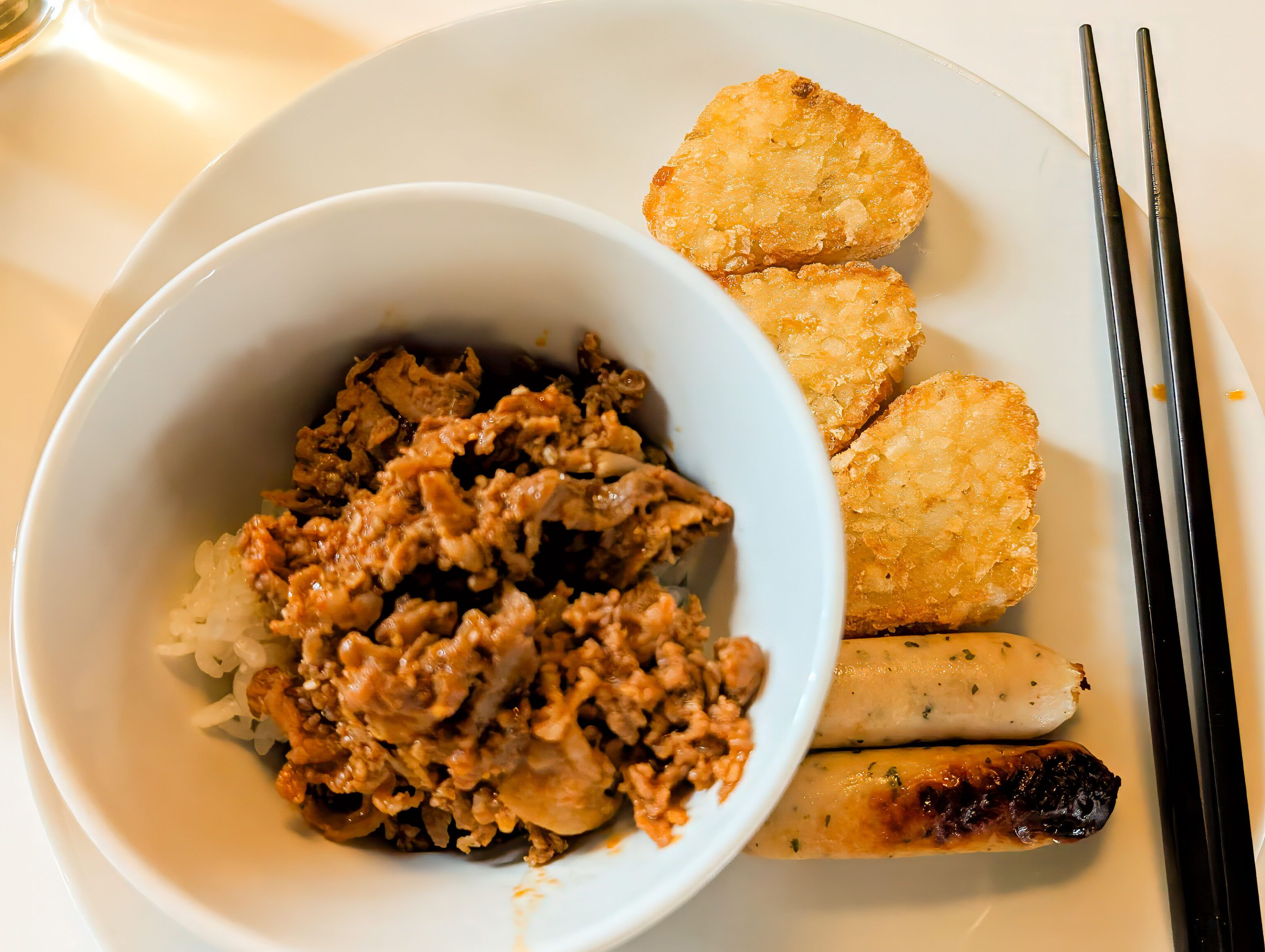
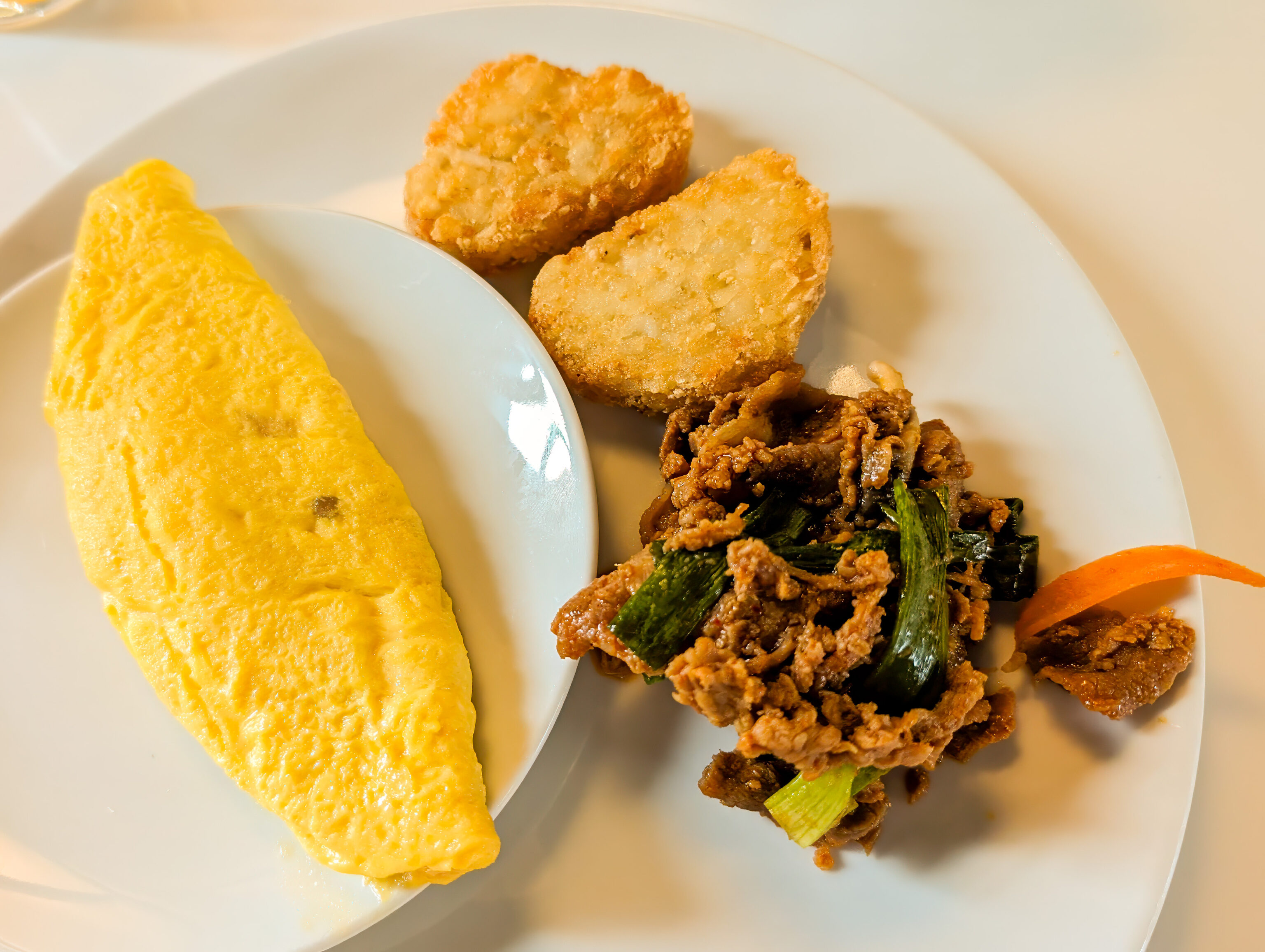
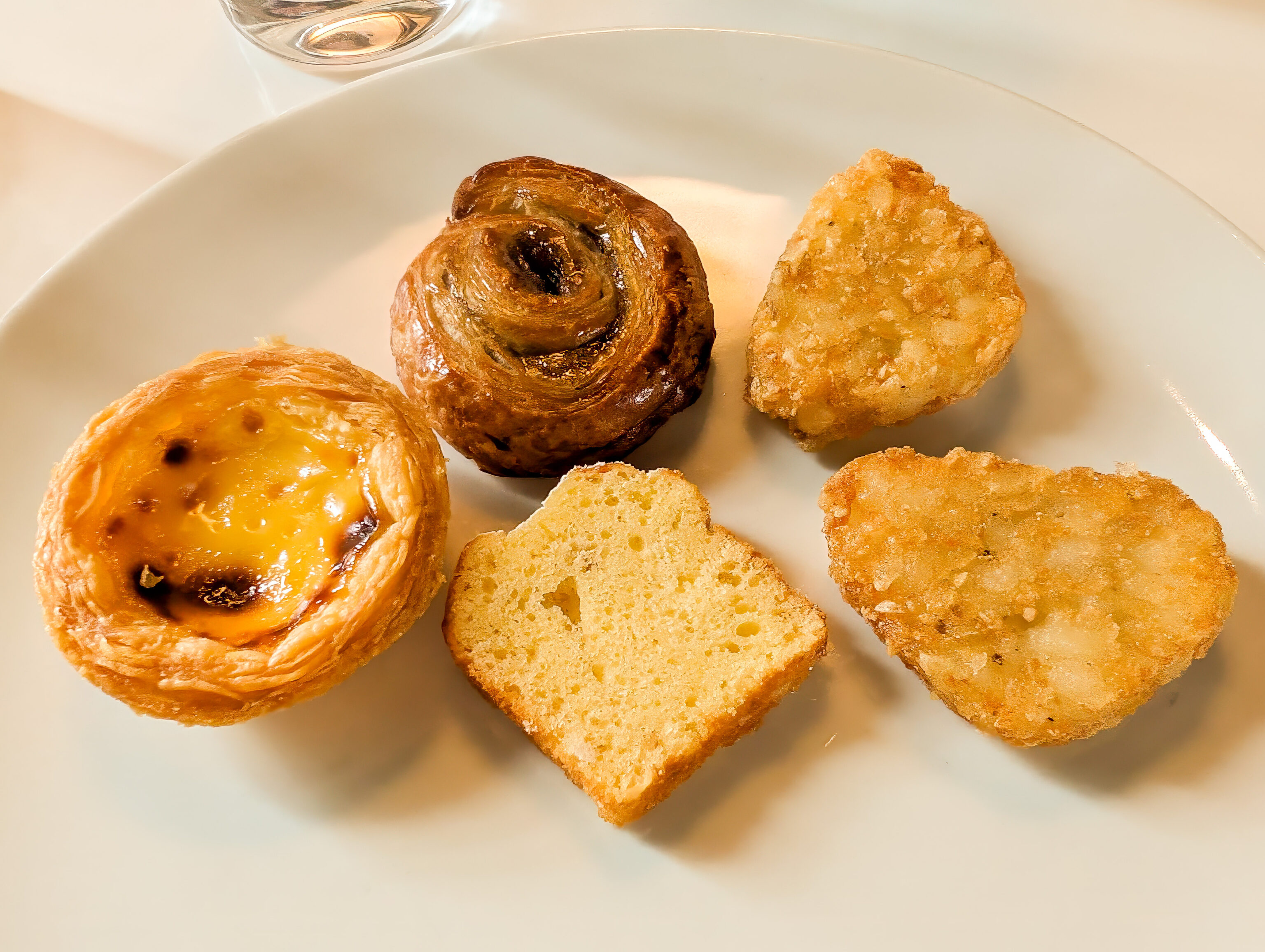
After waking up at the RYSE, we went downstairs for the breakfast buffet. Generally, the items are the same each day but there are some minor changes. For example, sometimes there is spicy bulgogi, sometimes it isn’t spicy.
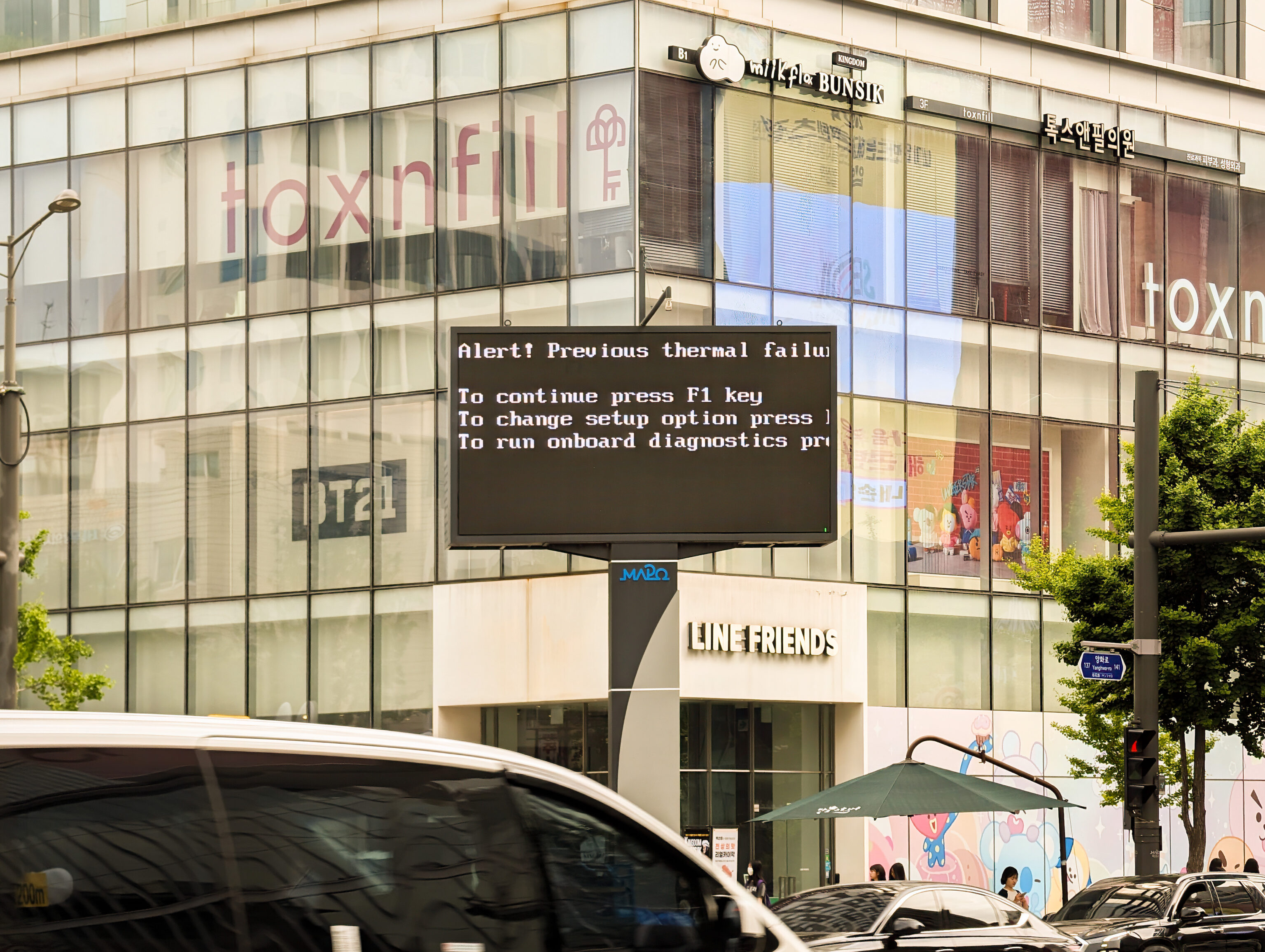
We then headed out to take the subway. On the way to the station, we noticed one of the signs outside. Technical issues!
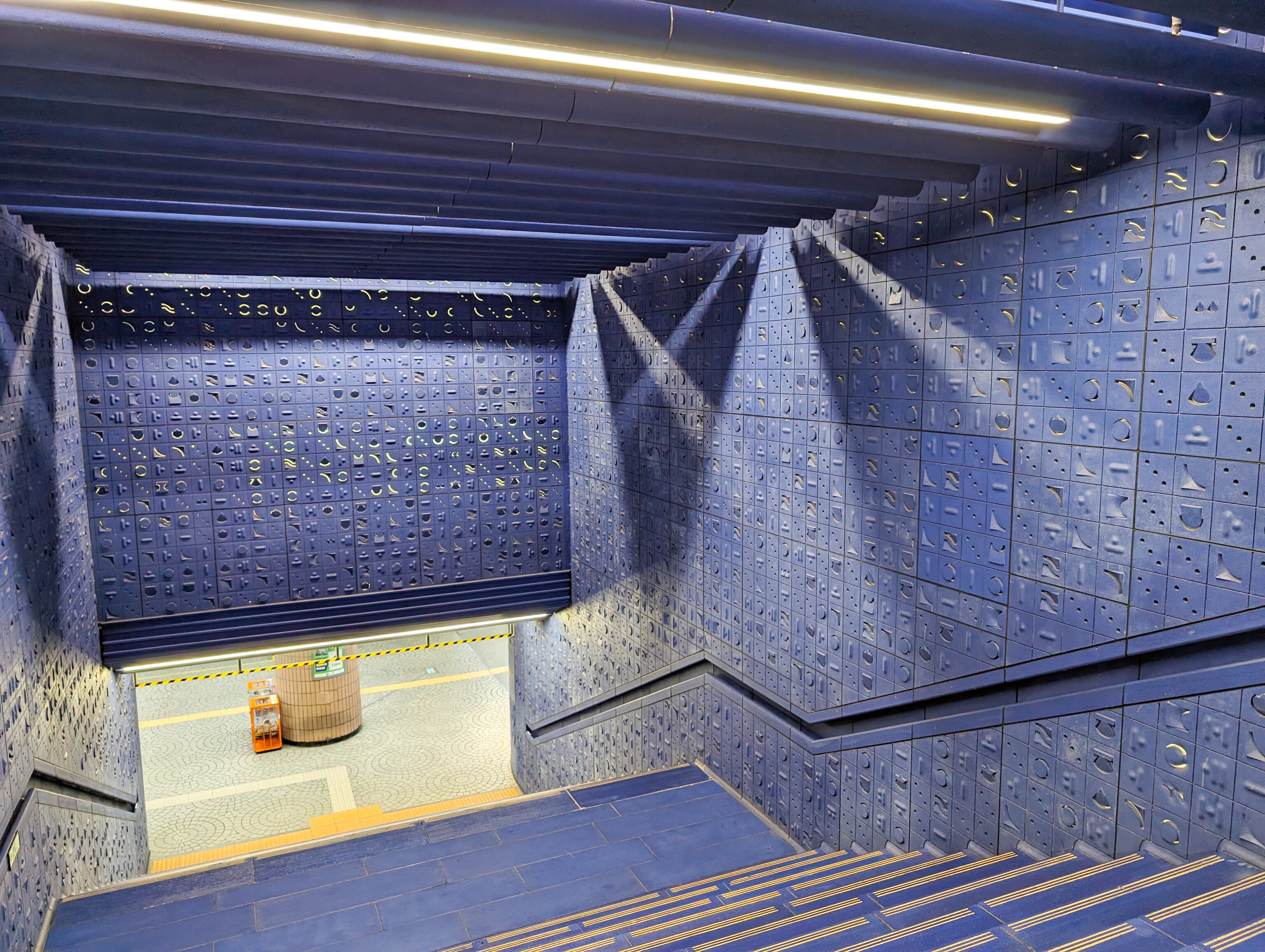
We took Line 2 east to 을지로3가역 Euljiro 3-ga where we switched to Line 3 and headed north two stops to 안국 Anguk. We walked up this colorful blue stairway.
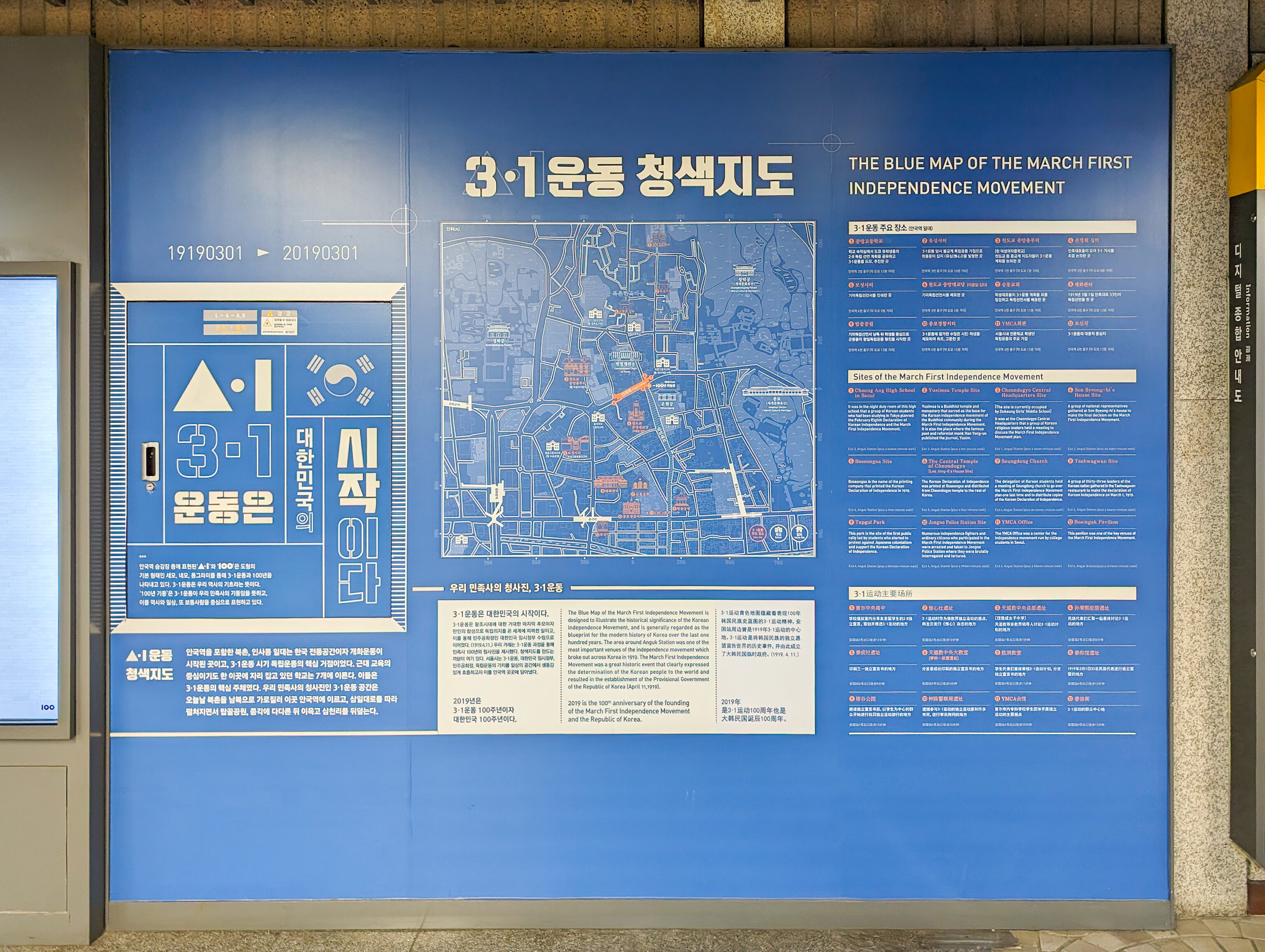
This display shows nearby locations important to the Korean March First Independence Movement.
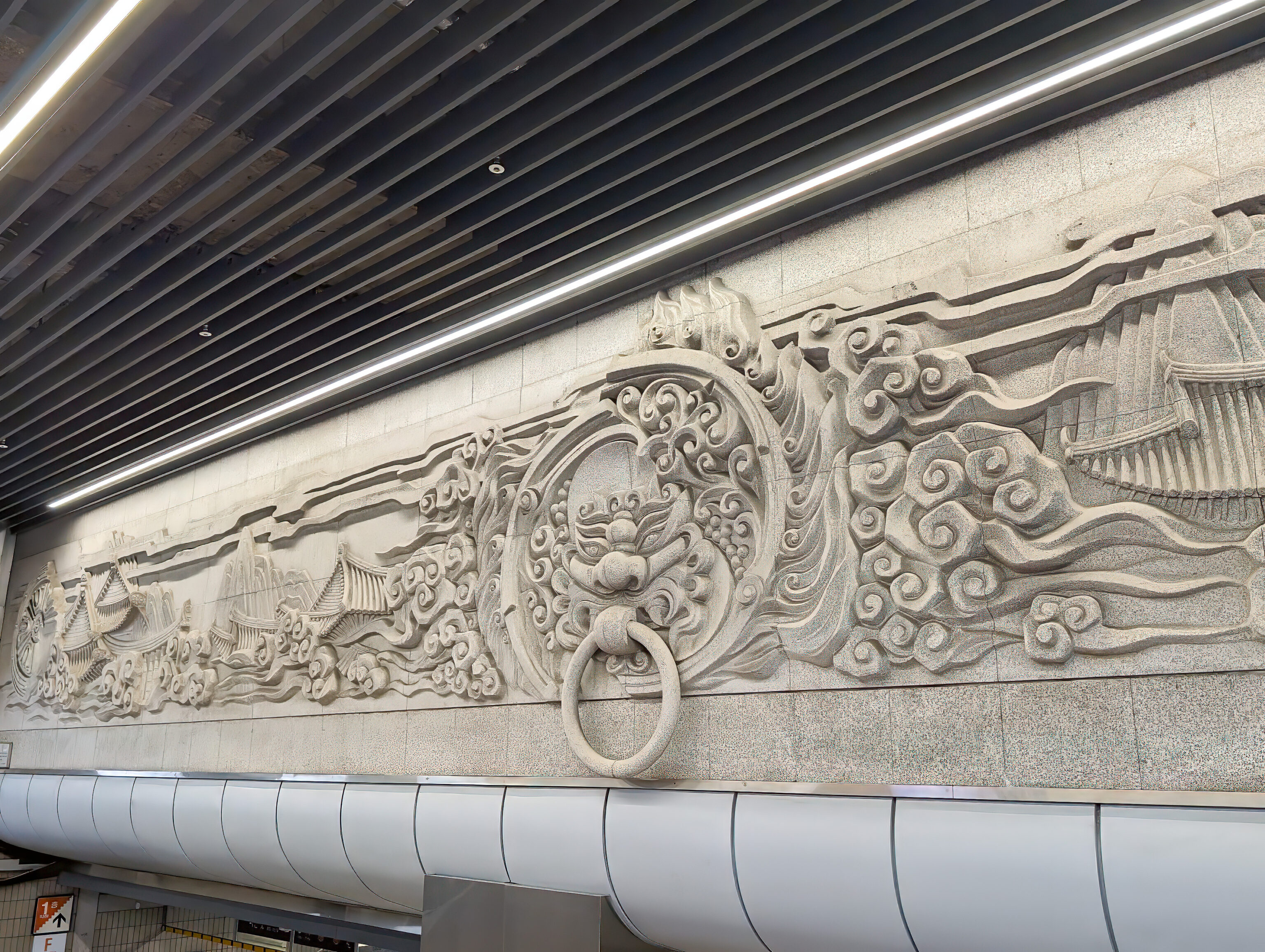
The station also has an impressive stone mural.
Changdeokgung
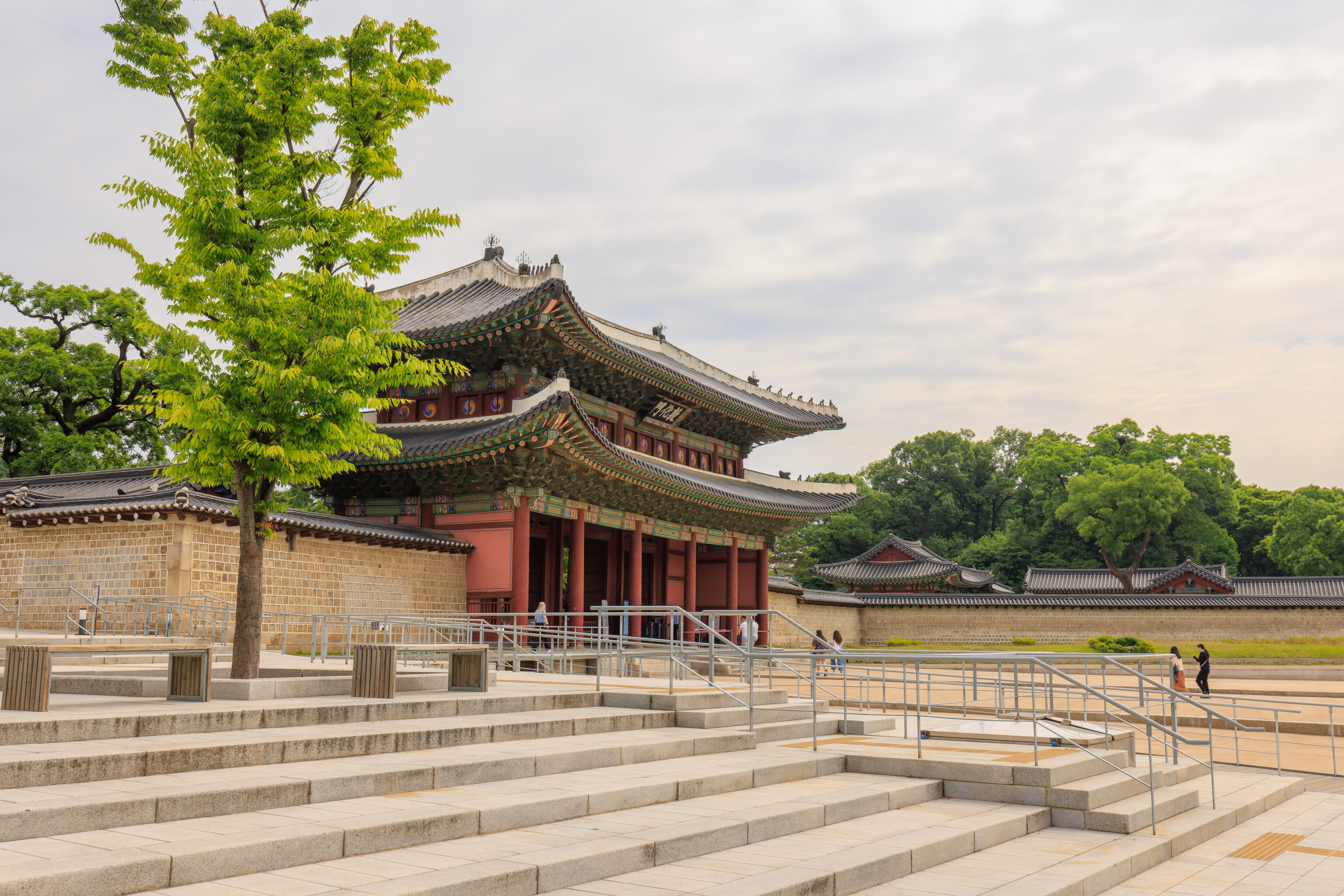
After exiting Anguk Station, we walked to the east to reach the entrance to 창덕궁 Changdeokgung, one of Seoul’s palaces.
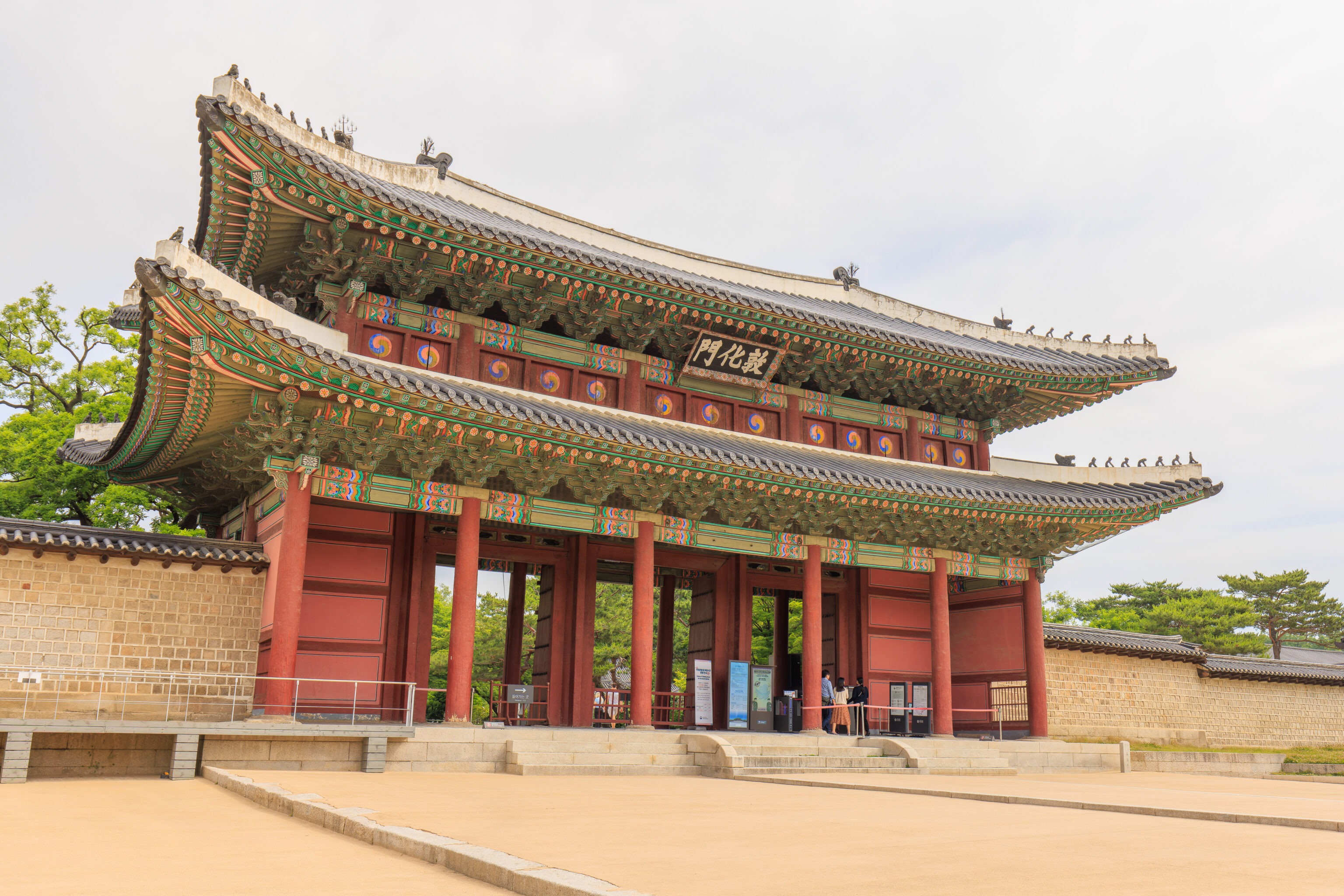
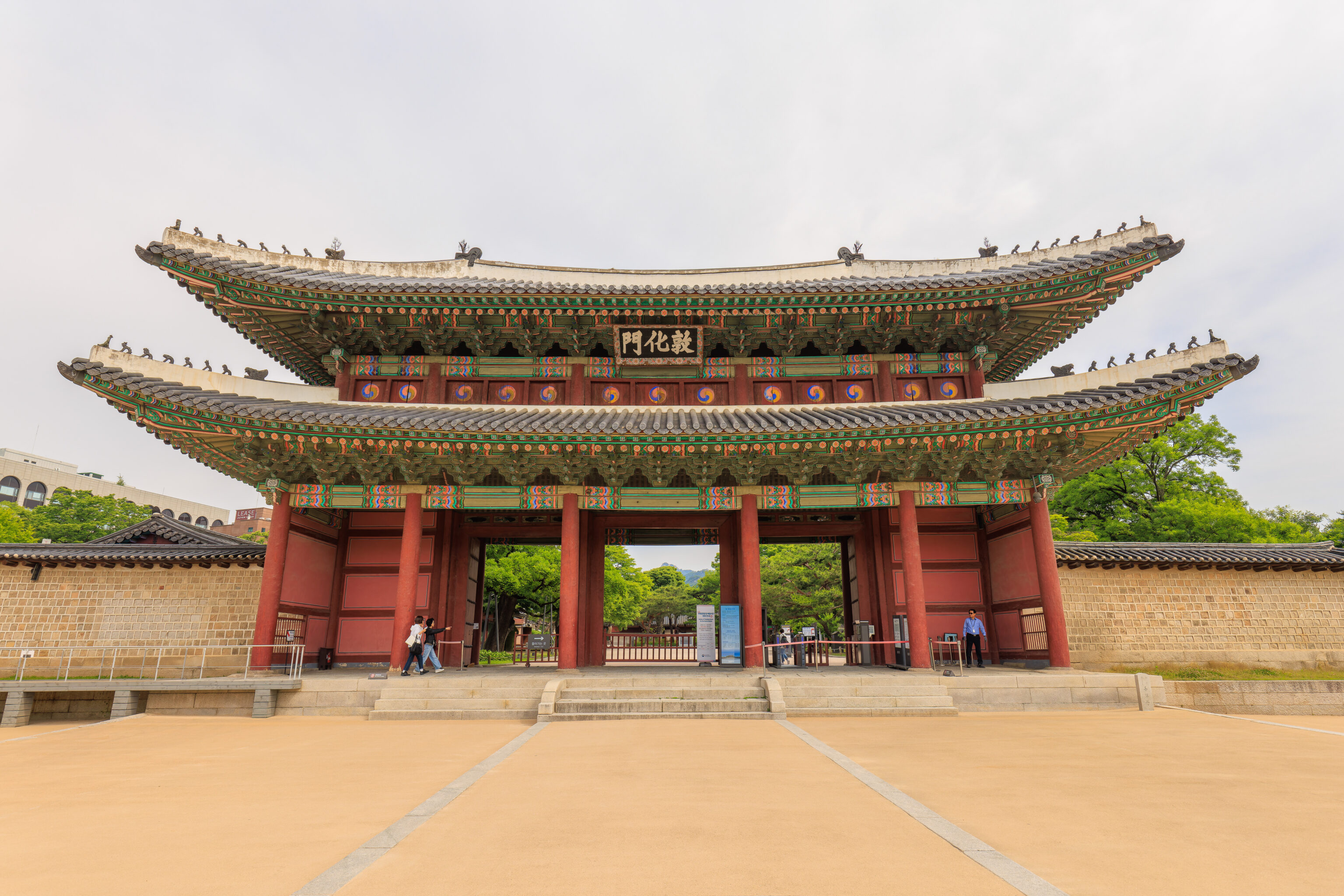
This large gate, the 돈화문 Donhwamun, is at the southwest corner of the palace. A sign describes this gate:
The main entrance to Changdeokgung Palace, Donhwamun Gate was used on ceremonial occasions, such as when the king went on procession. Court officials used Geumhomun Gate on the western side. Because Jongmyo Shrine had already been built directly in front of the palace, Donhwamun was situated in the southwesternmost part of Changdeokgung. The central part of the palace, the Injeongjeon Hall area, lies to the east and is reached by crossing Geumcheongyo Bridge after entering through the main gate. Restored in 1609, Donhwamun is a two-story wooden gate. The first level provides passage, and the upper level was used for surveillance. In front of the gate is a wide stone platform. The government office district originally extended from here all the way to Jongno street.
The sign also had a QR code which links to an audio guide.
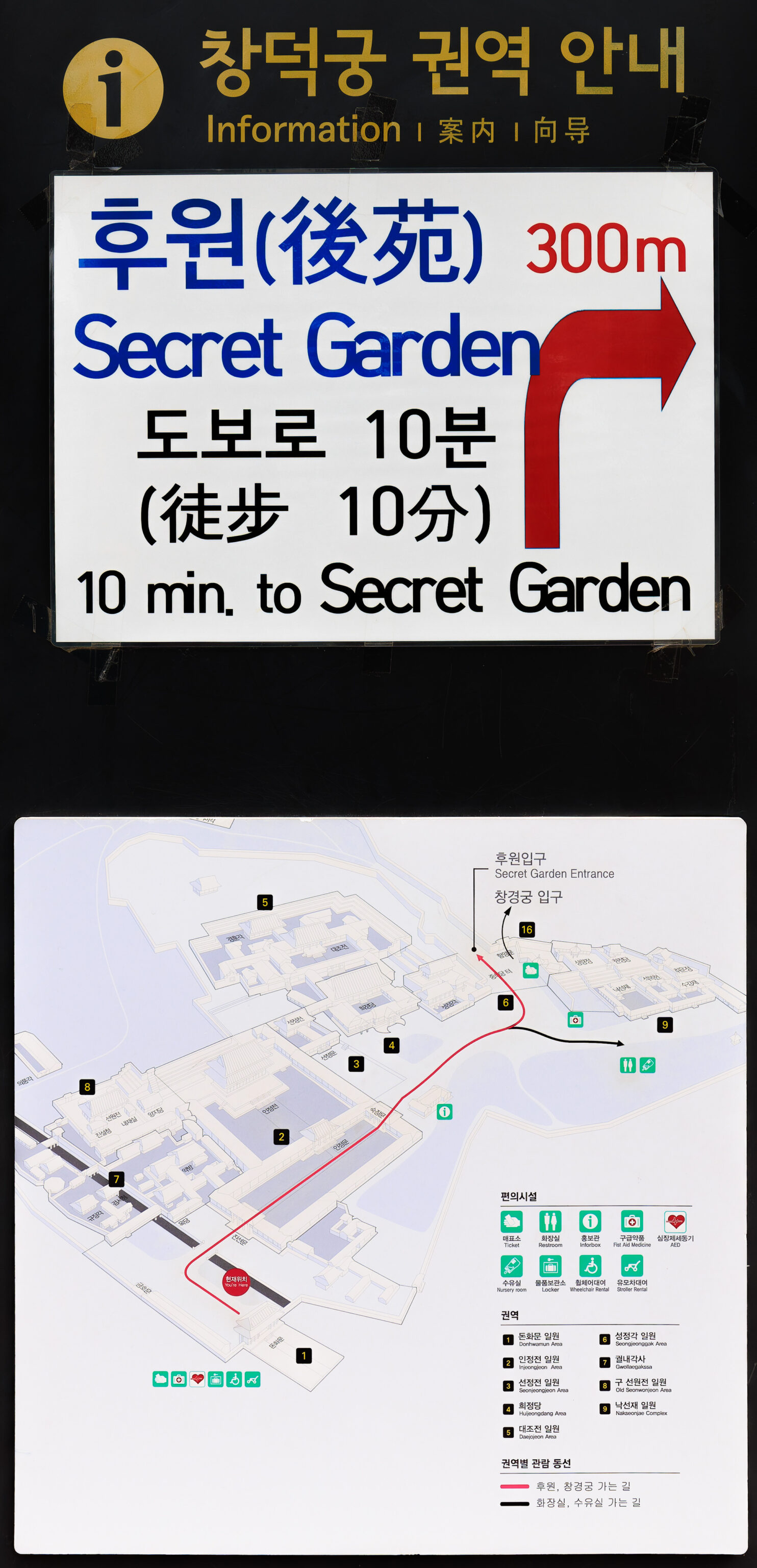
The 후원 Secret Garden at Changdeokgung is only accessible by guided tour. Tickets can be purchased 6 days in advance online. Tours are available in Korean, English, Chinese, and Japanese. We booked tickets for 10:30am today, the first available tour in English. We arrived at this sign, just beyond the gate, just after 9:30am. We gave ourselves plenty of time just in case, though we did arrive earlier than planned.
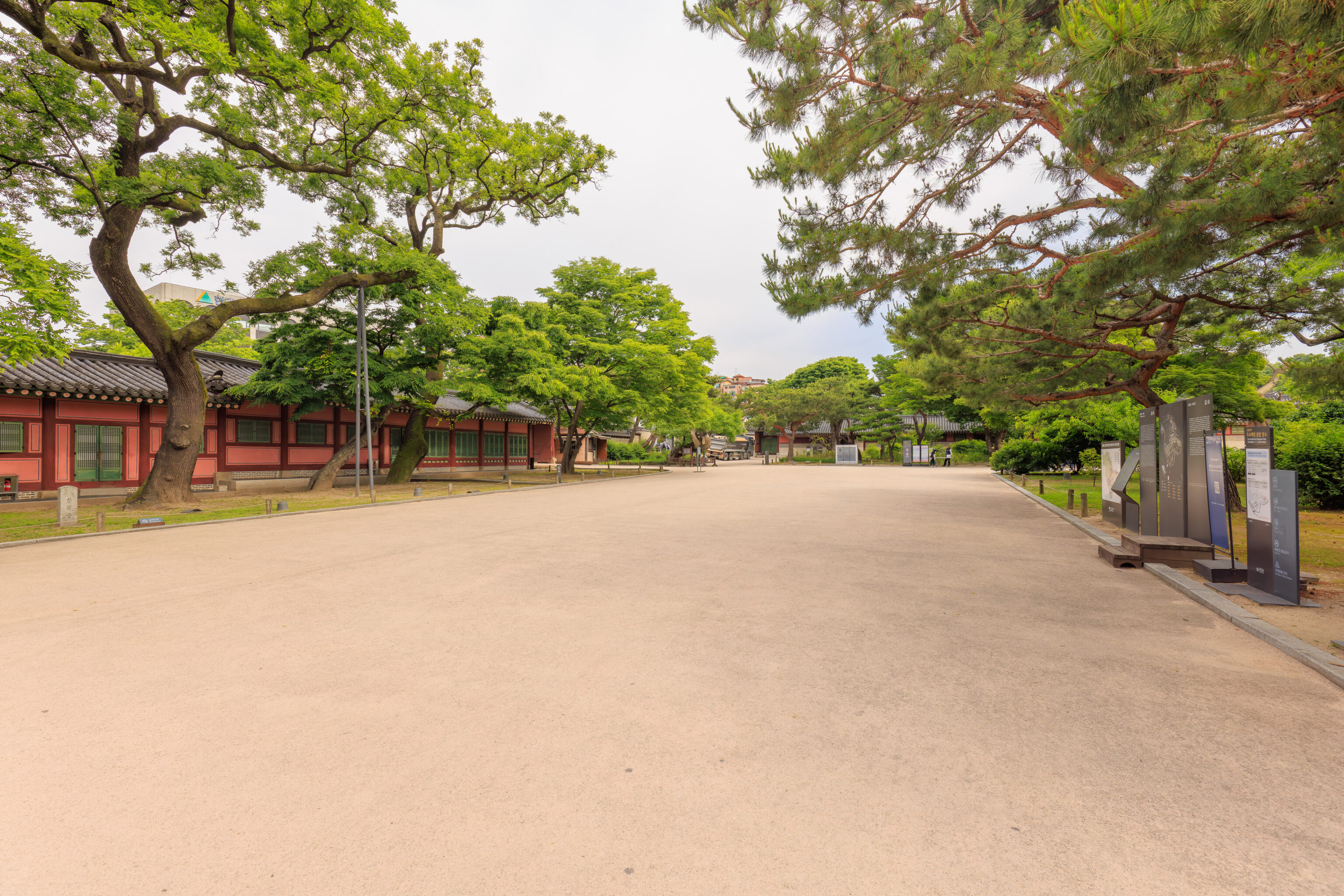
The rest of the palace requires a separate ticket. This ticket can be purchased online or upon arrival. We purchased ours online, it is available by selecting [Palace building area only] on the ticket website. There does seem to be a cap on the number of tickets sold, though it isn’t clear if that is a true hard cap or only applies to the online ordering system.
One of the signs on the right provides an overview of the palace:
Changdeokgung Palace was constructed in 1405, the fifth year of the 3rd King Taejong's reign. Secondary to Gyeongbokgung, the main palace, its completion gave balance to the capital city as Gyeongbokgung Palace was to the west and Changdeokgung Palace to the east. All of the palace buildings were destroyed by fire during the Japanese invasion of 1592. Changdeokgung was restored in 1610 and served as the main palace for 270 years including the dynasty's last king, Sunjong. Since the palace was to the east of Gyeongbokgung, it was referred to as the "East Palace" together with Changgyeonggung Palace. In contrast to Gyeongbokgung, where major buildings are arranged in accordance with the main axis of the meridian, Changdeokgung is laid out in harmony with the area's topography; the palace architecture has a dissymmetric beauty that is unique to Korea. The layout of Changdeokgung is making perfect harmony with natural background by locating buildings alongside of mountain. It influenced the layout of other major palaces. The buildings of Changdeokgung Palace including Daejojeon, the queen's residence, were destroyed in 1917 by fire. To replace them, buildings at Gyeongbokgung Palace were dismantled and moved here. In the process, many structures were modified or damaged. Full restoration work began in 1991 and is still under way. Despite all of the damage done to the palace in years past, Changdeokgung is relatively well preserved and is representative of Korean palace architecture. The garden of Changdeokgung is one of the most enchanting spaces in Korea. The Changdeokgung Palace complex was inscribed on the UNESCO World Cultural Heritage List in 1997 for its outstanding architecture and a design that is in harmony with the landscape.
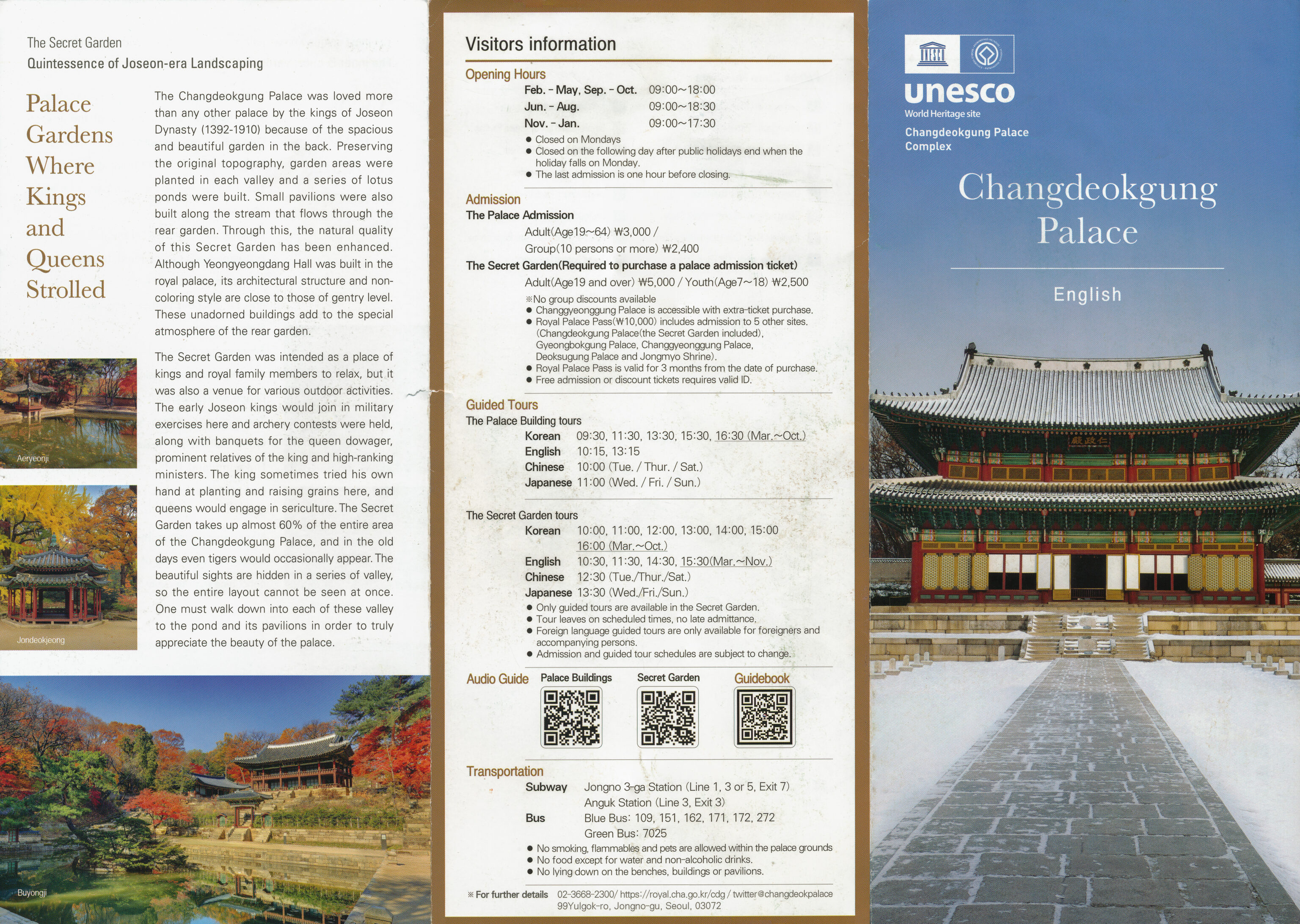
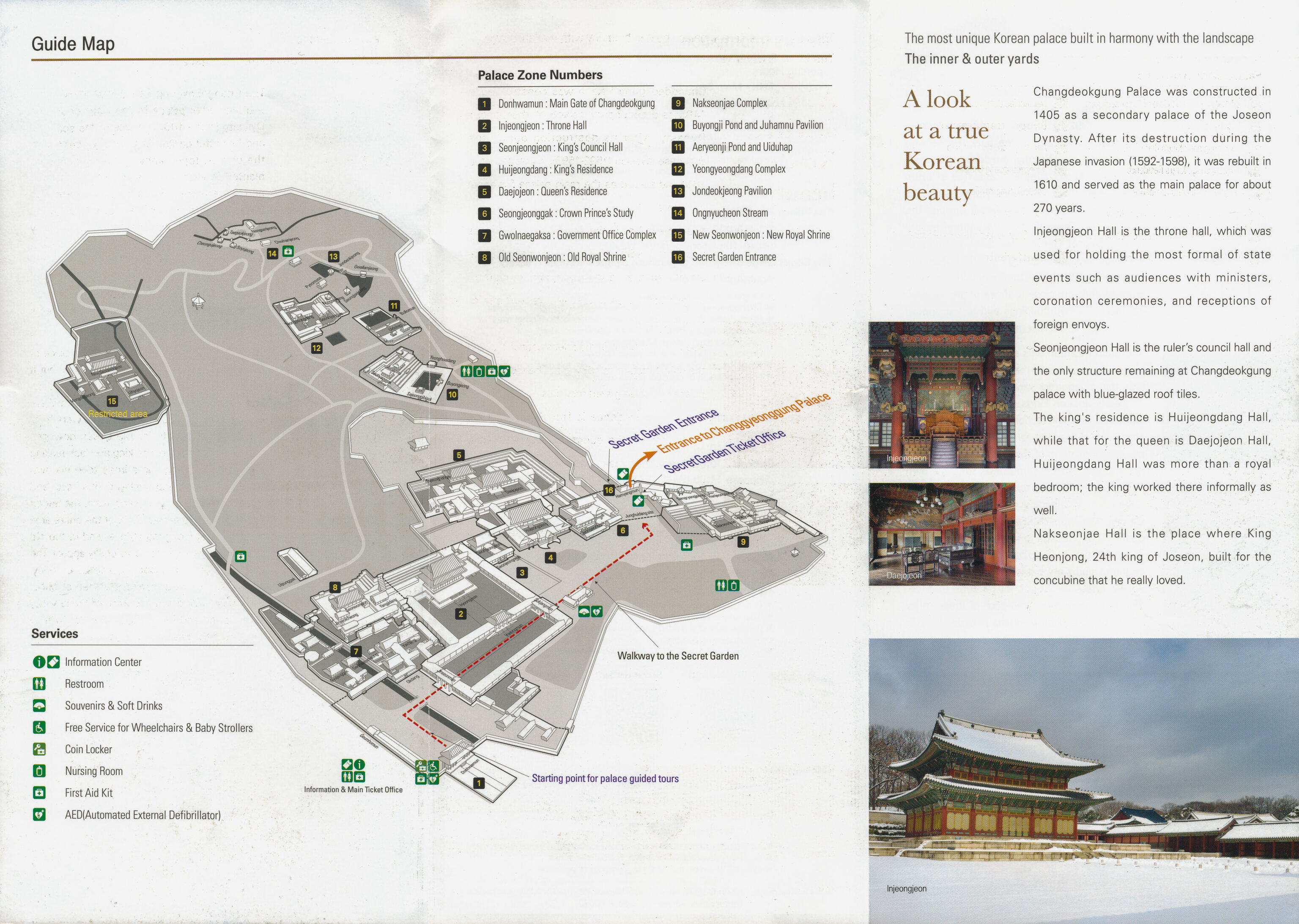
We picked up a map as we entered.
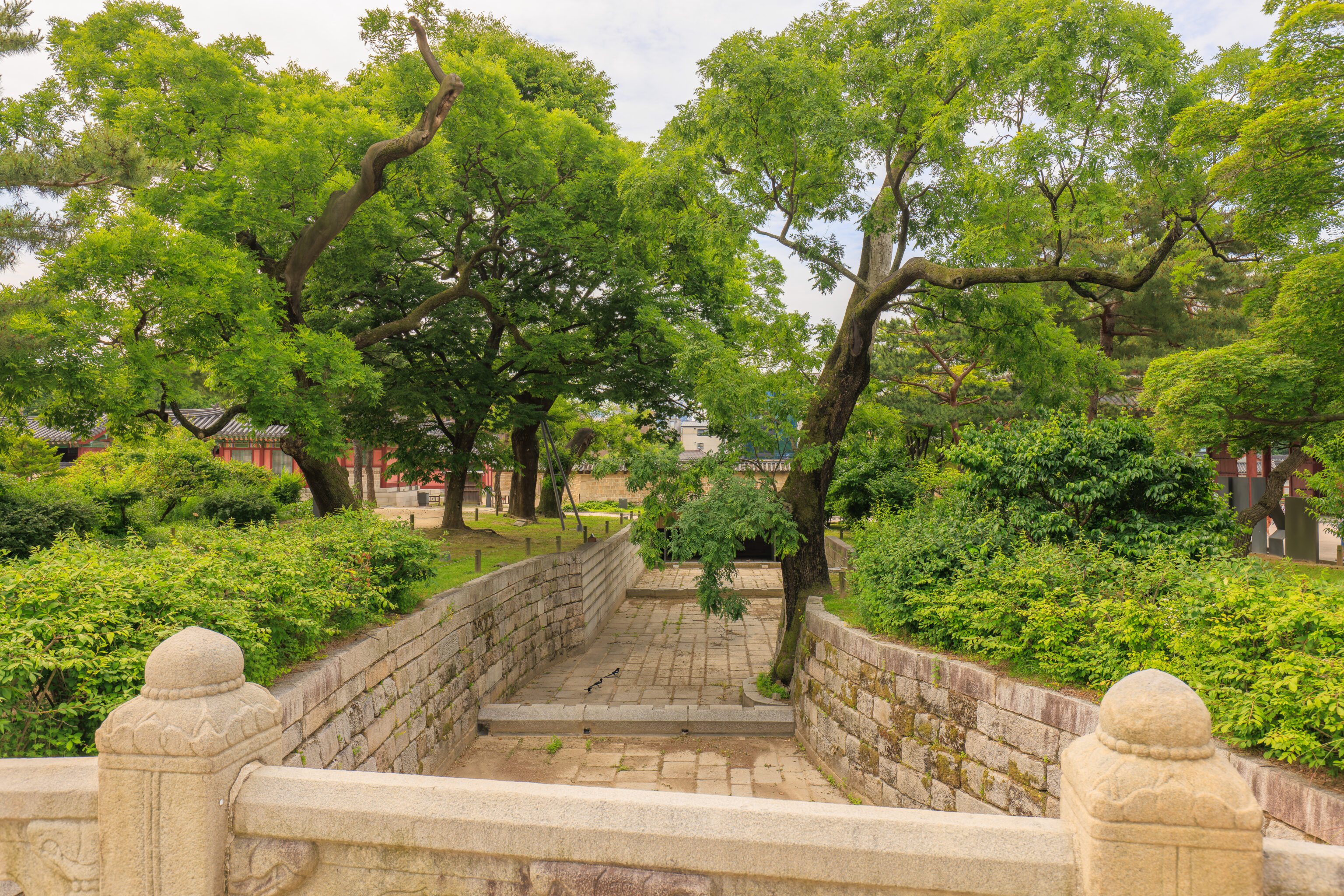
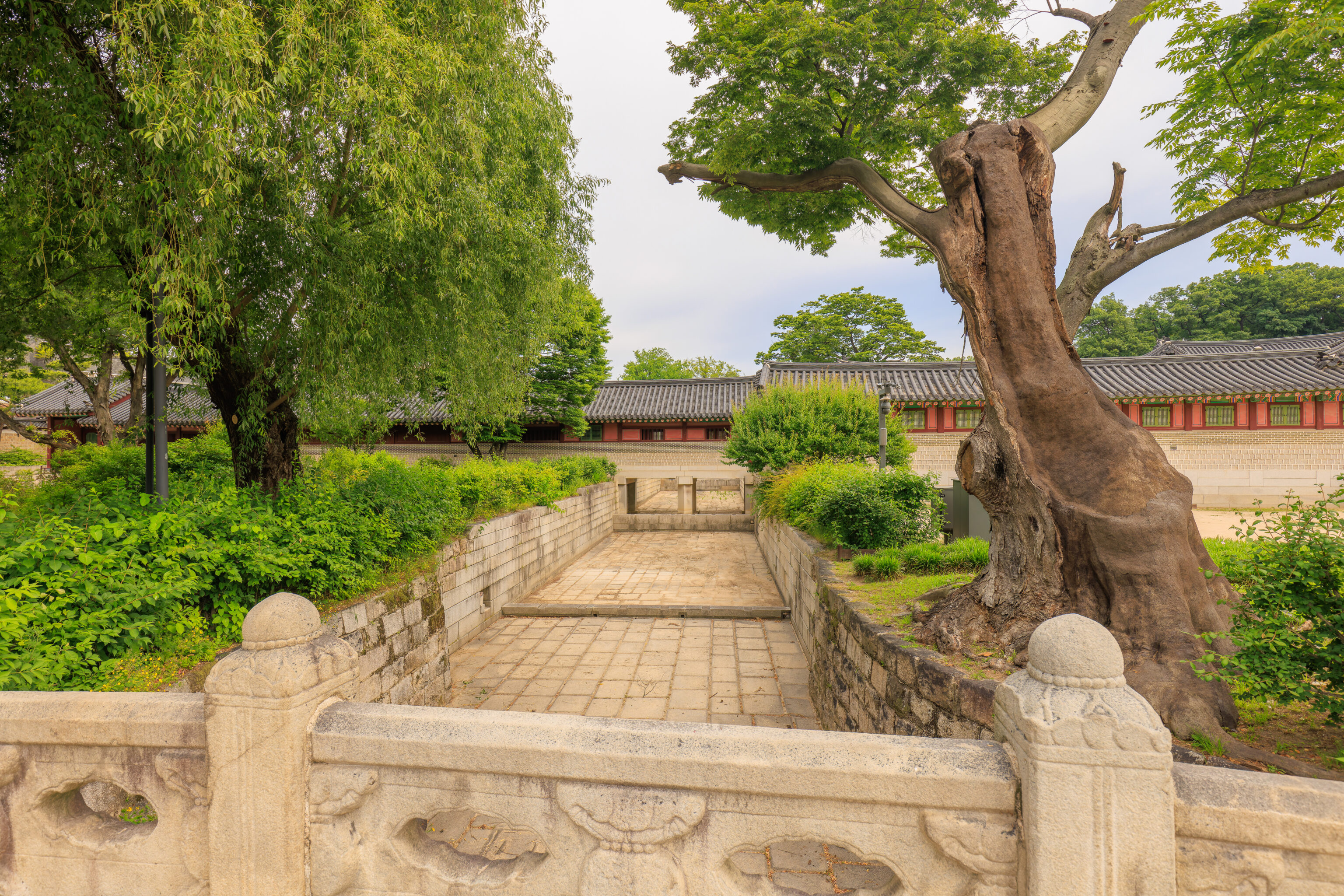
There is a channel of water which runs through this area behind Donhwamun. It was dry, though we don’t know if it is always dry or sometimes holds water.
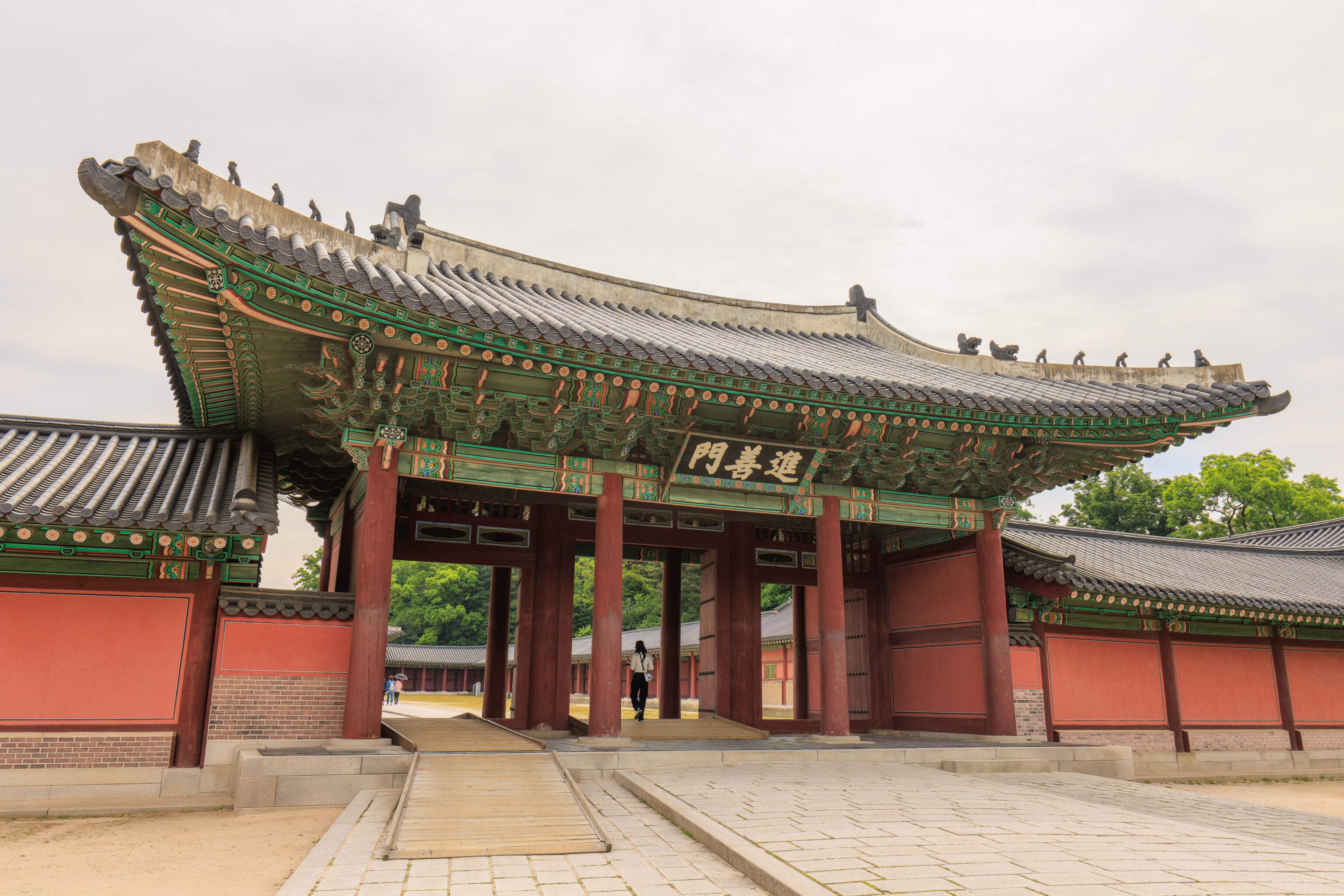
We walked through this smaller gate, the 진선문 Jinseonmun, on our way east to the Secret Garden.
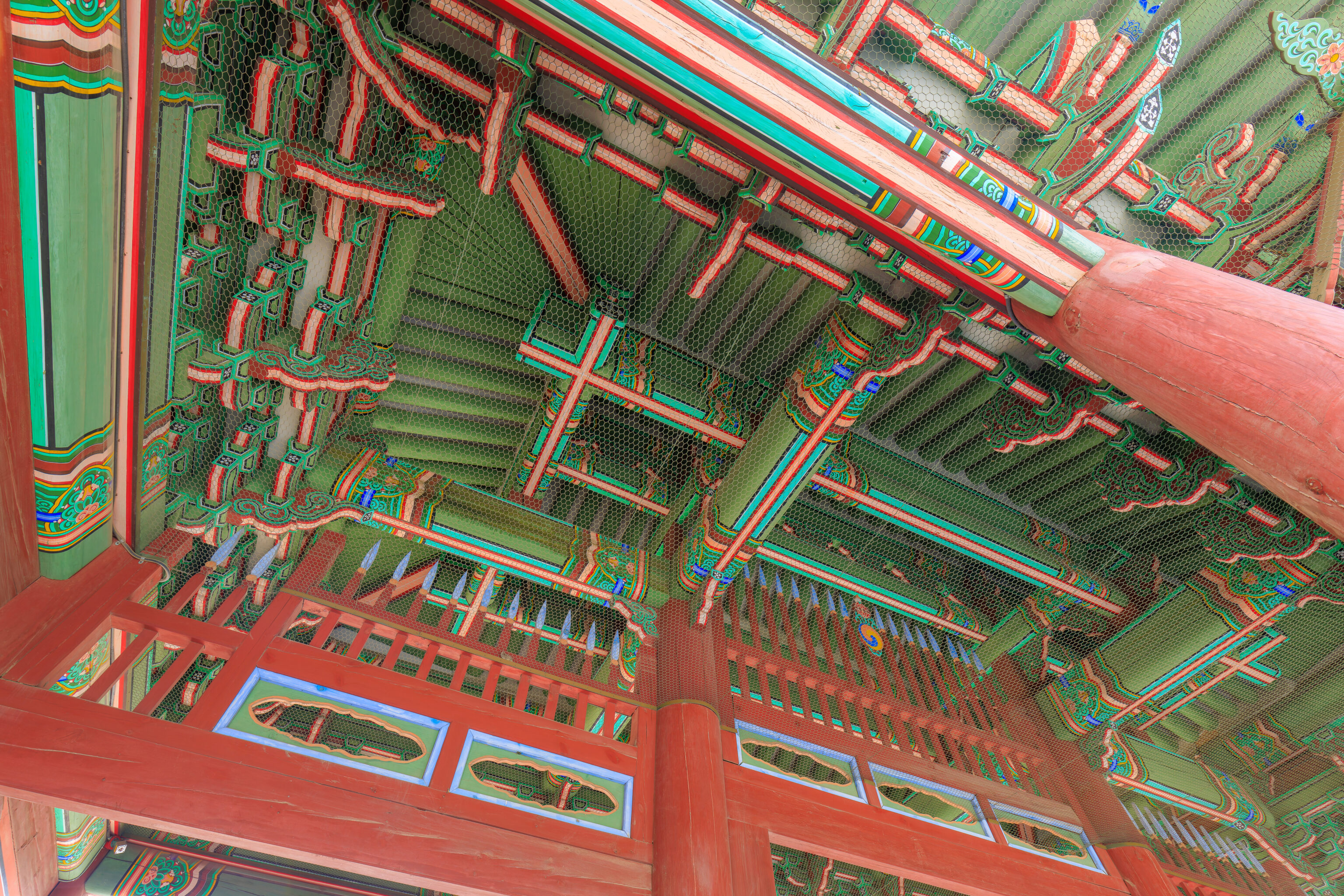
There is wire netting in the ceiling area, presumably to keep birds out.
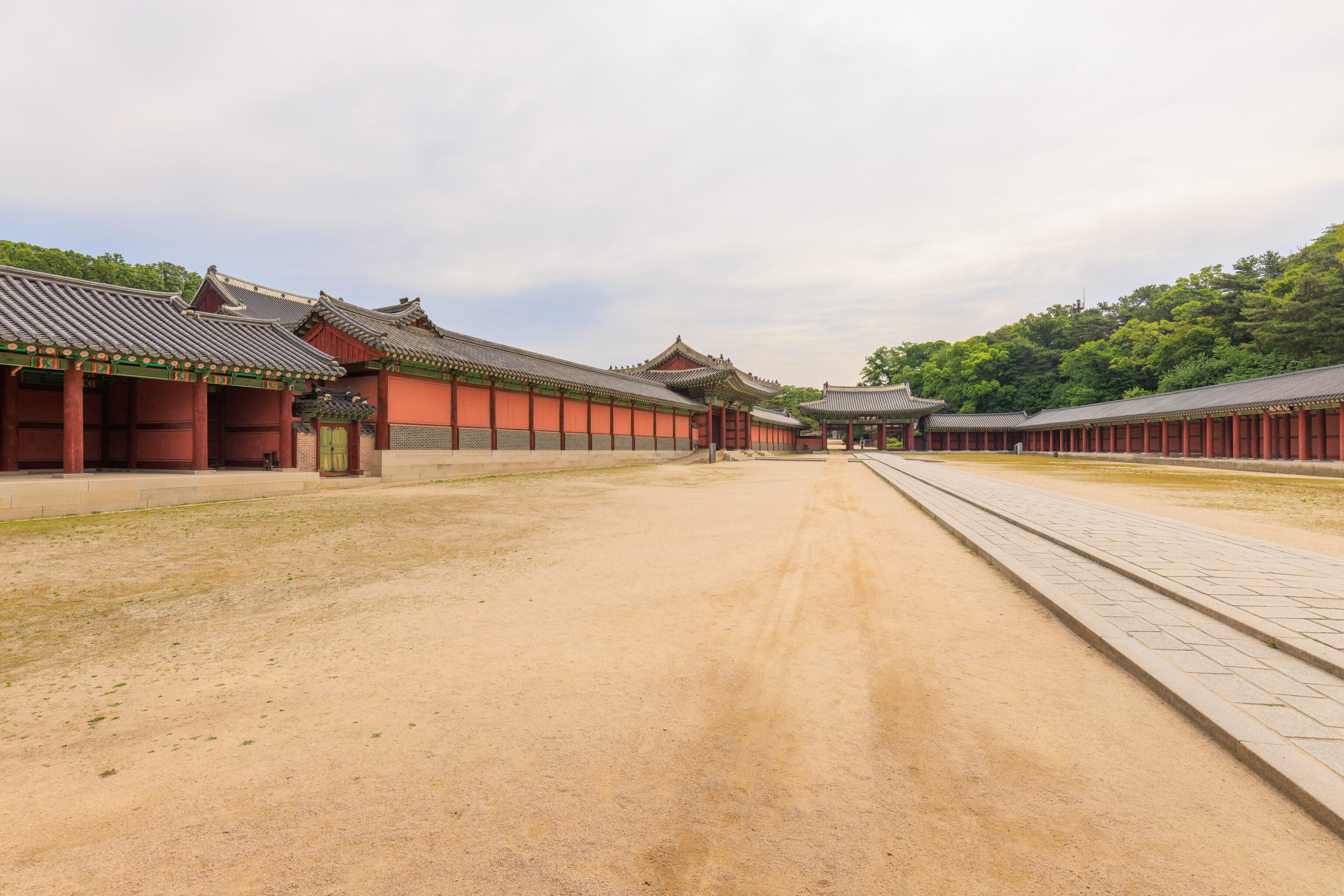
This gate leads to a long courtyard area. The entrance to the Secret Garden is to the east.
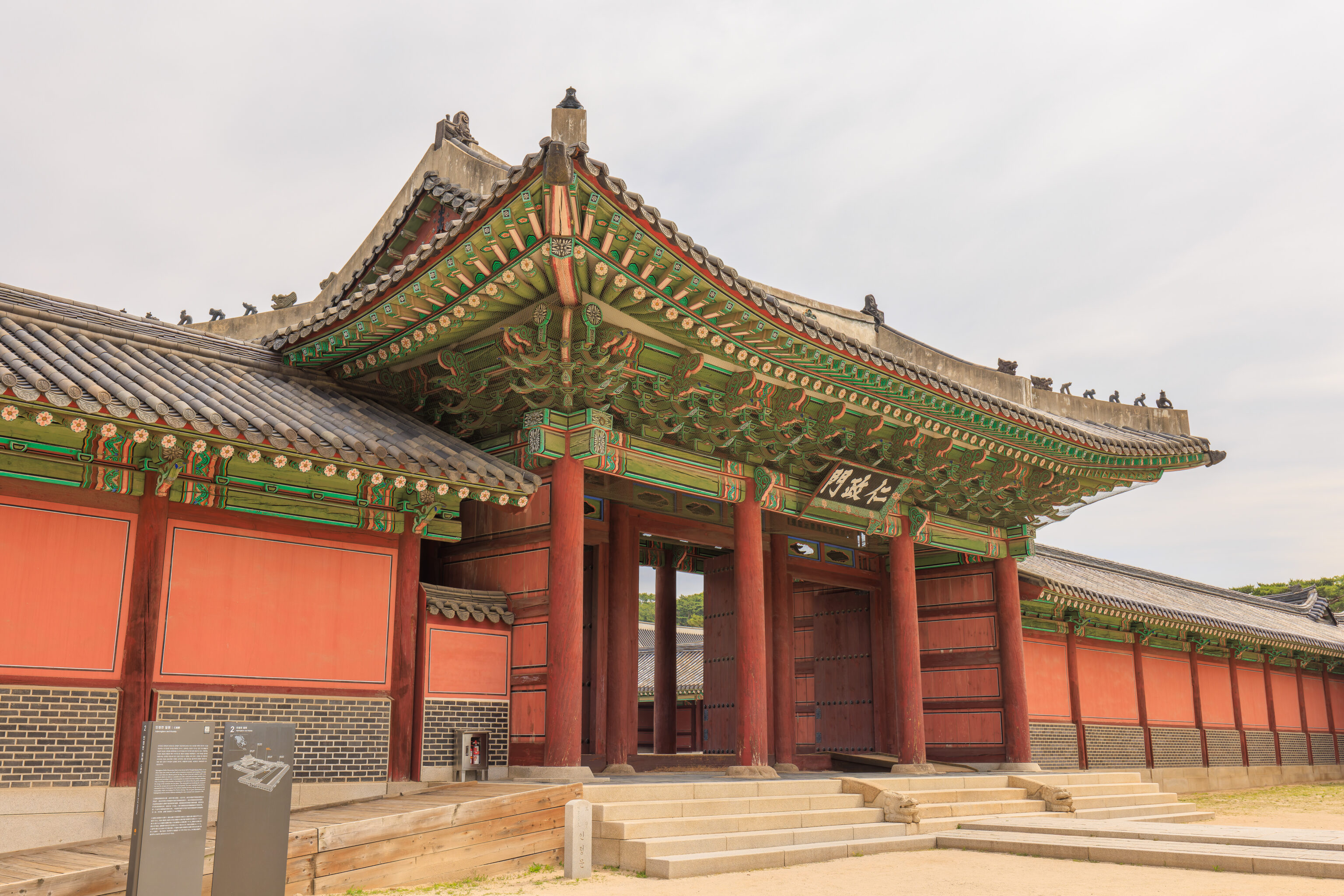
We were still quite early so decided to go through this gate, the 인정문 Injeongmun, to the north. The sign on the left describes this gate and area around the gate:
Injeongjeon (Hall of Benevolent Rule) is the throne hall of Changdeokgung Palace. It was where major state events were held, such as coronation ceremonies and receptions of foreign envoys and where the officials greeted the king. In front of the hall, rebuilt in 1609, is the courtyard, which was taken as a symbolic area with a royal path and stone markers where officials stood according to rank. A terraced garden was created at the back, leading to Maebong Peak. According to the principles of geomancy, it was believed that the garden channeled the energy of the mountain into the palace. The colonnaded area bordering the courtyard was used for storage and as posts for the royal guards. The outer courtyard bordered by a colonnade in front of Injeongmun Gate achieves exquisite harmony with the uneven natural topography, which was designed by Park Ja-cheong. The two gates (Jinseonmun and Sukjangmun) and its covered walkways enclosing the outer courtyard were restored in 1996.
The outer courtyard mentioned at the end of the text is where we are now.
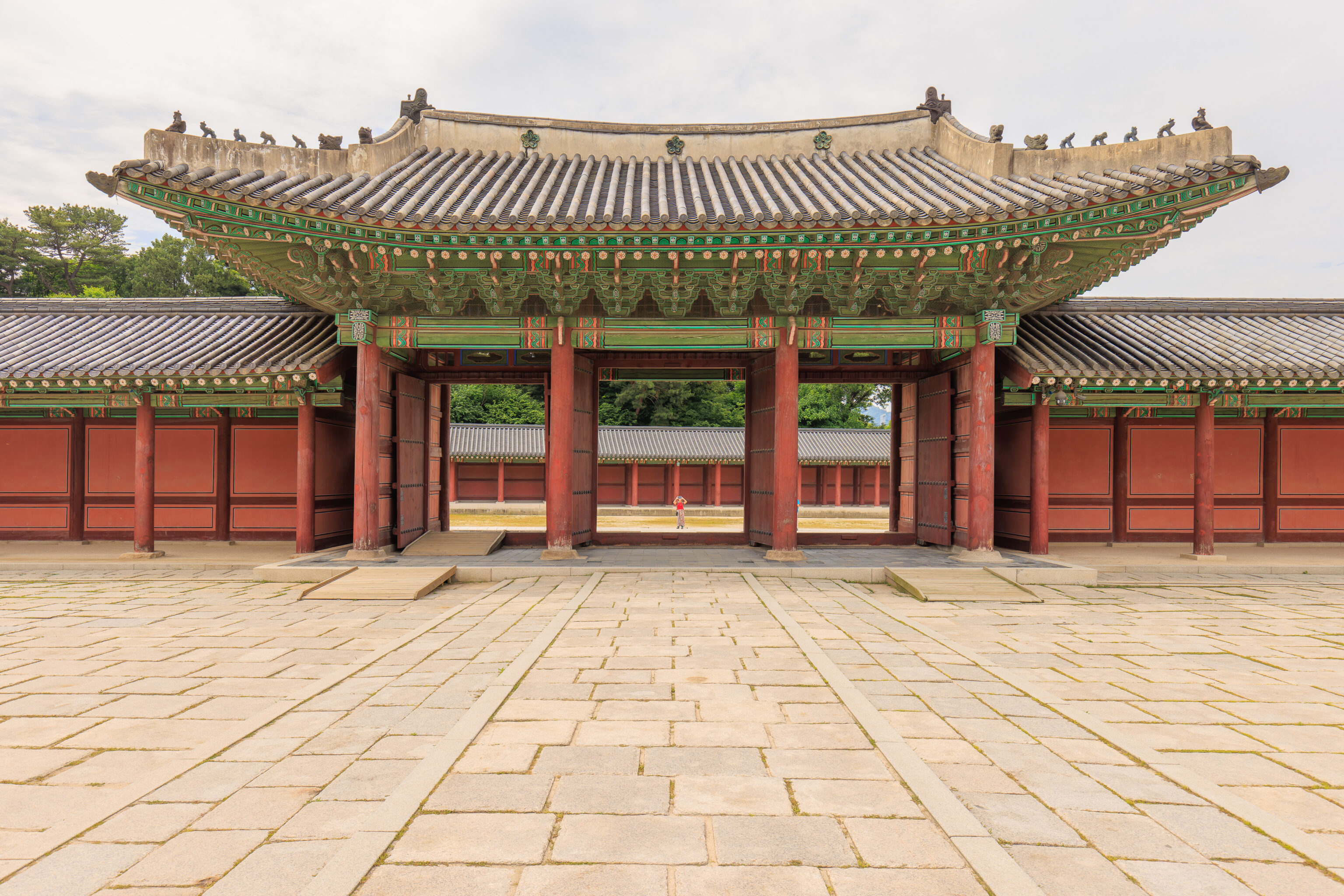
We still had plenty of time before our Secret Garden tour so decided to go through the Injeongmun. This is how the gate appears from the other side.
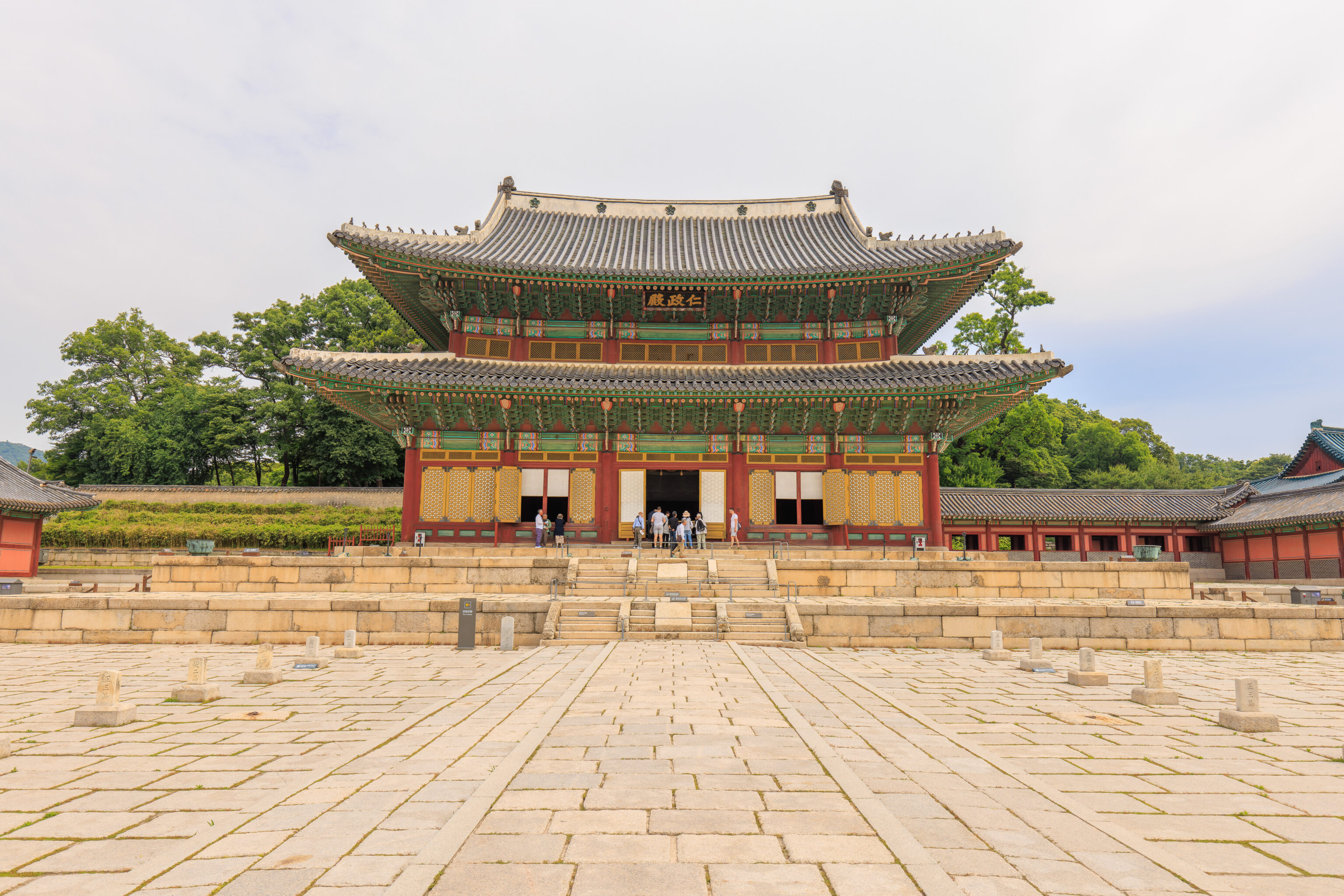
This large building in the courtyard beyond the gate is the 인정전 Injeongjeon, the palace’s throne hall.
Small sculpted figures are visible on the roofs of the building. These small figures can be seen on many palace buildings with this type of roof. These are 잡상 Japsang and serve a decorative and protective role for the building. Various sources provide differing details about these figures. The Korean Heritage Service FAQ indicates that there are 10 different figures that can be placed and that there is always an odd number. The Injeongjeon here has 9. The most we’ve seen is 11 atop the Gyeonghoeji, four days ago at Gyeongbokgung.
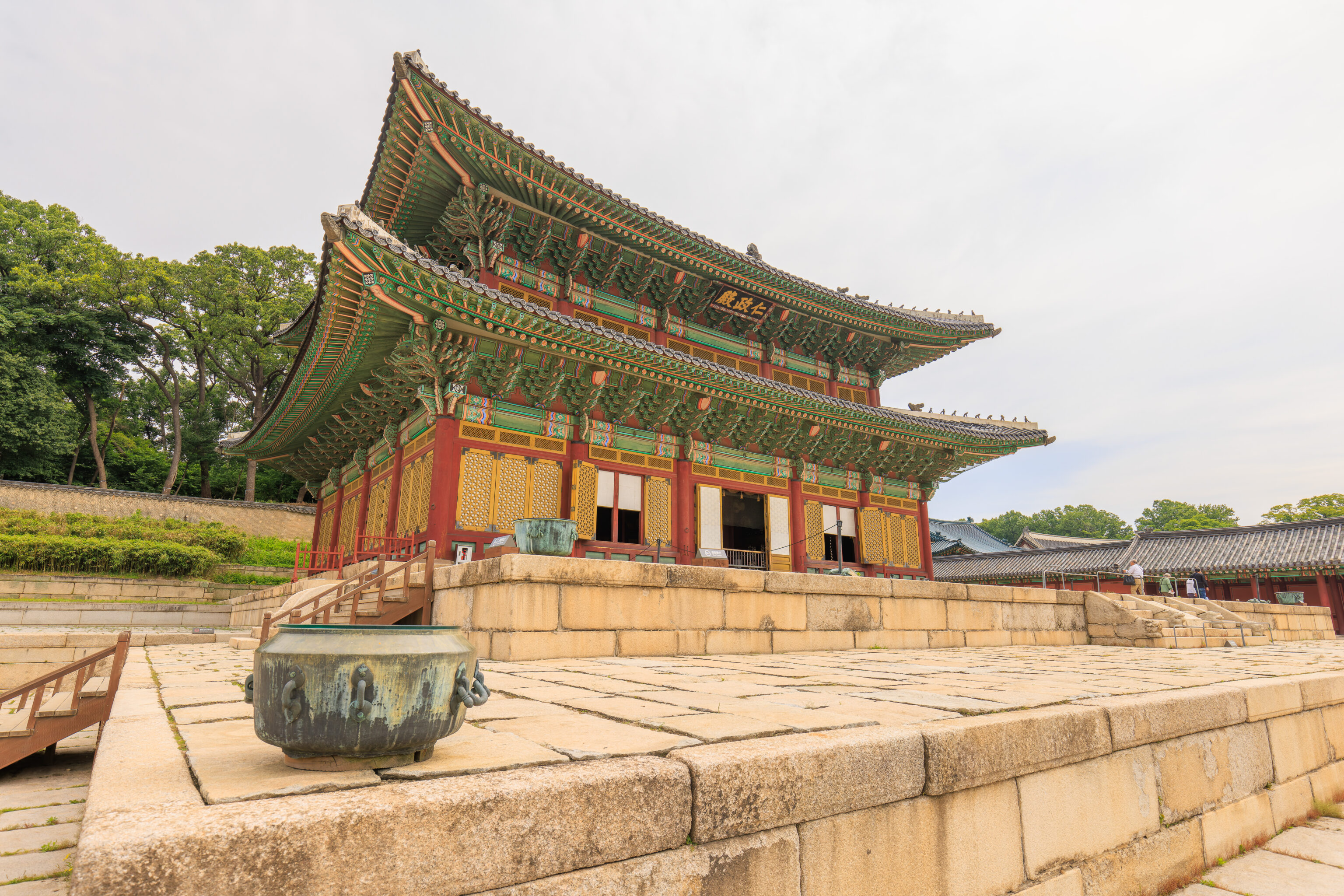
The stairs in the front are blocked off. So, we went around to our left as suggested by a sign with an arrow marked “Tour Course.”
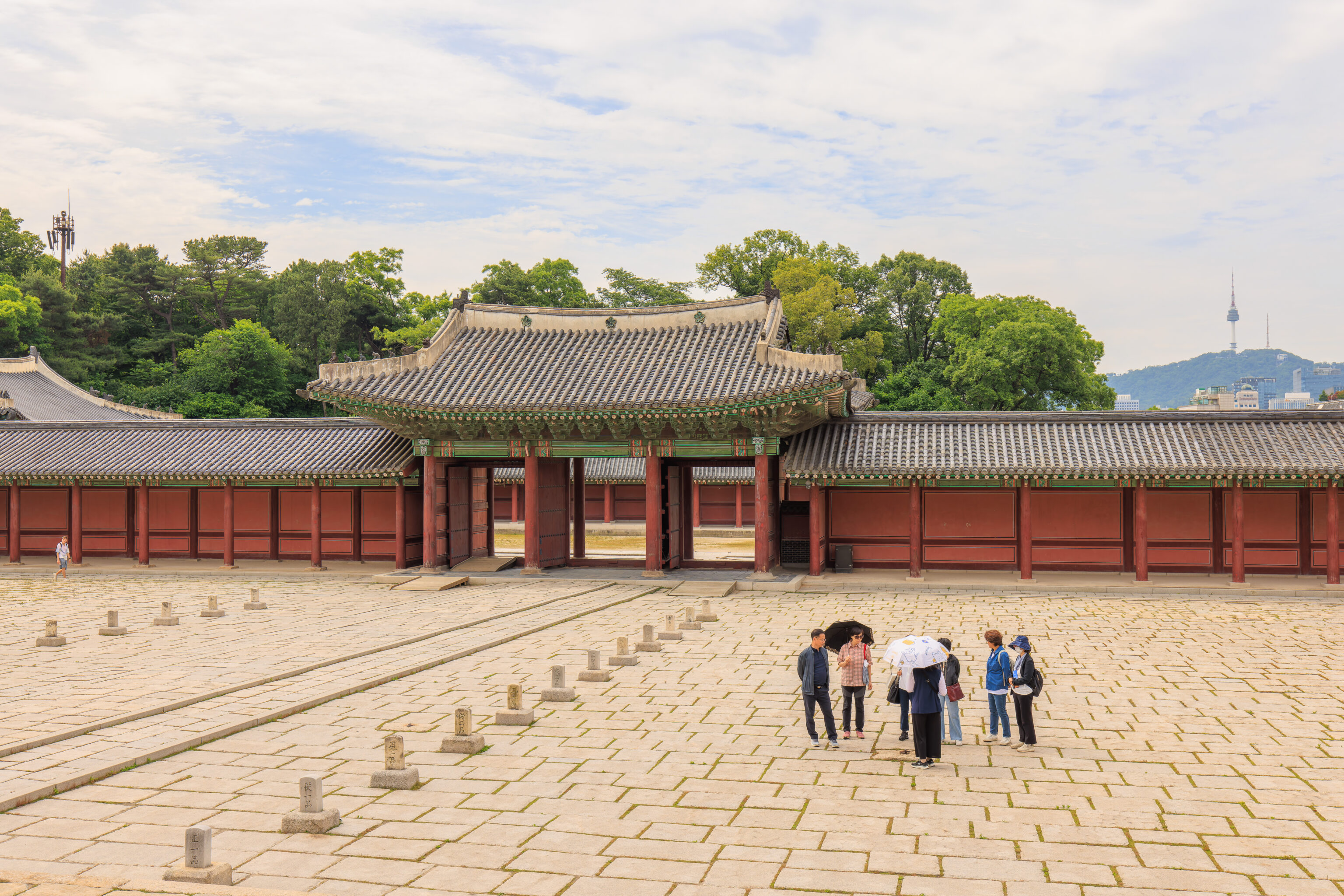
We had a more elevated view of the area from the Injeongjeon. We noticed that we could see the N Seoul Tower, which we visited two days ago, in the background while looking towards the Injeongmun.
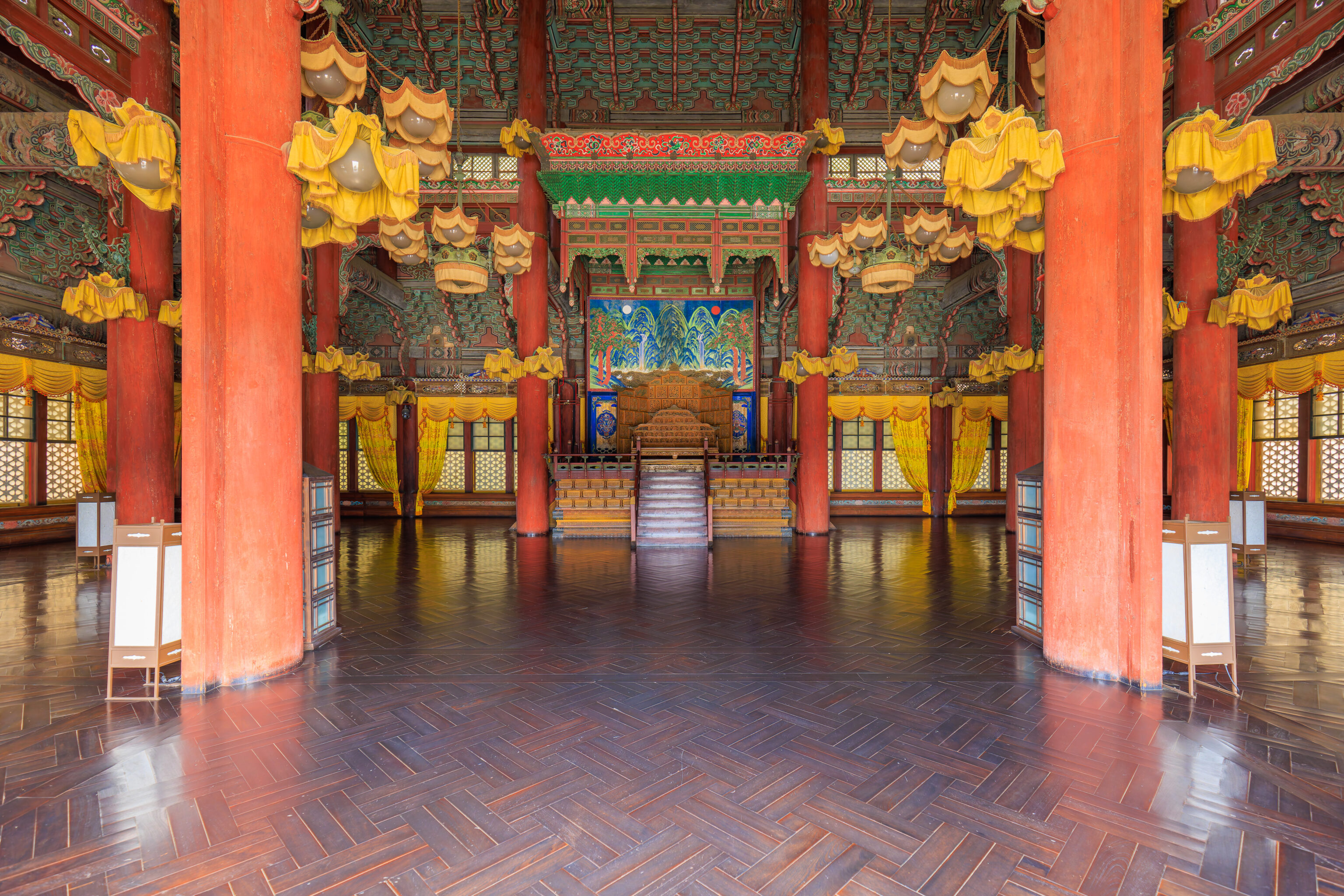
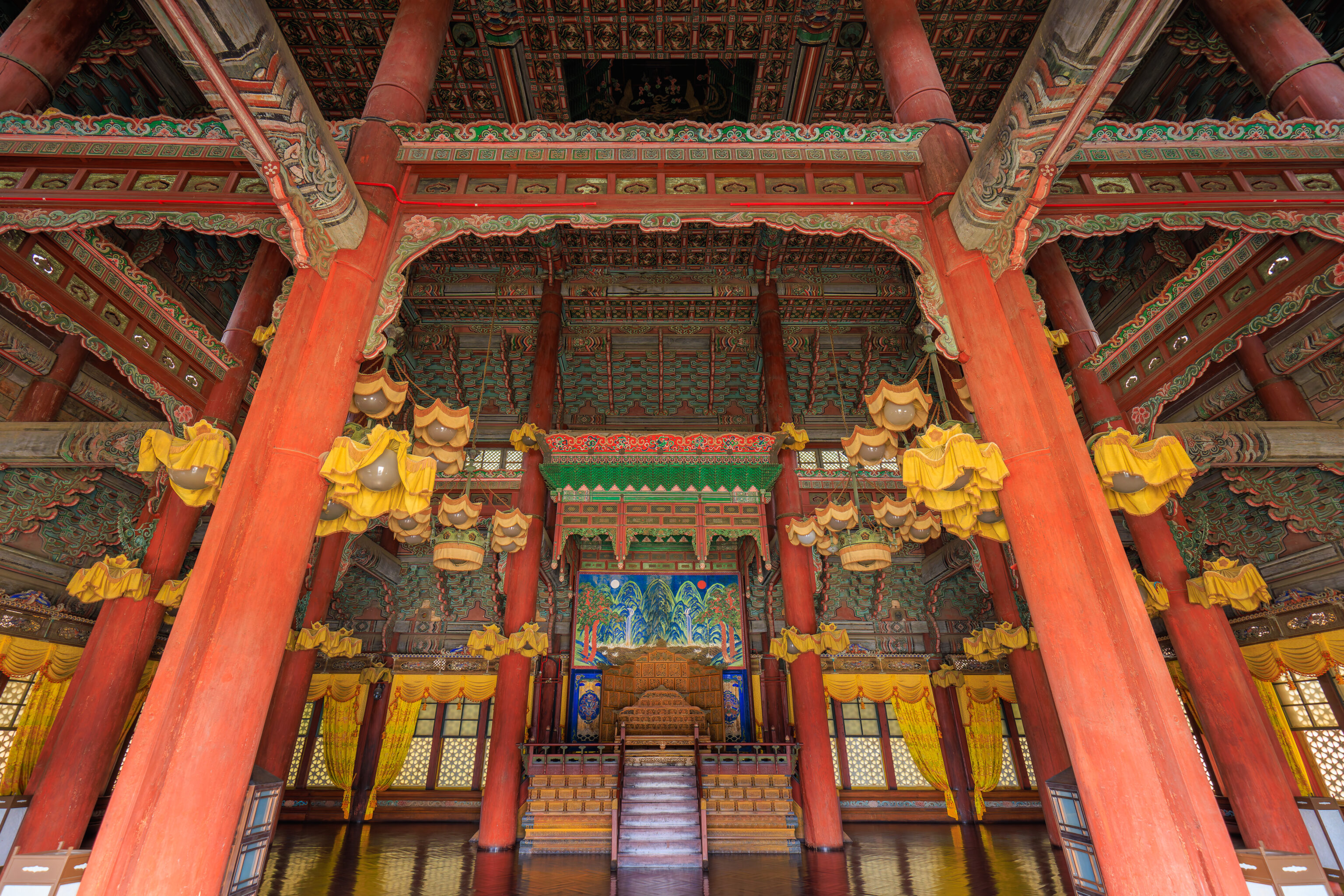
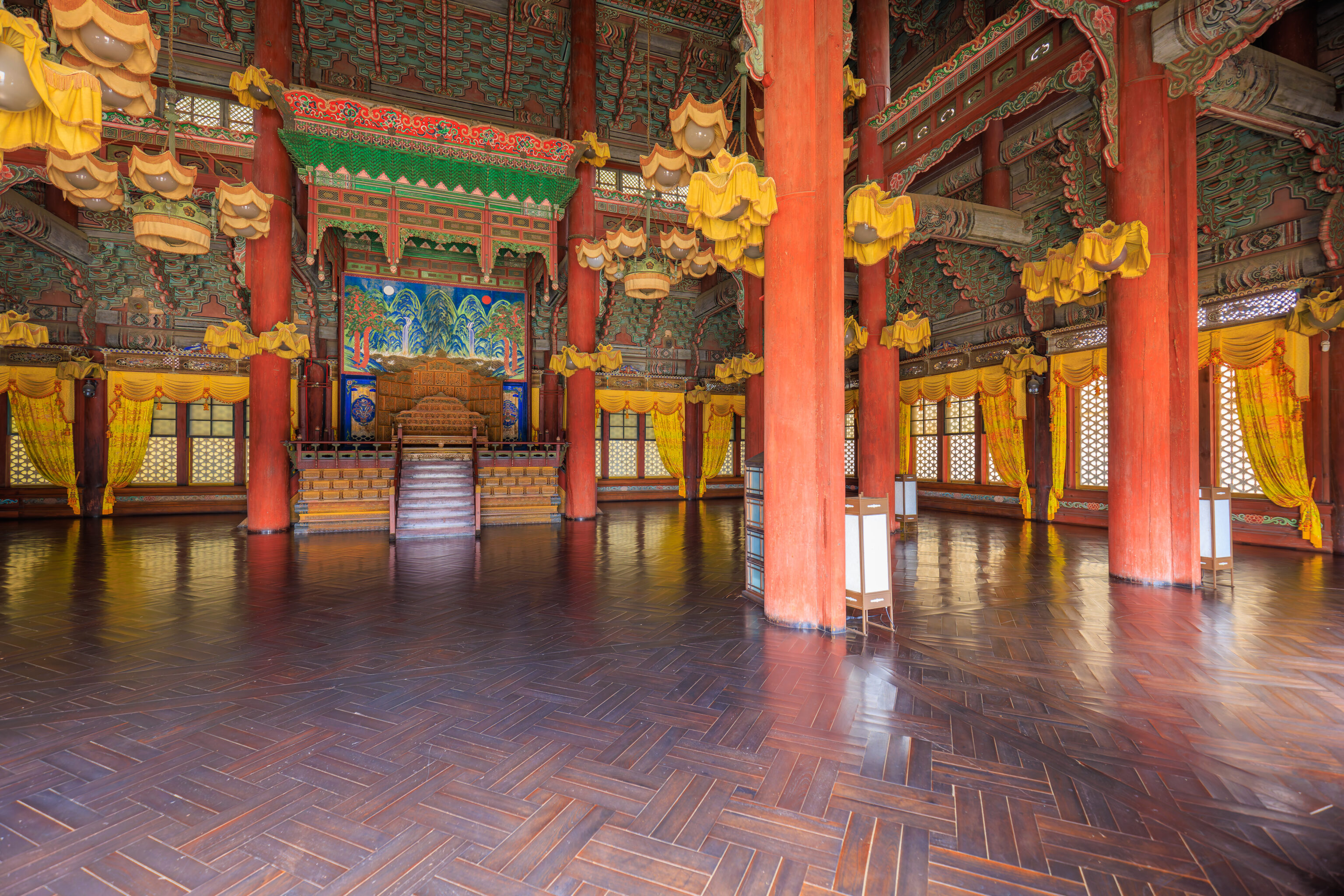
Although it is not possible to enter the Injeongjeon, we could look inside from the open doors in front. There is quite a bit of yellow, signifying the Emperor. There is also a familiar painting with mountains, the sun, and the moon, behind the throne. This painting is the 일월오봉도 Irworobongdo and is a symbol of the Joseon Dynasty. The ceiling is interesting as well due to how many interlocking support pieces are present.
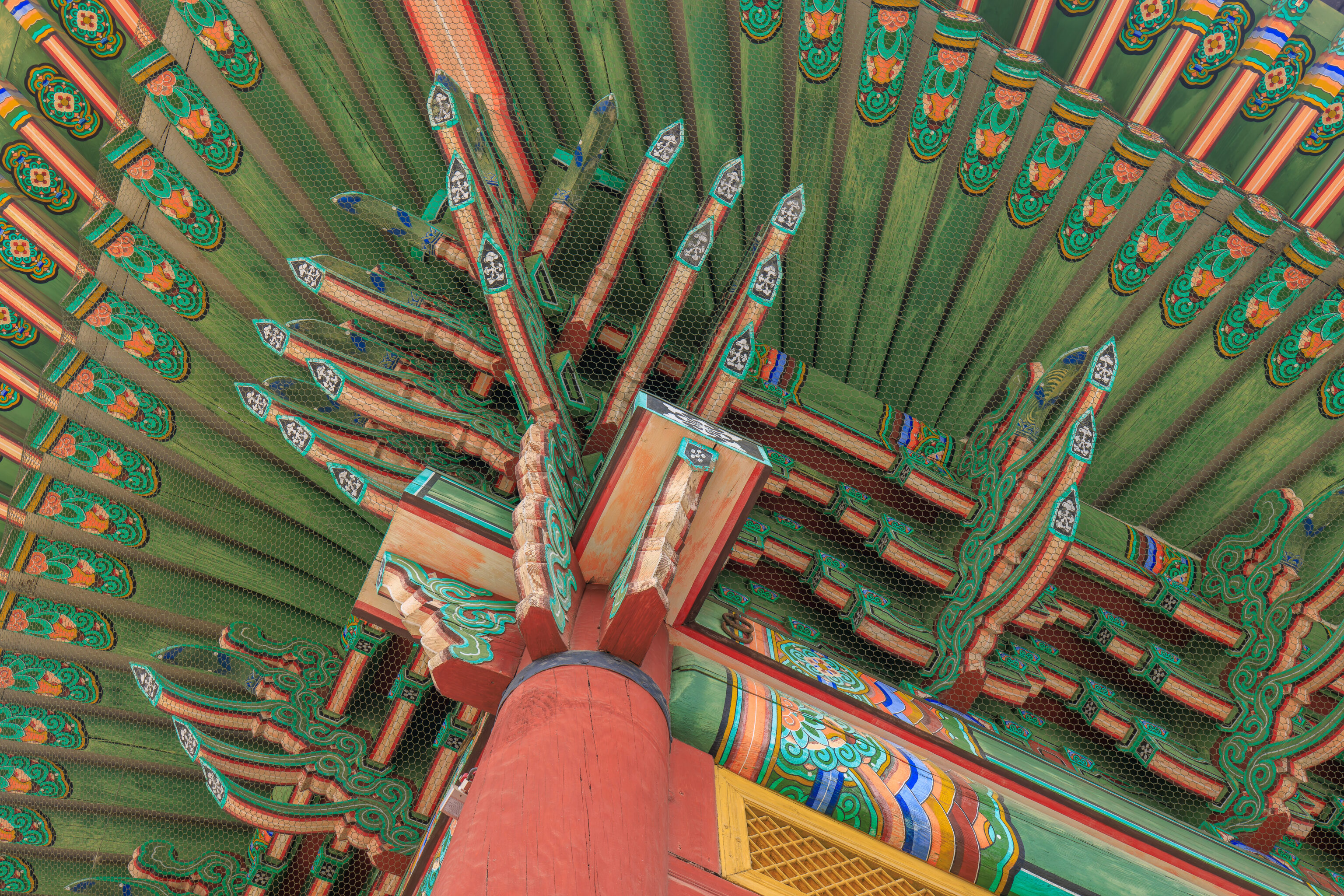
This is also visible on the exterior of the building.
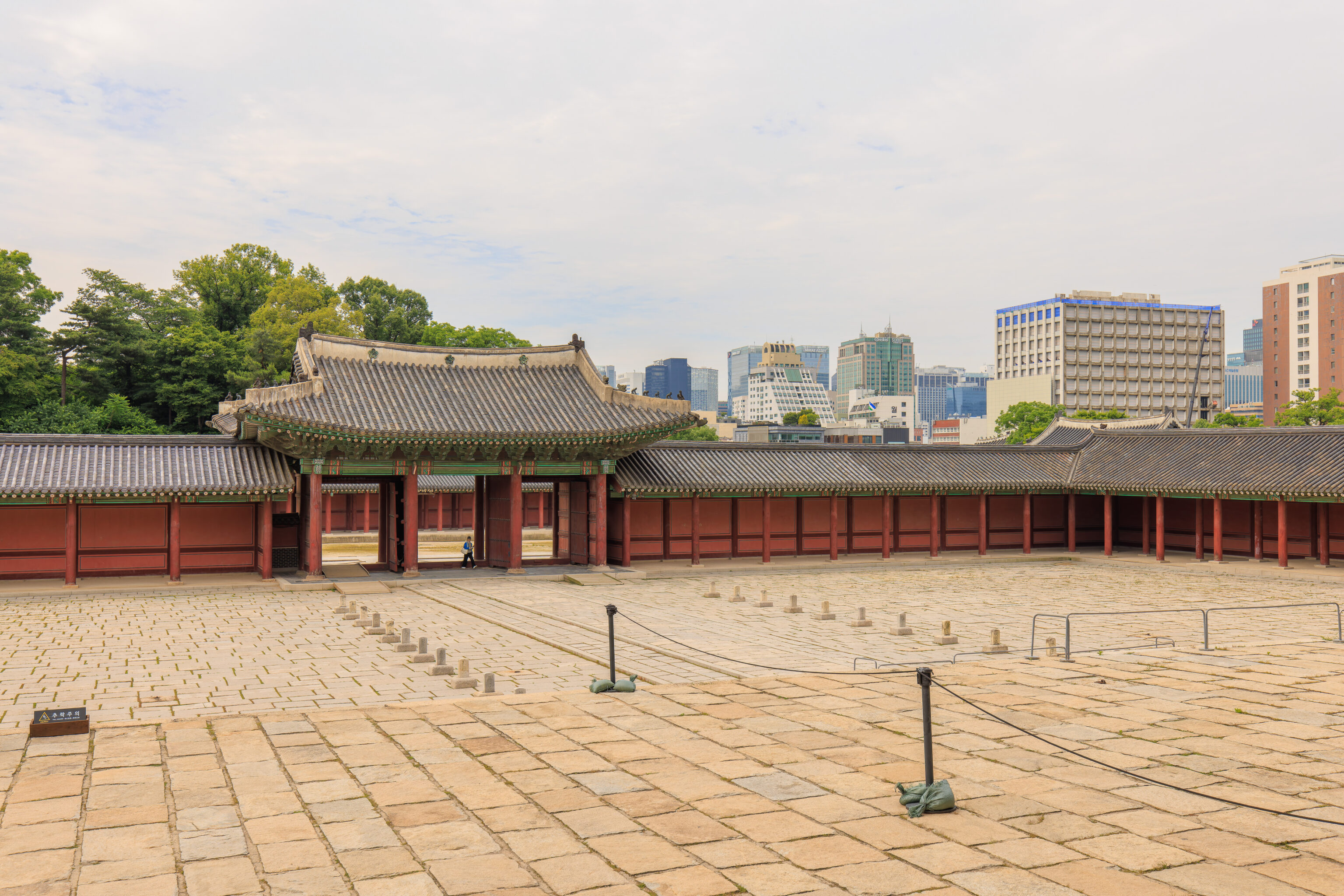
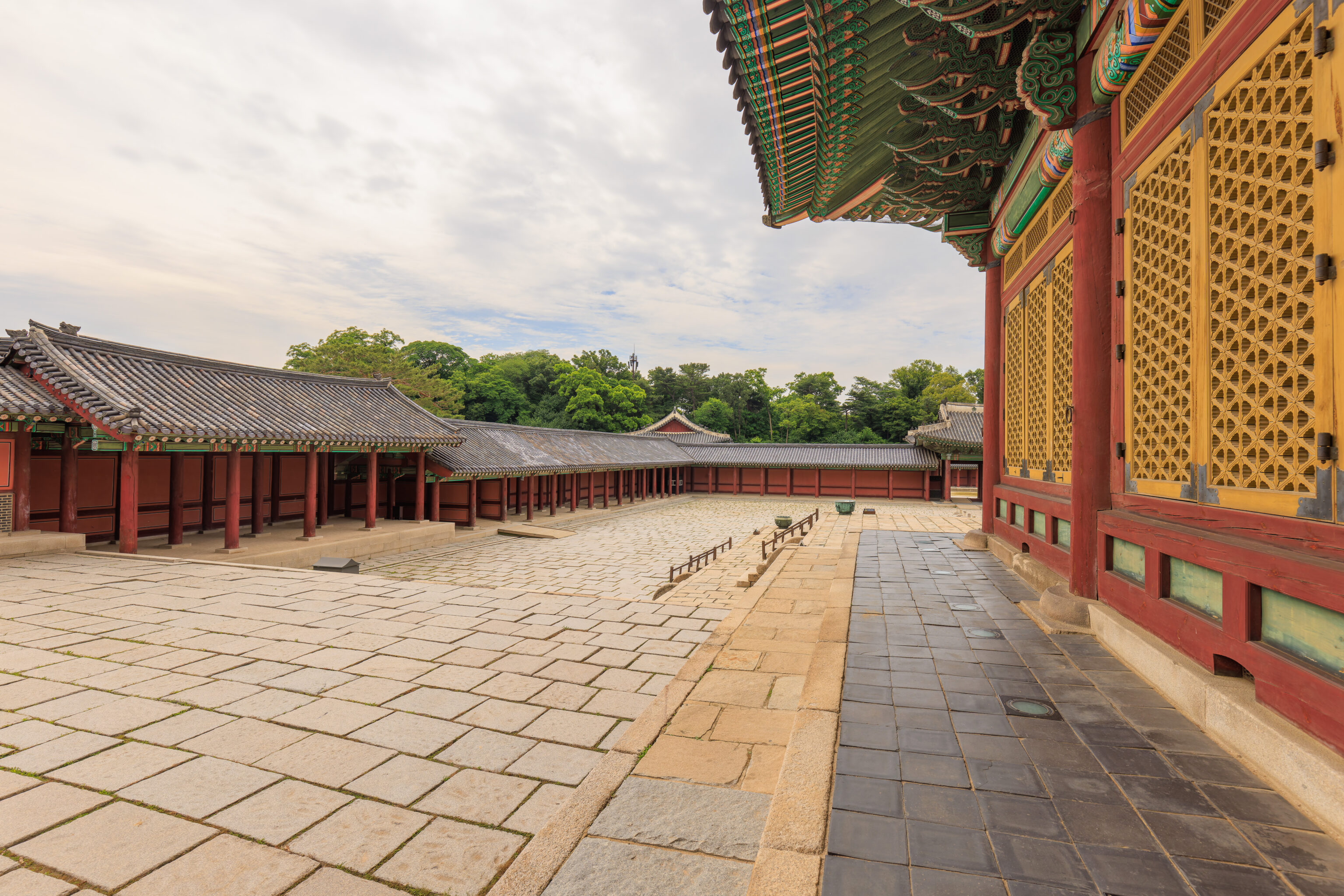
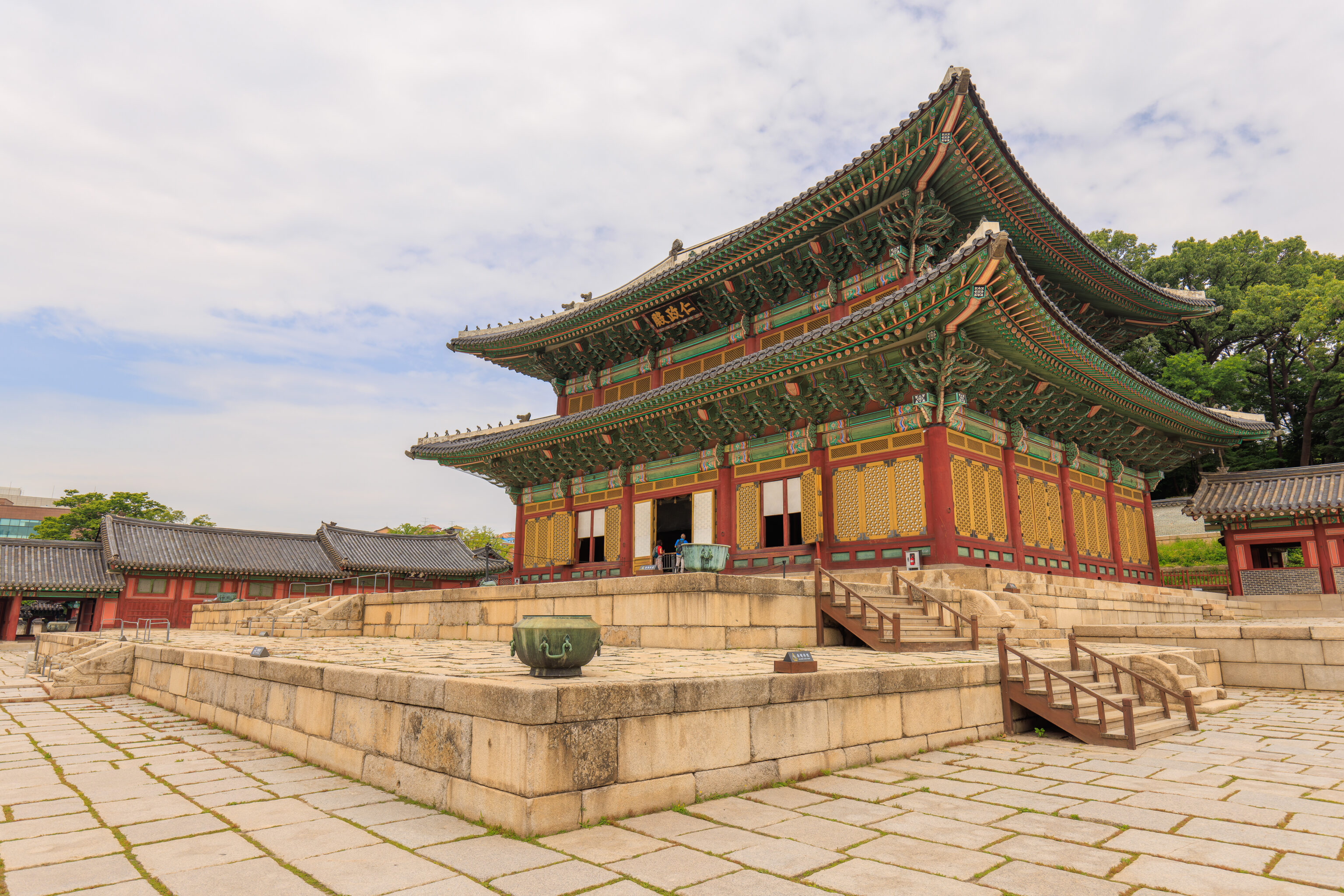
We headed to our right, or east, after looking at the interior of the hall.
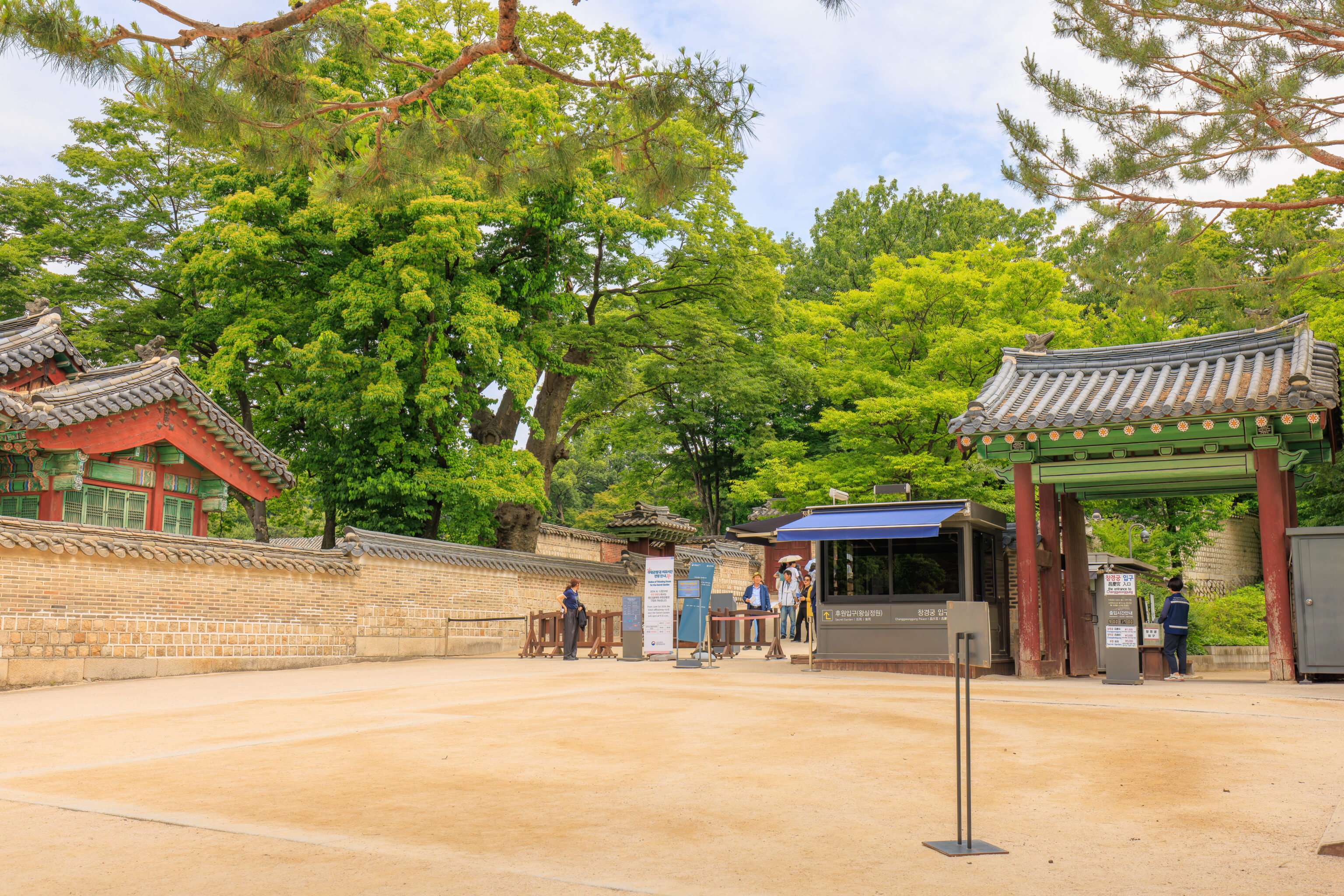
We continued to the east, reaching the entrance to the Secret Garden at 10:05am. We decided to sit and wait in the area near the entrance. The entrance area is shared with the western entrance to 창경궁 Changgyeonggung, an adjacent palace complex that lies to the east of Changdeokgung.
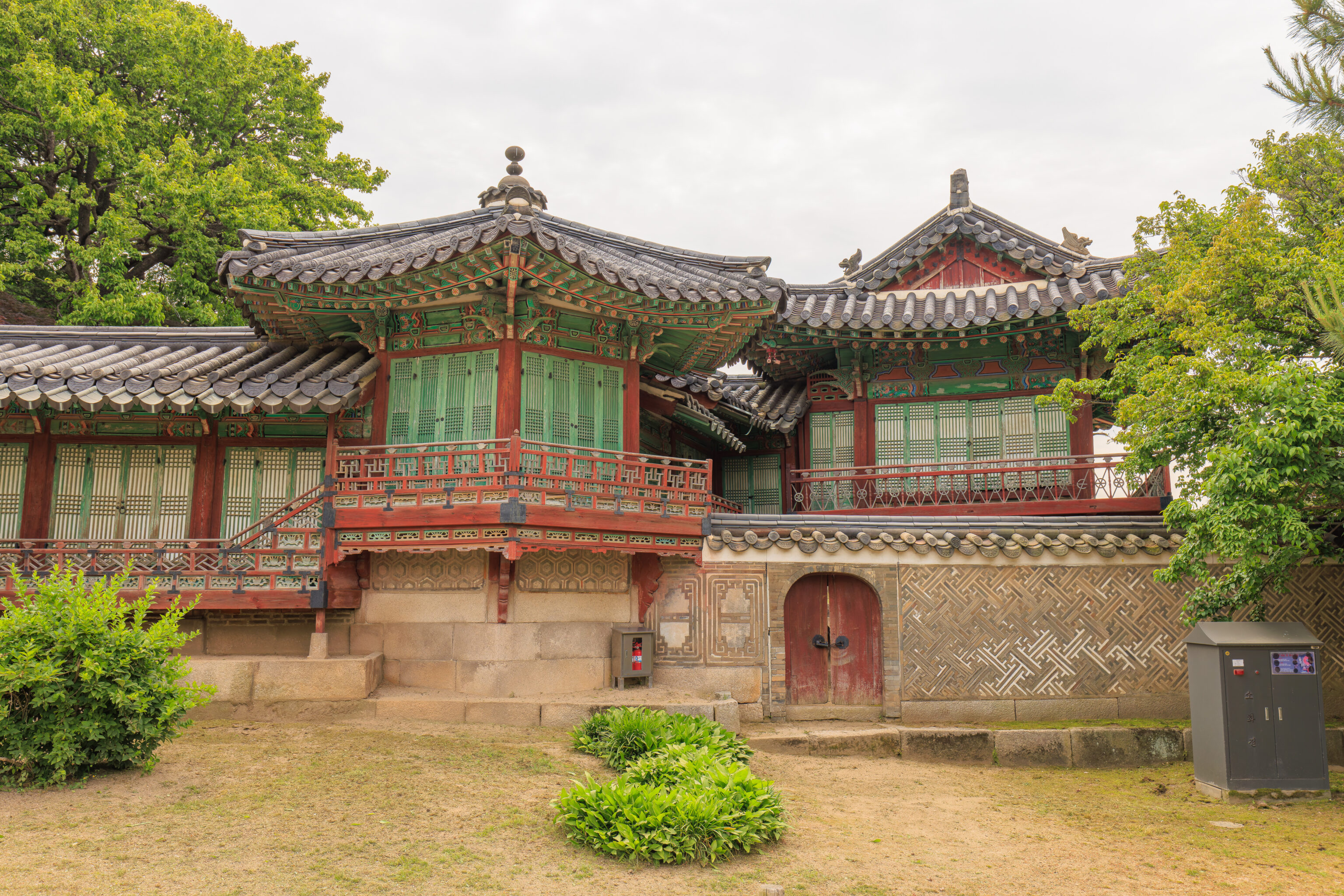
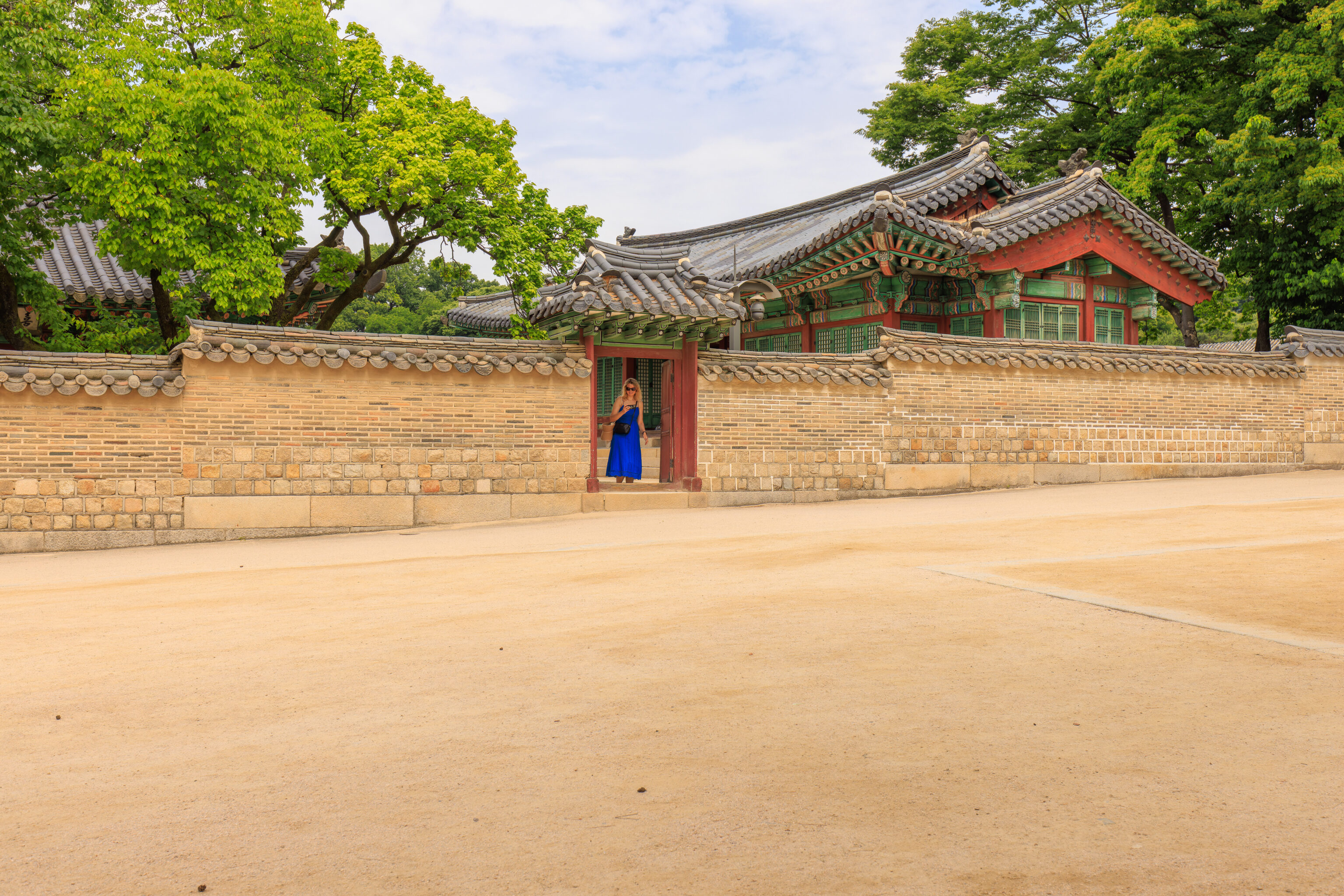
There are other palace buildings here. We’ll have to return later to check them out.
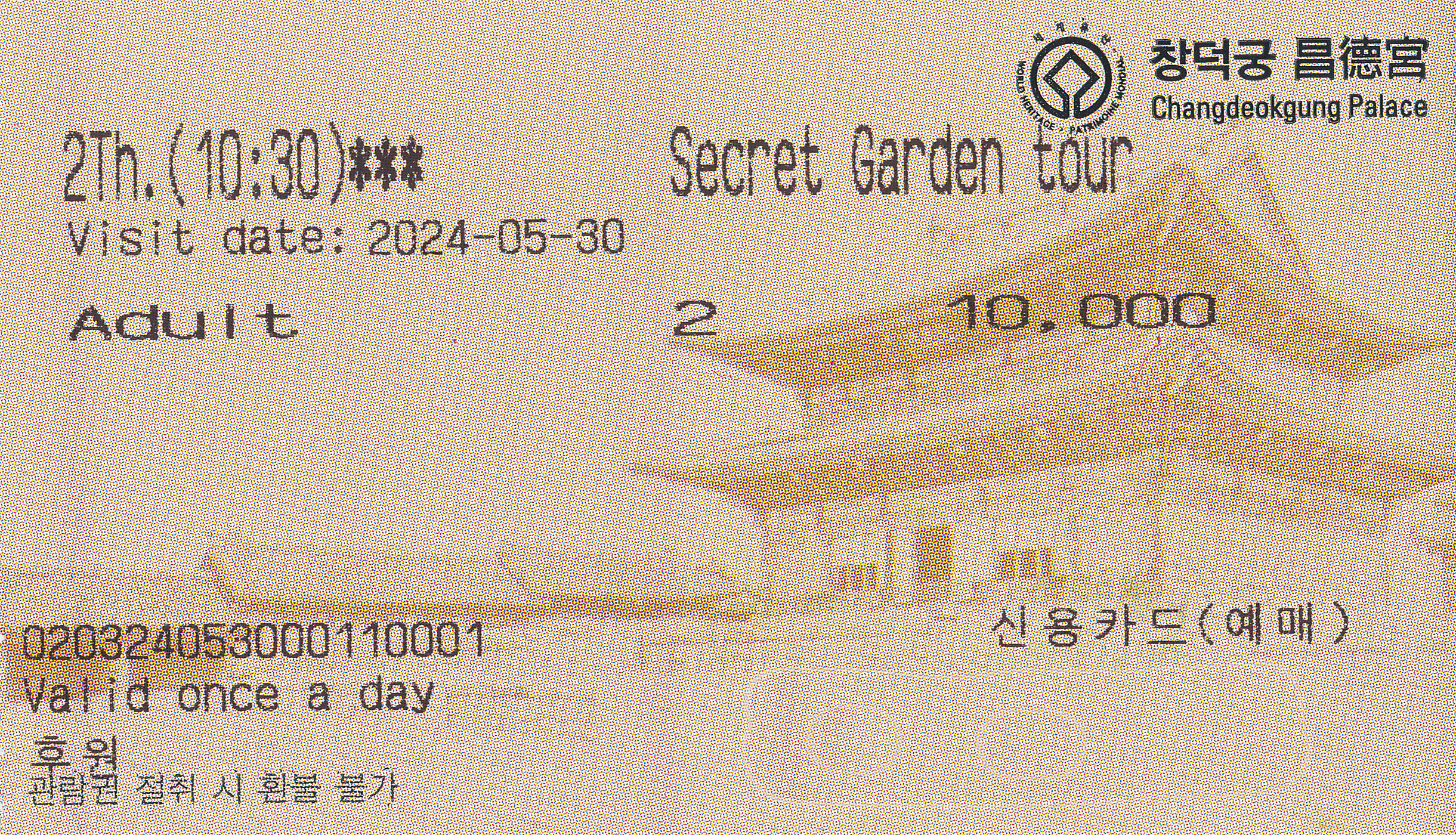
Soon, it was time to start the tour! Note that with online tickets, you need to go to the ticket office next to the Secret Garden entrance to pick up a physical paper ticket. We quickly did that after showing our digital ticket to the tour guide.
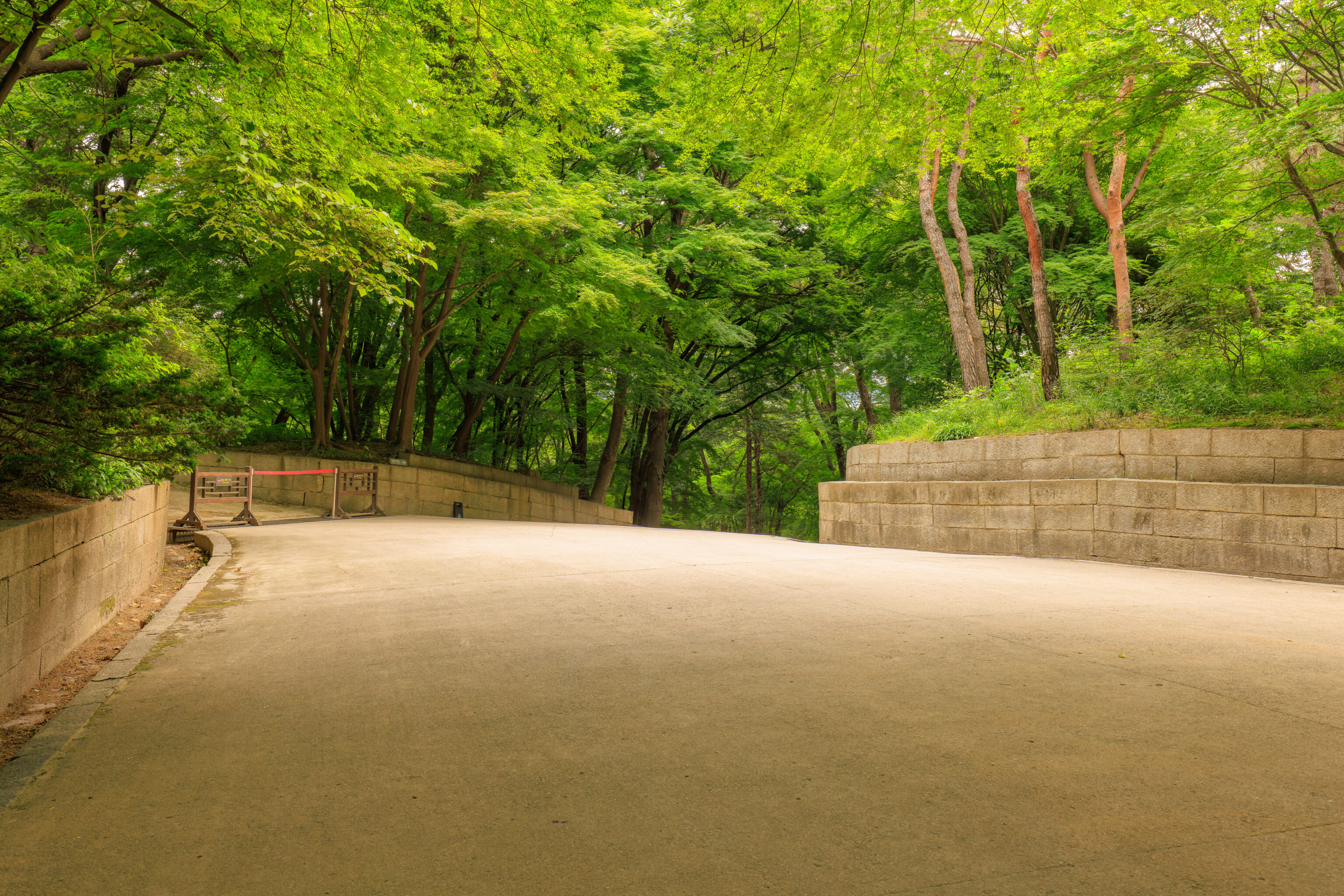
The way the guided tour works is that the tour guide stops at a few places along the route, talking a bit about the area. During this time, generally you’re free to move around the immediate area. There is also time to explore the immediate area before the group is ushered along to the next spot.
The Secret Garden does seem to be set up for self-guided tours. The first sign we saw had an overview of the garden:
Created when Changdeokgung Palace was constructed during King Taejong's reign (1400~1418), the Secret Garden could be accessed from both Changdeokgung and Changgyeonggung palaces. During the Japanese invasion of 1592, many of the garden pavilions were destroyed. Restoration work began in 1623 and continued through the reigns of succeeding monarchs, leading to its present appearance. The Secret Garden of Changdeokgung Palace presents an exceptionally exquisite design. It is adapted to the topography and the natural setting was accentuated by minimizing artificial landscaping. Ponds and the Ongnyucheon Stream run through the small valleys. Unlike the traditional sense of most palace gardens around the world, this secluded and wooded garden had multiple purposes, not only as a place for the composition of poems but also a venue for banquets and military drills conducted in the presence of the king. Uniquely the king and queen also engaged in ritualistic farming and raising silkworms in the Secret Garden.
There was also a QR code with an audio guide.
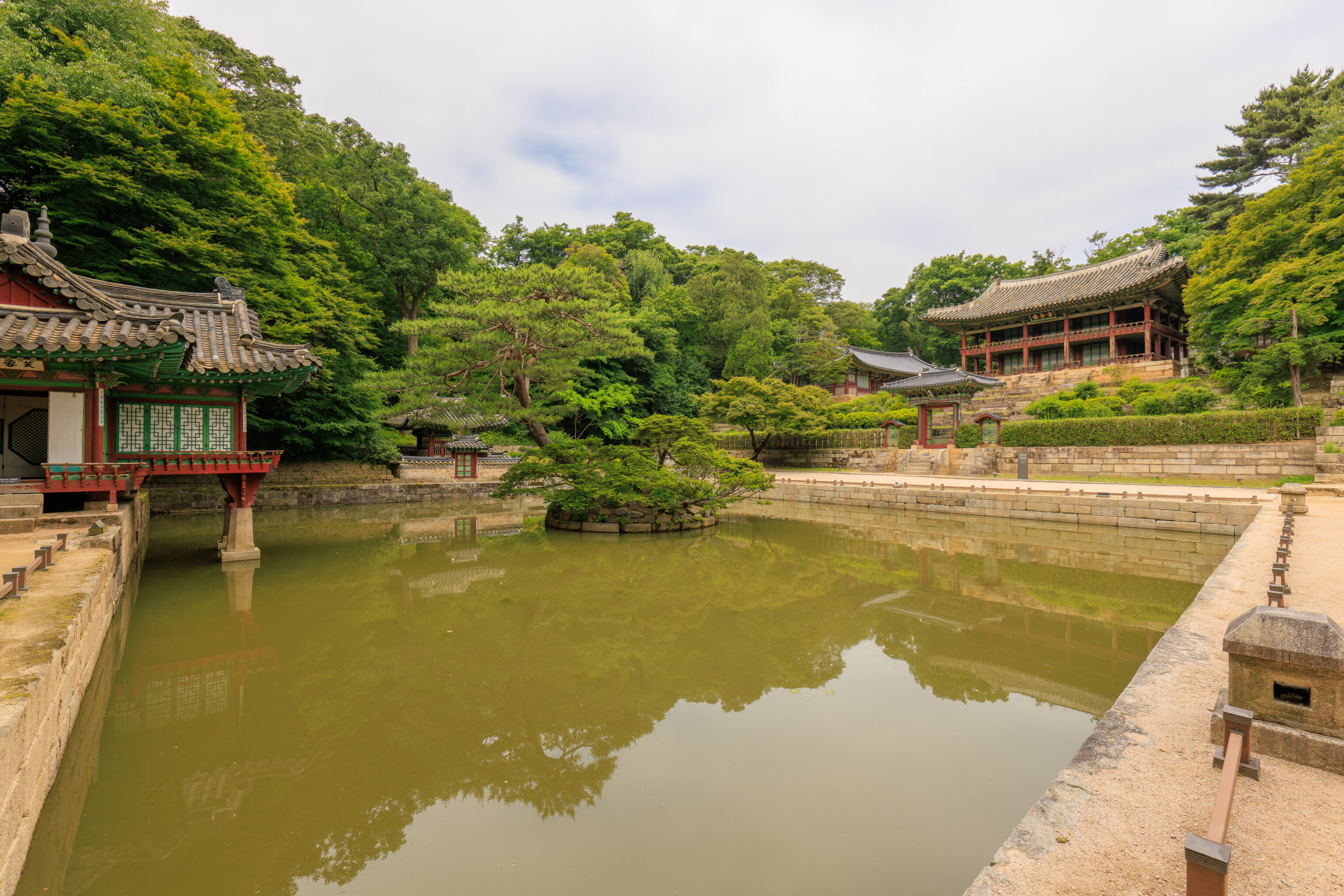
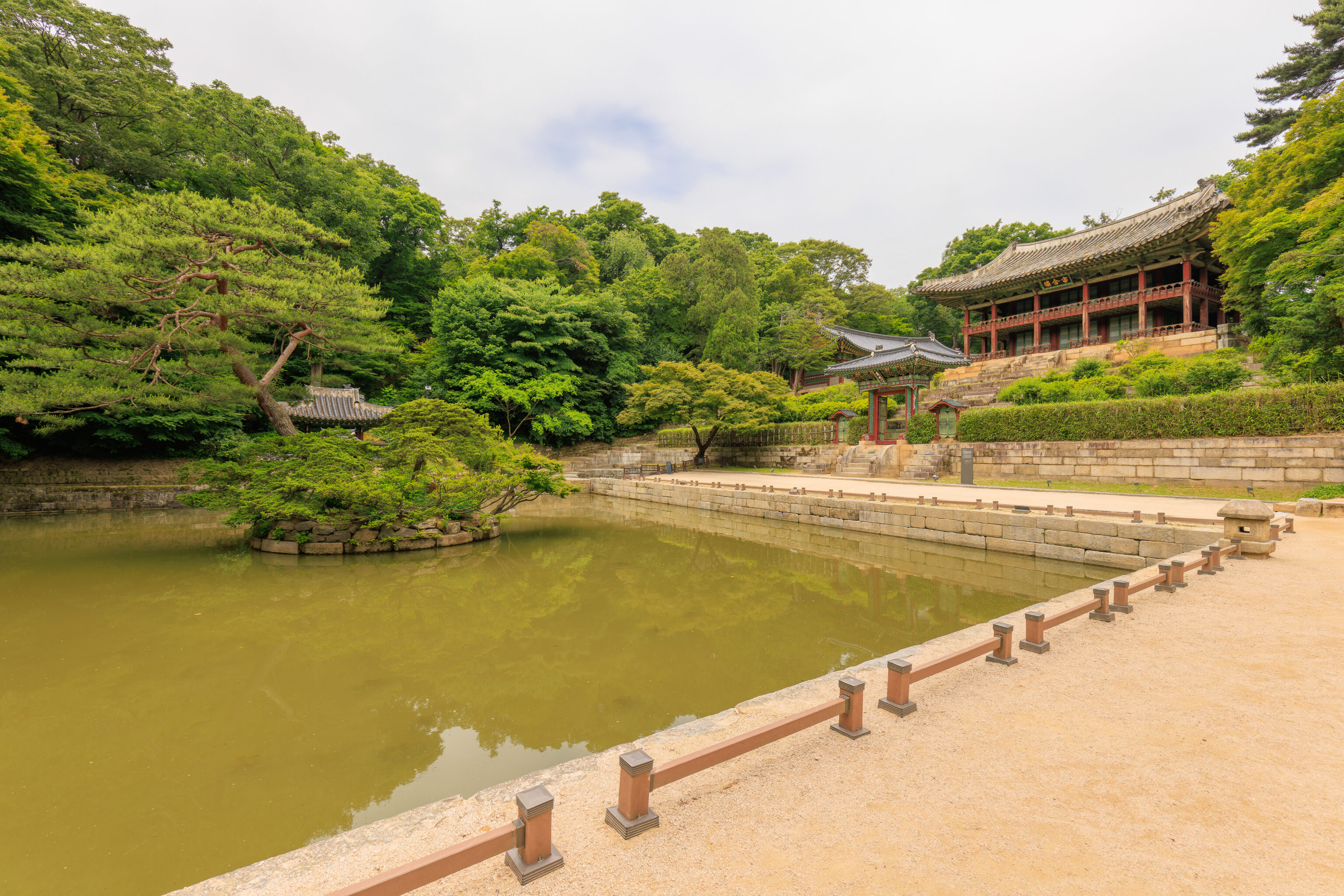
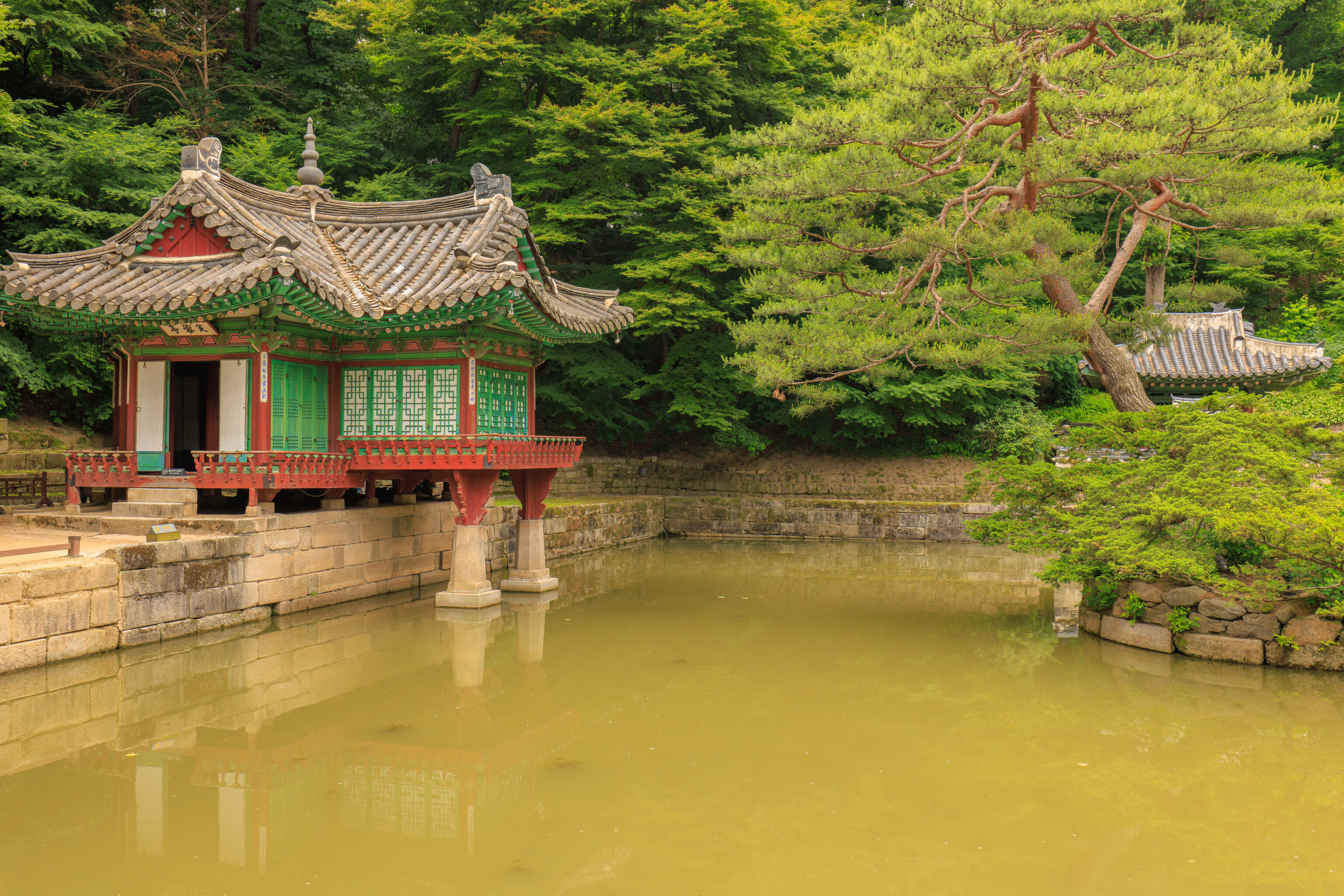
Our first real stop was next to a large square pond, the 부용지 Buyongji.
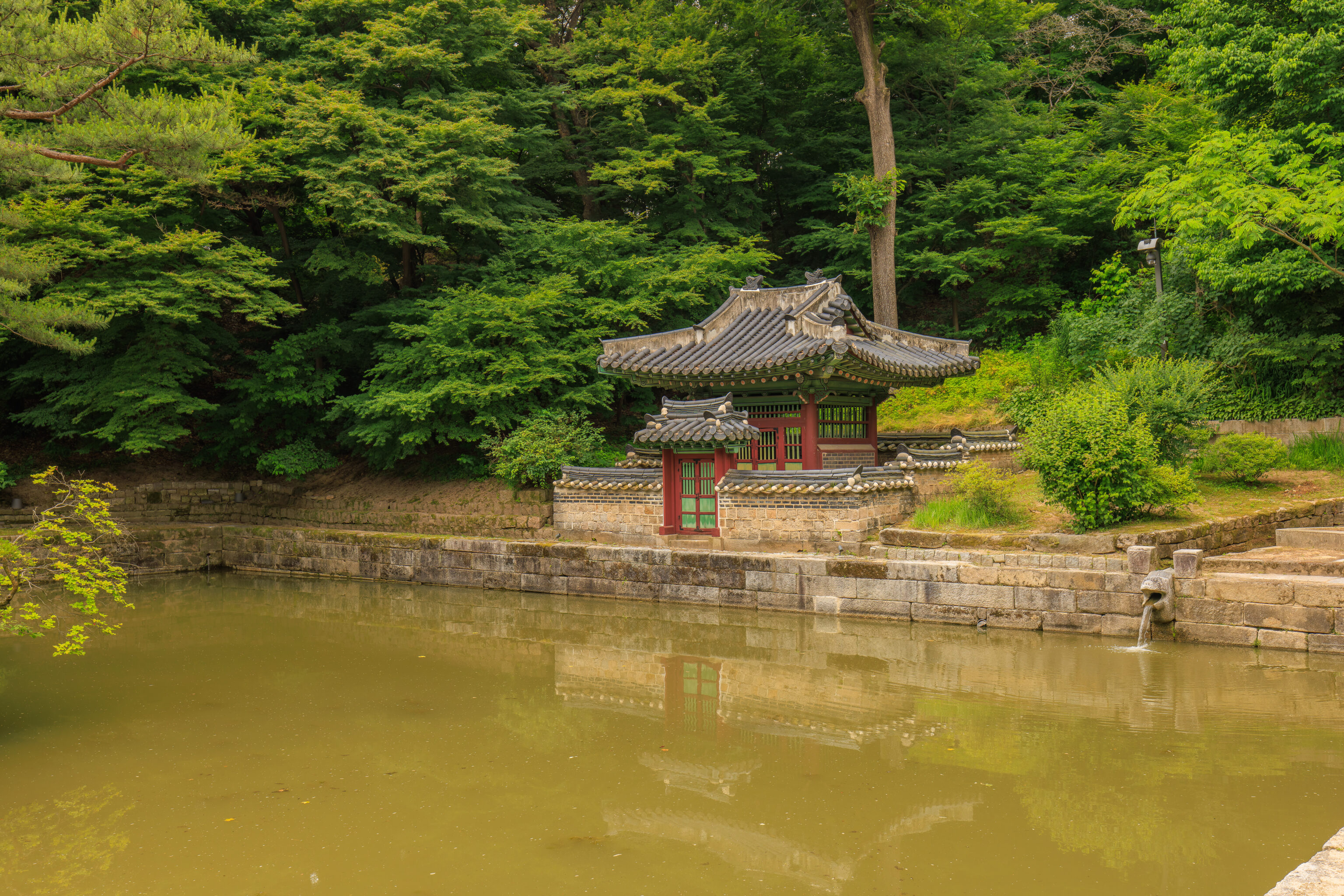
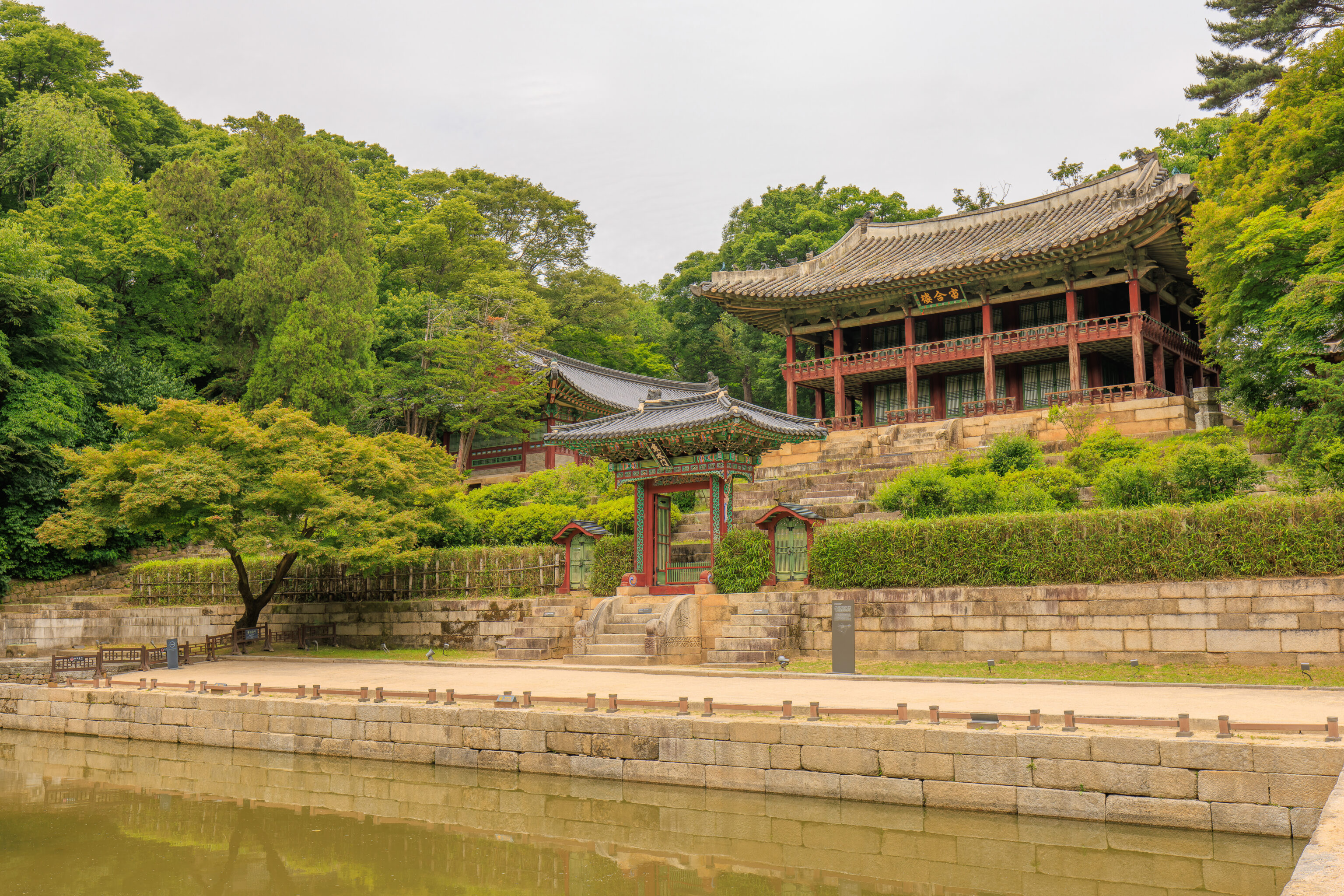
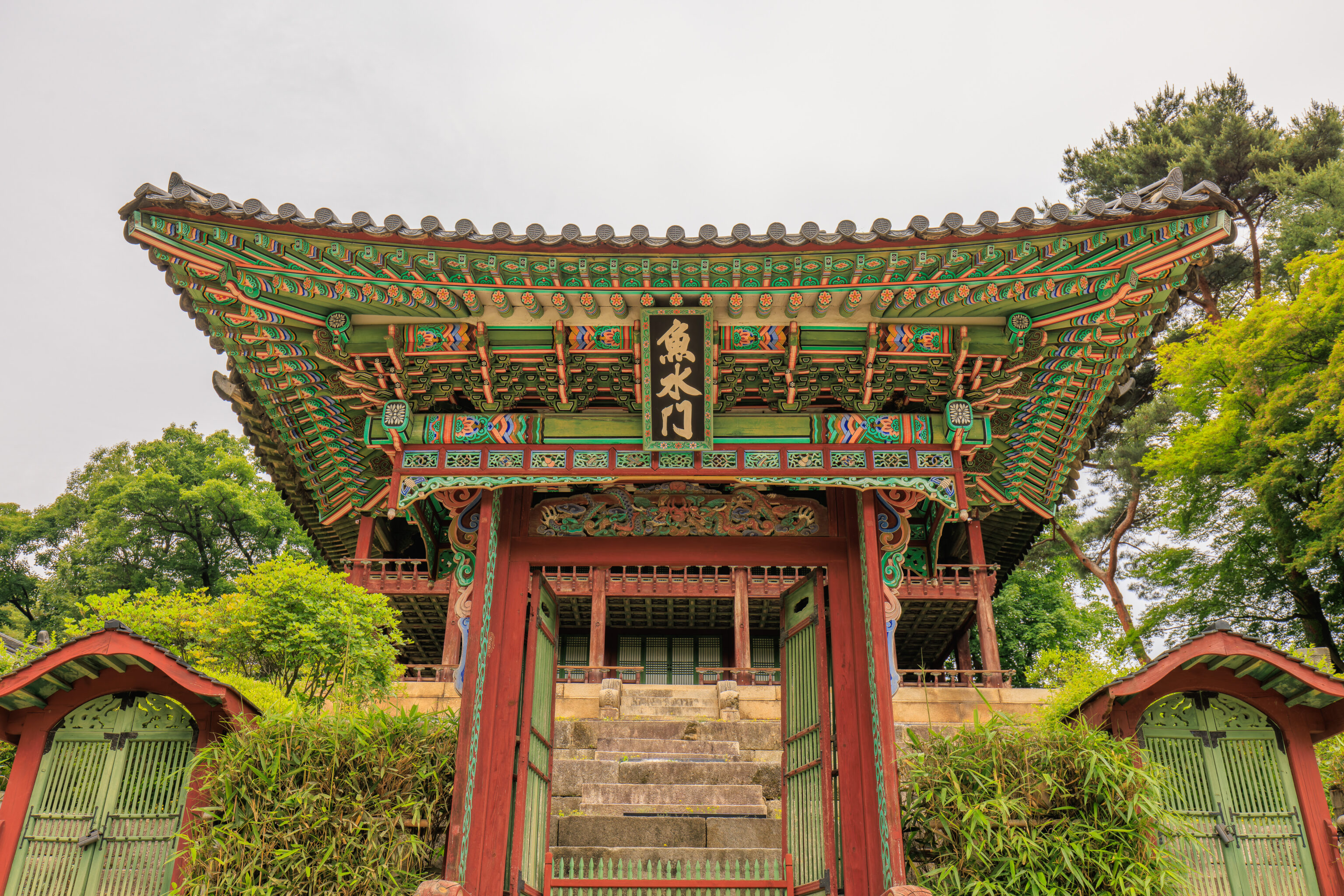
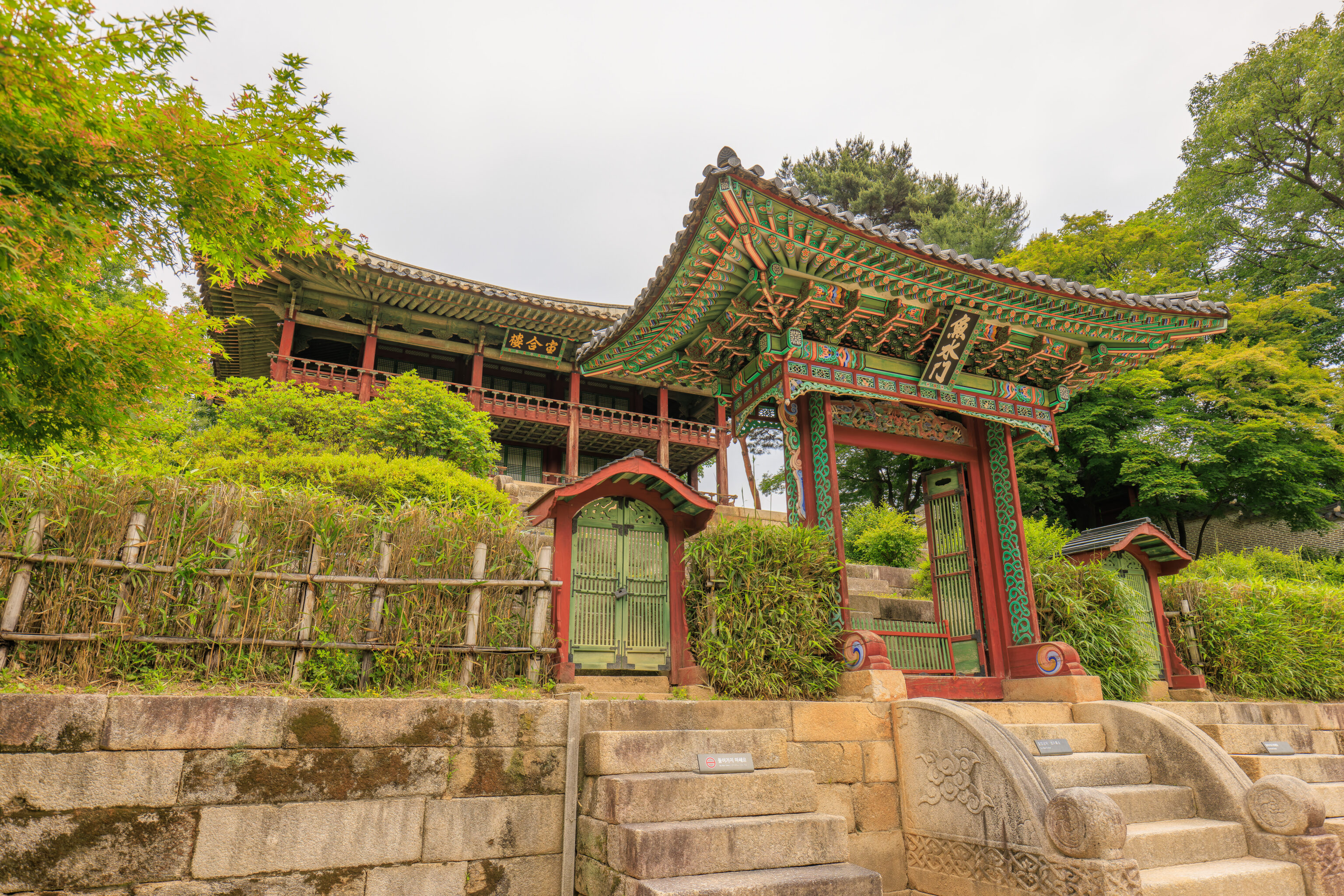
A sign describes the 주합루 Juhamnu, the building on the north side of the pond behind a small gate:
Thee two-story Juhamnu Pavilion was built in 1776, the same year that King Jeongjo (r. 1776-1800) ascended to the throne. The first floor served as royal library, called Gyujanggak and the second floor was a reading room. Gyujanggak was Also established a research institute to develop policies in support of the king's reforms. On the way up is a gate named Eosumun. Its name reflects the old saying that fish cannot live out of water.
It represents King Jeongjo's political philosophy that a ruler must always care about his people. On either side of the gate, there's Chwibyeong, an evergreen hedge, the way of Korean landscape architecture for screening and dividing spaces.
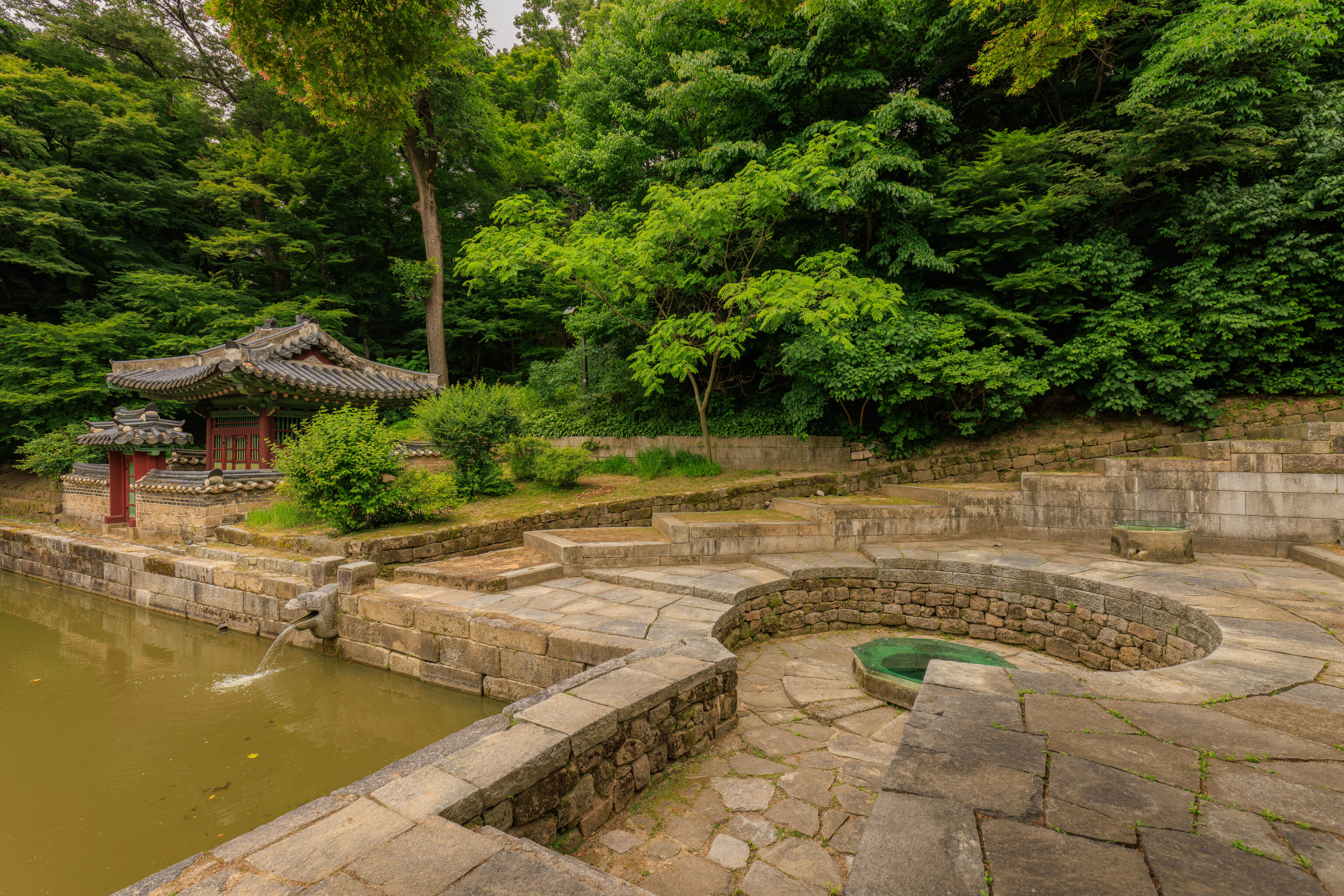
This appears to be a well, or possibly a natural spring like we saw in Gyeongbokgung.
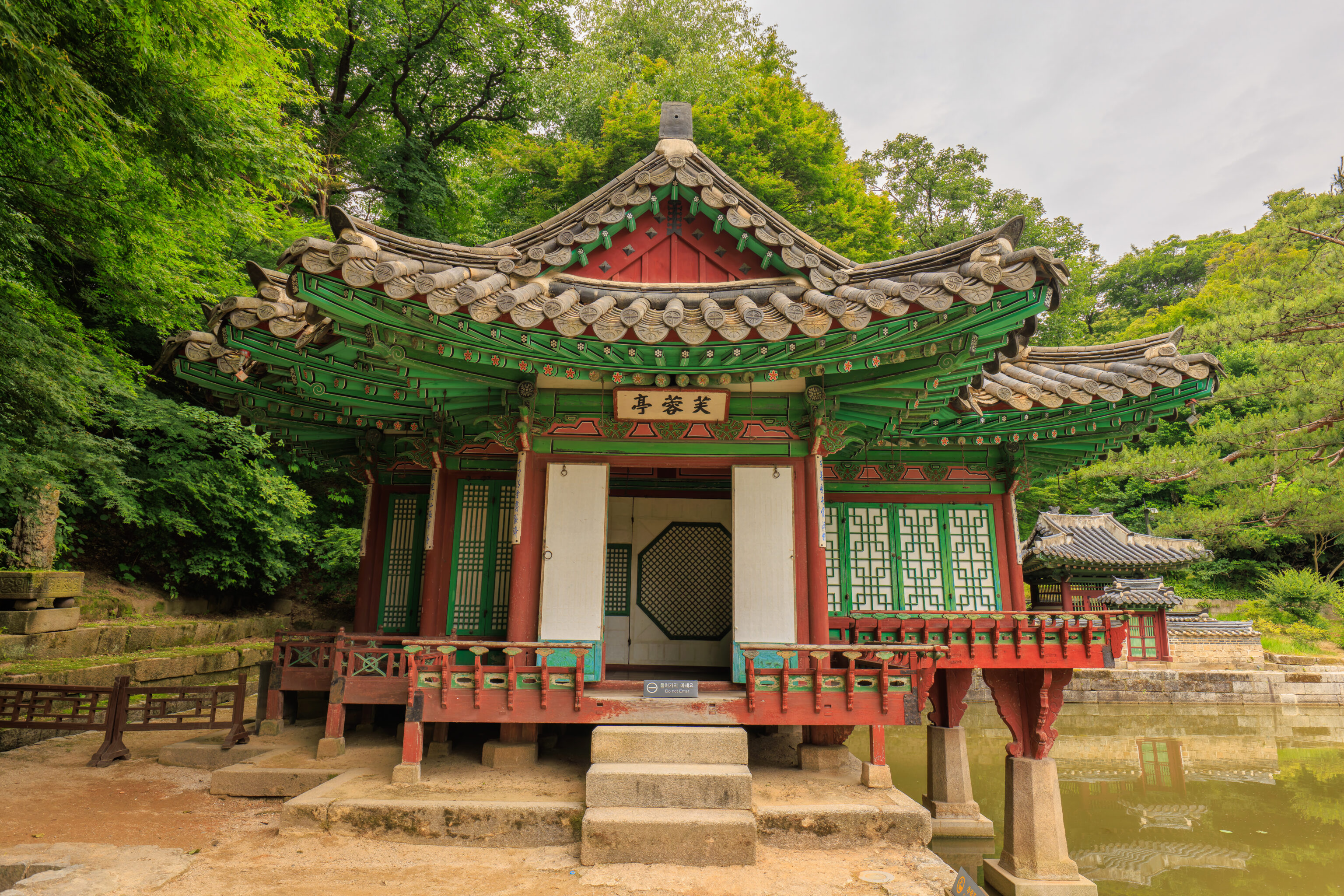
This smaller building, on the south side of the pond, is the 부용정 Buyongjeong.
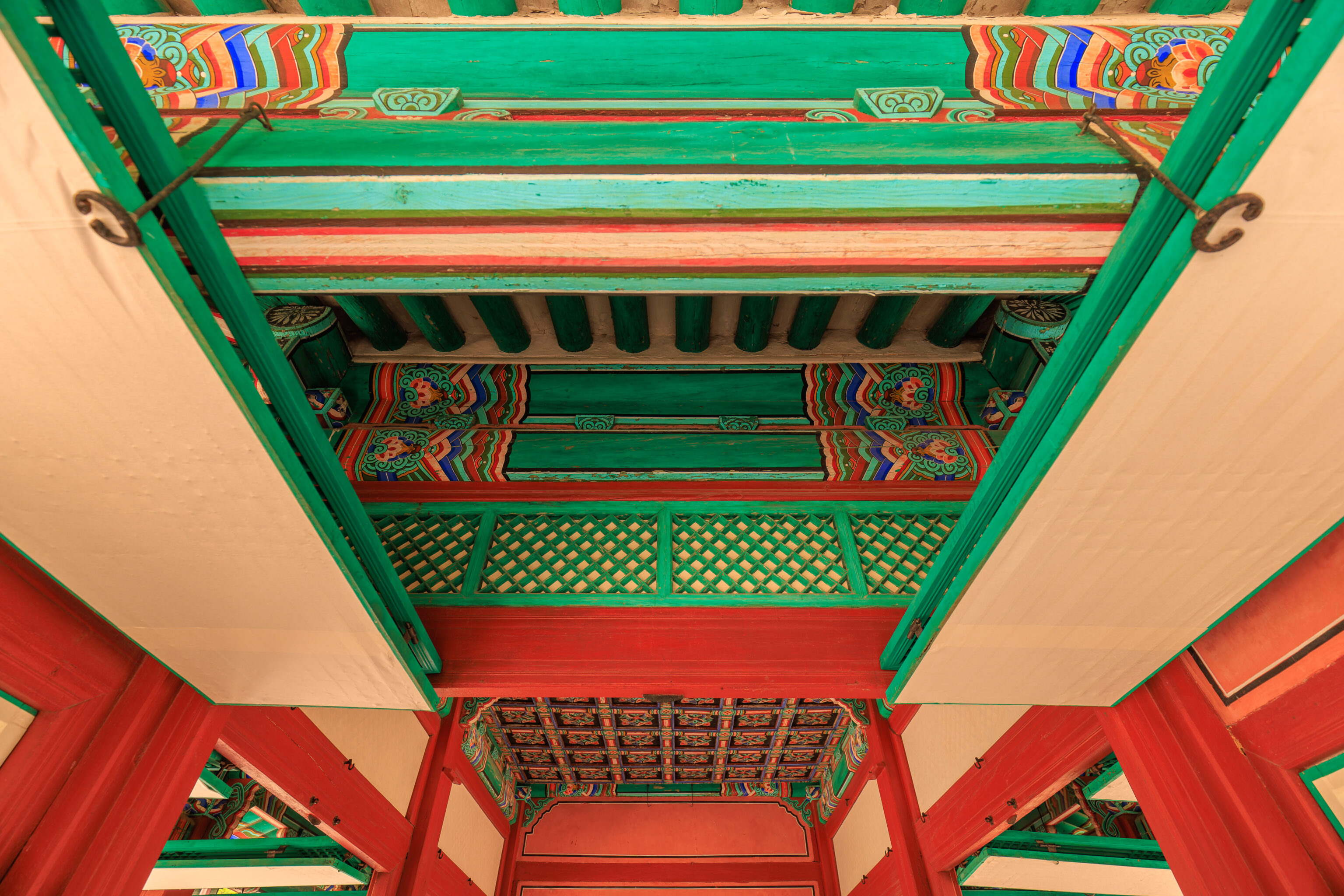
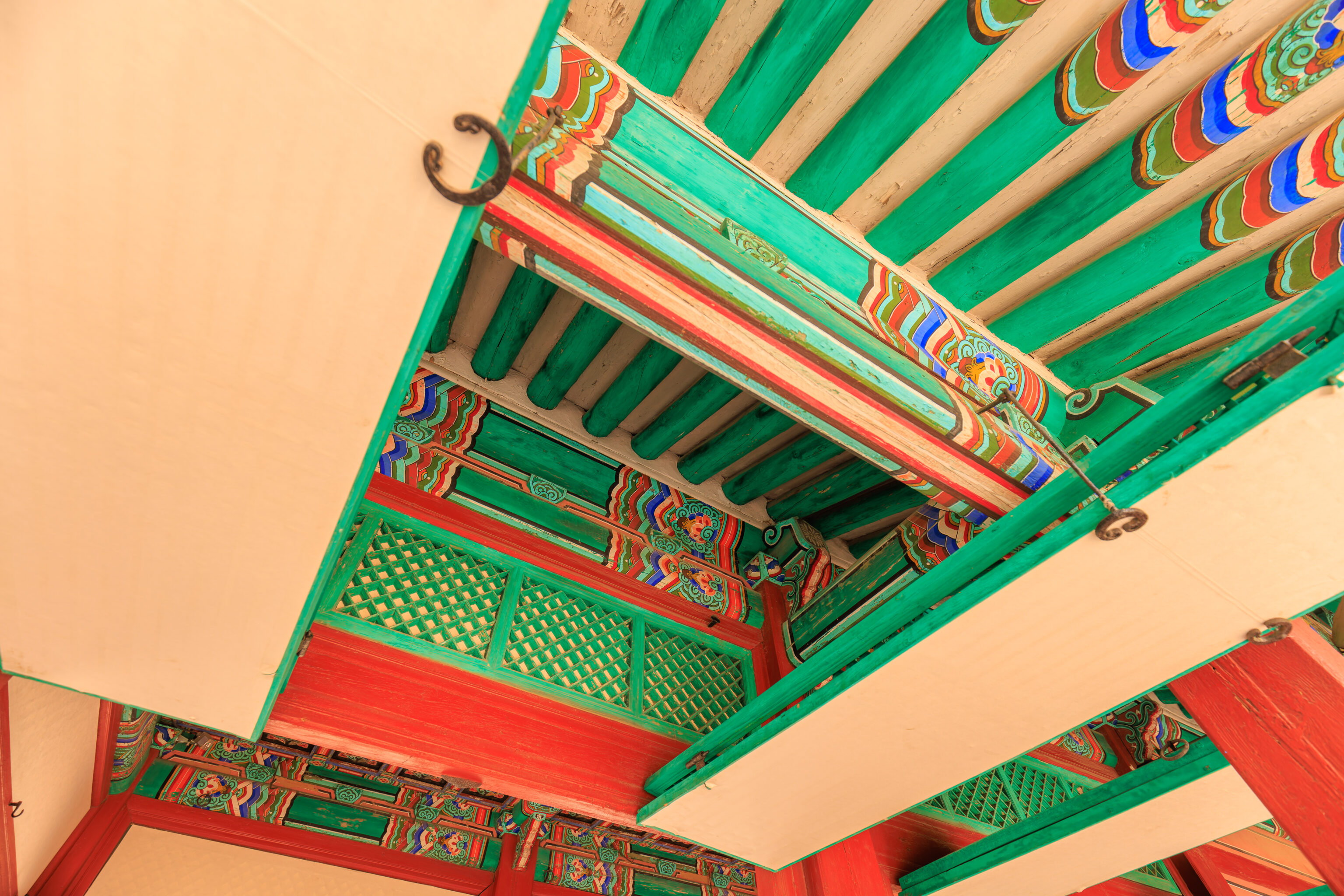
There is a building on the east side of the pond, the 영화당 Yeonghwadang, that can be entered. We didn’t photograph the exterior as it is an open-sided pavilion and was somewhat crowded with people.
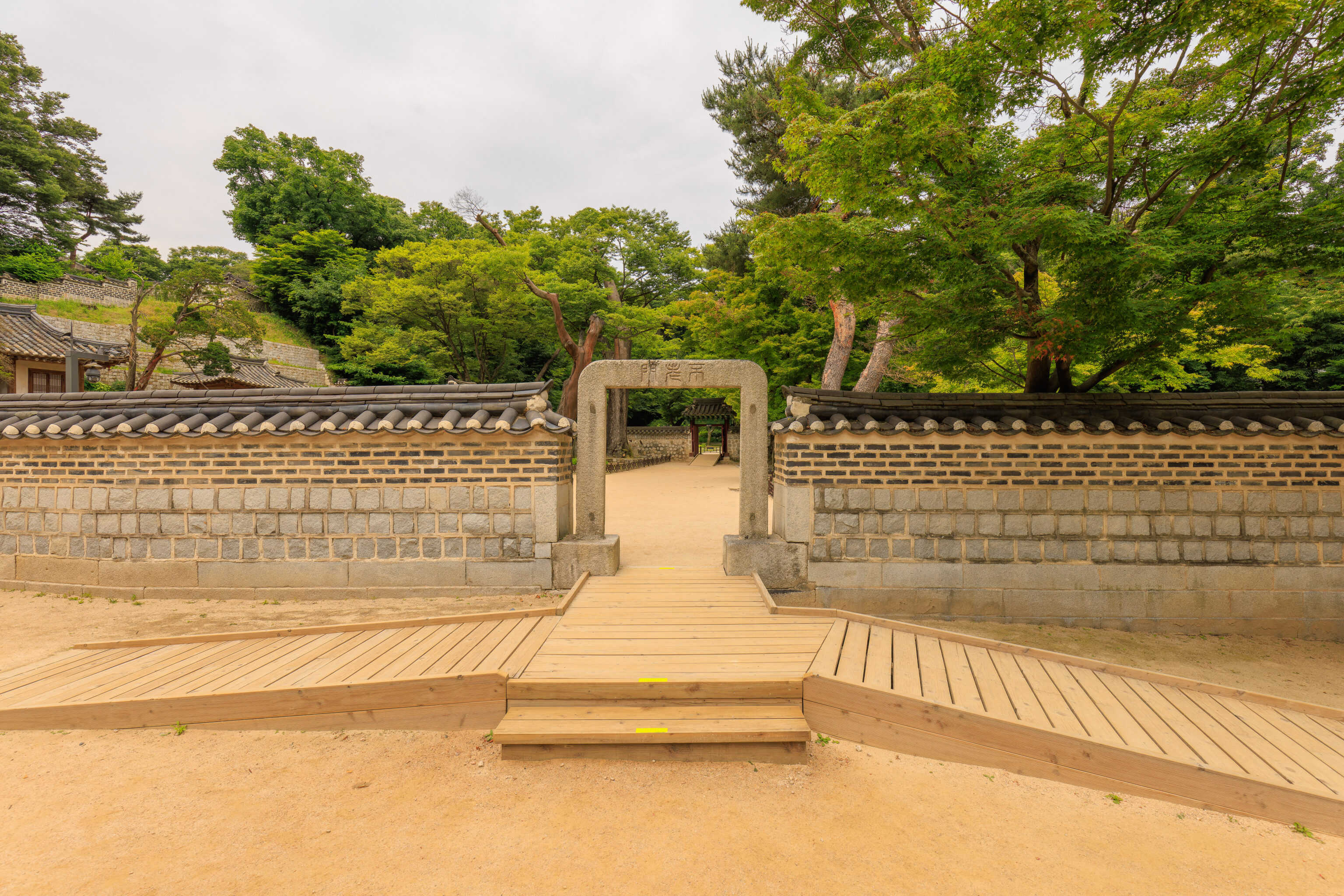
The next stop on the tour was near this small gate, the 불로문 Bullomun. The name of this gate is understandable in Chinese and has a good English translation, the Immortal Gate. This gate, apparently, does not work as no one who passed through has been granted immortality! We passed through it to see what was on the other side.
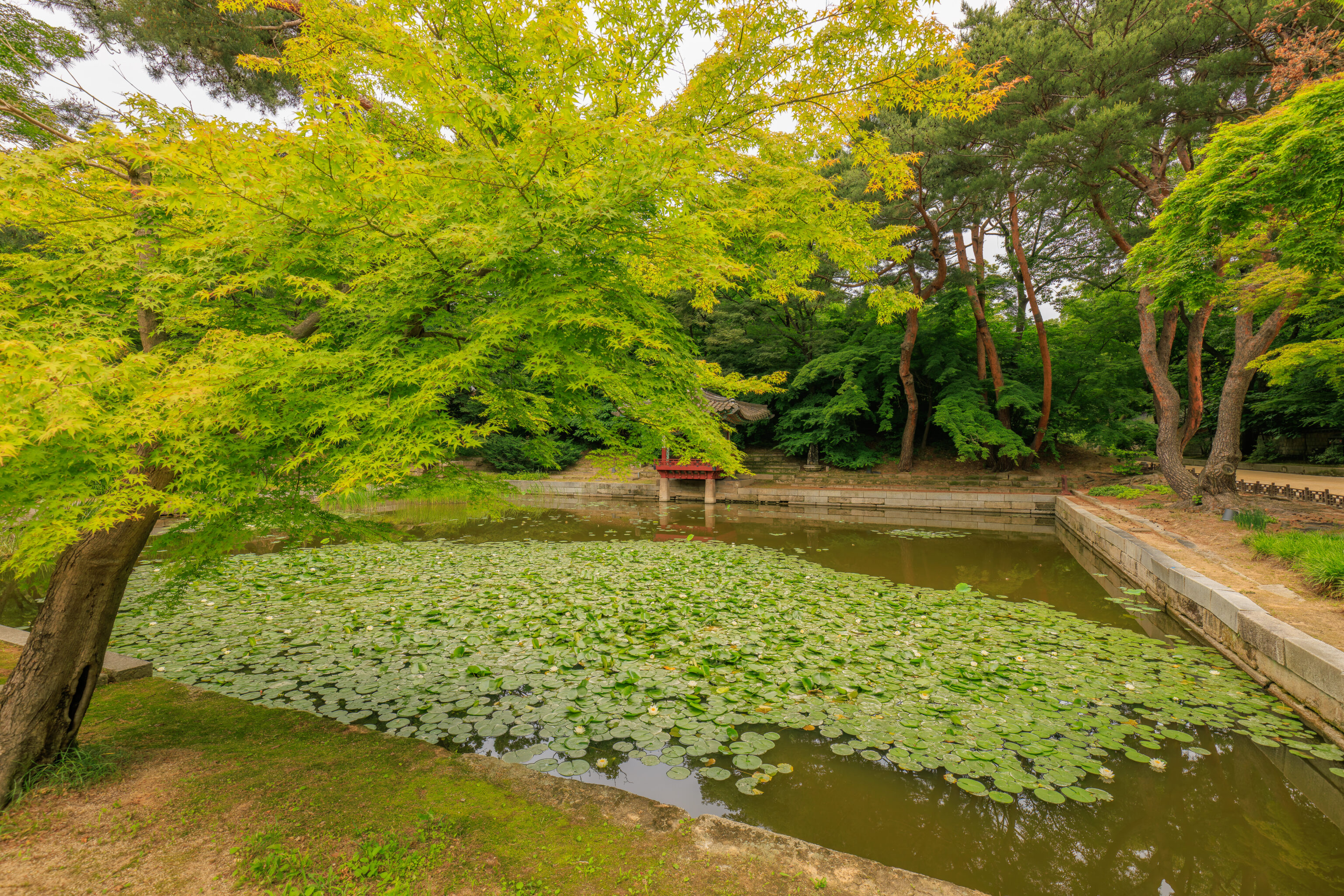
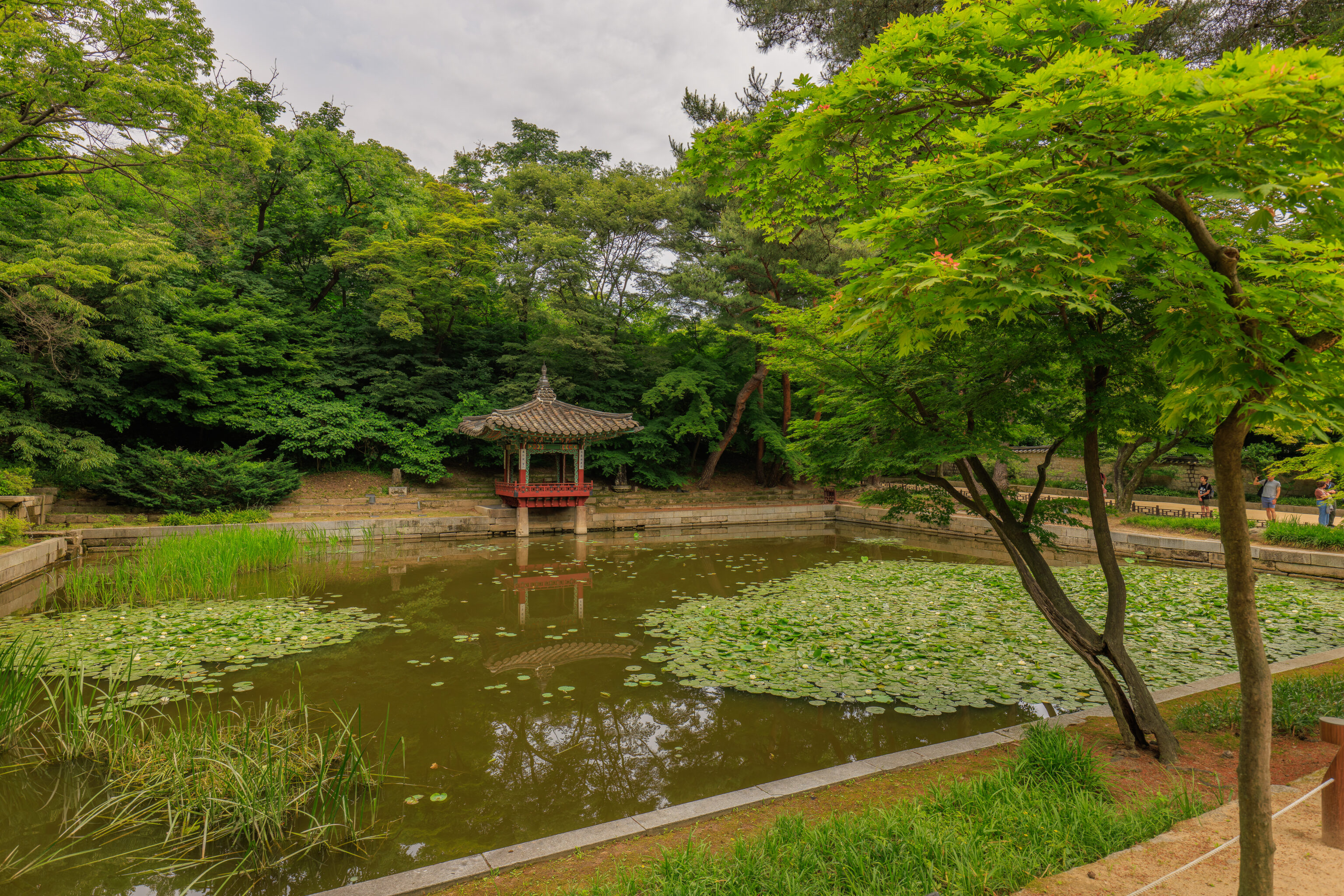
There is a small pond, the 애련지 Aeryeonji, to the north.
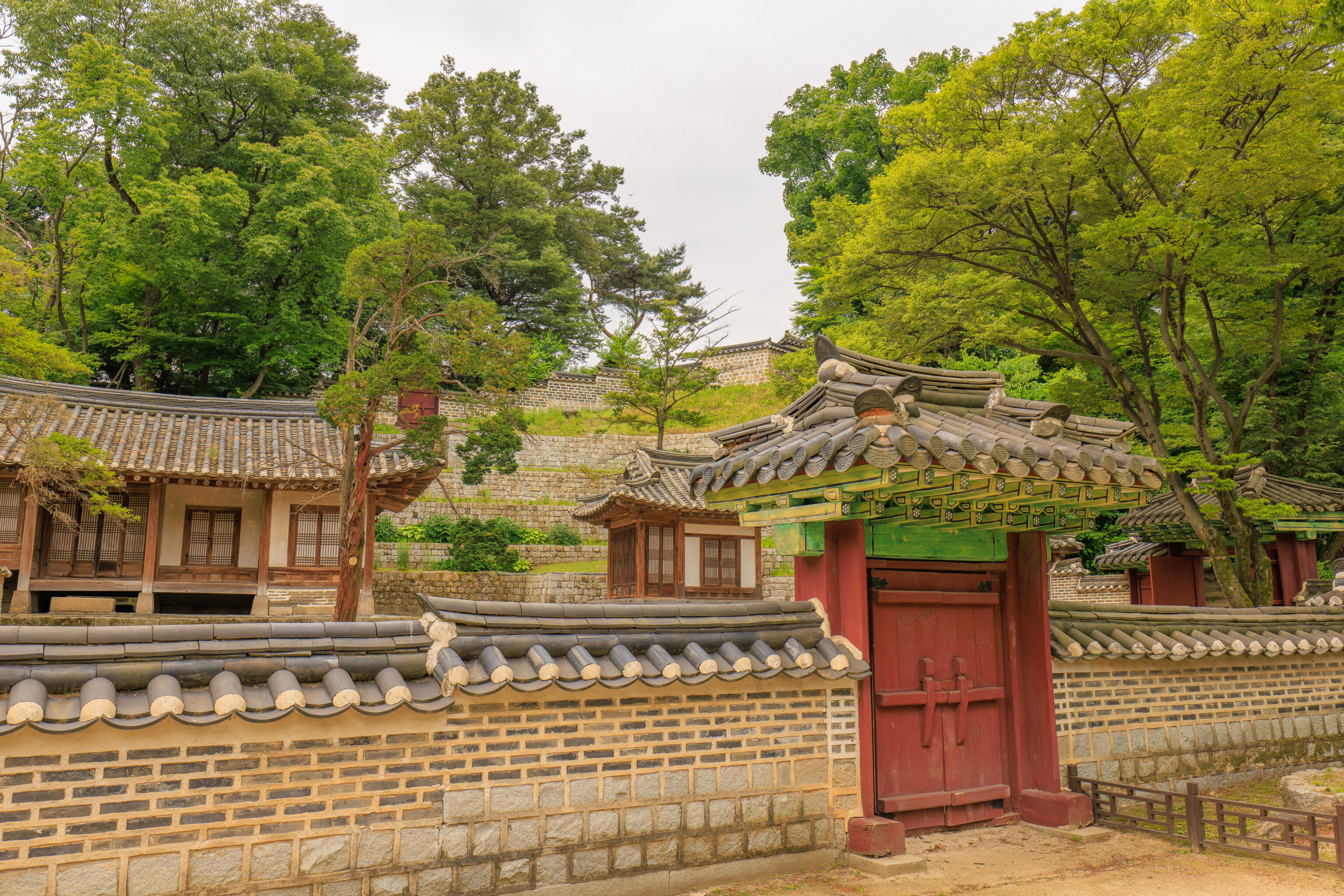
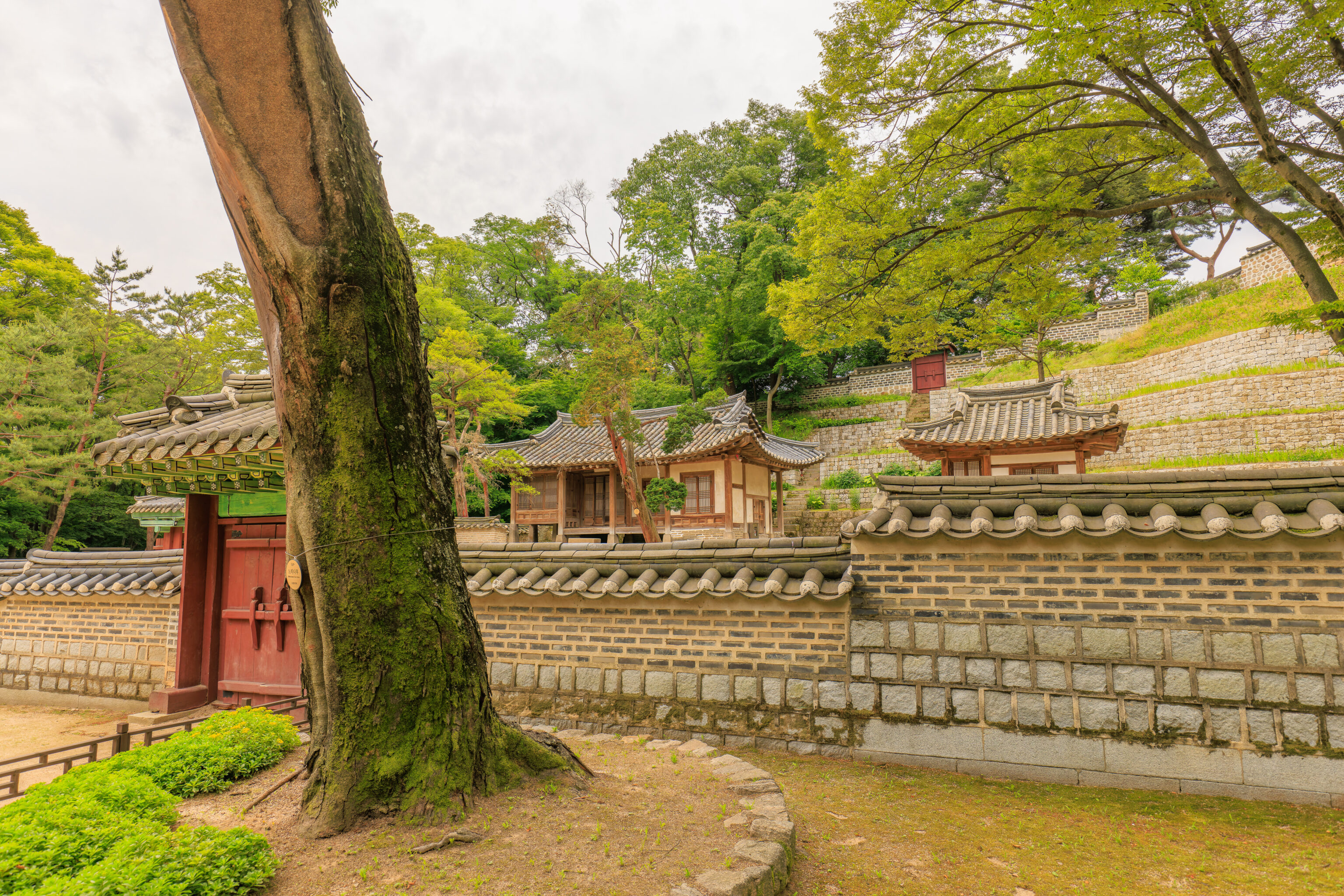
And, there is a closed gate with a small cluster of buildings to the south.
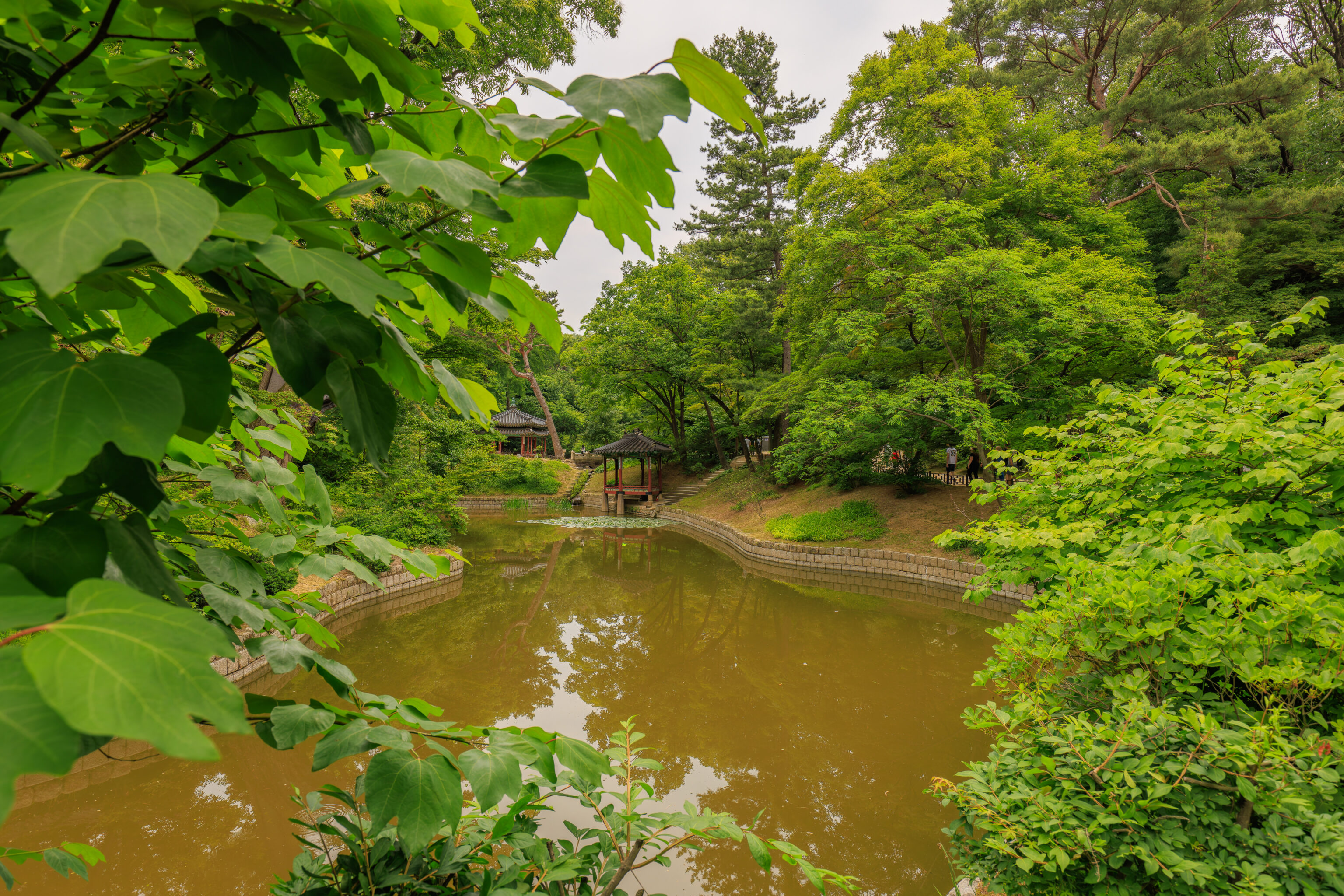
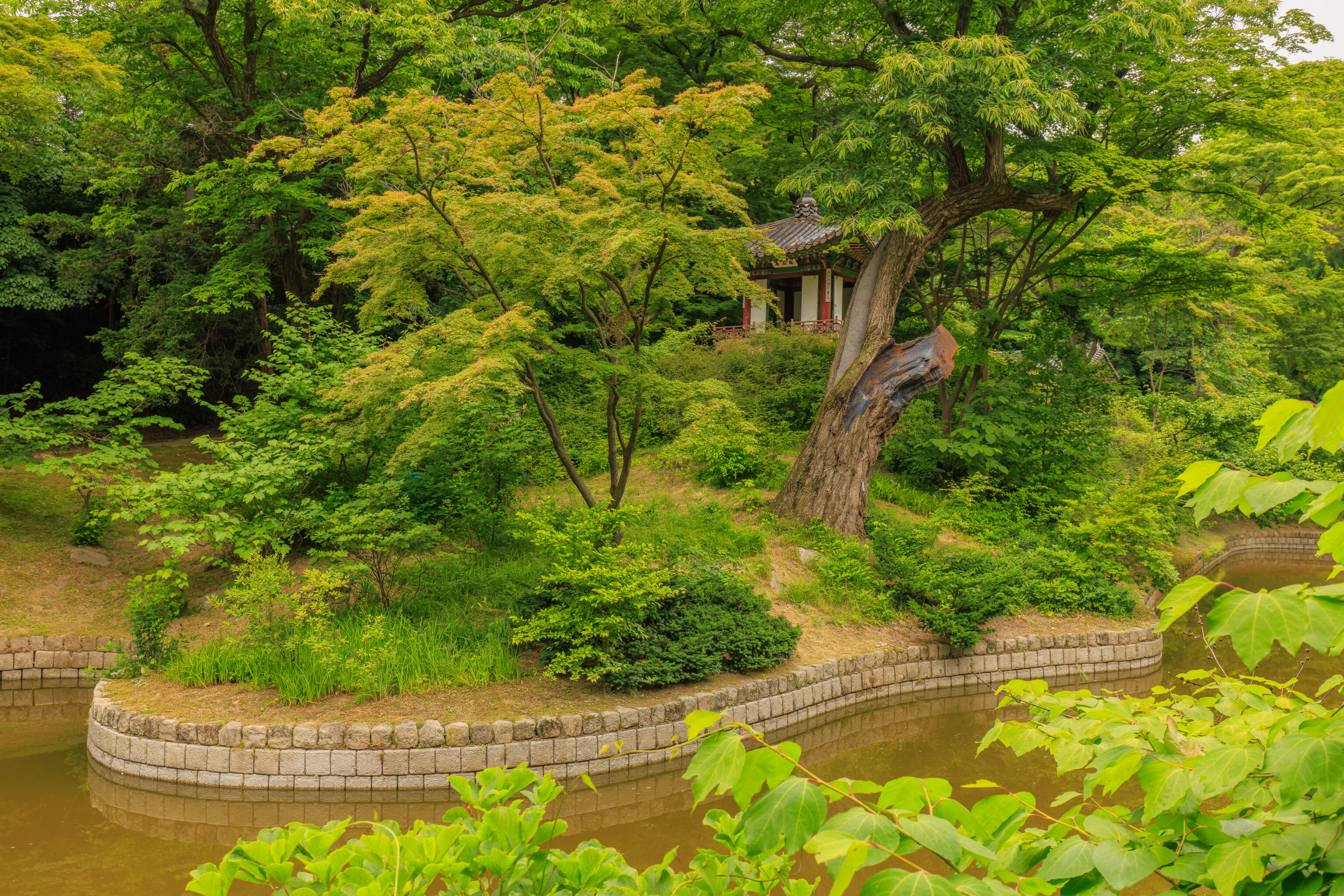
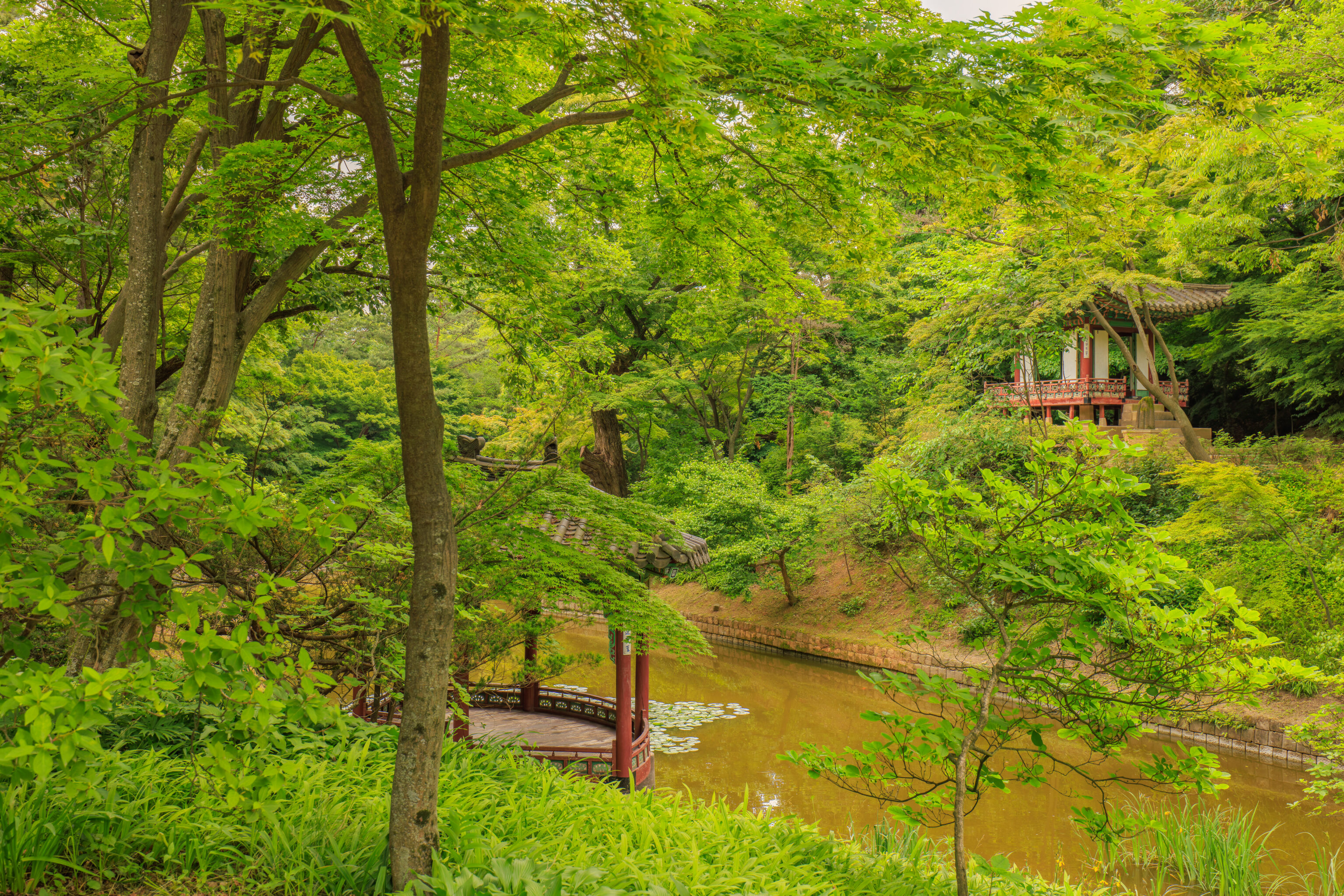
The tour continued on to the north, reaching another pond. Unlike the other ponds we’ve already seen, this one is irregularly shaped and is not an original feature of this garden. A sign describes this area:
Two square ponds and one round pond originally graced this part of the Secret Garden, the section most recently landscaped. However, during the Japanese occupation, they were all combined into one curved pond. Surrounding the pond are pavilions with unique shapes including Jondeokjeong with a two-tiered hexagonal roof, Gwallamjeong with a fan-shaped roof, and Pyeomusa with a gambrel roof. On the hill opposite Gwallamjeong stands Seungjaejeong Pavilion. Gwallamjeong and Seungjaejeong were built after the 1830s, while Jondeokjeong, the oldest of the pavilions, was built in 1644.
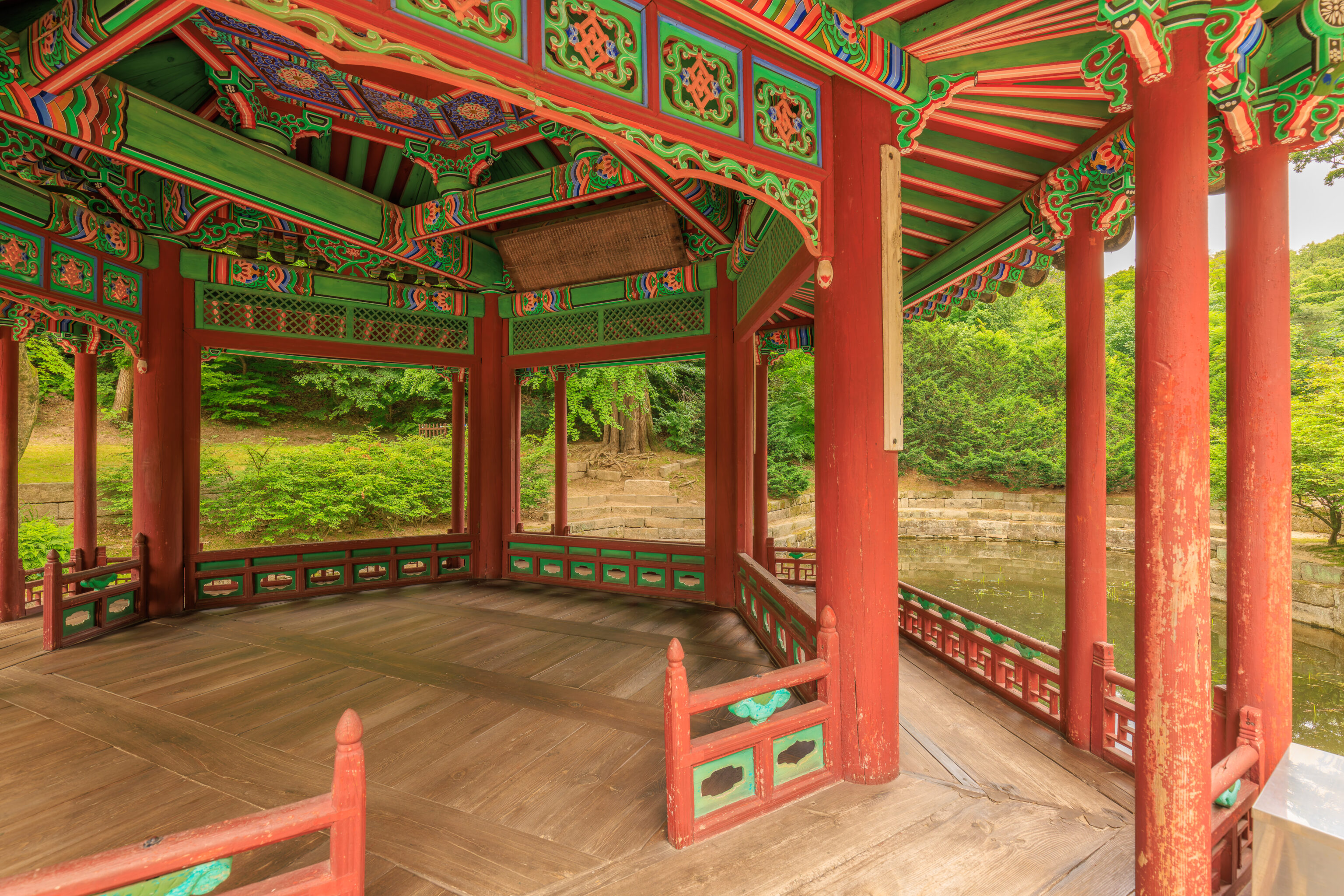
This pavilion, on the west side of the pond, is the 존덕정 Jondeokjeong. A sign describes this pavilion:
On the back lintel of this pavilion hangs a tablet with writings of King Jeongjo dating to 1798. It reads, "All streams of the world have moons reflected on them, but there is only one moon in the sky. The moon in the sky is me, the king, and the streams are you, my subjects, It is the principle of the universe that the streams follow the moon." This seems to express King Jeongjo's yearning for restoration of full royal authority. At the center of the ceiling, are twin dragons with cintamani, symbolic of forthright royal authority
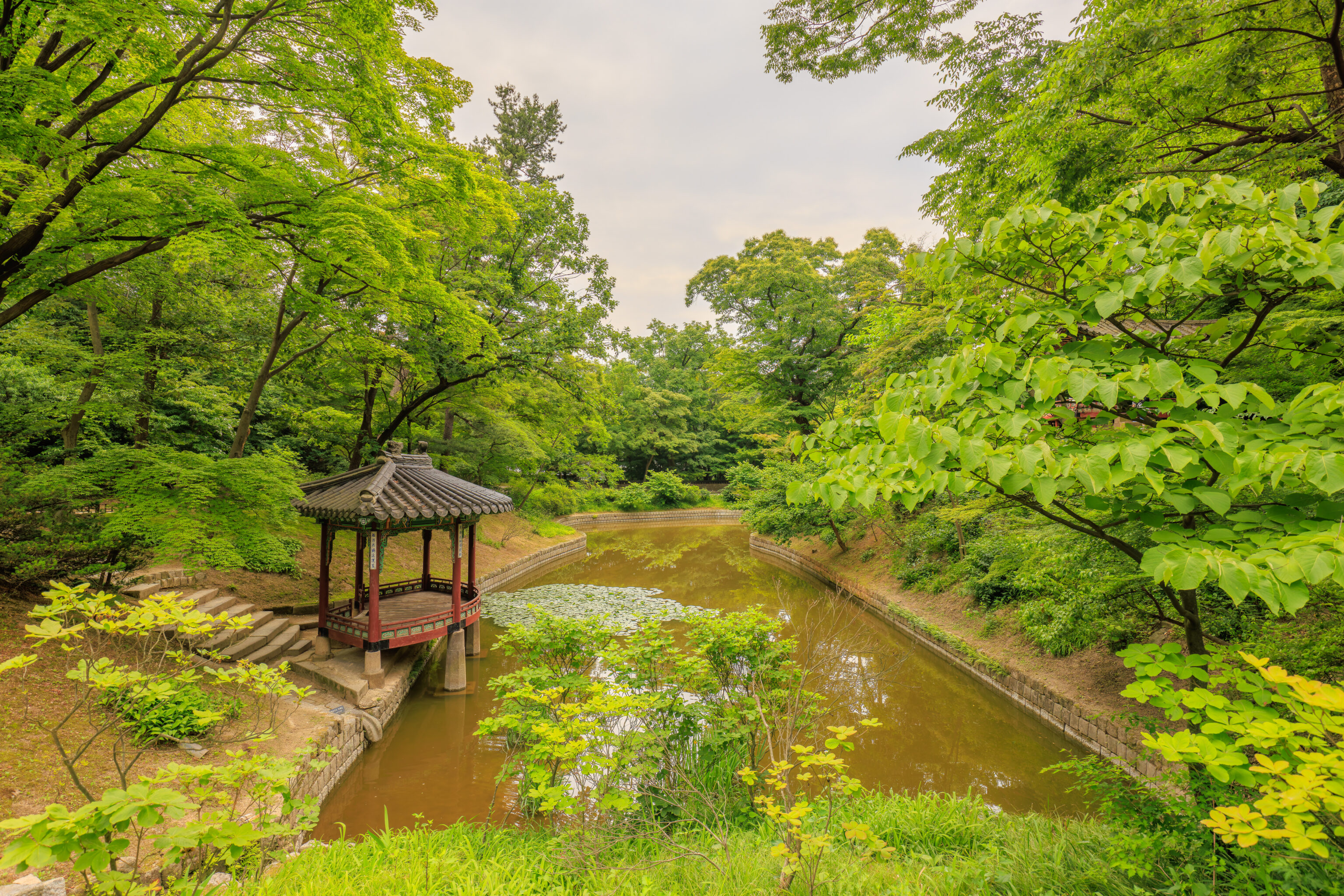
There is a nice view of the pond from around the Jondeokjeong. The small pavilion by the water’s edge is the 관람정 Gwallamjeong.
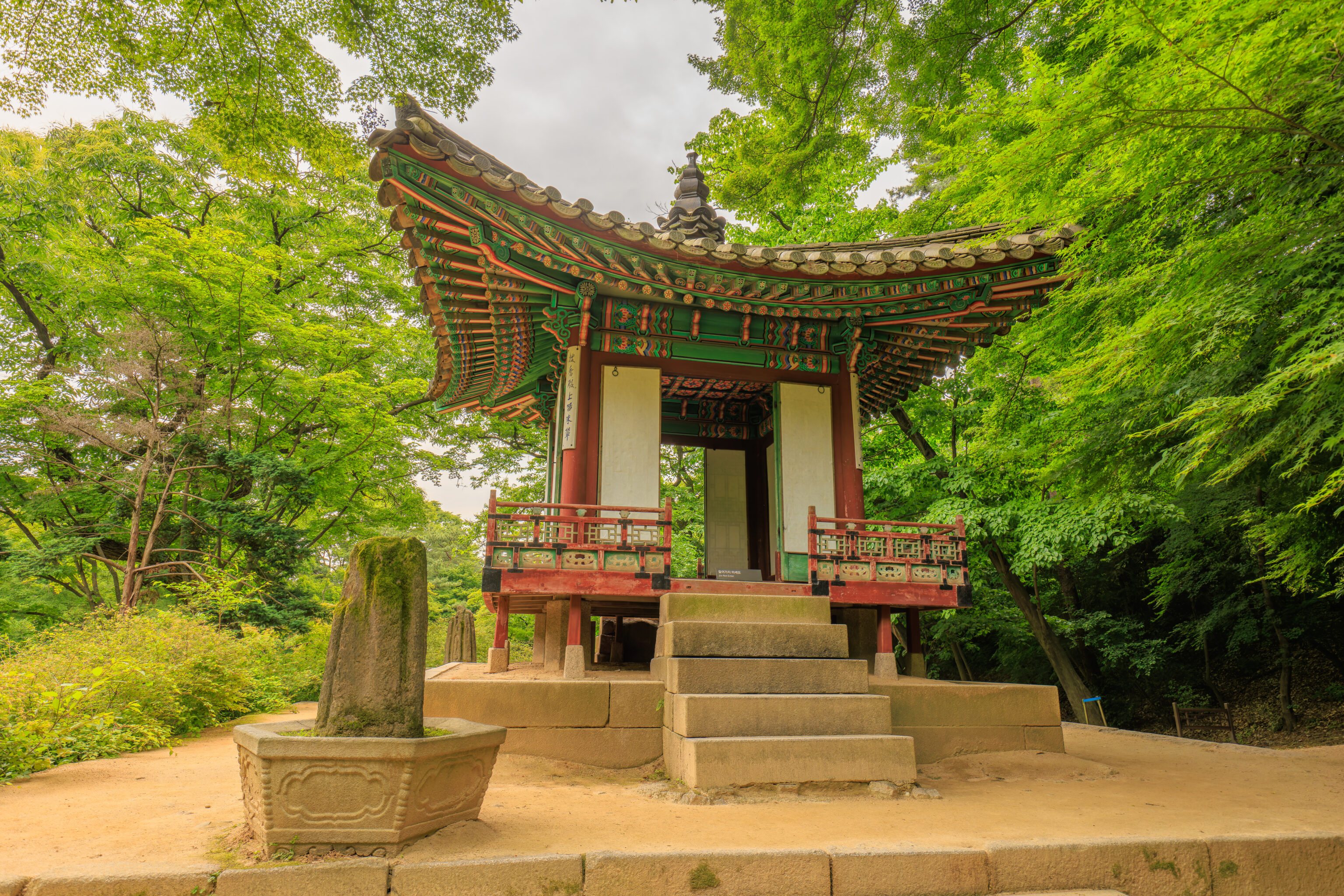
This small pavilion, above the southwestern side of the pond, is the 승재정 Seungjaejeong.
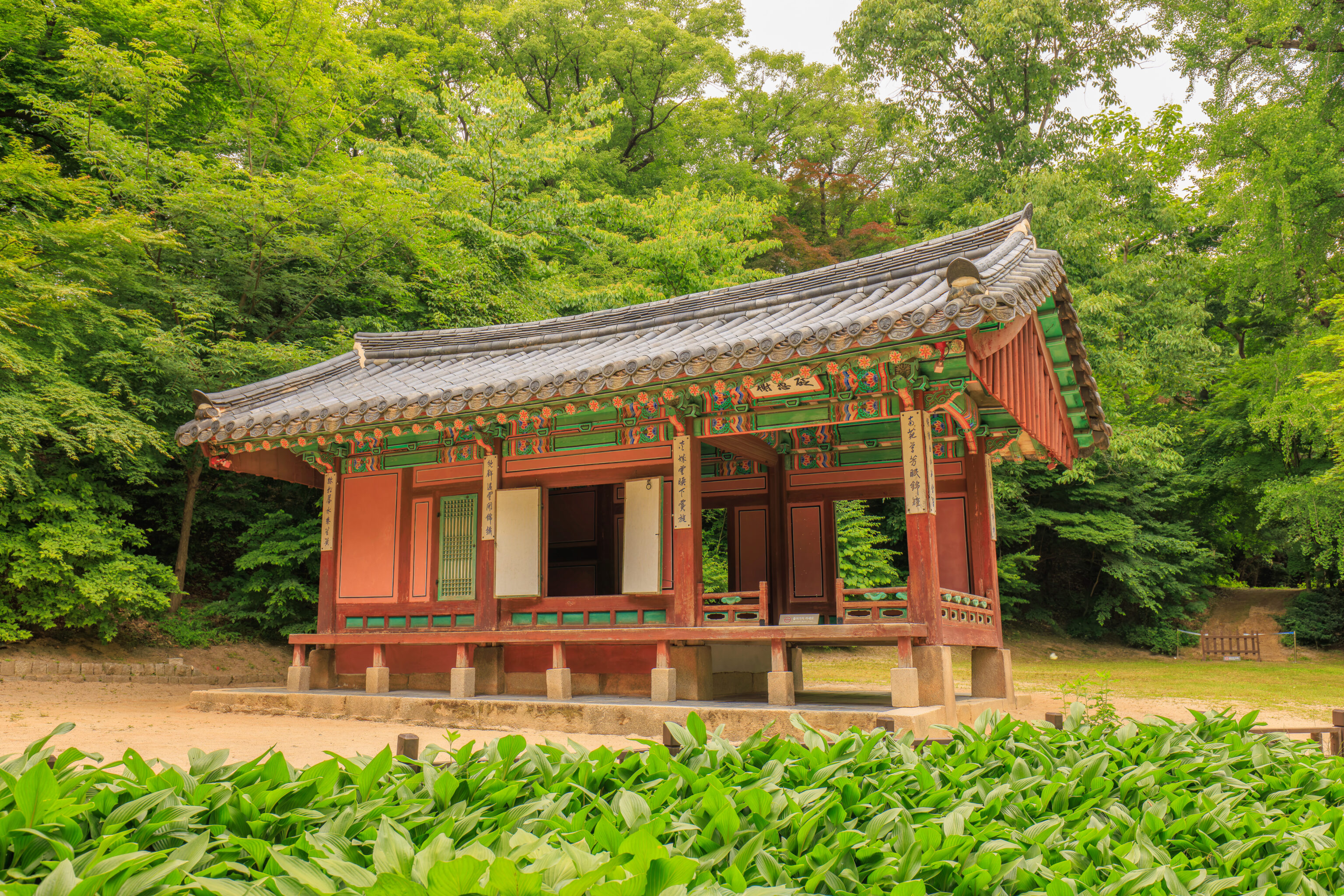
This rectangular building is the 폄우사 Pyeomusa, just to the northwest of the pond.
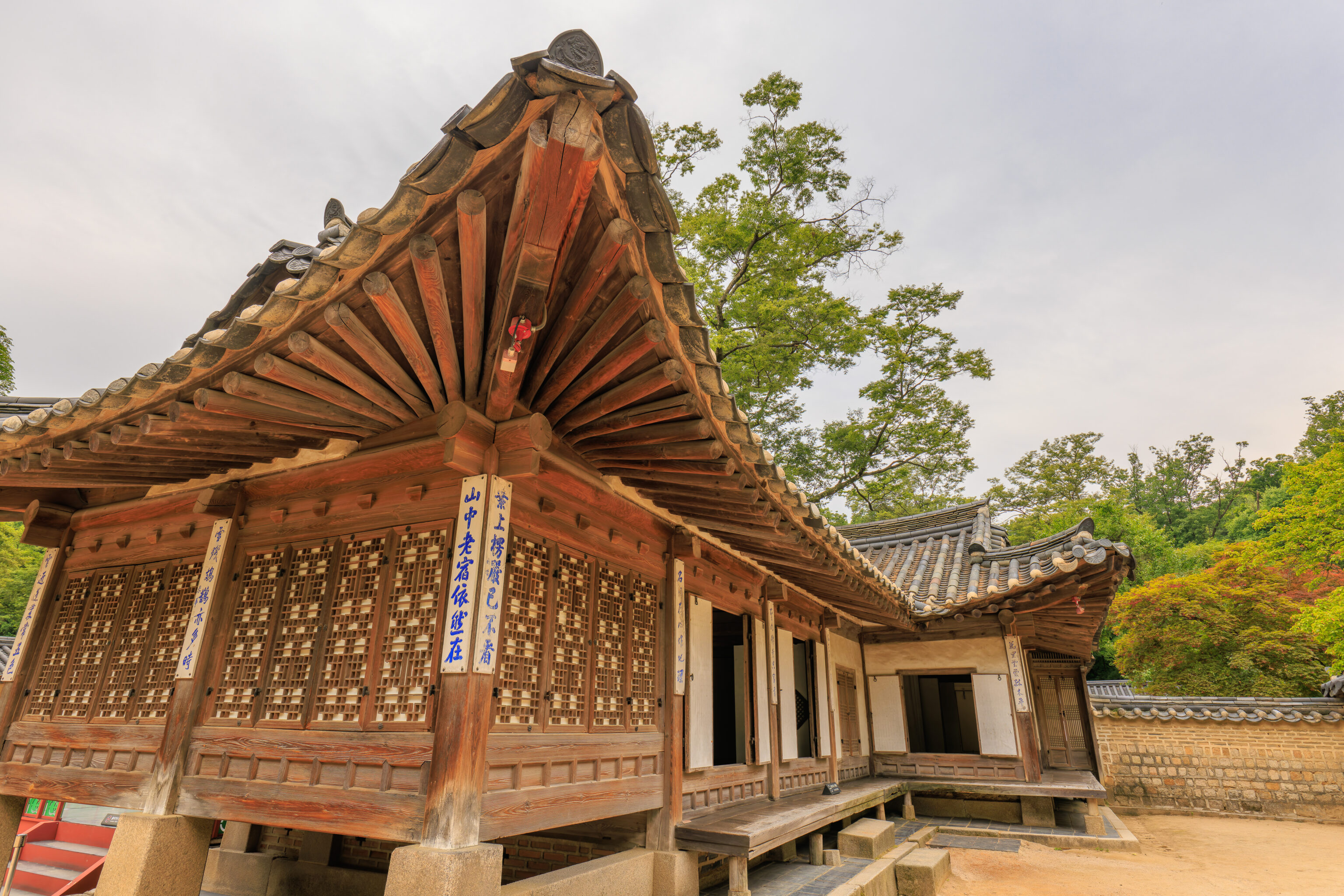
The next area we stopped at was to the south. It consisted of a number of buildings surrounded by a wall.
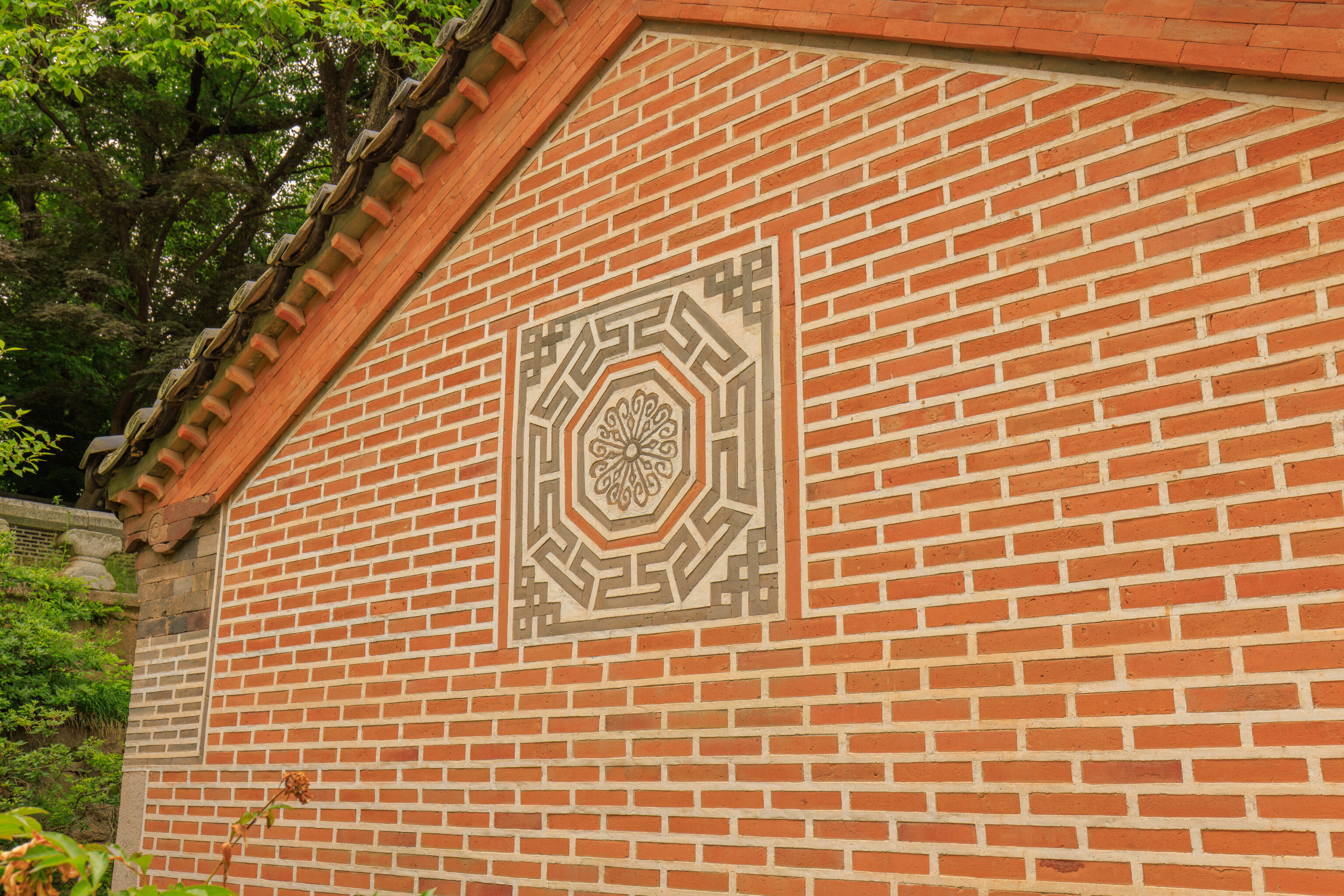
We’ve seen this sort of style on various palace buildings in Seoul.
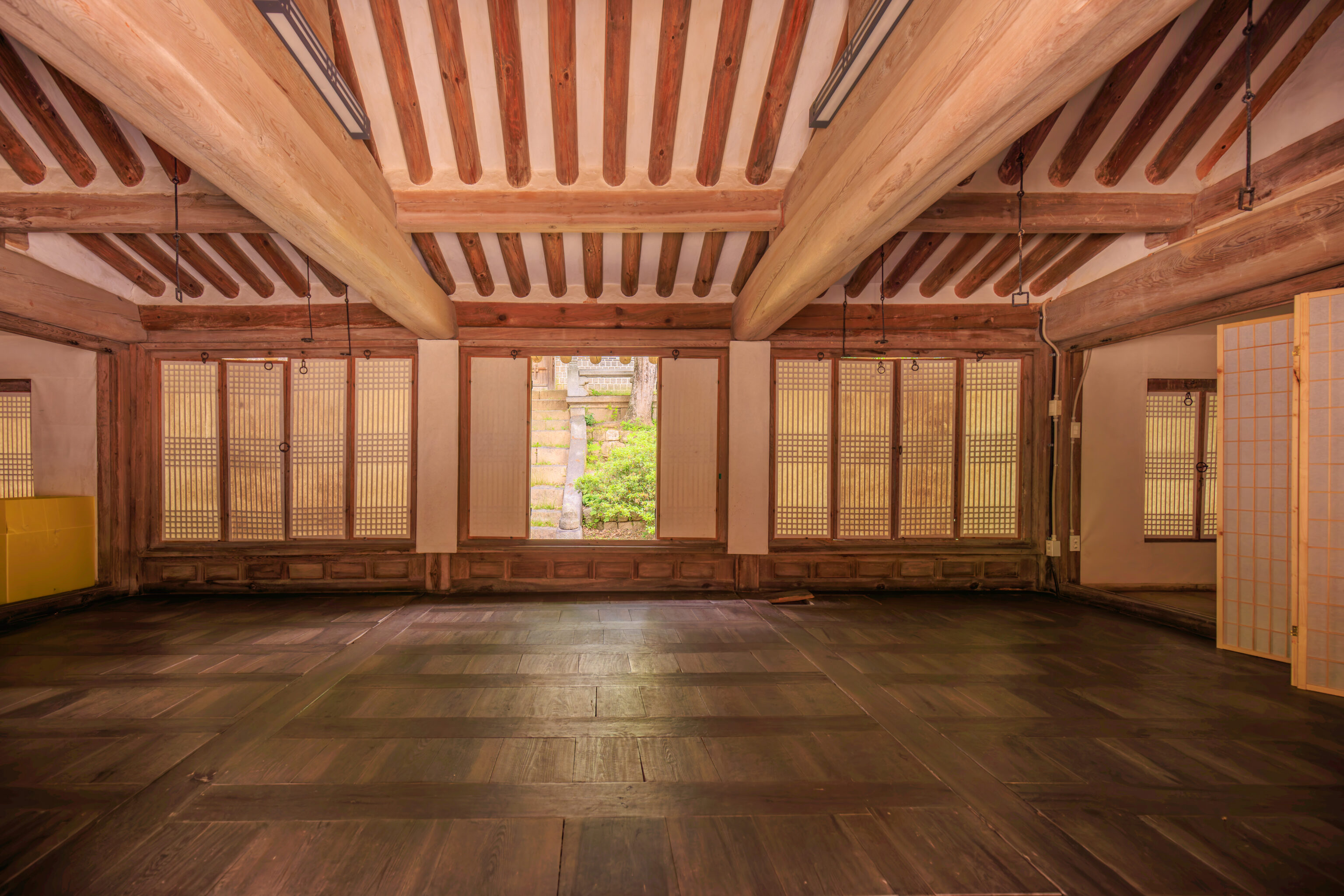
We could look into some of the buildings here.
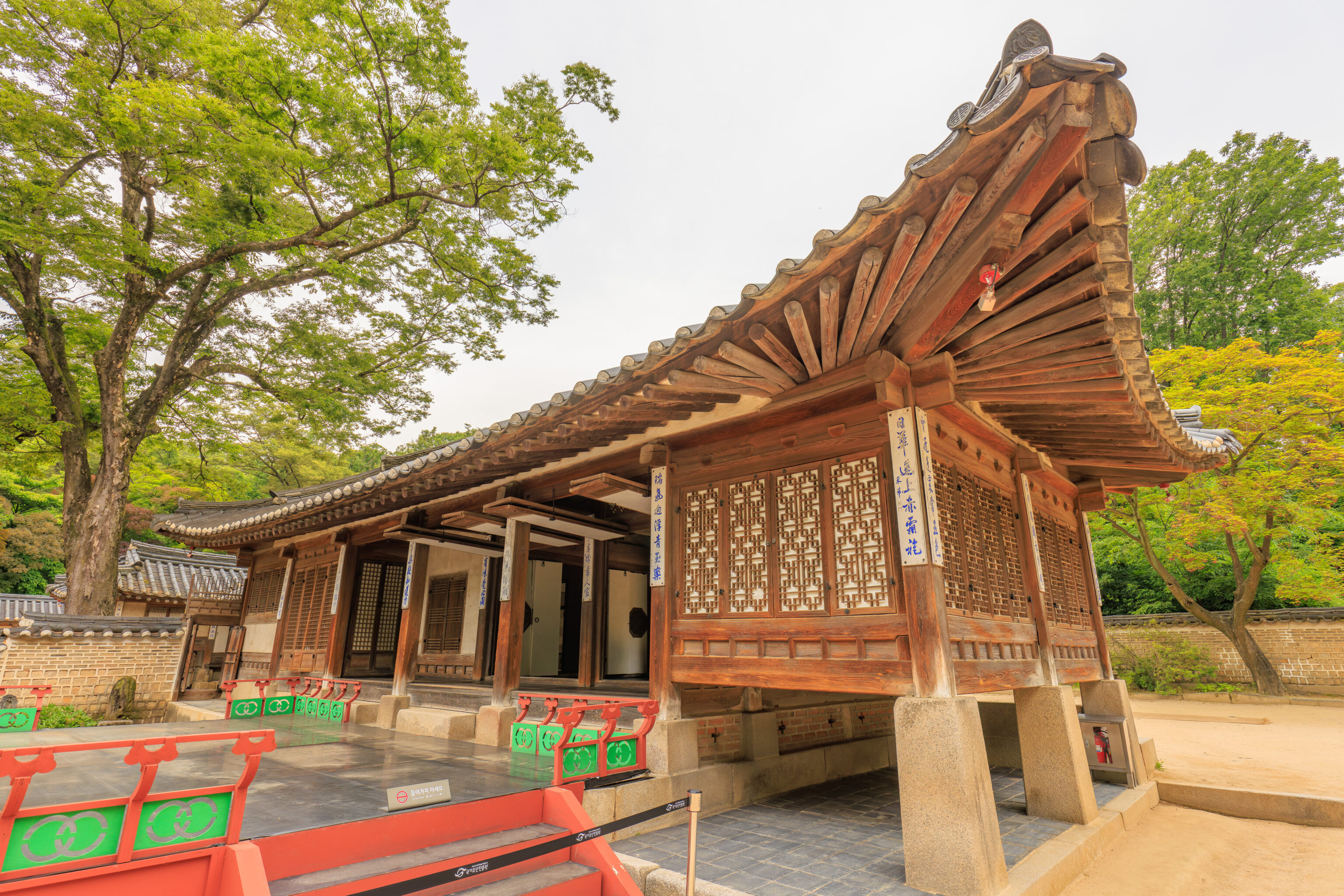
The platform on the left seems a bit out of place.
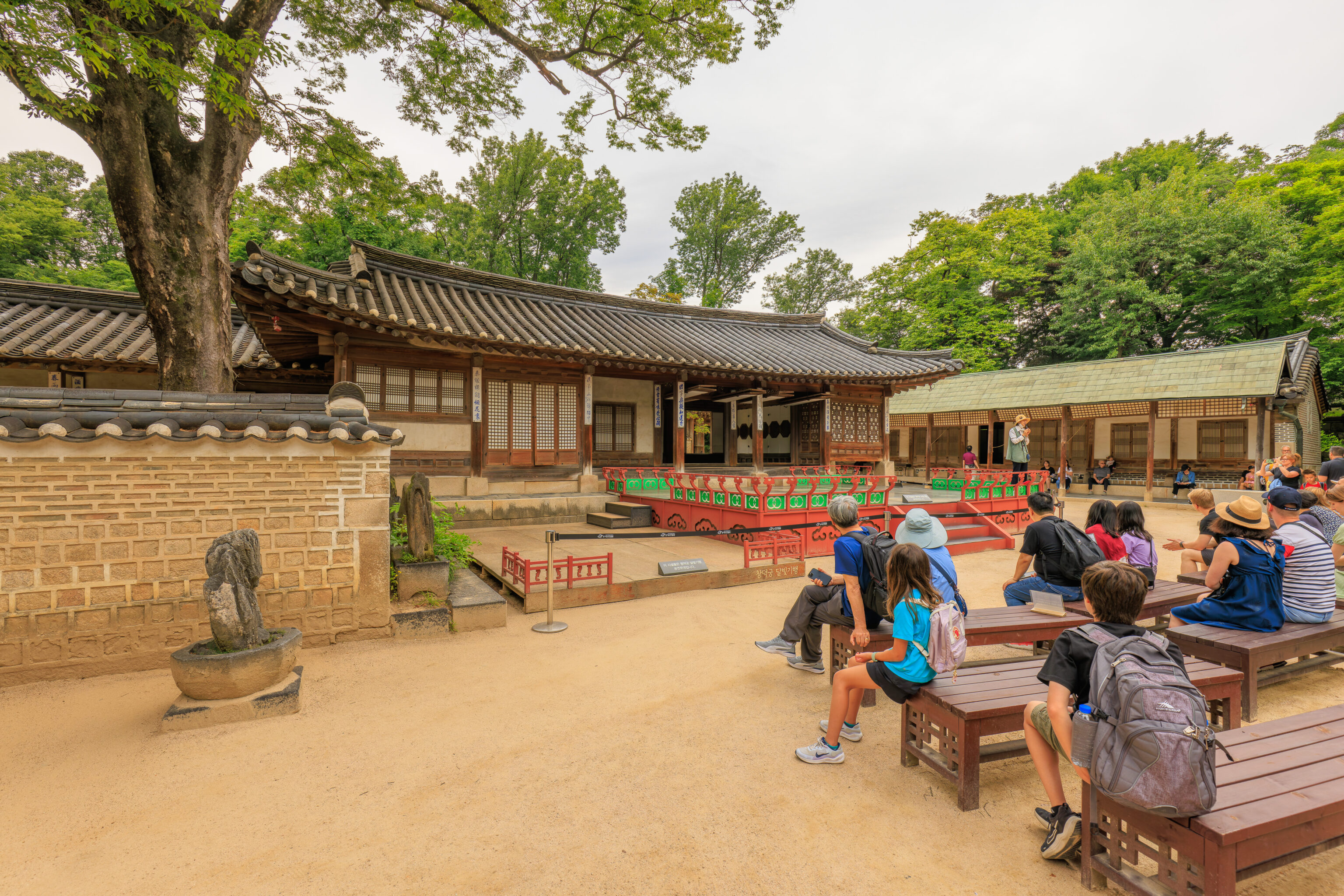
Our tour guide used it as a stage to talk from. This little area is different from all the others we’ve seen as it is supposed to represent something of a commoner’s area. The buildings are not painted like the palace buildings. The way it was described, it seemed like a place that the royalty would go to feel like they were in touch with the common people without actually being near common people.
We found a sign that describes this place:
Crown Prince Hyomyeong (1809-1830) constructed the Yeongyeongdang Residence in 1828 to hold the Jinjakrye ceremony for his father, King Sunjo. Court officials presented wine and food to the king and queen during this ceremony, which the crown prince held to strengthen royal authority. This structure is different from the original; in 1865, King Gojong built Yeongyeongdang as we see it today. The king's quarters and queen's quarters were modeled after the houses of the Joseon literati. Seonhyangjae, a study, contains Chinese-style side walls and Western-style blinds.
The sign describes the commoners as literati, so, they would have been educated people rather than farmers and such.
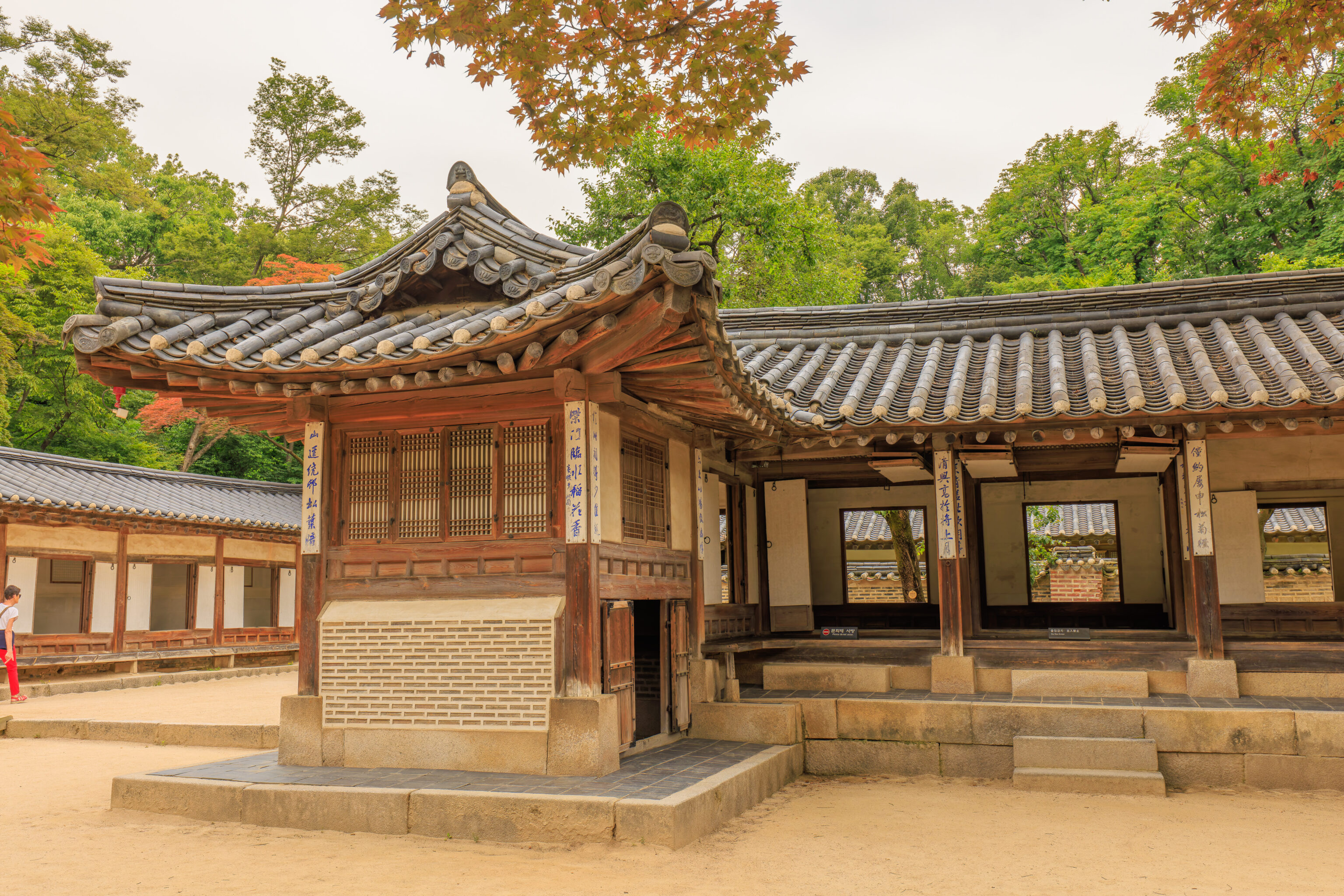
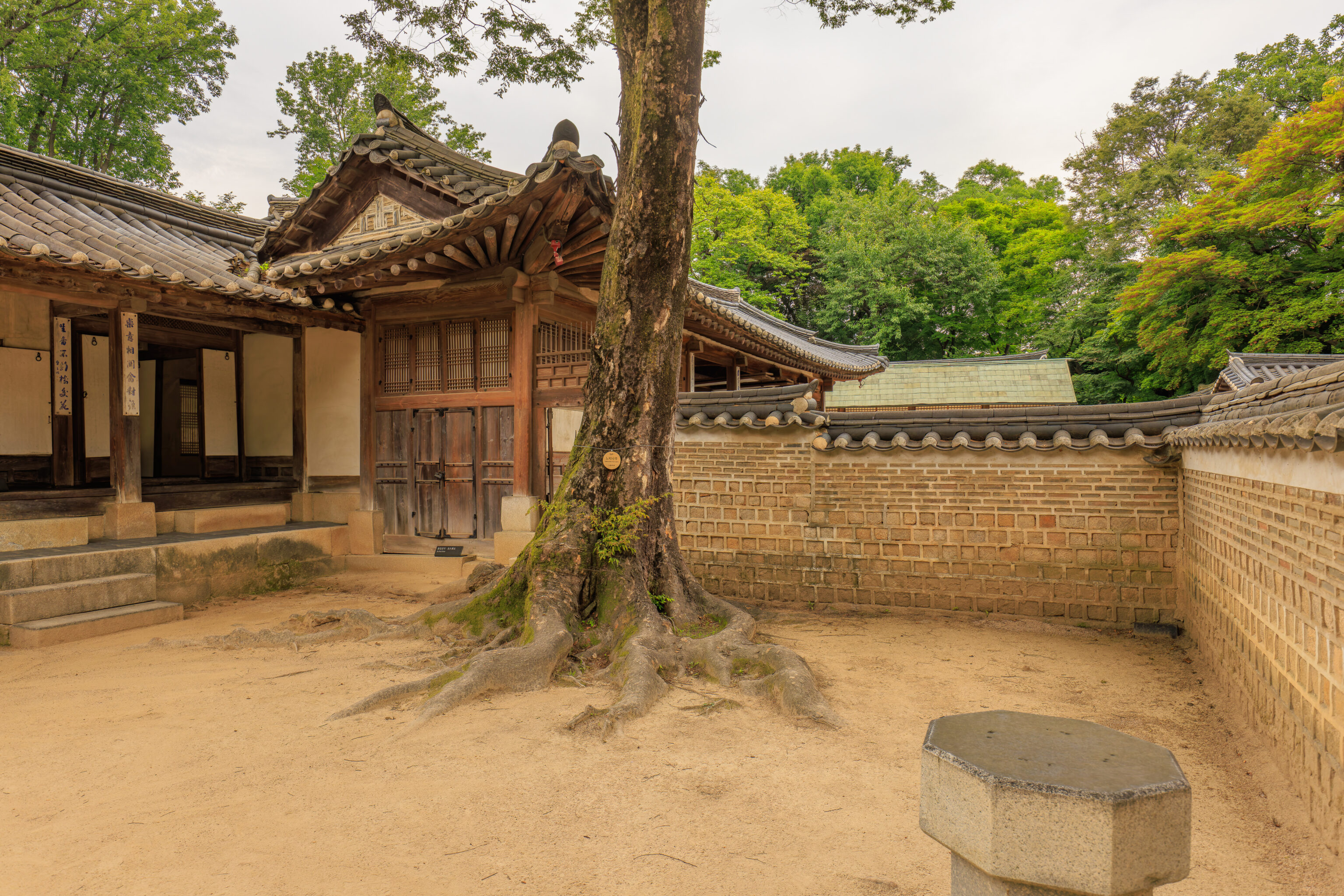
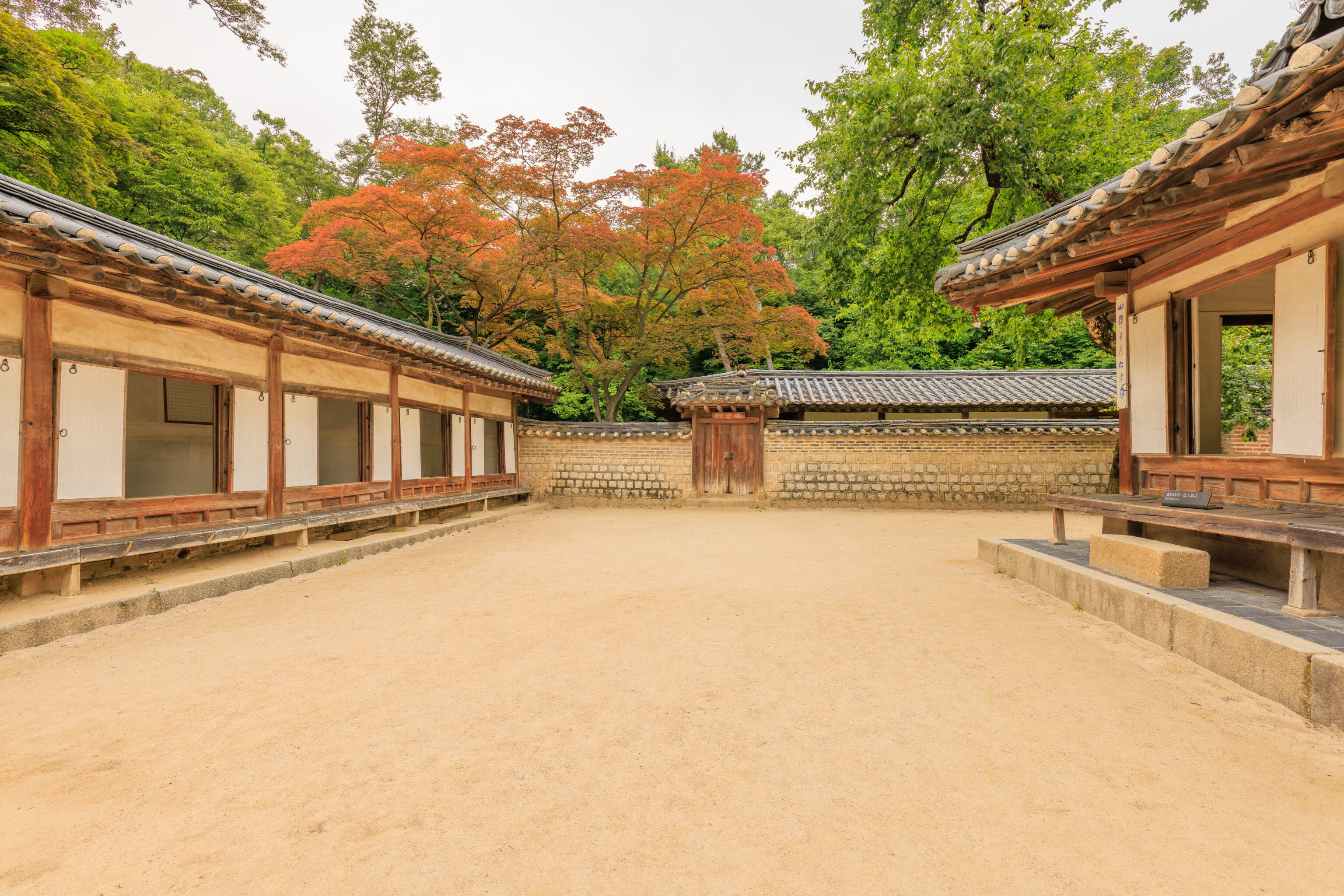
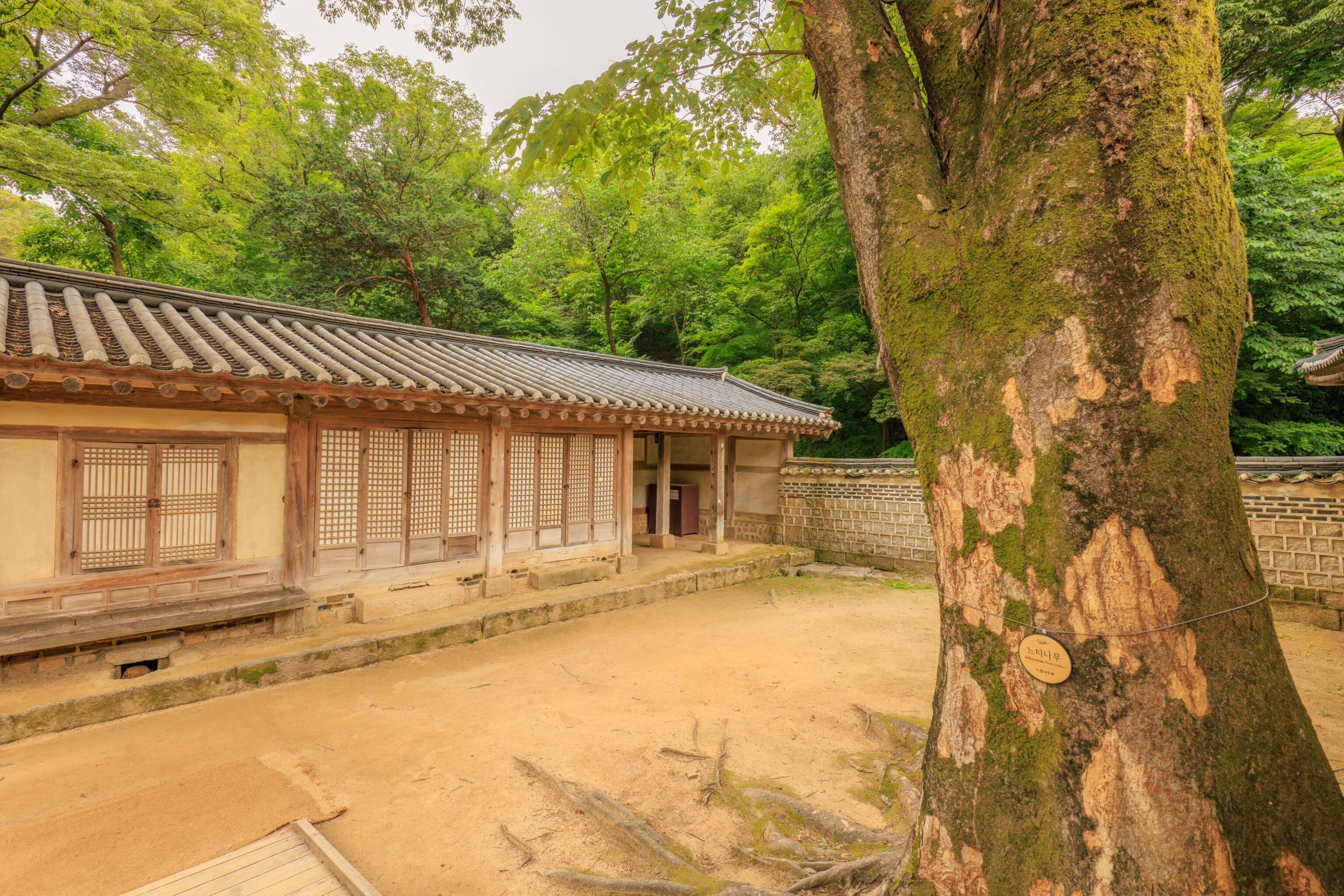
We walked around the area a bit. The buildings look more or less like the royal ones, other than the lack of paint.
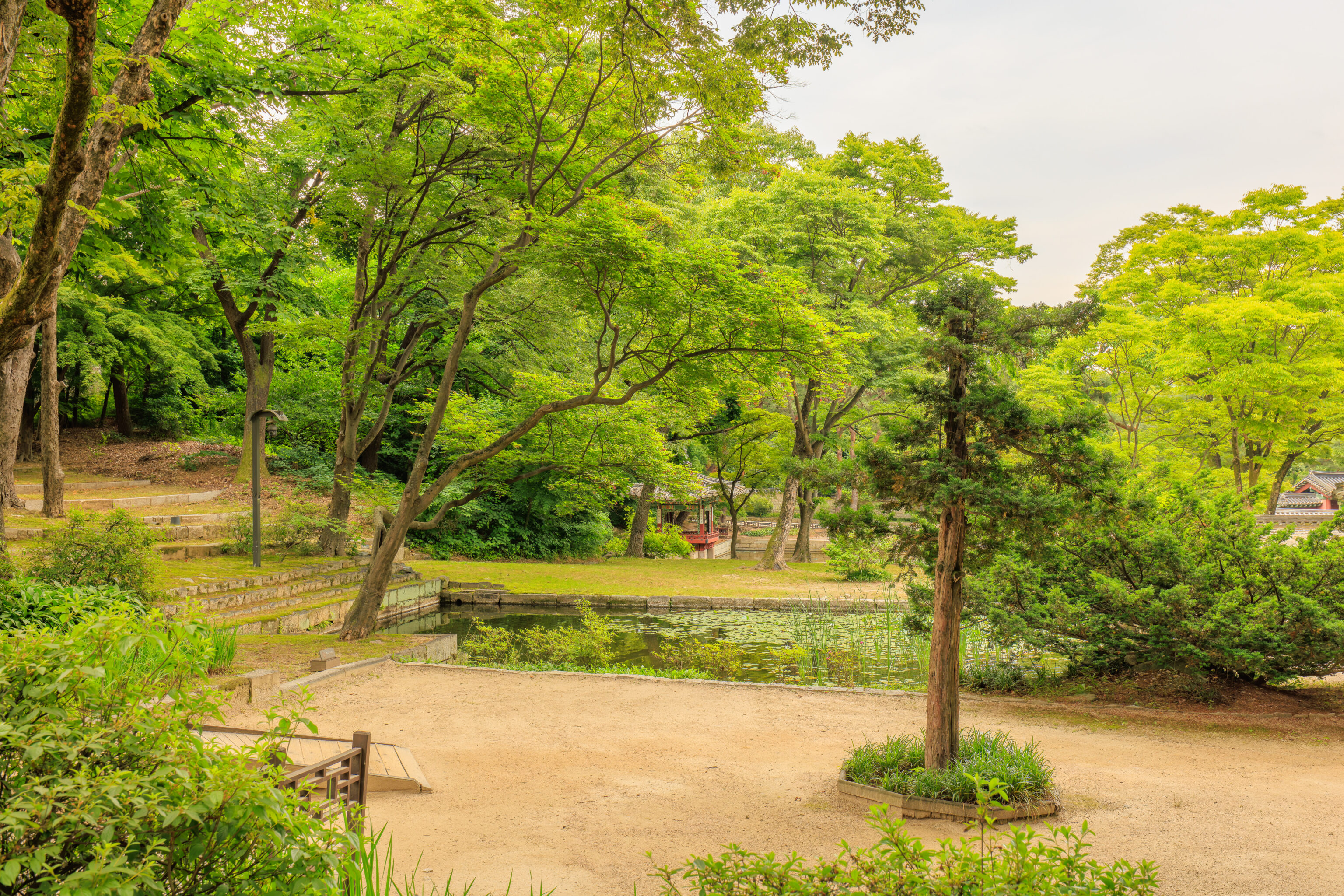
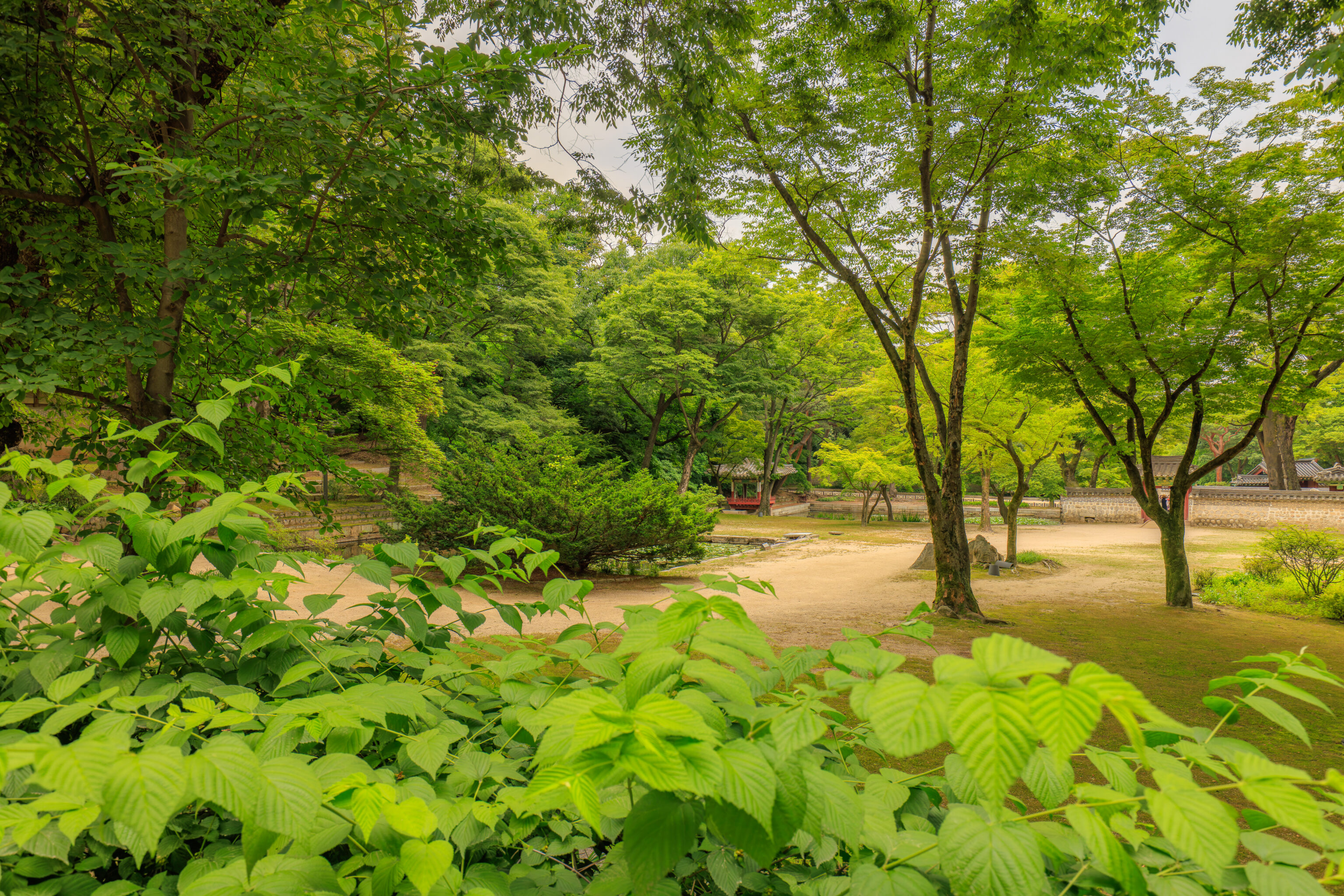
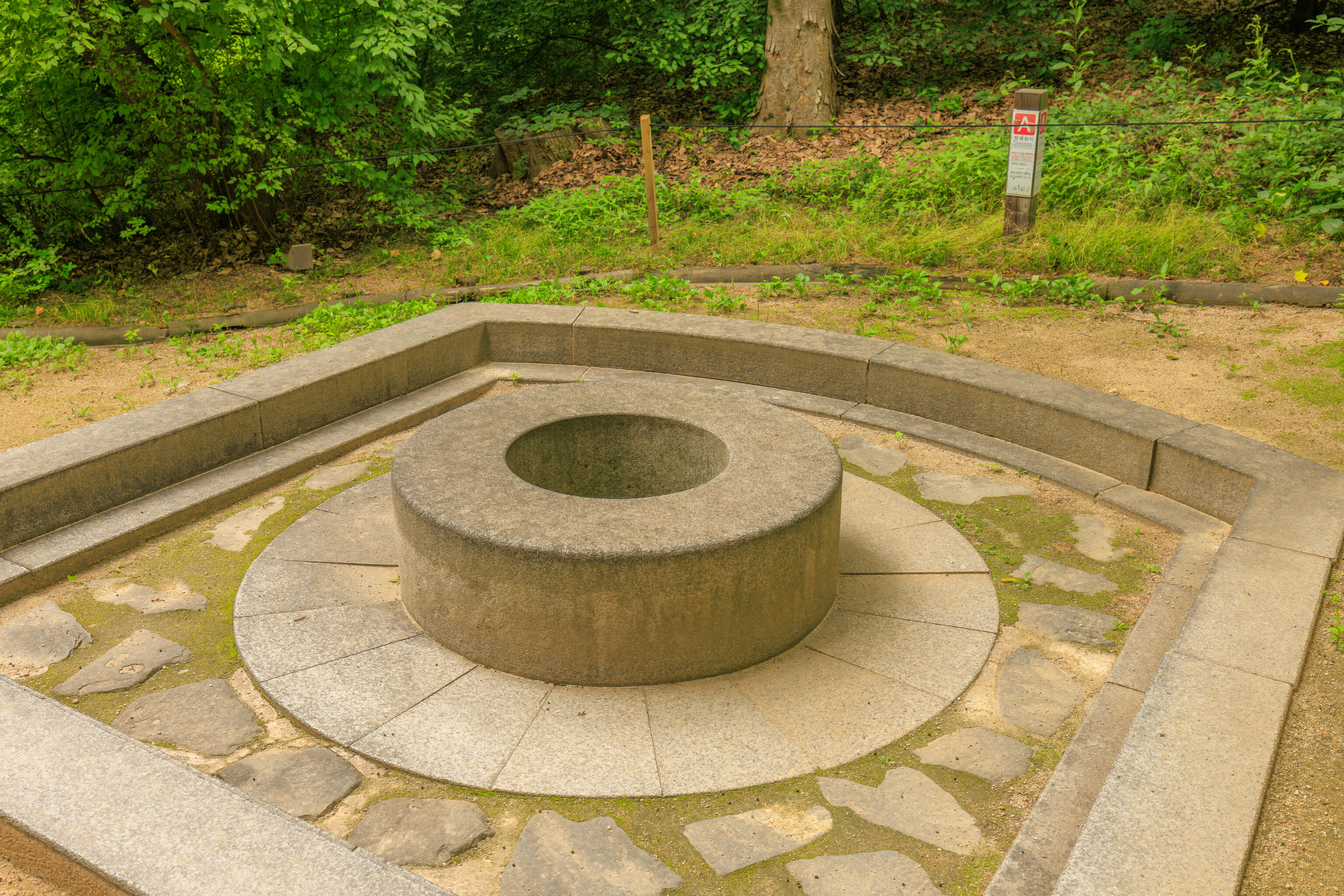
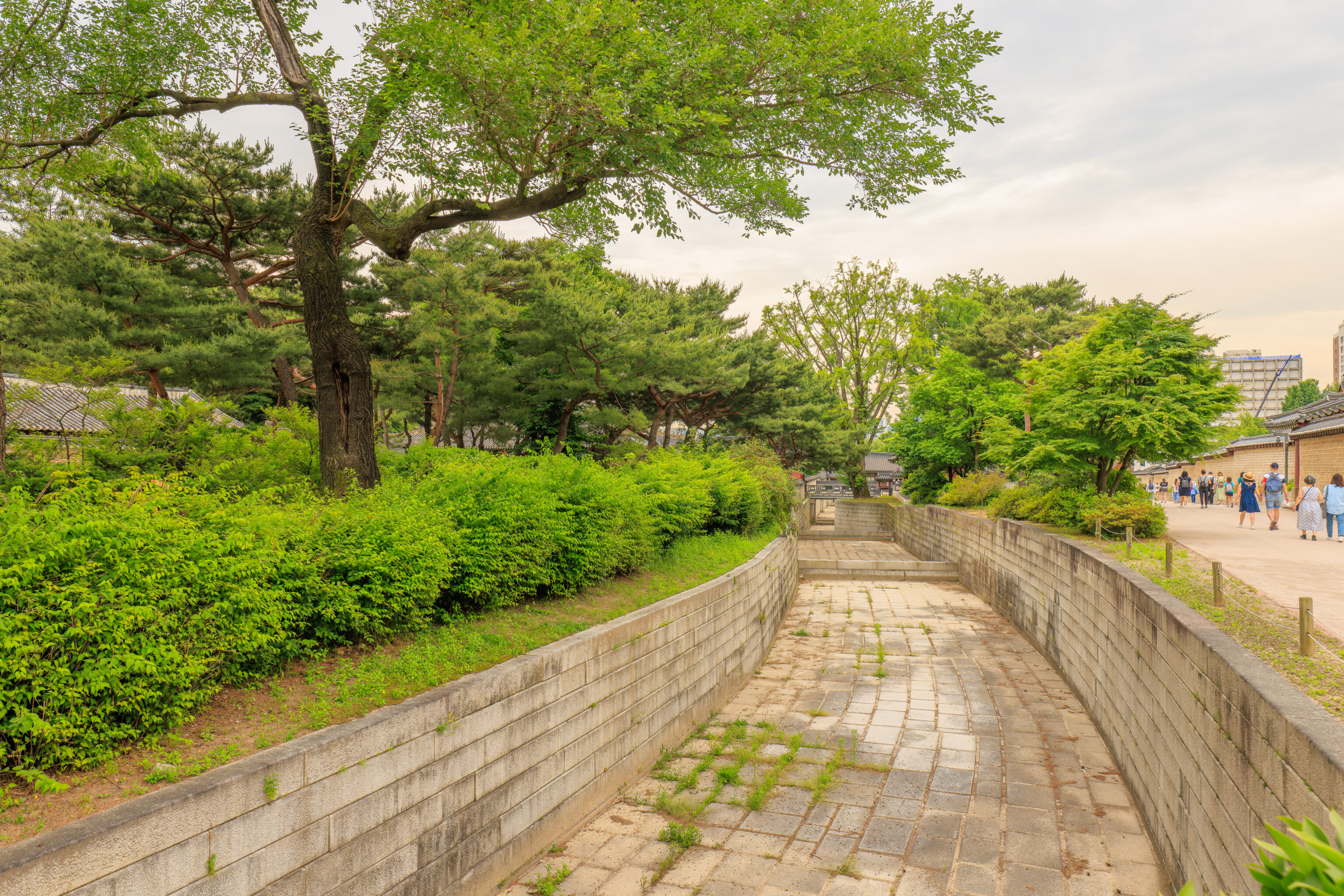
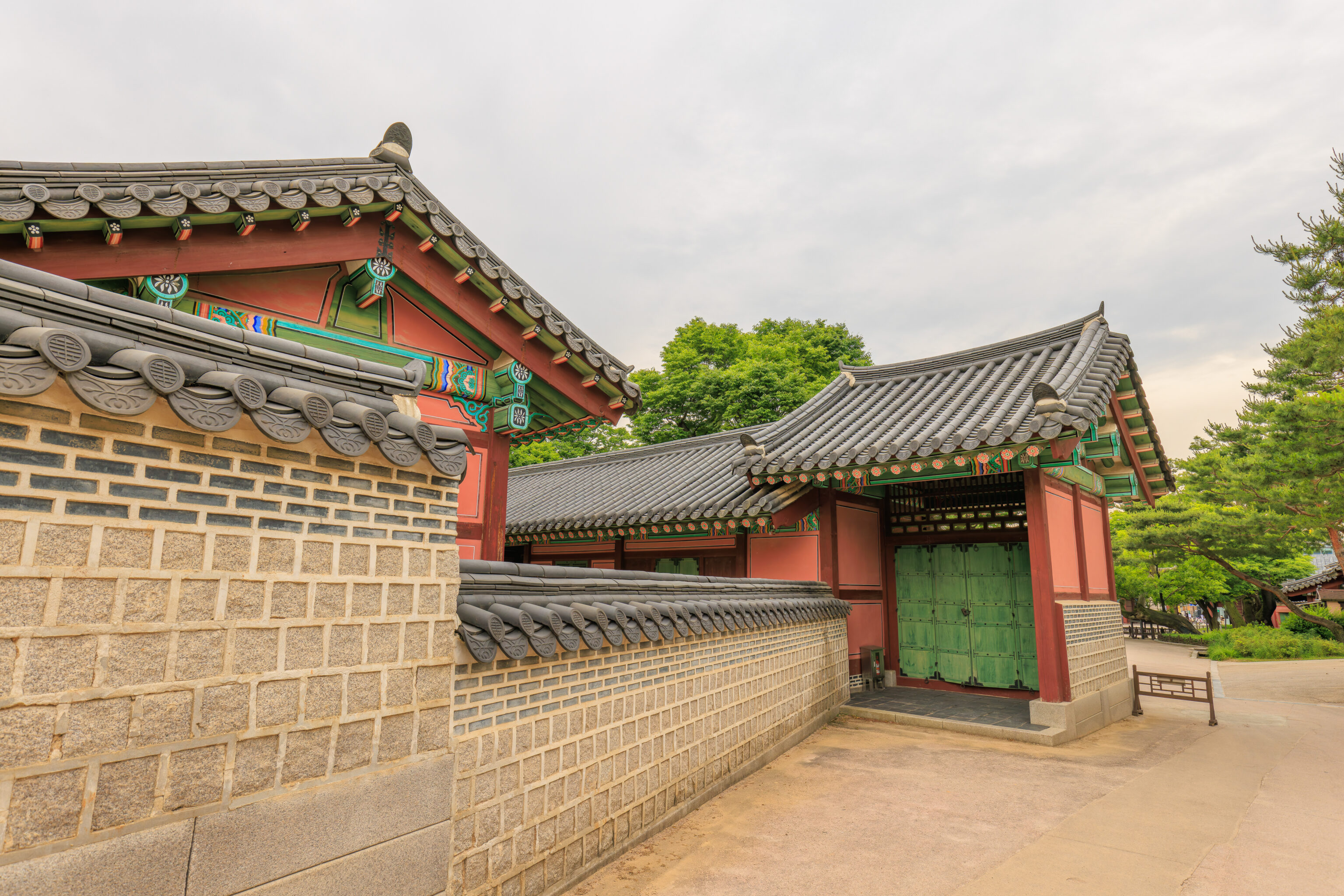
We walked to the southwest for awhile before reaching the end of the Secret Garden tour route. It ends just to the north of the Donhwamun, the gate where we initially entered earlier in the morning.
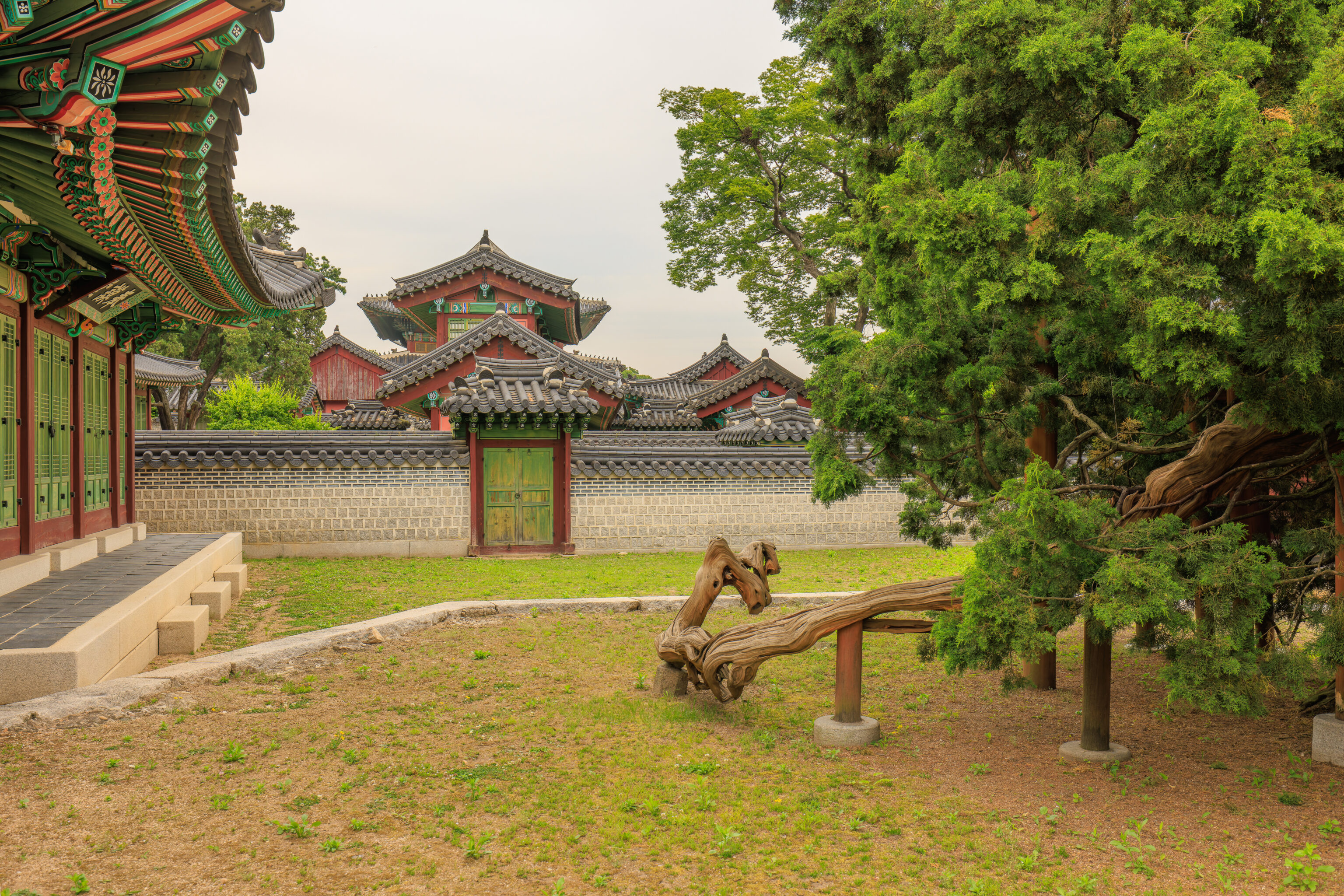
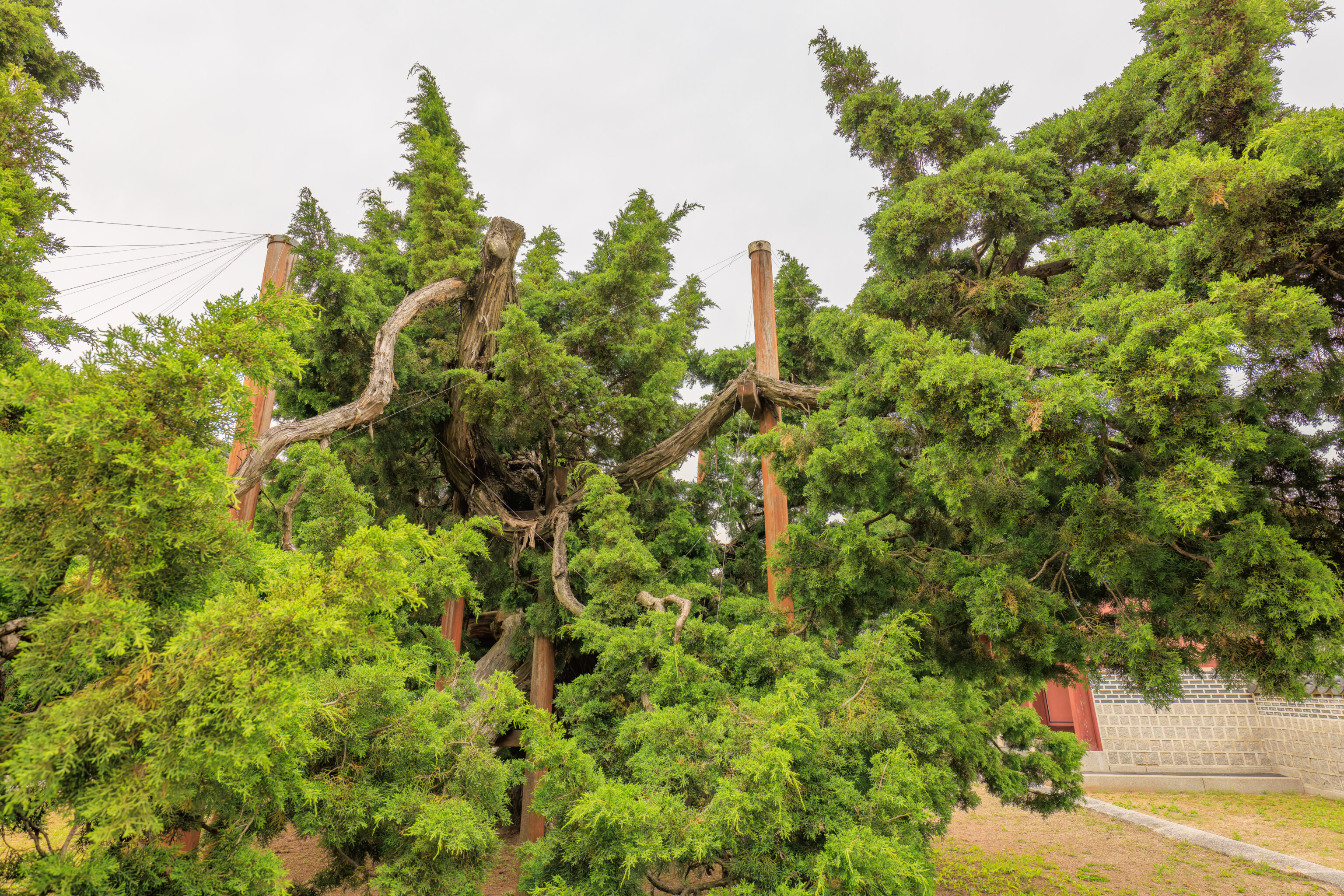
This very old tree near the end of the route is notable as it has a sign:
This Chinese juniper is believed to be 750 years old. It is 12m in height and 5.9m in circumference at the widest part of its trunk, Juniper wood is highly aromatic and is used to make incense for rituals, It is assumed that this tree was related to the ancestral rituals held at Seonwonjeon Shrine to the east, where portraits of former kings were enshrined. This tree is depicted in Donggwoldo (Painting of the Eastern Palaces), which dates to around the 1830s.
The Other Buildings of Changdeokgung
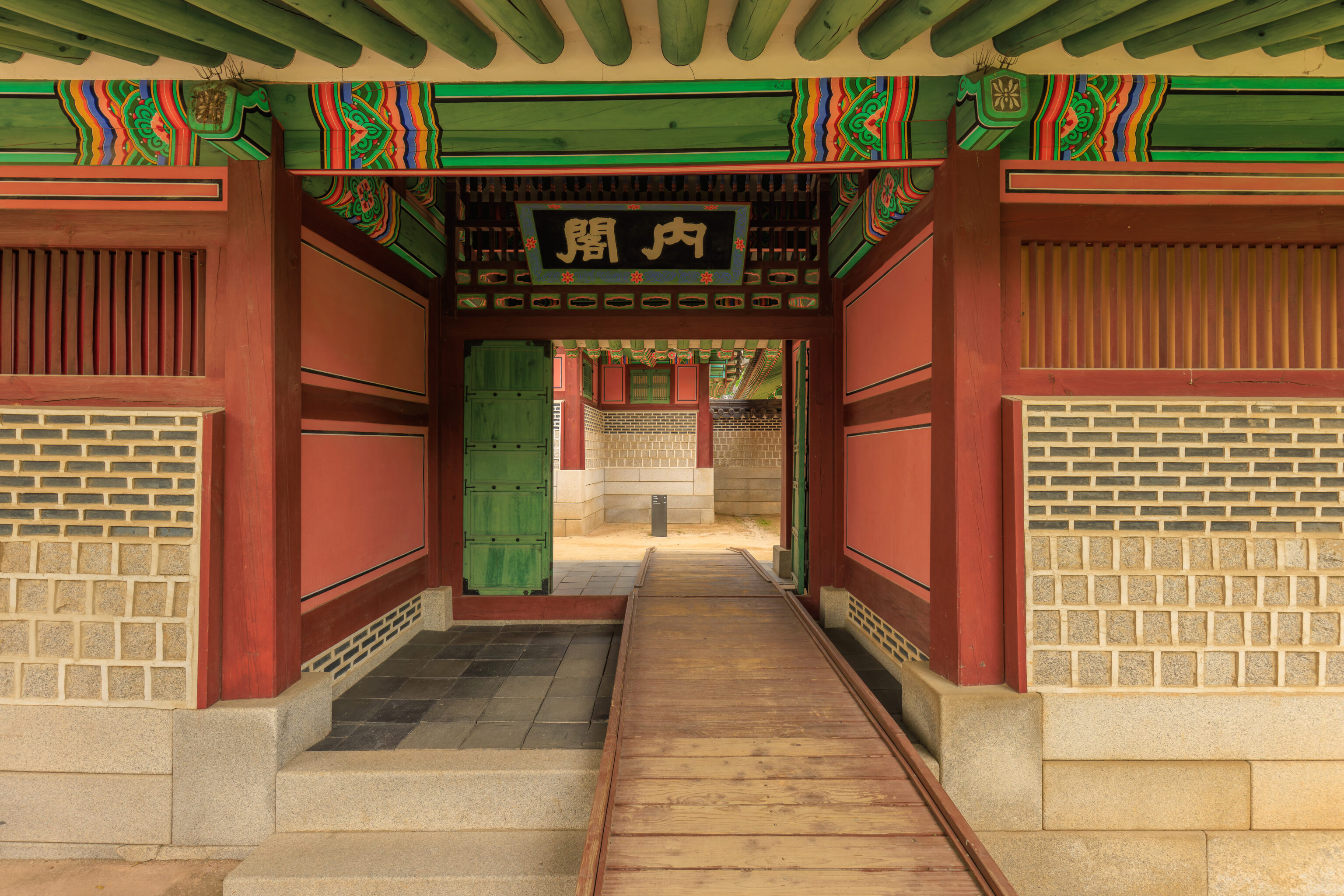
The tour ended around 11:40am, taking a bit more than an hour. We decided to walk through the rest of the palace grounds, visiting the buildings that we did not see earlier.
A sign describes this area, Gwolnaegaksa, to the north of the Donhwamun:
Government offices closely related to the royal family's affairs were built within a palace grounds and collectively known as Gwolnaegaksa. Main facilities were the Royal Counsel Committee Bureau, the Royal Pharmacy, a Library, and the Office of Regal Decrees. All of the buildings in this area were destroyed during the Japanese occupation and were rebuilt in 2004. Geumcheon Stream, flowing through the middle of the grounds, served as a dividing line and a key element of the landscape. Because many offices were located in such a small area, Gwolnaegaksa resembled a labyrinth.
The stream mentioned on the sign, the Geumcheon, is the one we saw at the beginning of our visit near the Donhwamun.
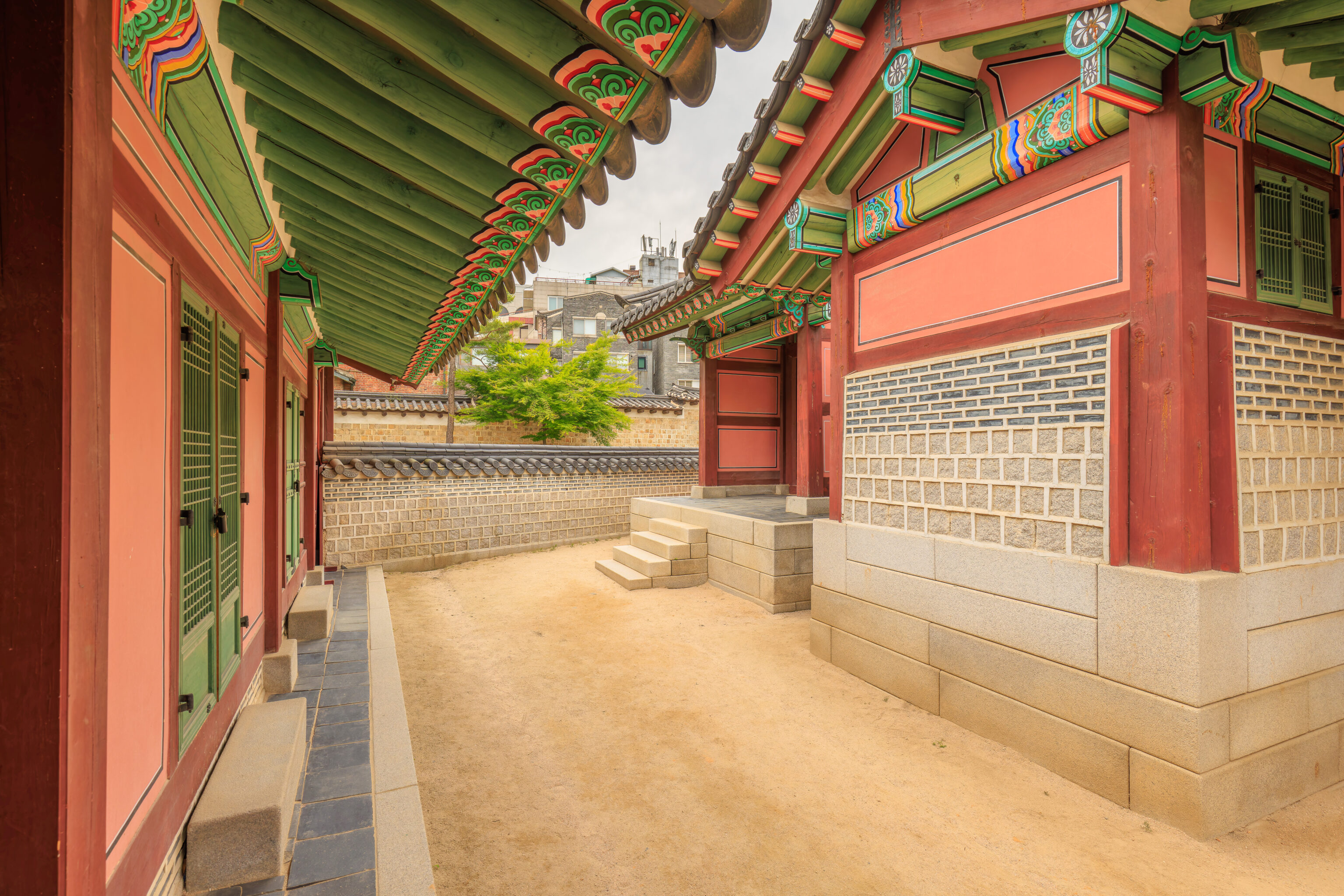
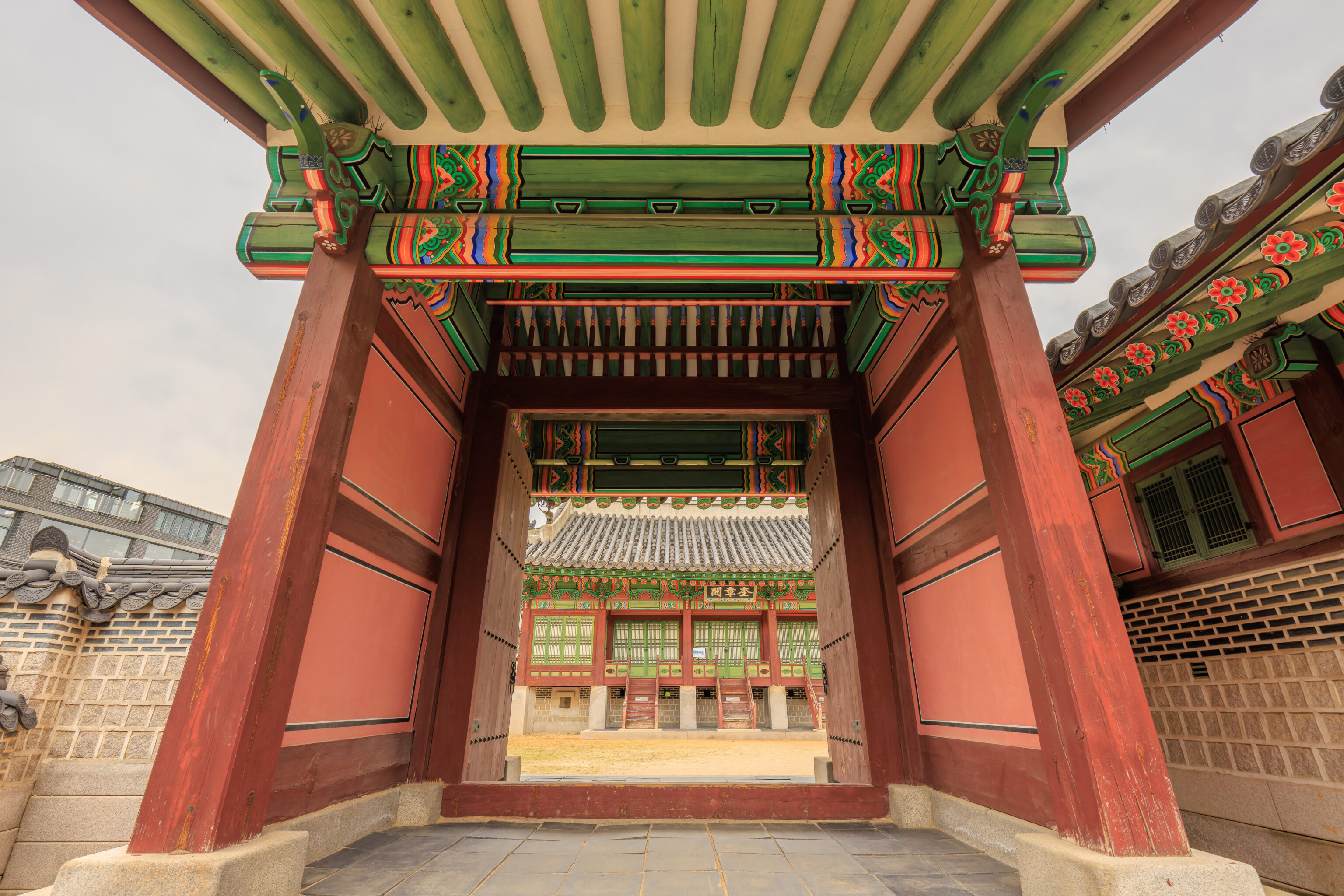
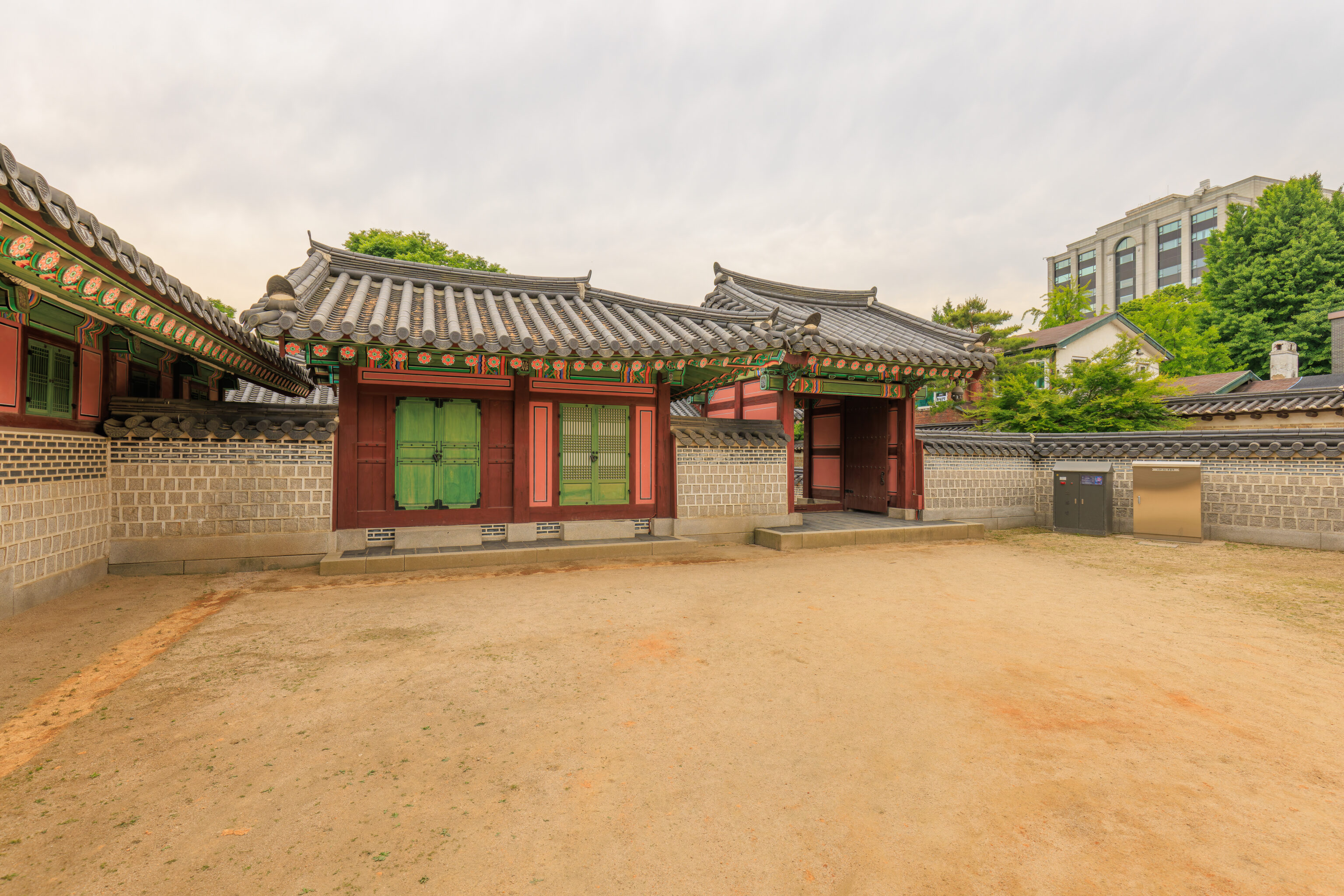
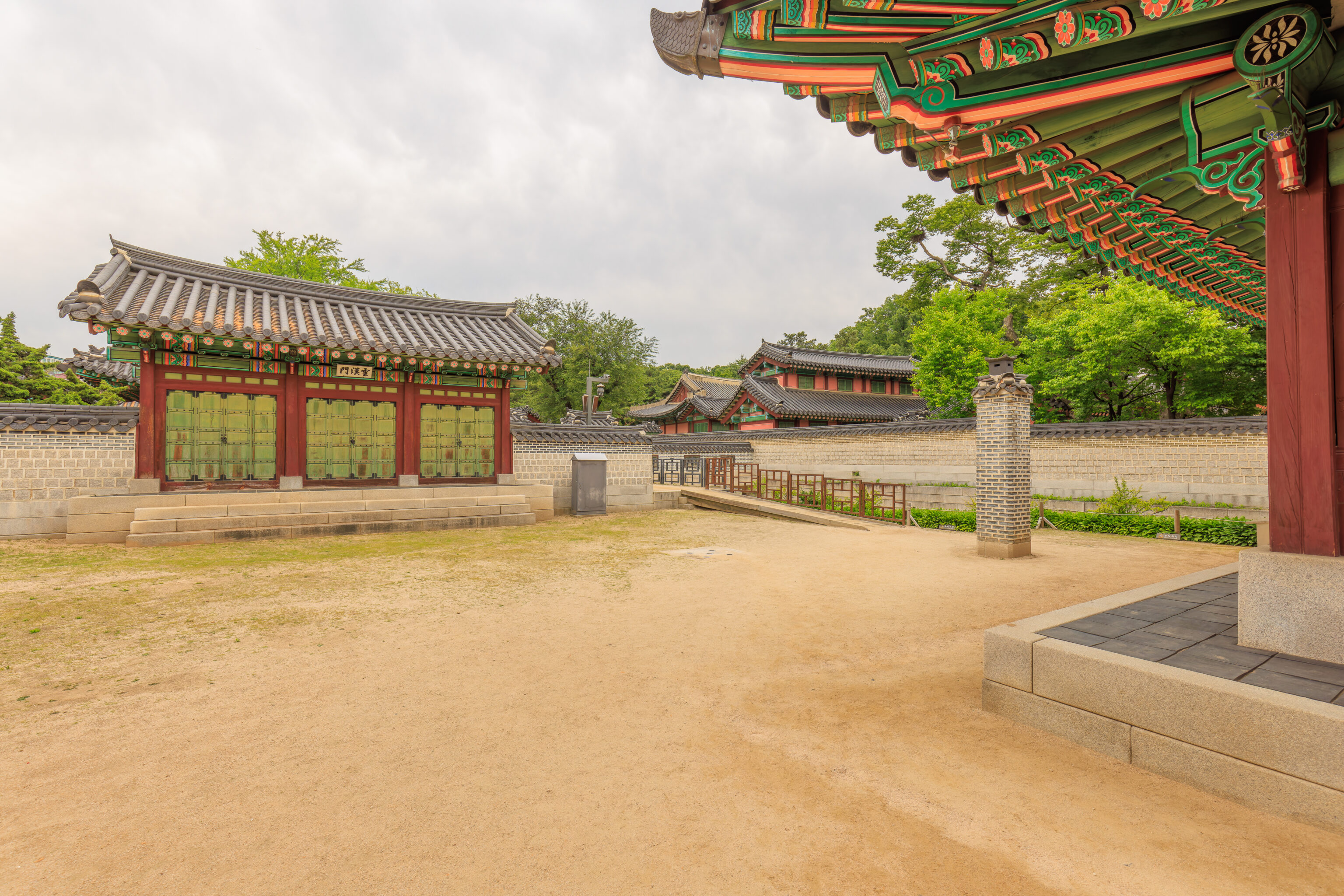
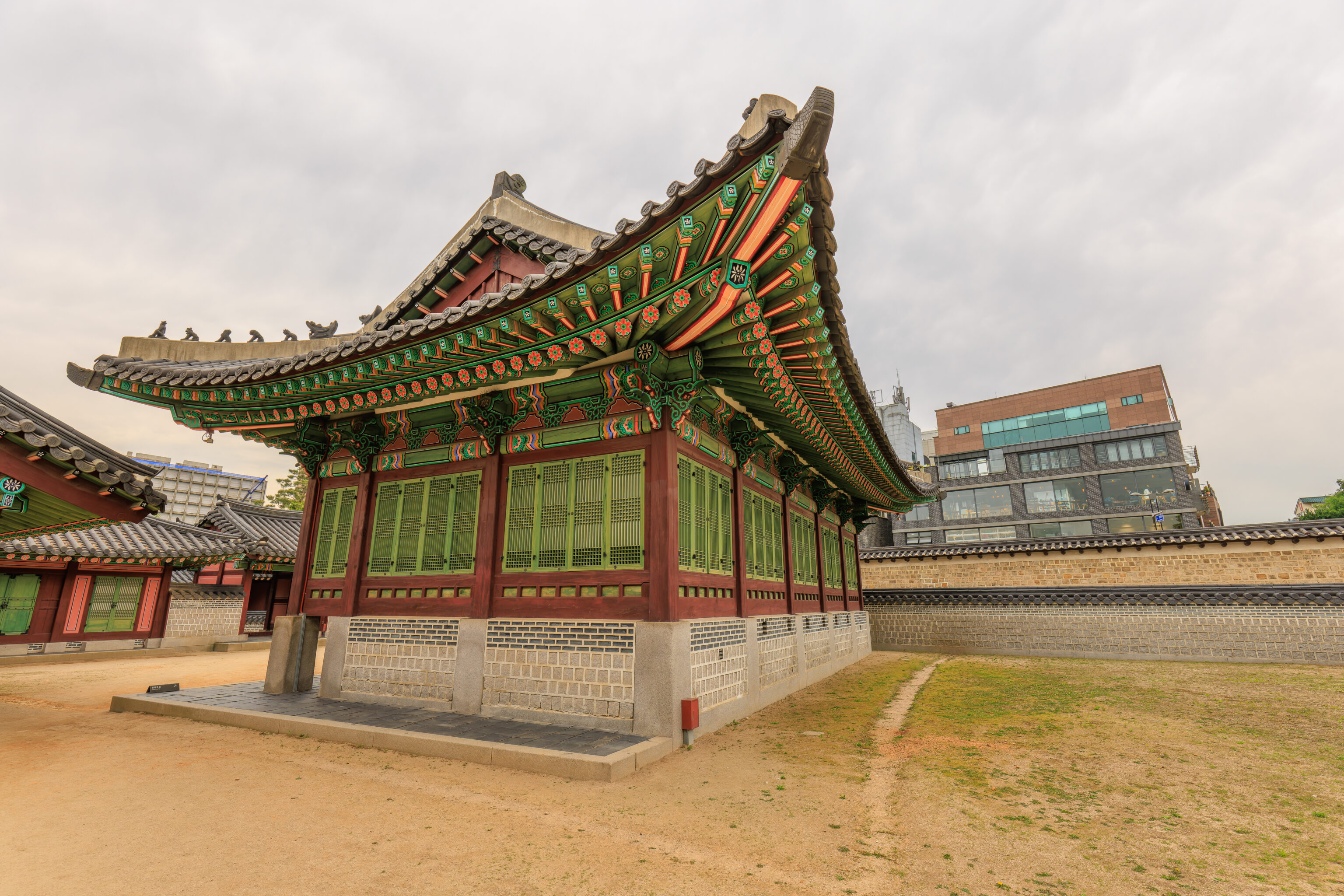
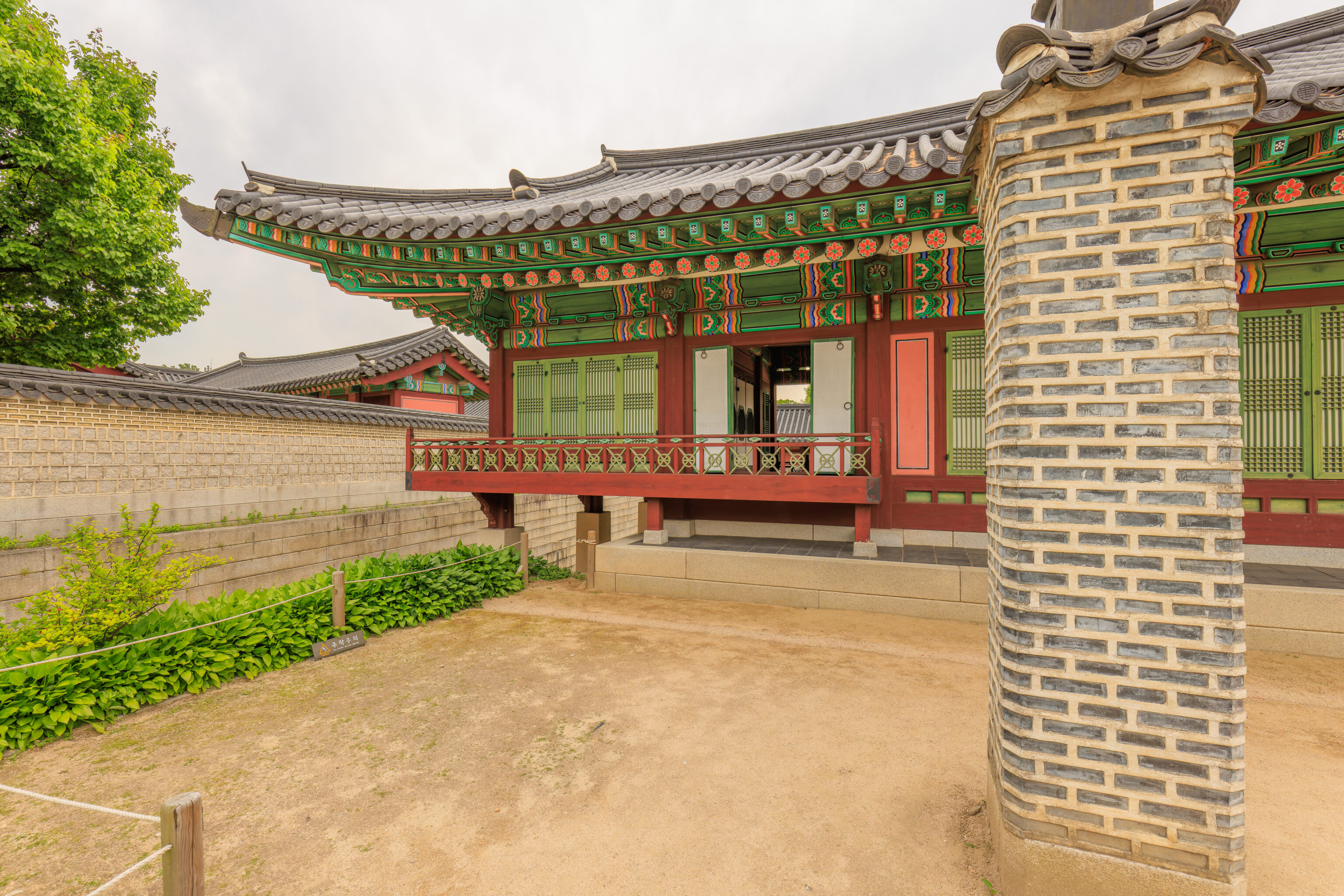
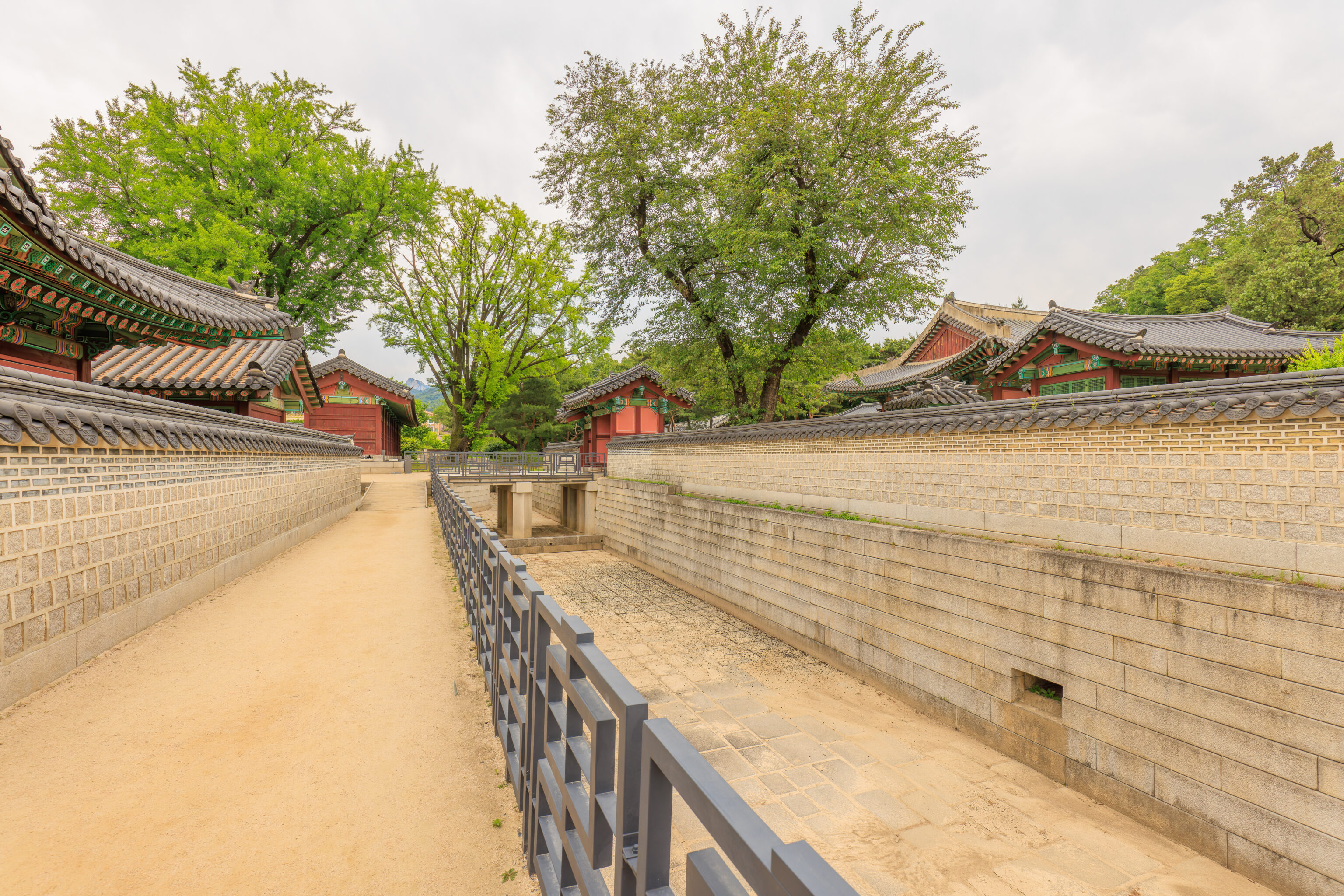
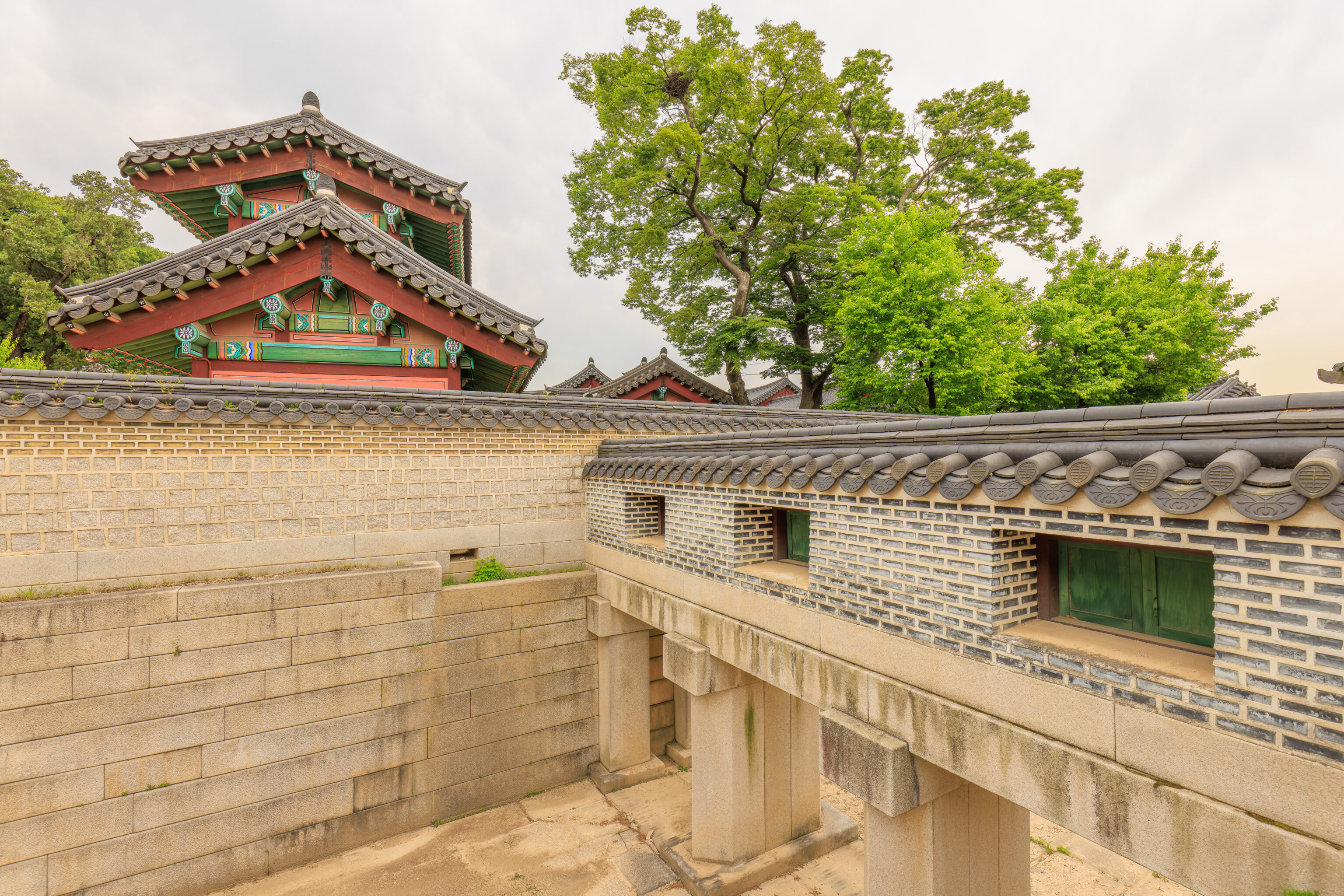
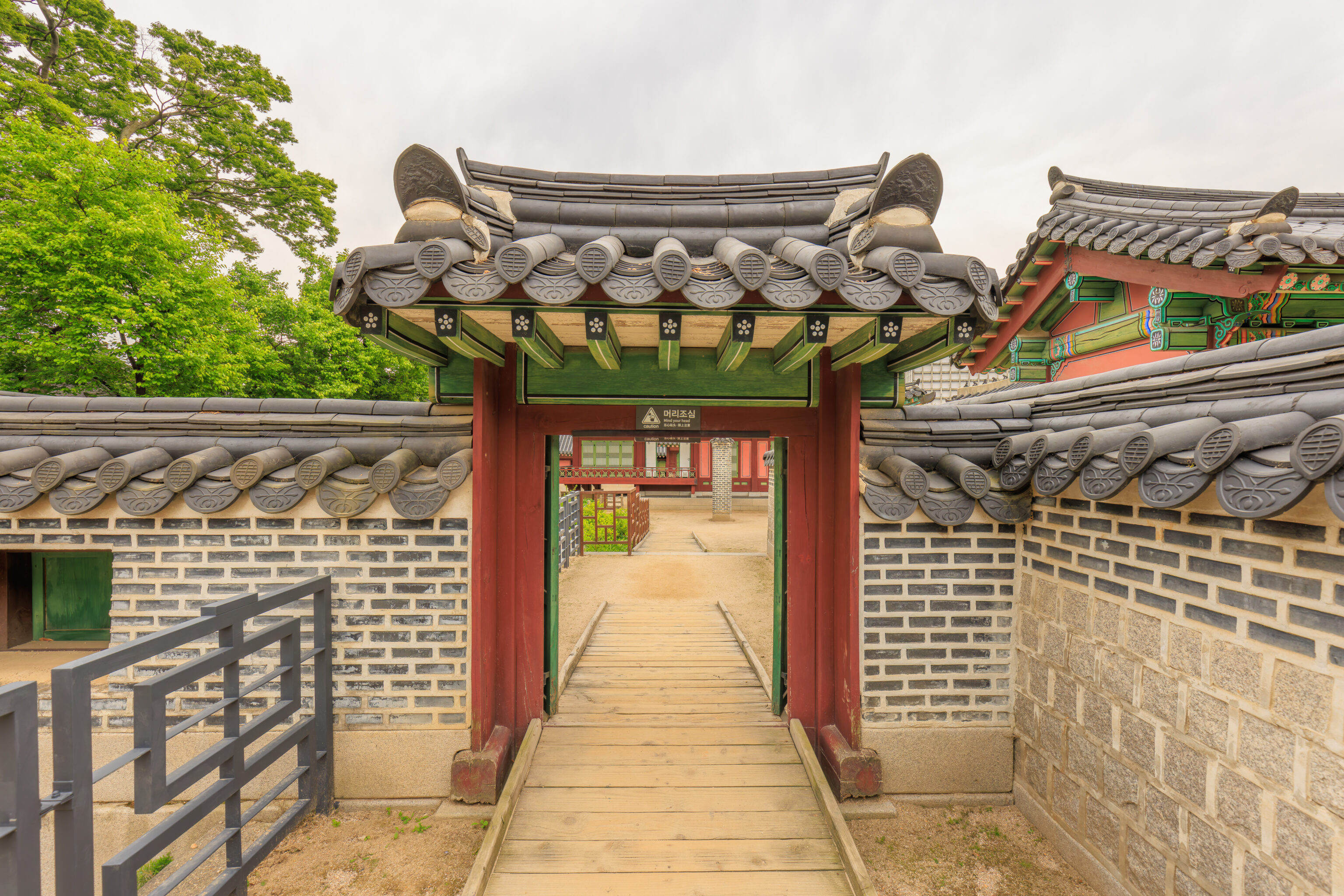
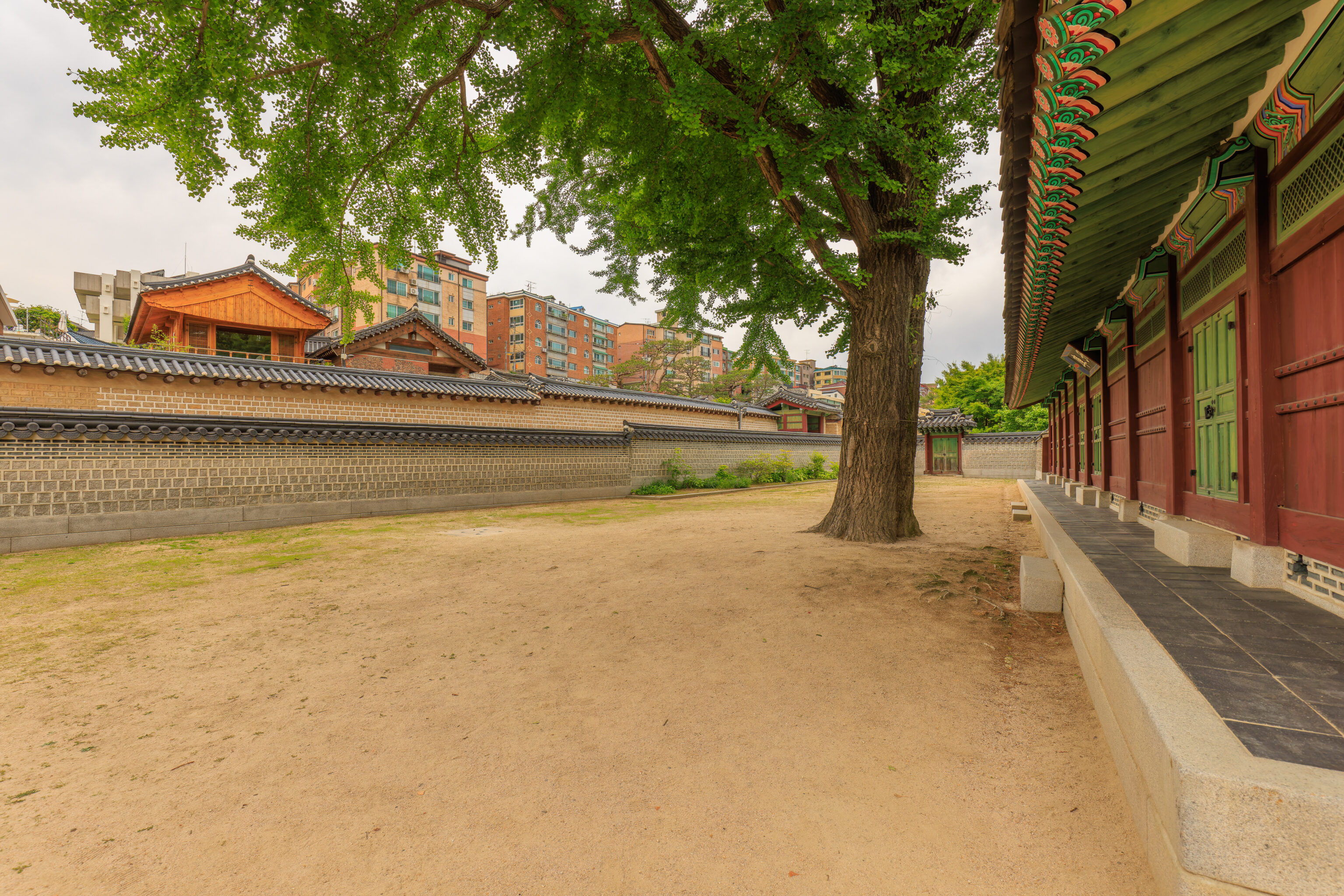
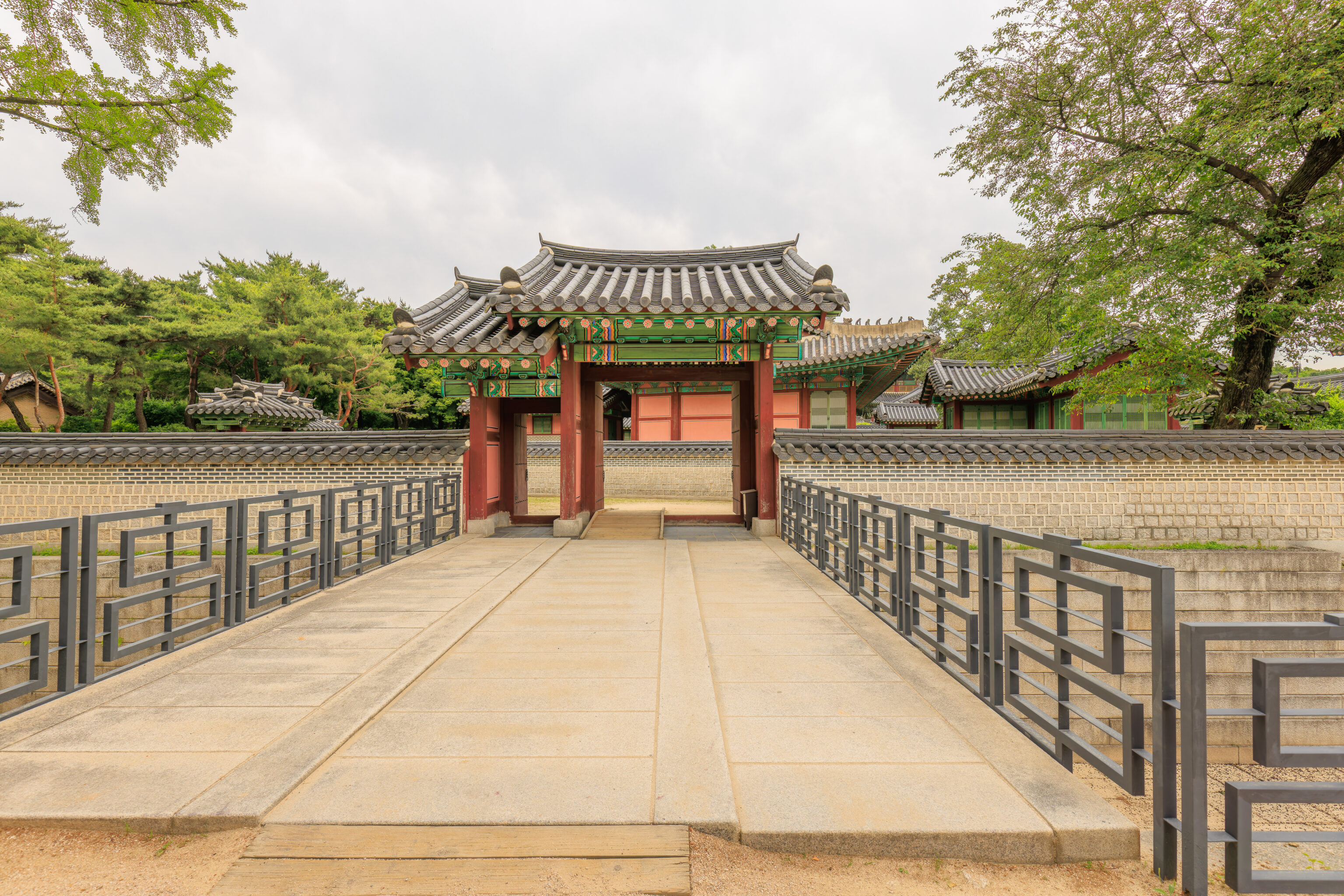
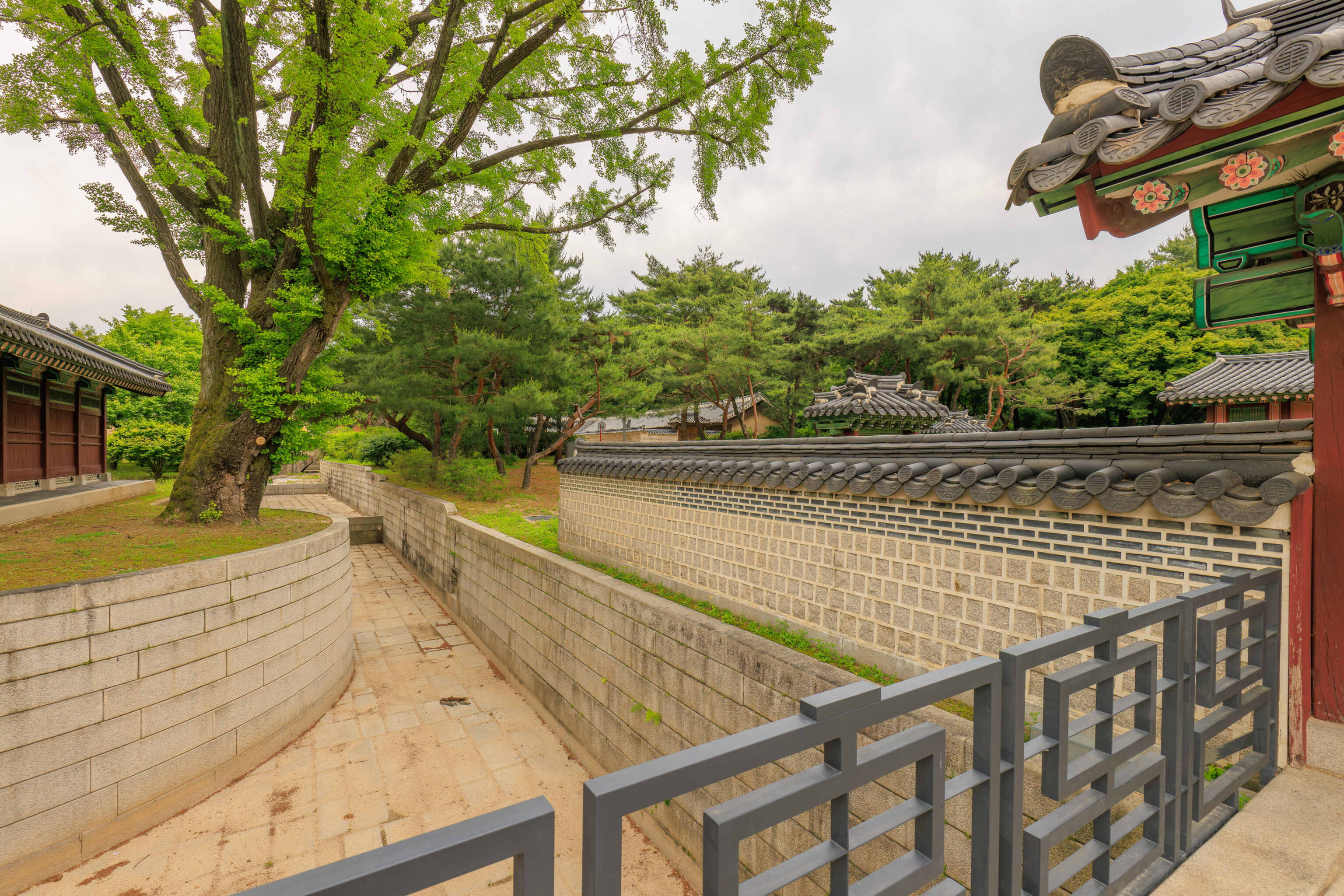
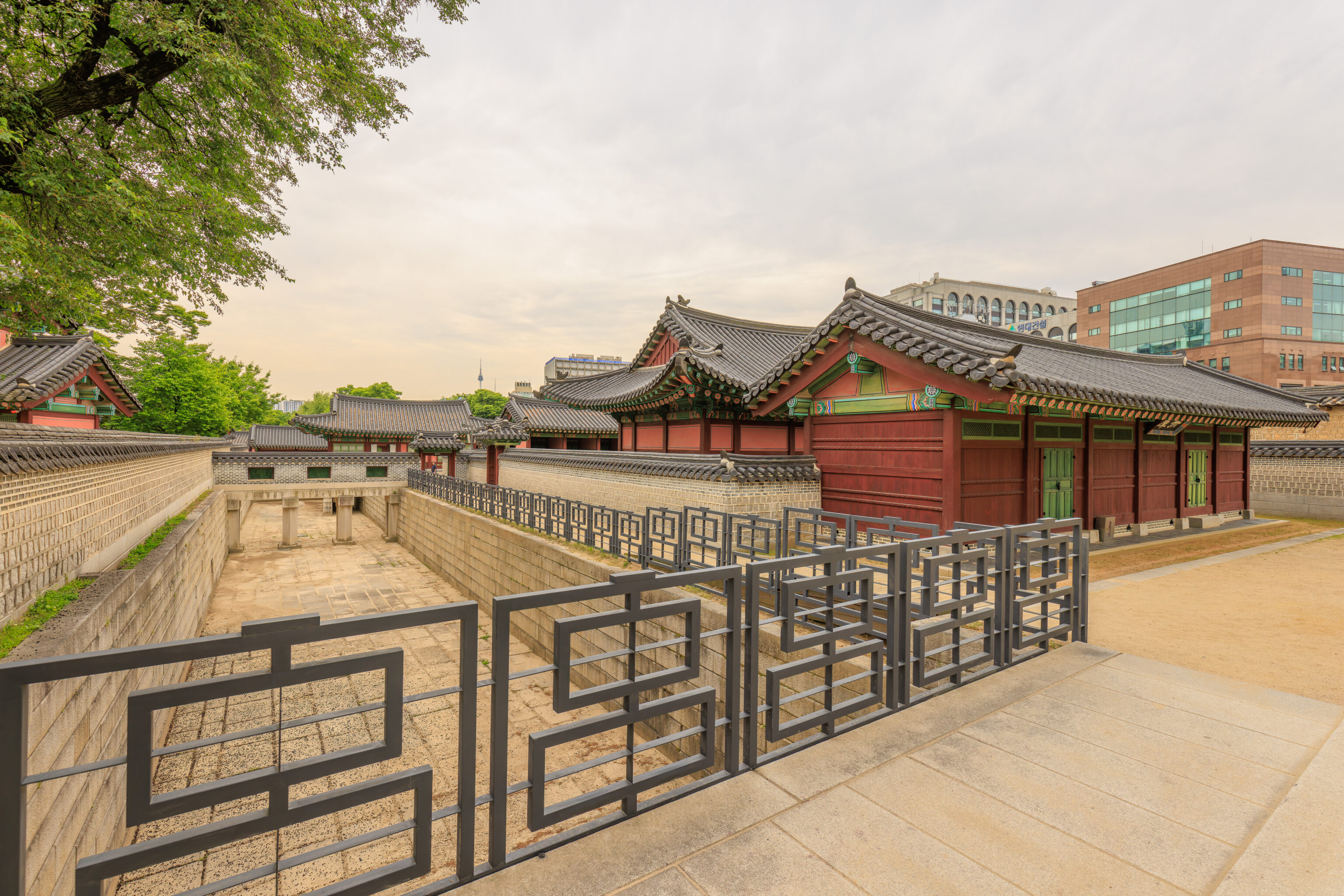
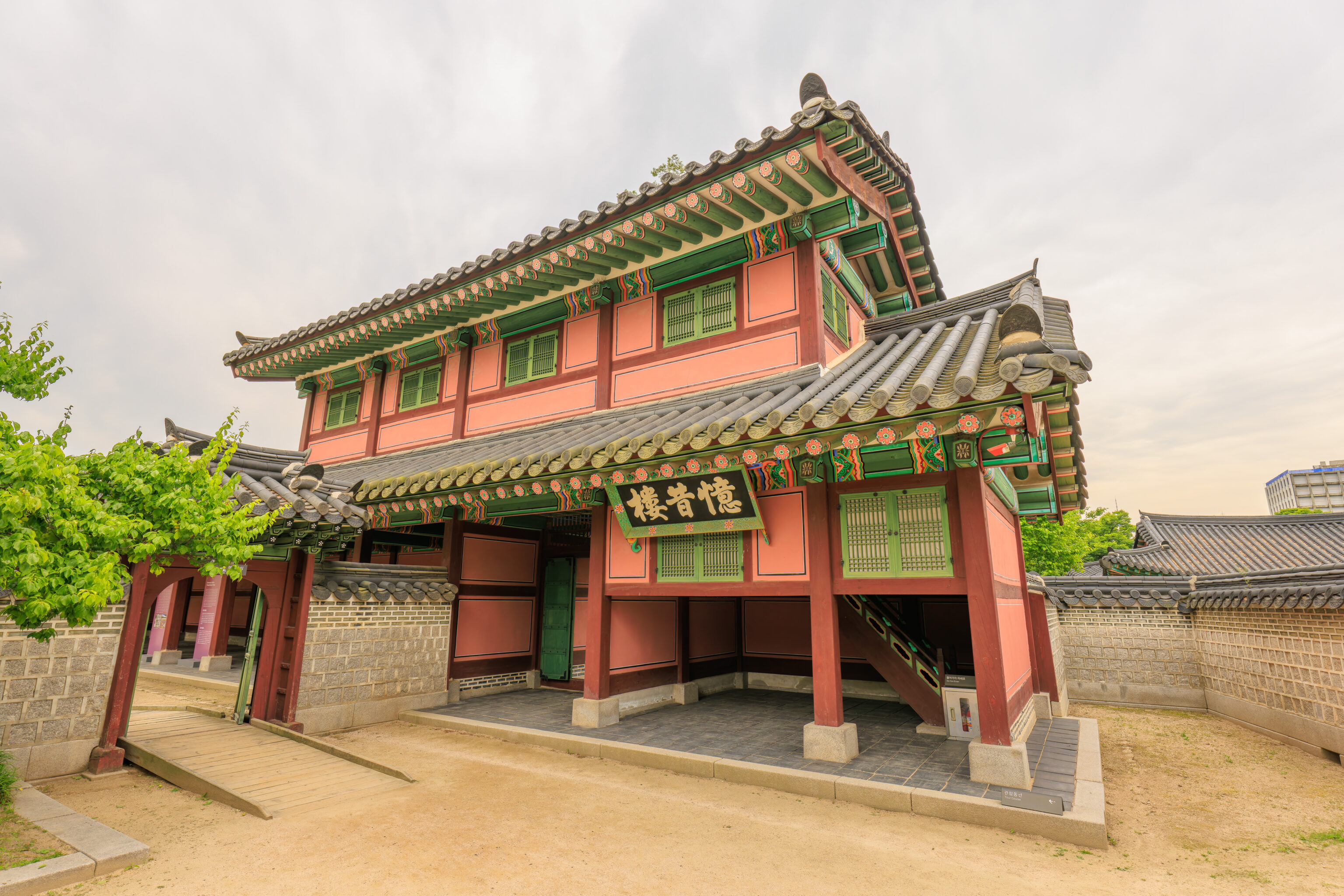
The sign for Gwolnaegaksa mentioned this area being kind of like a labyrinth. It’s a fair assessment.
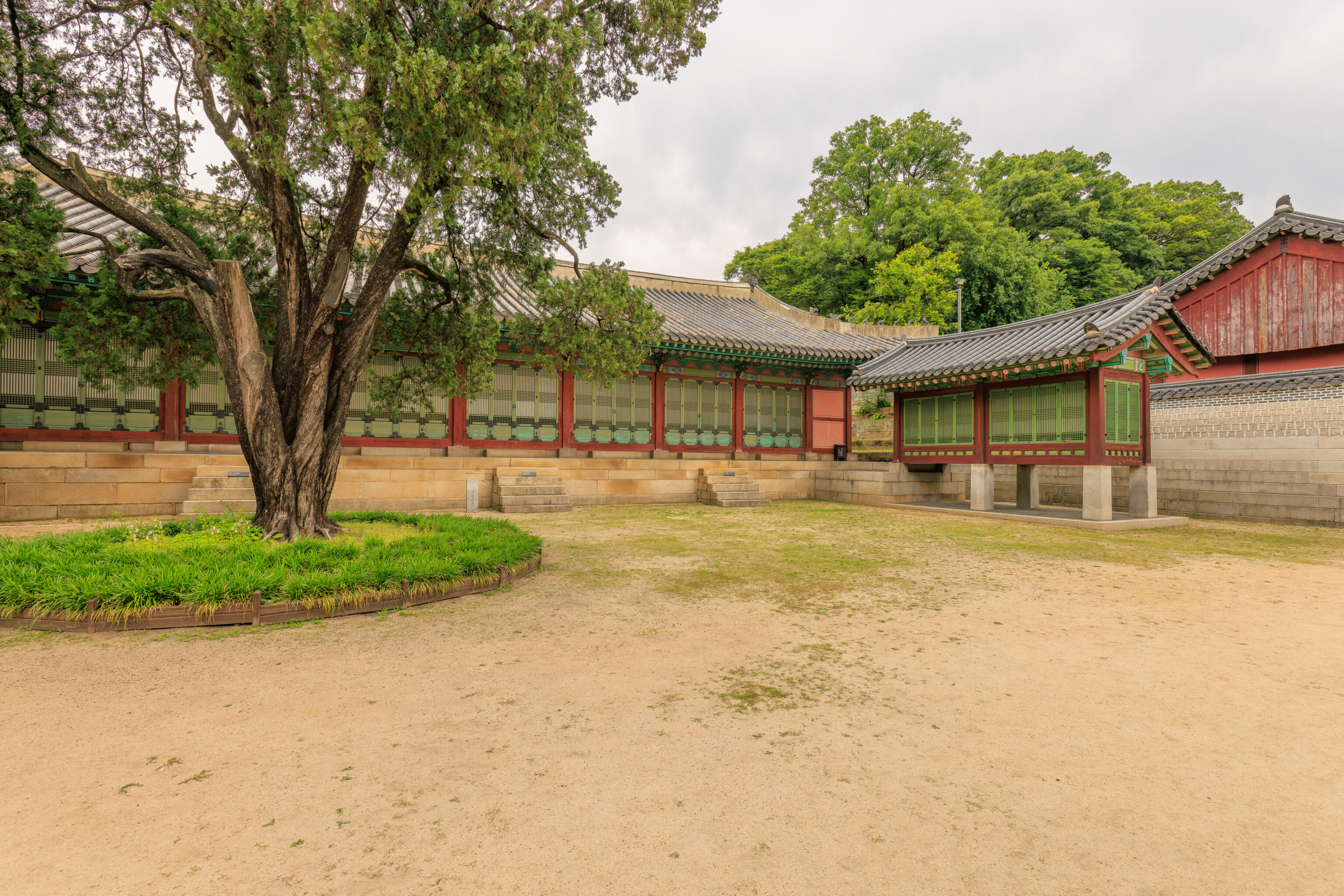
Eventually, we found ourselves here, by the 선원전 Seonwonjeon. This large building contains enshrined portraits of Korean kings. A sign describes this building and the surrounding area:
Portraits of former kings were enshrined here and ancestral rites were performed. Among the portraits enshrined at Seonwonjeon were those of King Taejo, Yeongjo, and Jeongjo. In 1921, during the Japanese occupation, a new Seonwonjeon was built deep in the garden of Changdeokgung Palace, and all ancestral rites were performed there afterward. Auxiliary buildings were restored in 2005. Buildings for ritual ceremonies were built to the right and left of the nine-bay main building, and a room for religious service was located at the front. Uipunggak, a storage area for ritual vessels and apparatus at the rear of Seonwonjeon, was built during the Japanese occupation.
Another sign describes the building in more detail:
Seonwonjeon Hall in Changdeokgung Palace is a royal portrait hall where the Eojin, the king's portraits, were enshrined. The portraits of Sukjong (r. 1674-1720), Youngjo (r. 1724-1776), Jeongjo (r. 1776-1800), Sunjo (r. 1800-1834), Munjo (honorary king), and that of Heonjong (r. 1834-1849) used to be enshrined in this hall. 'Seonwonjeon' Hall is the title of the 'Jinjeon' Hall inside the royal palace. Though the original does not remain, Seonwonjeon Hall resided within the grounds of not only Changdeokgung Palace, but also Gyeongbokgung Palace and Deoksugung Palace. There was a Jinjeon called "Youngheejeon Hall" outside of the palace in the capital city where the portraits of several kings were enshrined, and a Jinjeon only for King Taejo (r. 1392-1398), the founder of the Joseon Dynasty, was also built in the provinces.
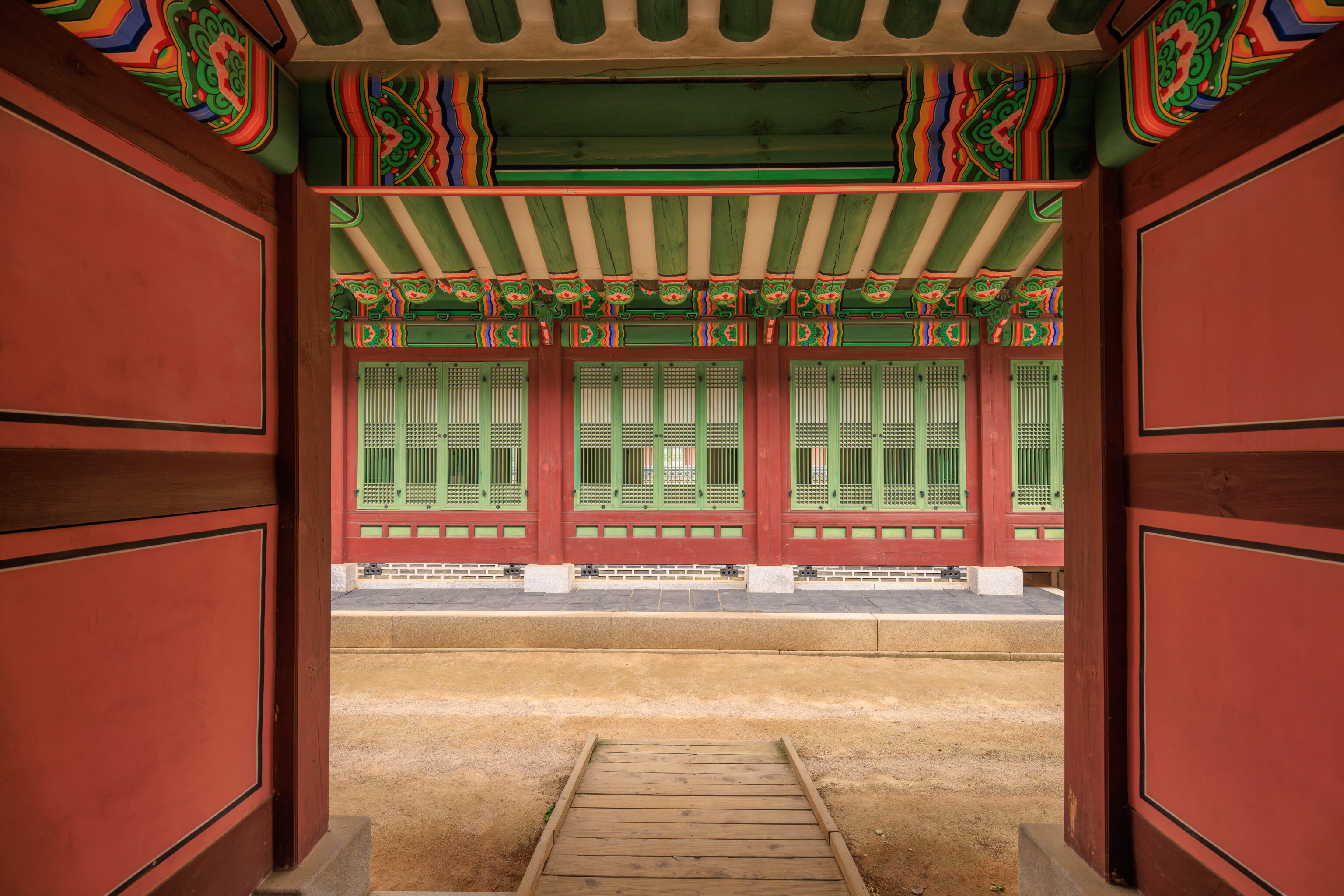
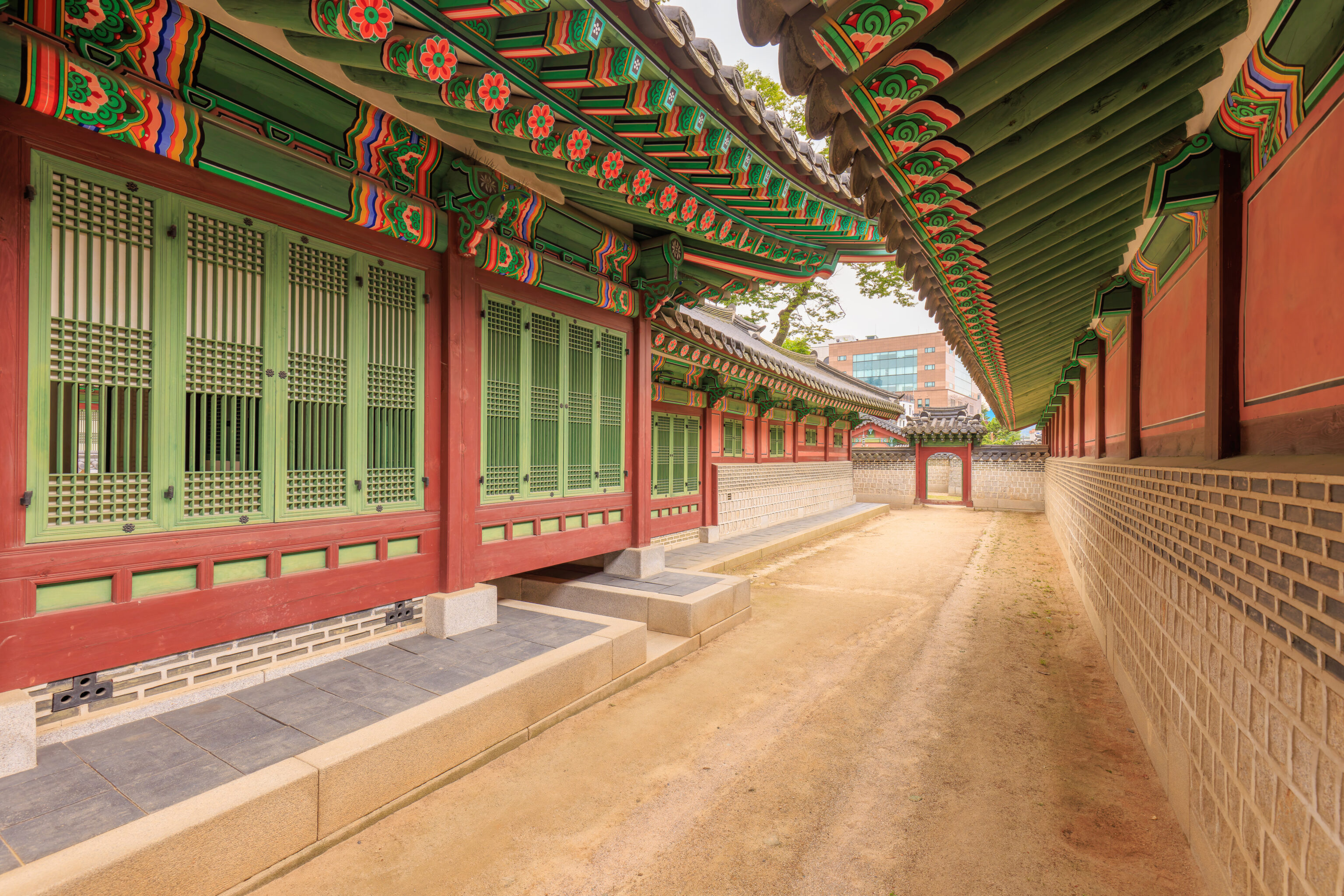
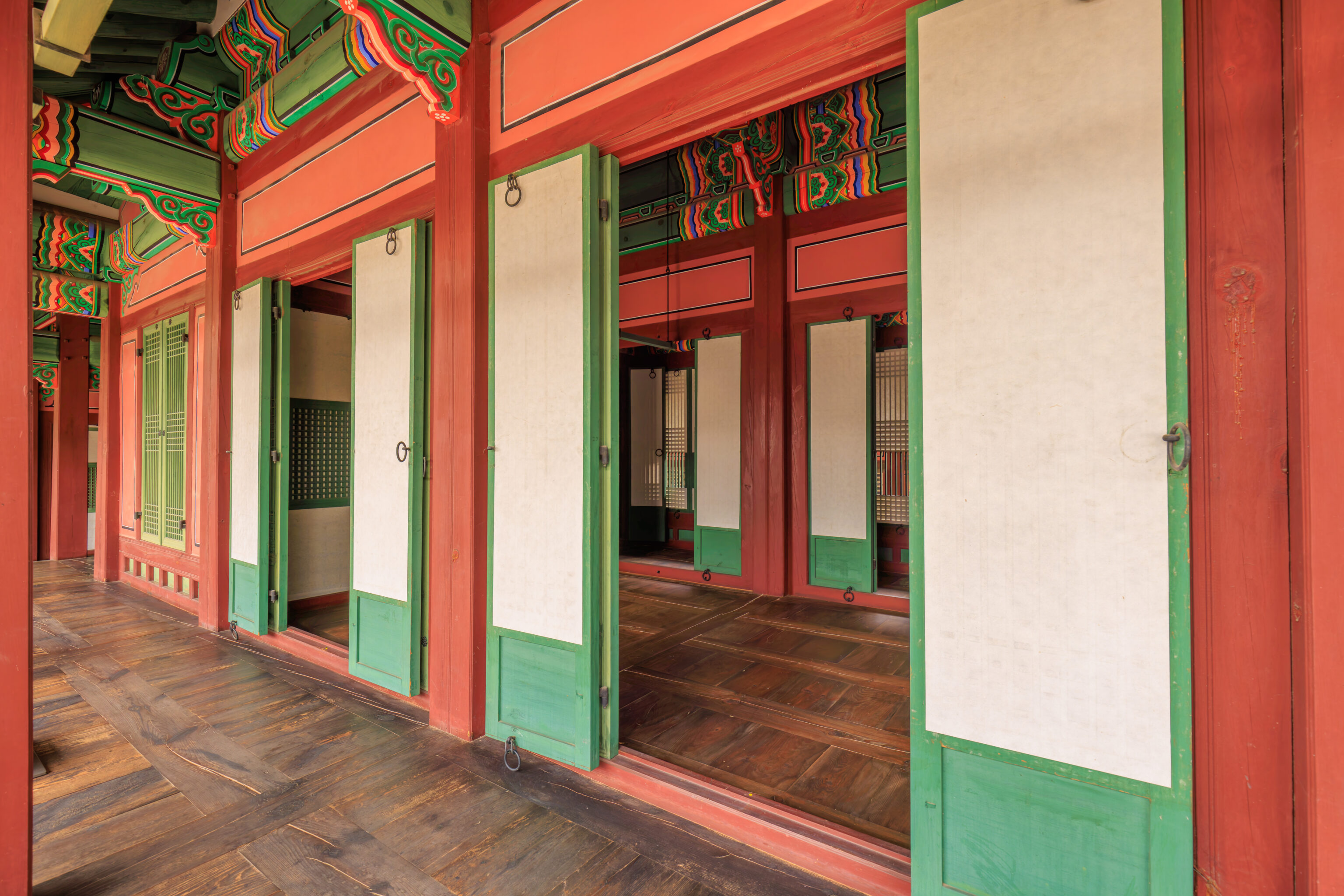
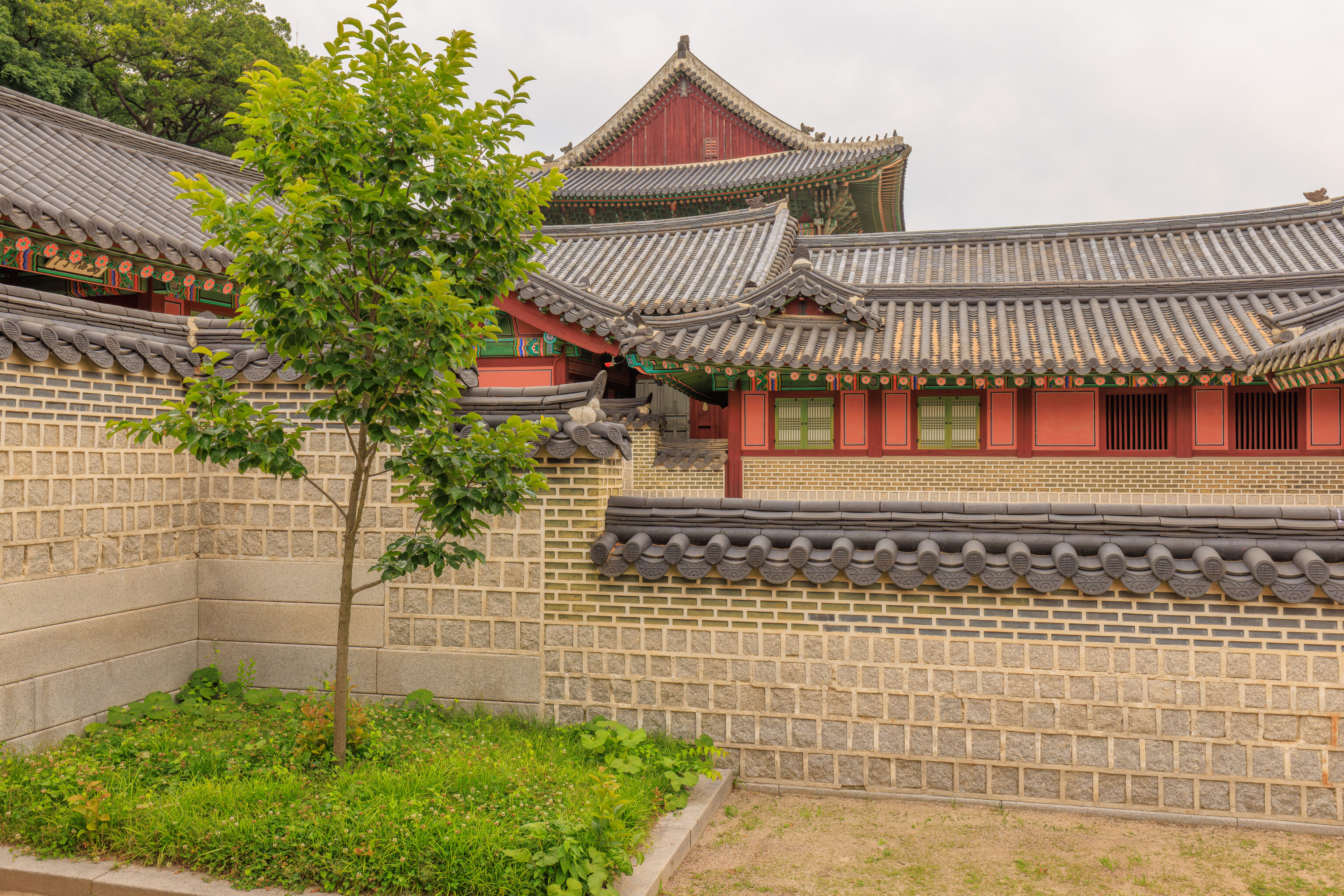
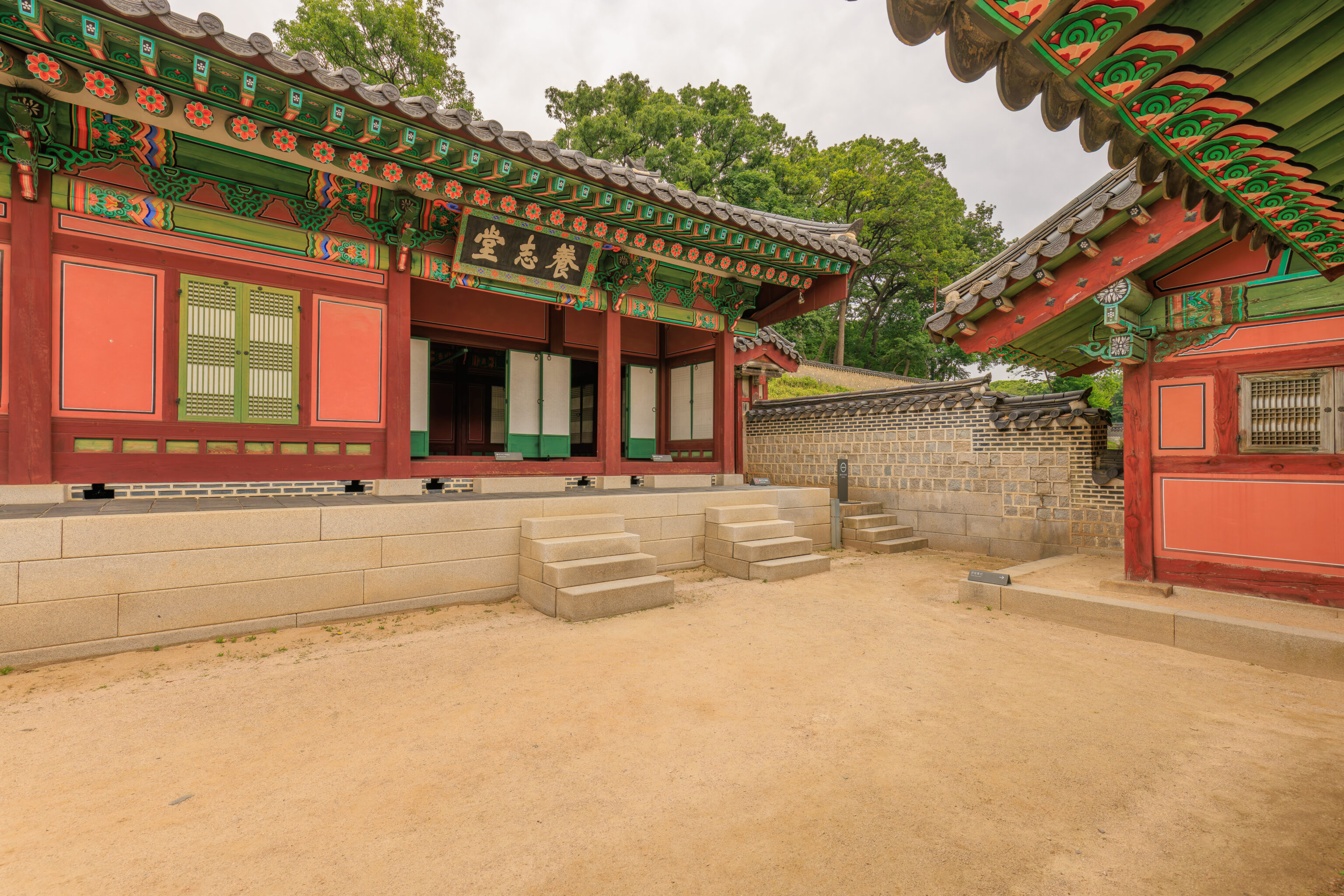
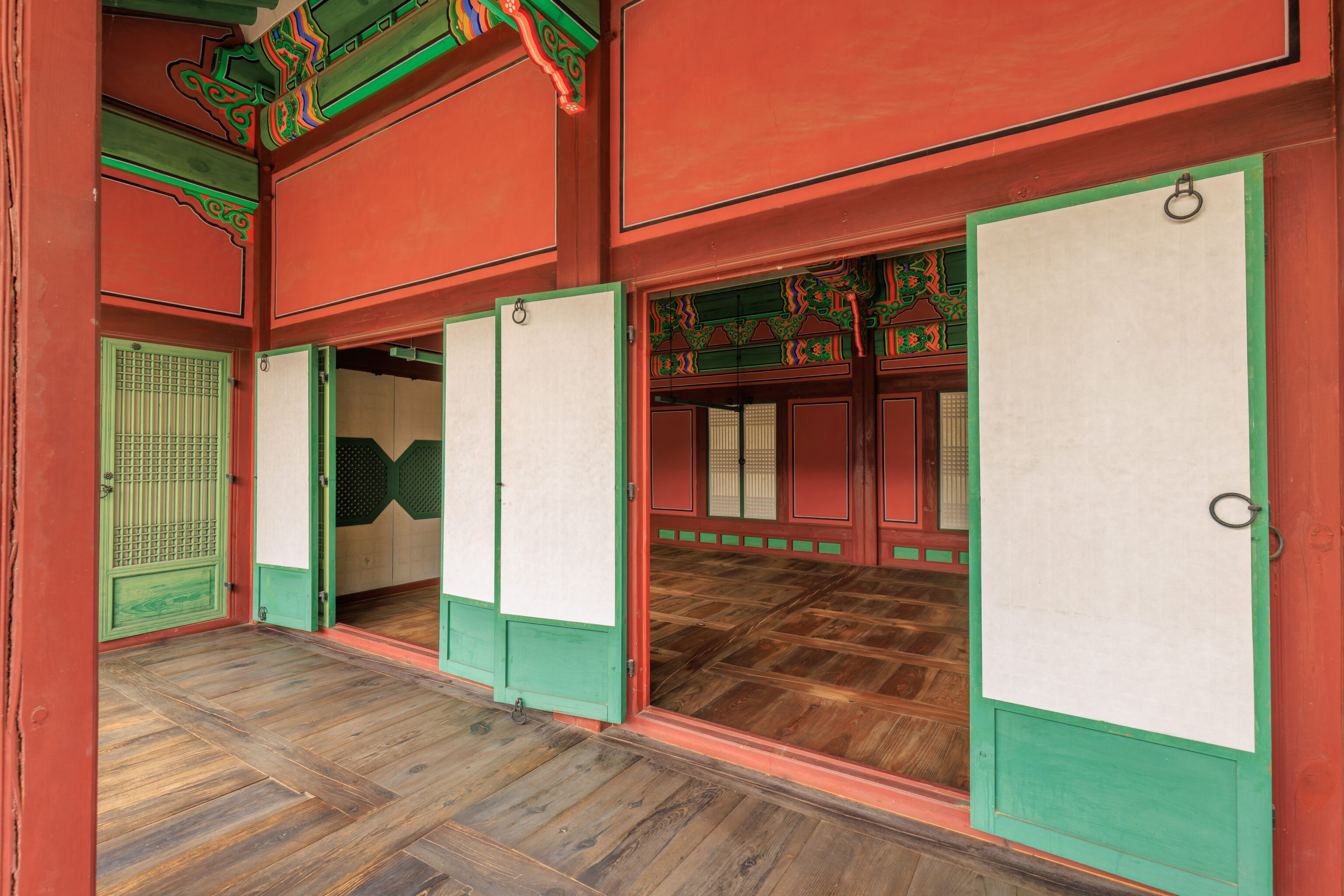
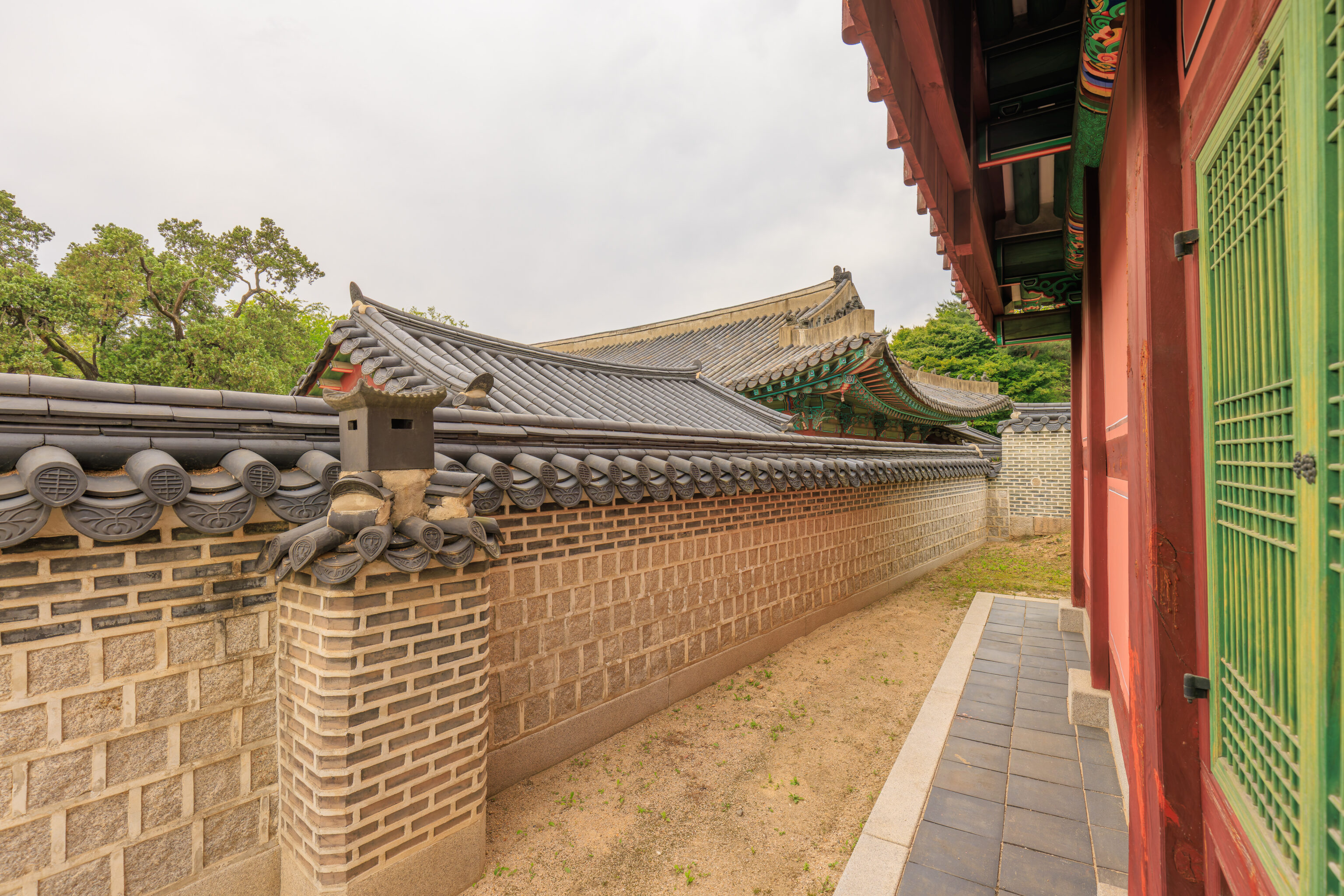
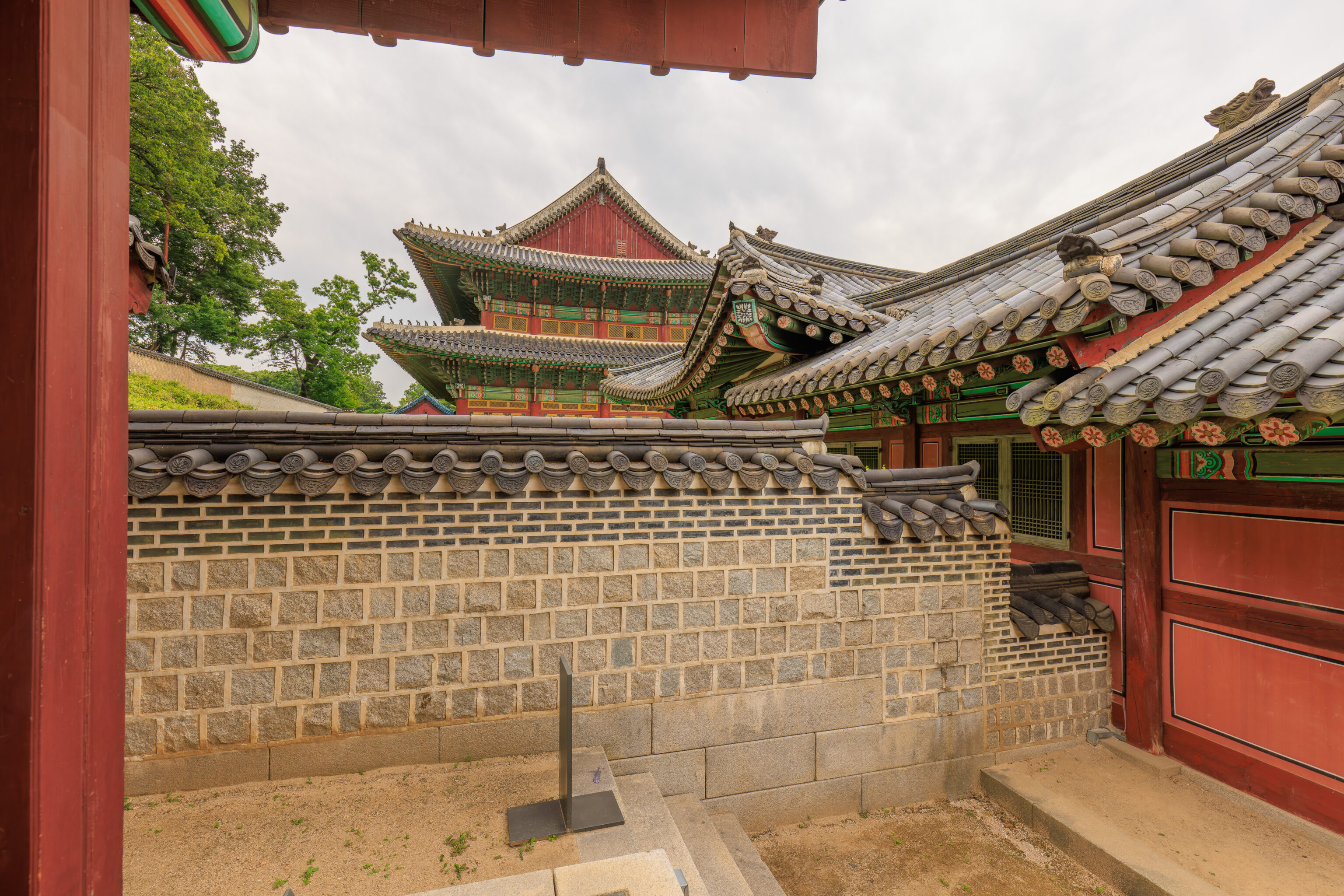
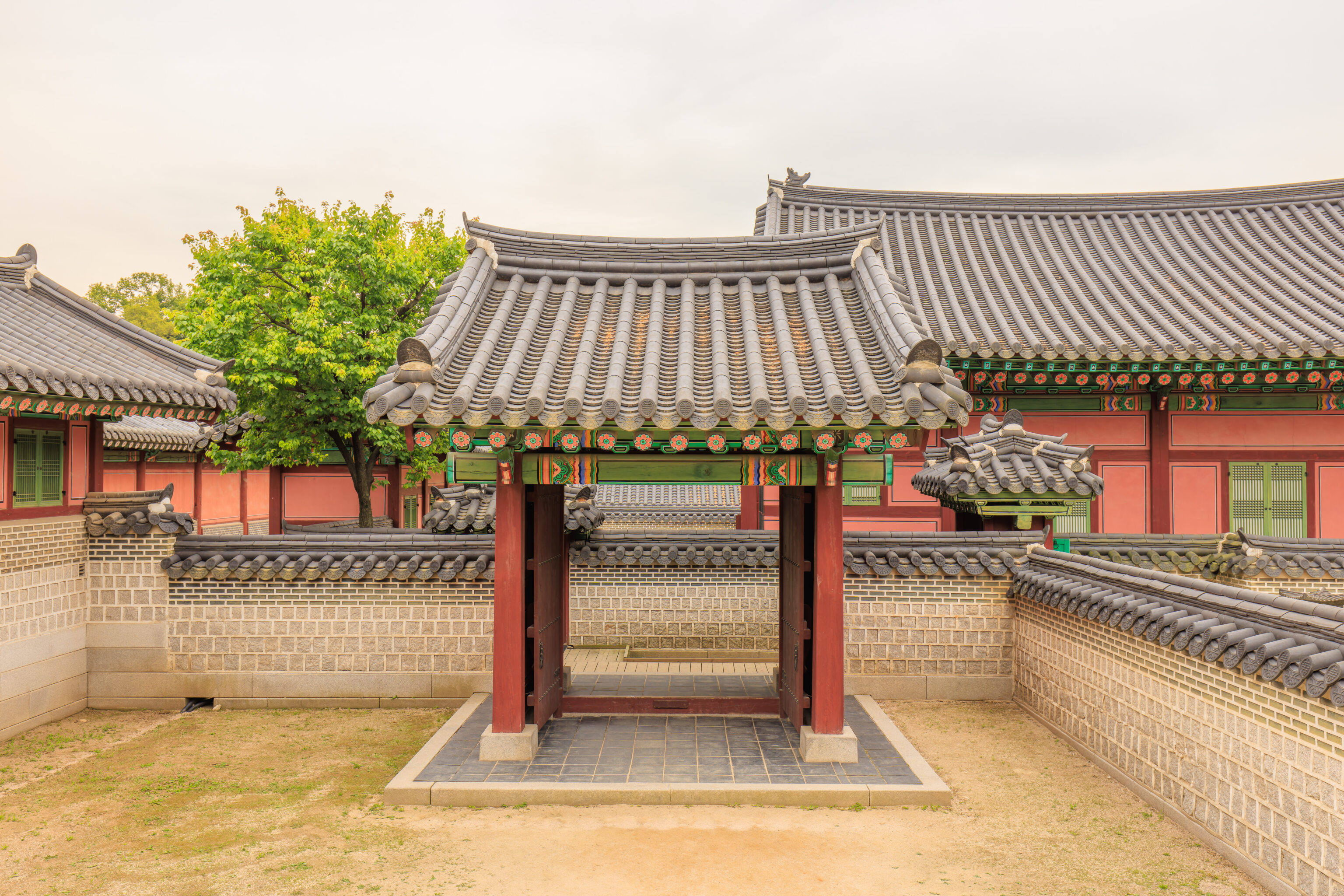
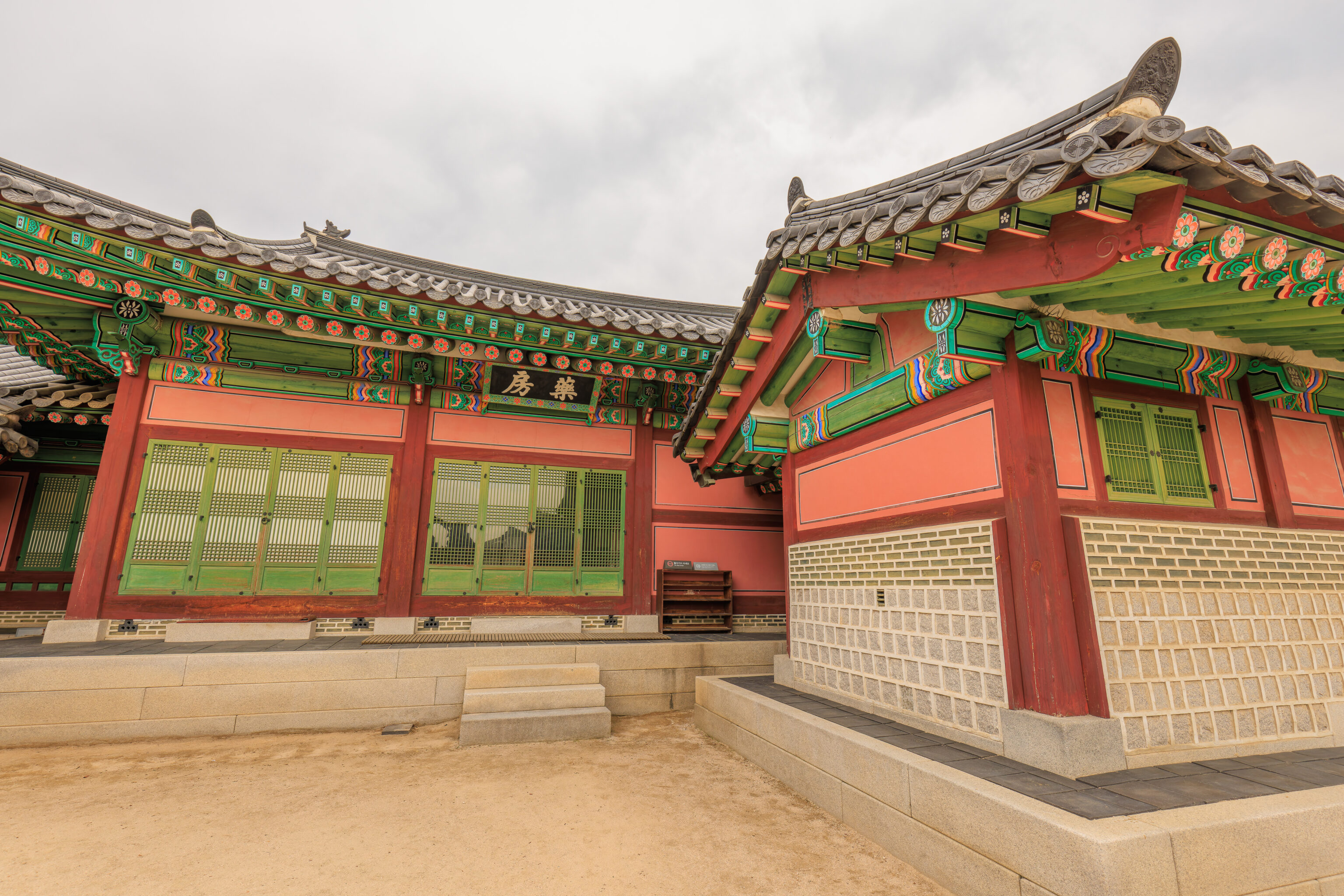
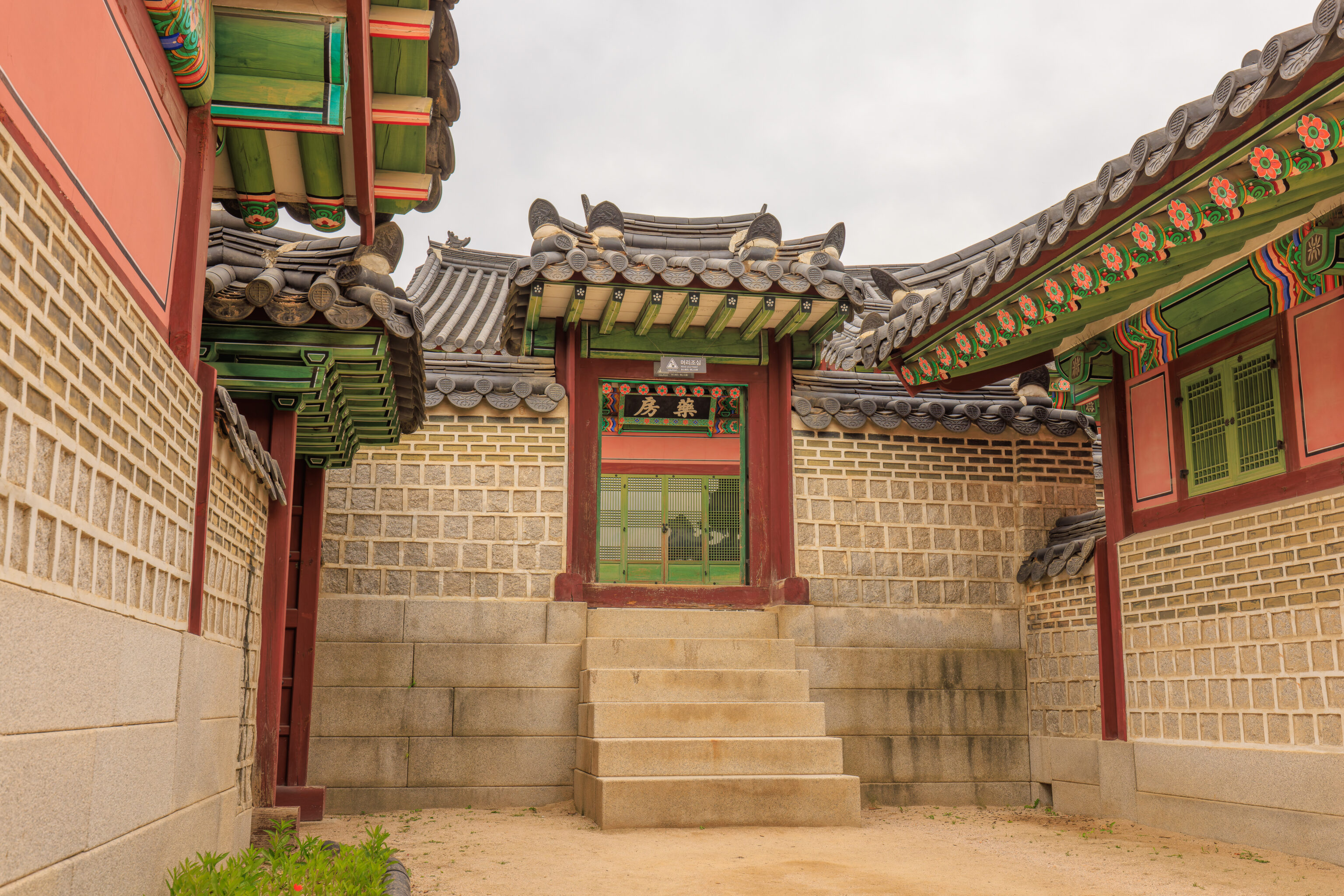
We wandered around the area a bit before walking through this small gate to the south. We ended up near the Jinseonmun, a gate that we passed through earlier in the day.
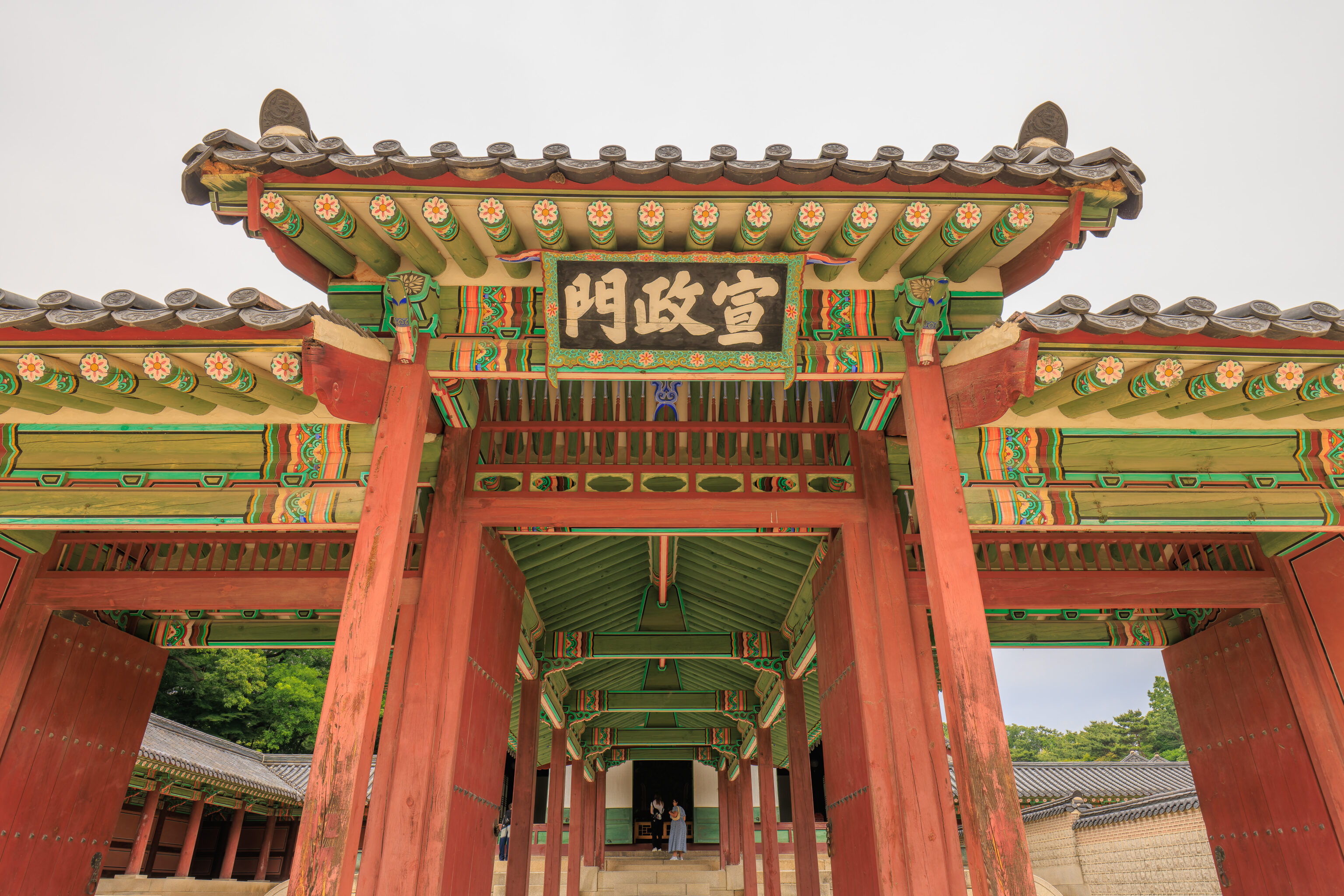
We walked to the east, past the Injeongmun, the gate that leads to the Injeongjeon, and continued walking east through the next gate. From there, we turned to the north to reach the 선정전 Seonjeongjeon.
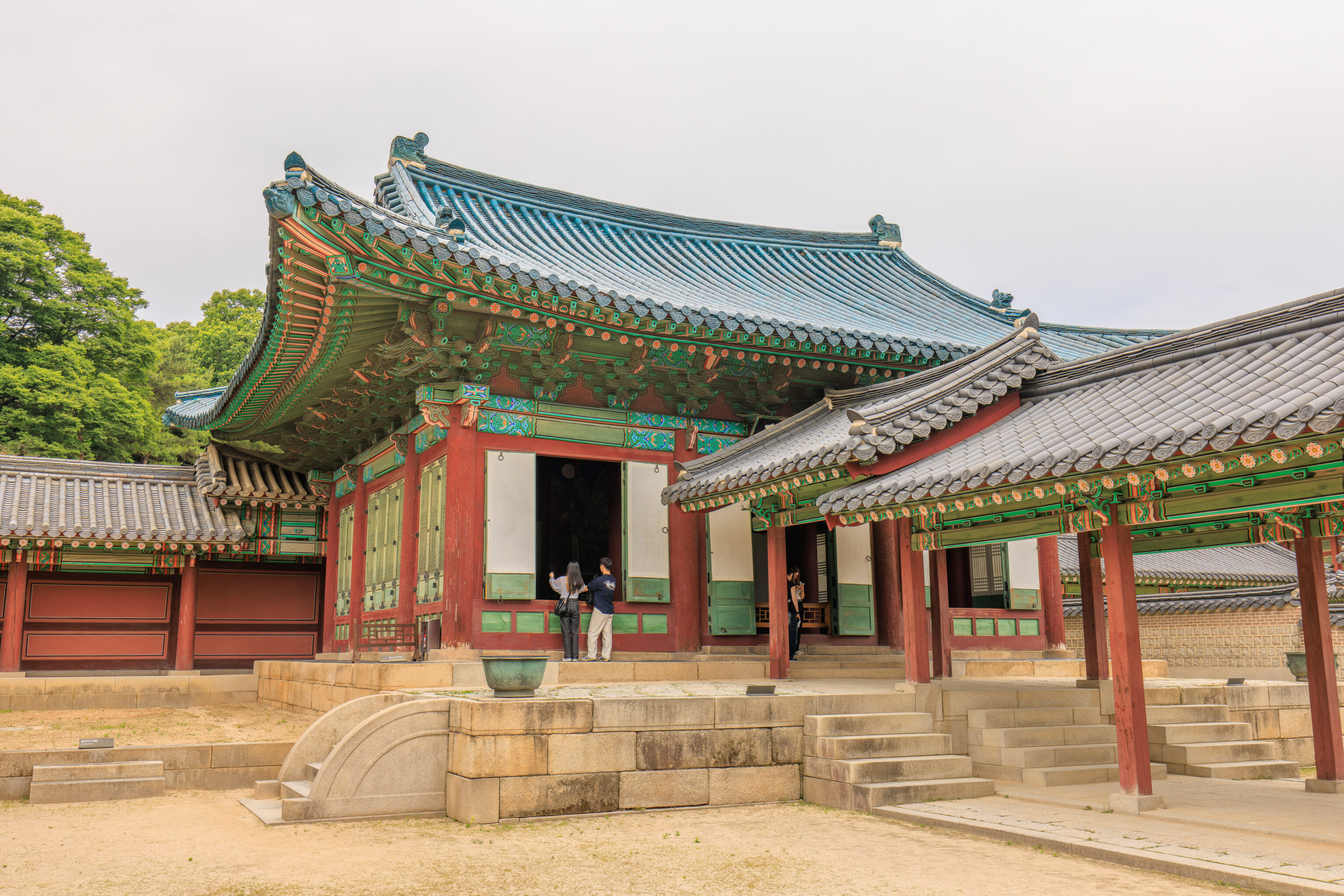
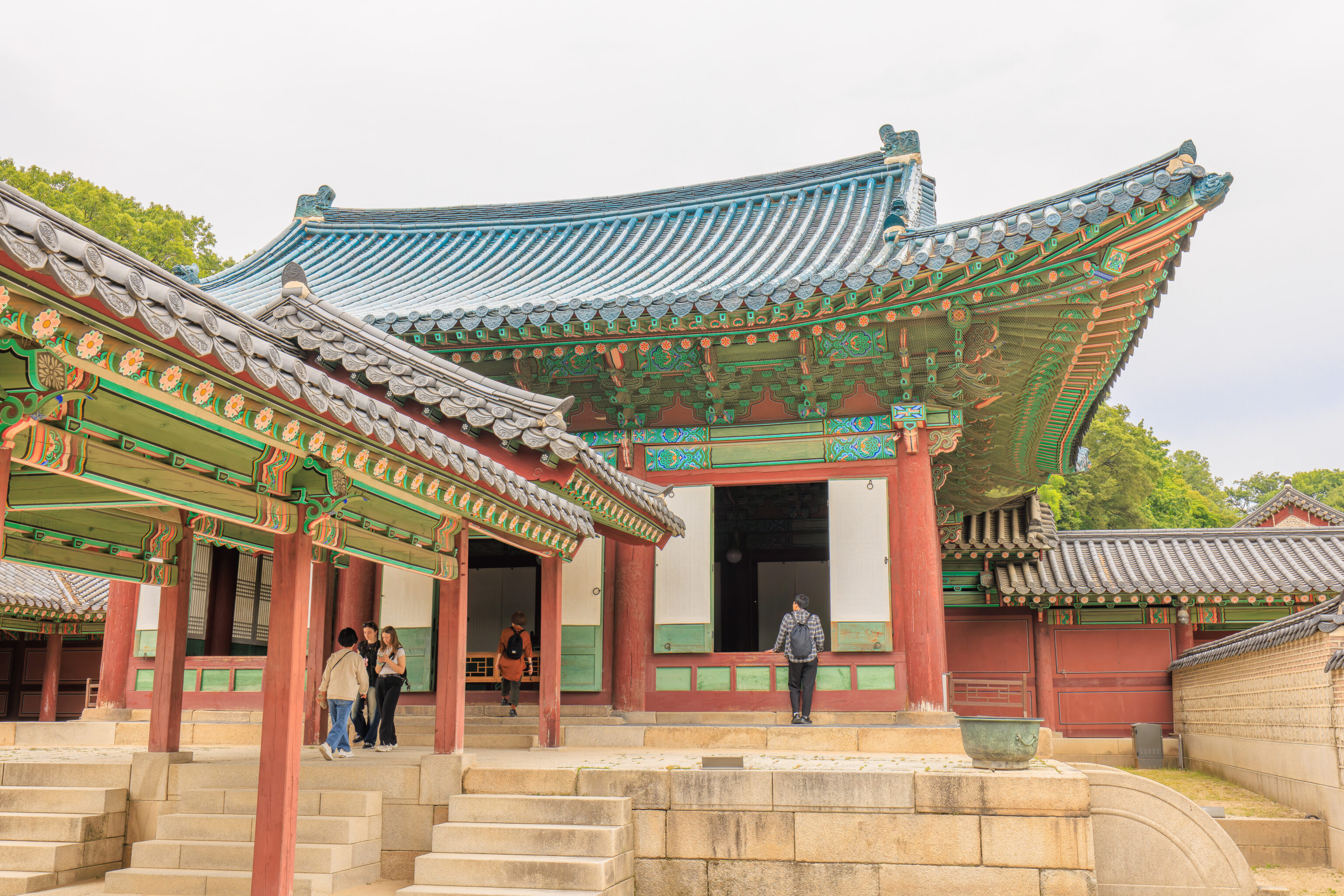
A sign describes this building:
Here the king worked at his convenience to discuss state affairs with high-ranking officials. It was built to the east of the Throne Hall. Various assemblies including daily morning meet- ings, reports on national affairs and state seminars were held here. A narrow colonnaded area surrounding the hall was used as offices for secretaries and for storage. This is the only existing palace building with a blue-tiled roof. A covered corridor leads from Seonjeongjeon Hall out to Seonjeongmun Gate. Seonjeongjeon Hall once served as a royal shrine during royal funerals, and the corridor provides the only remaining evidence of its funerary function.
The roof is blue like the ones at the Cheong Wa Dae (Blue House), though, its a bit hard to tell due to the lighting.
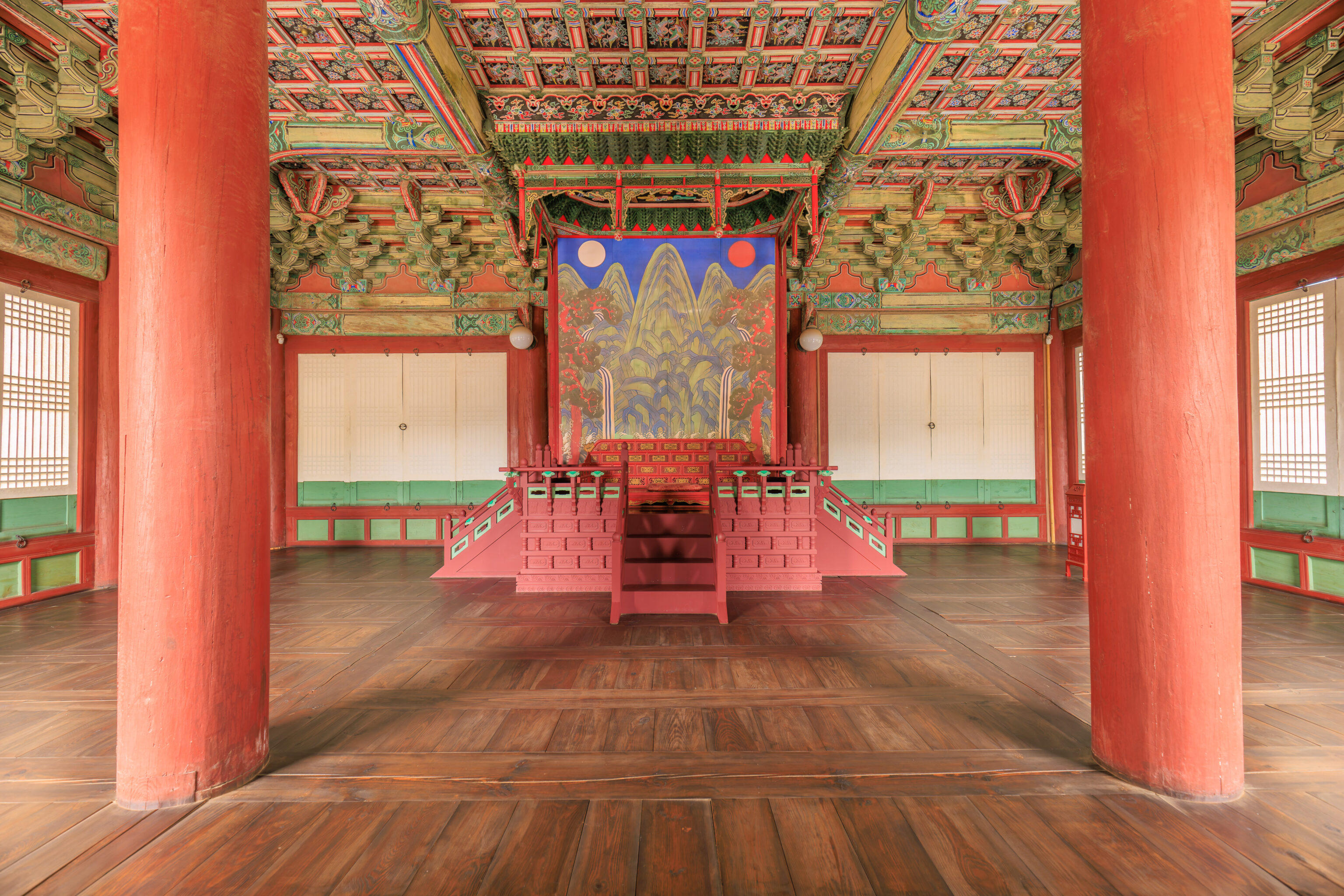
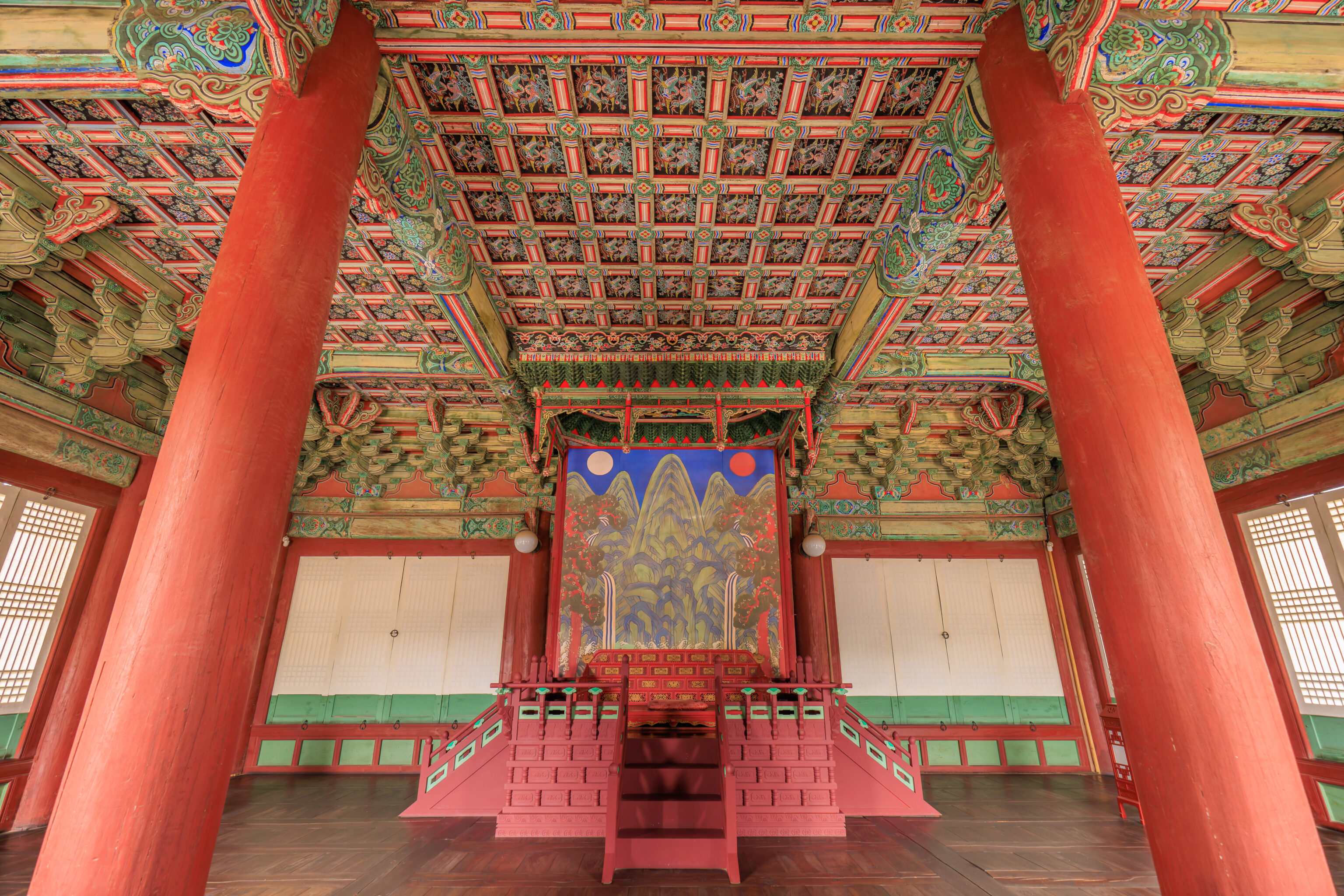
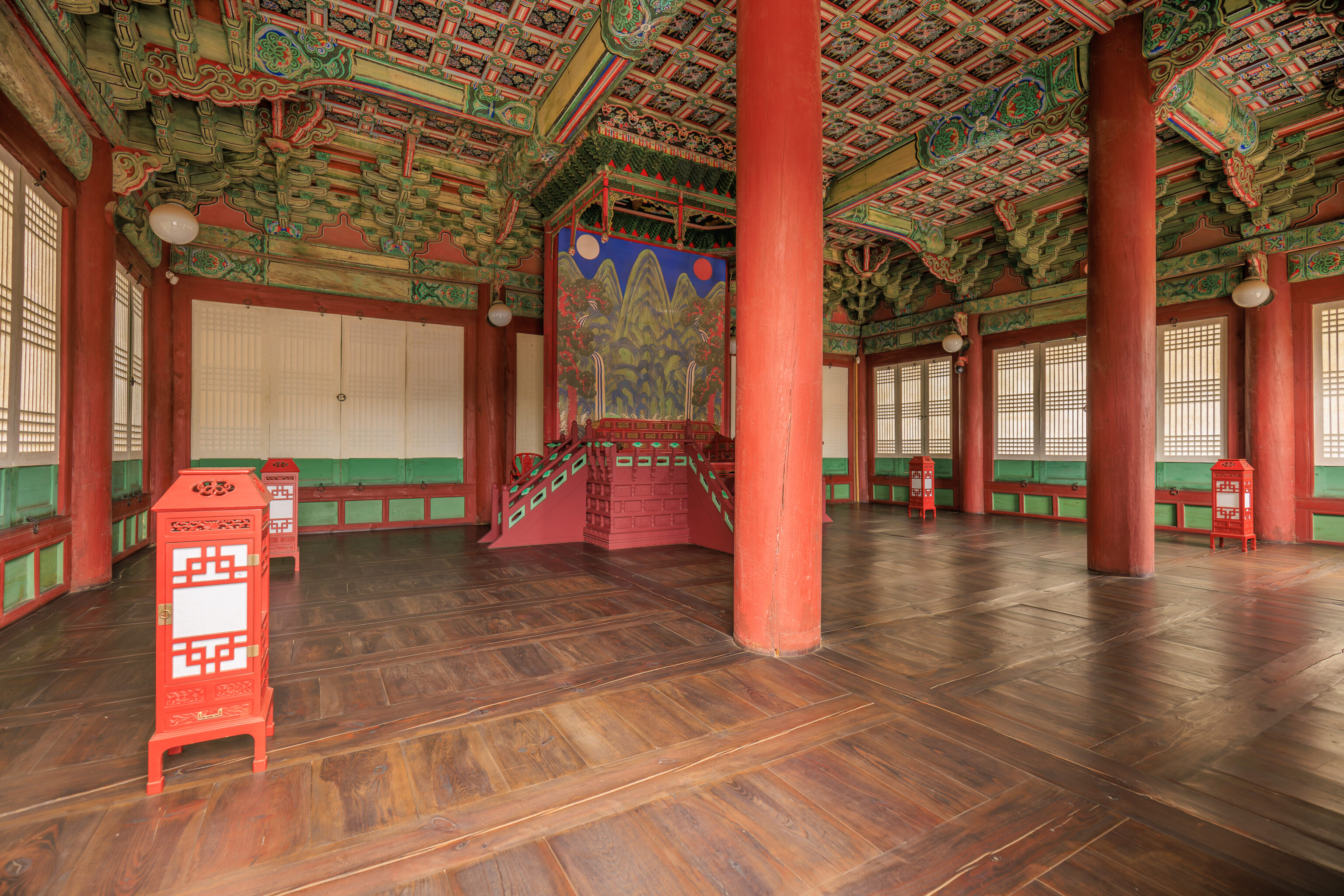
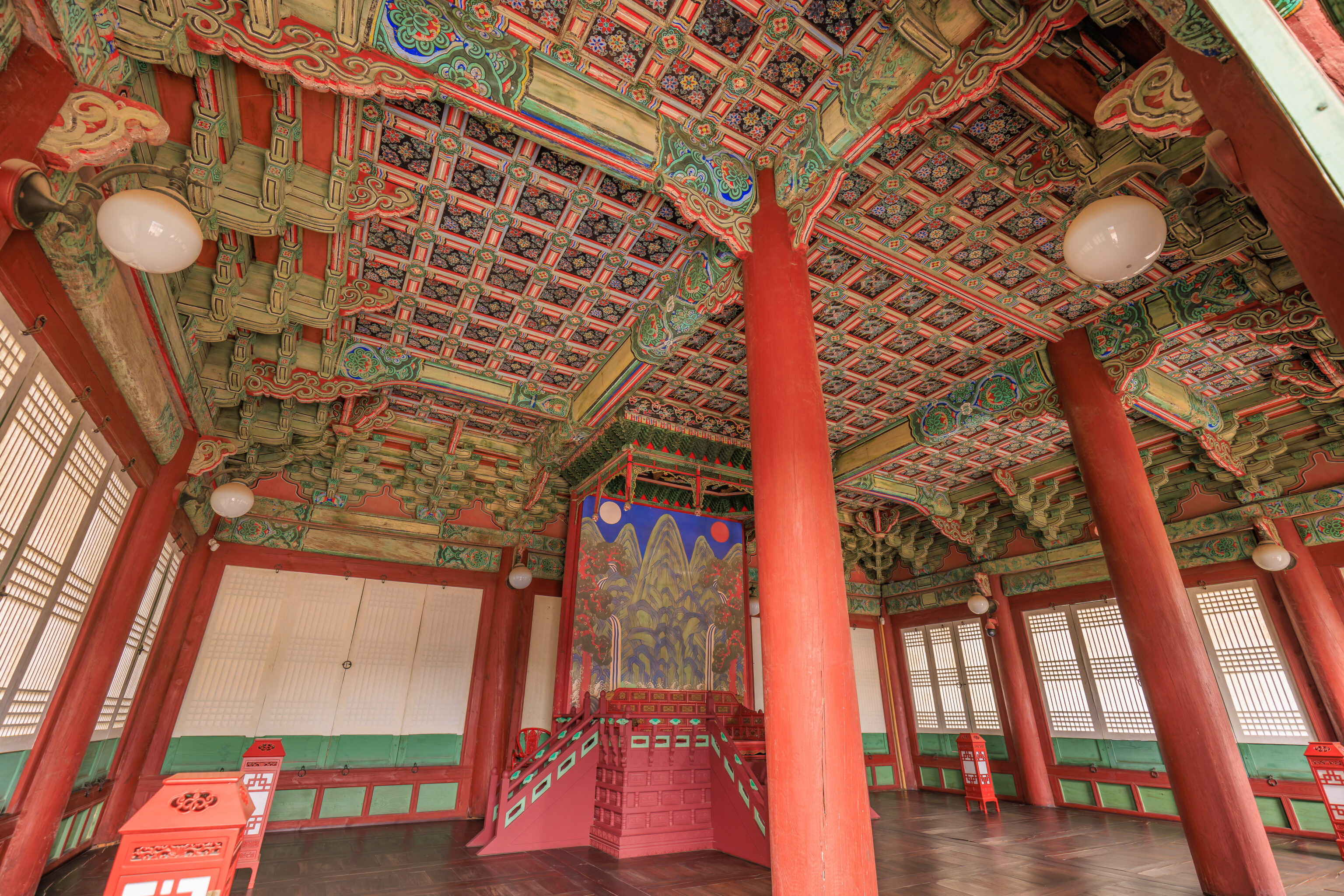
The interior appears like a much smaller and less grand version of the Injeongjeon. The Irworobongdo at the center is more compressed in width than the typical version of this painting that we’ve seen.
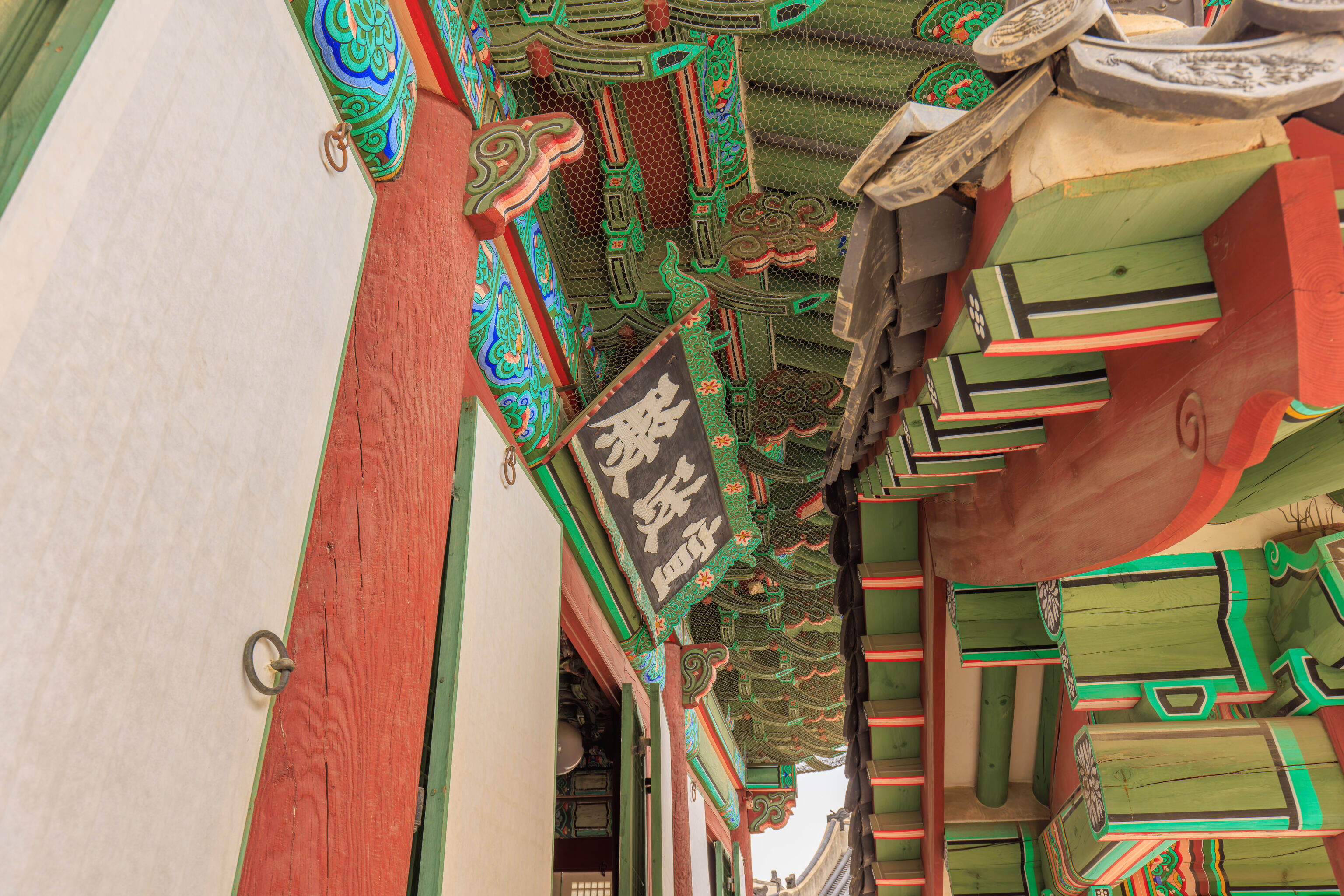
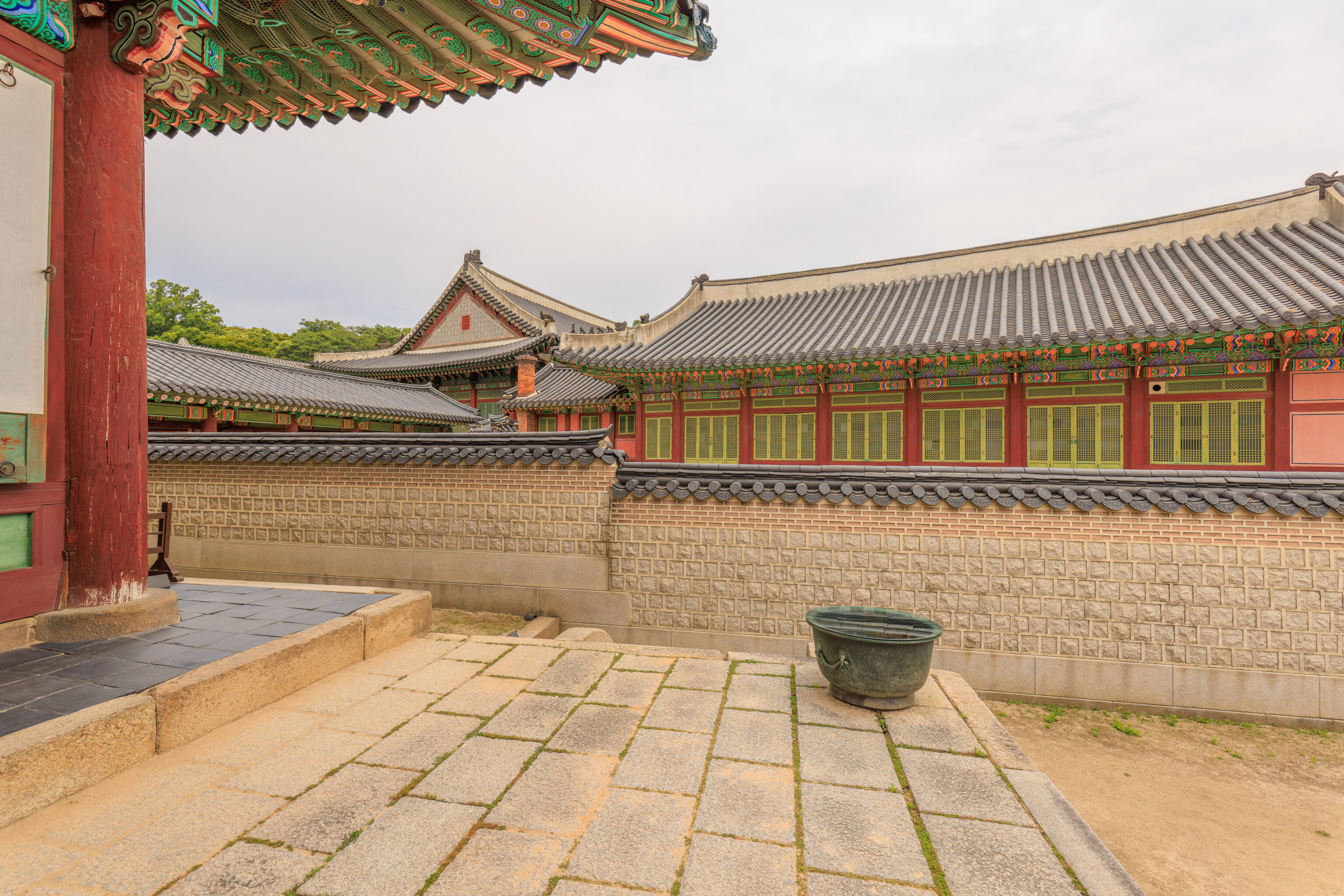
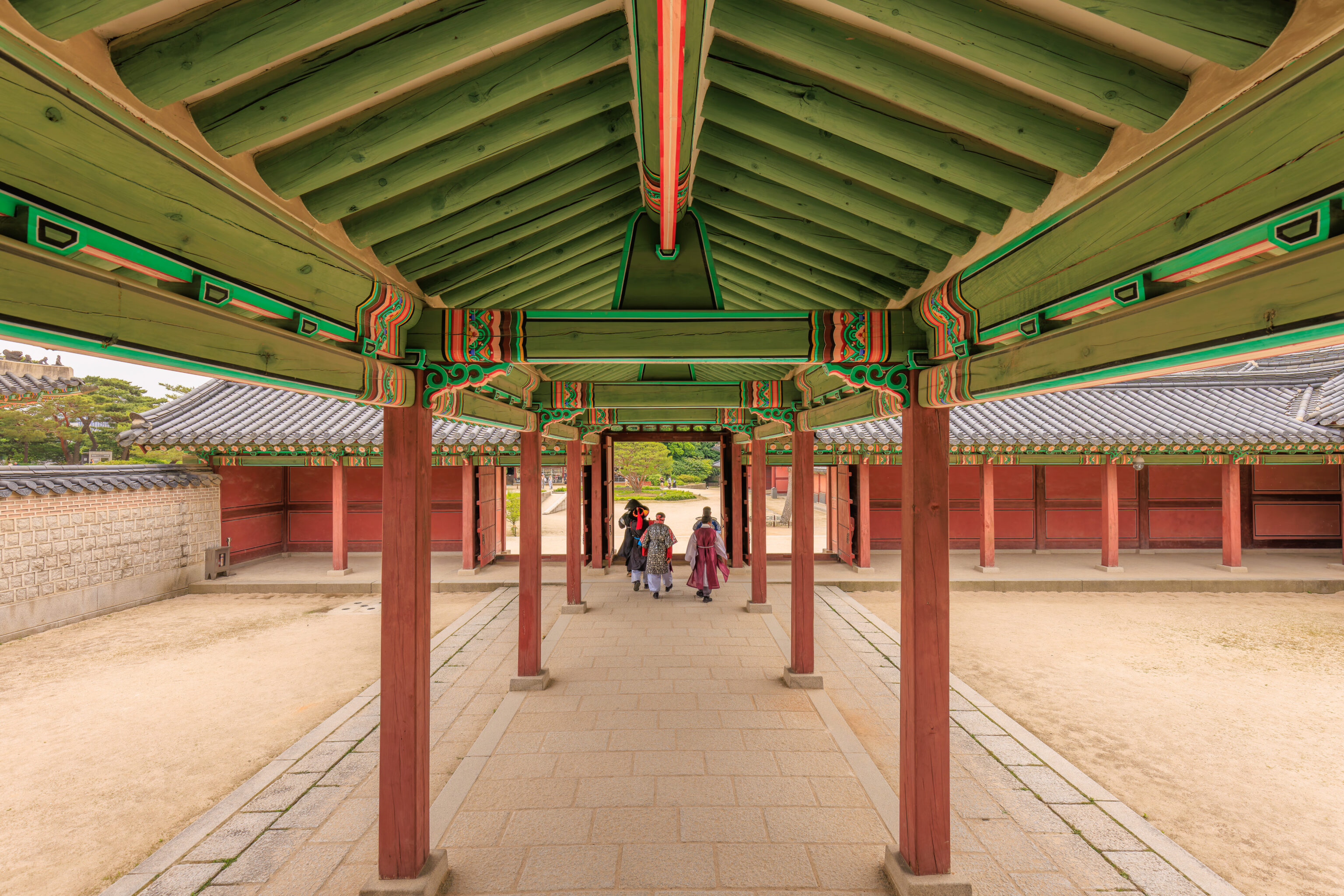
After seeing the interior, we turned around and returned to the south as there is no other path out of this area.
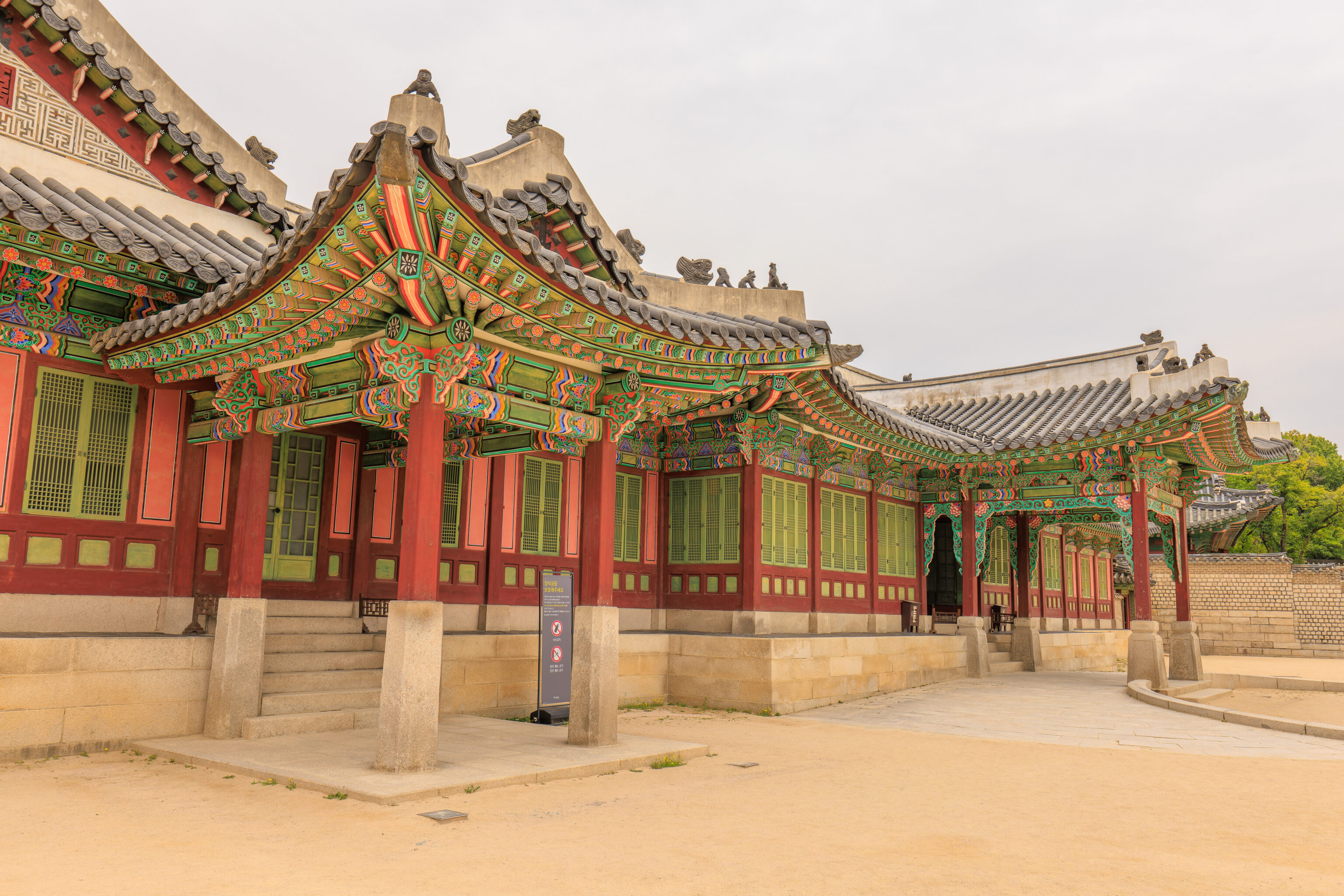
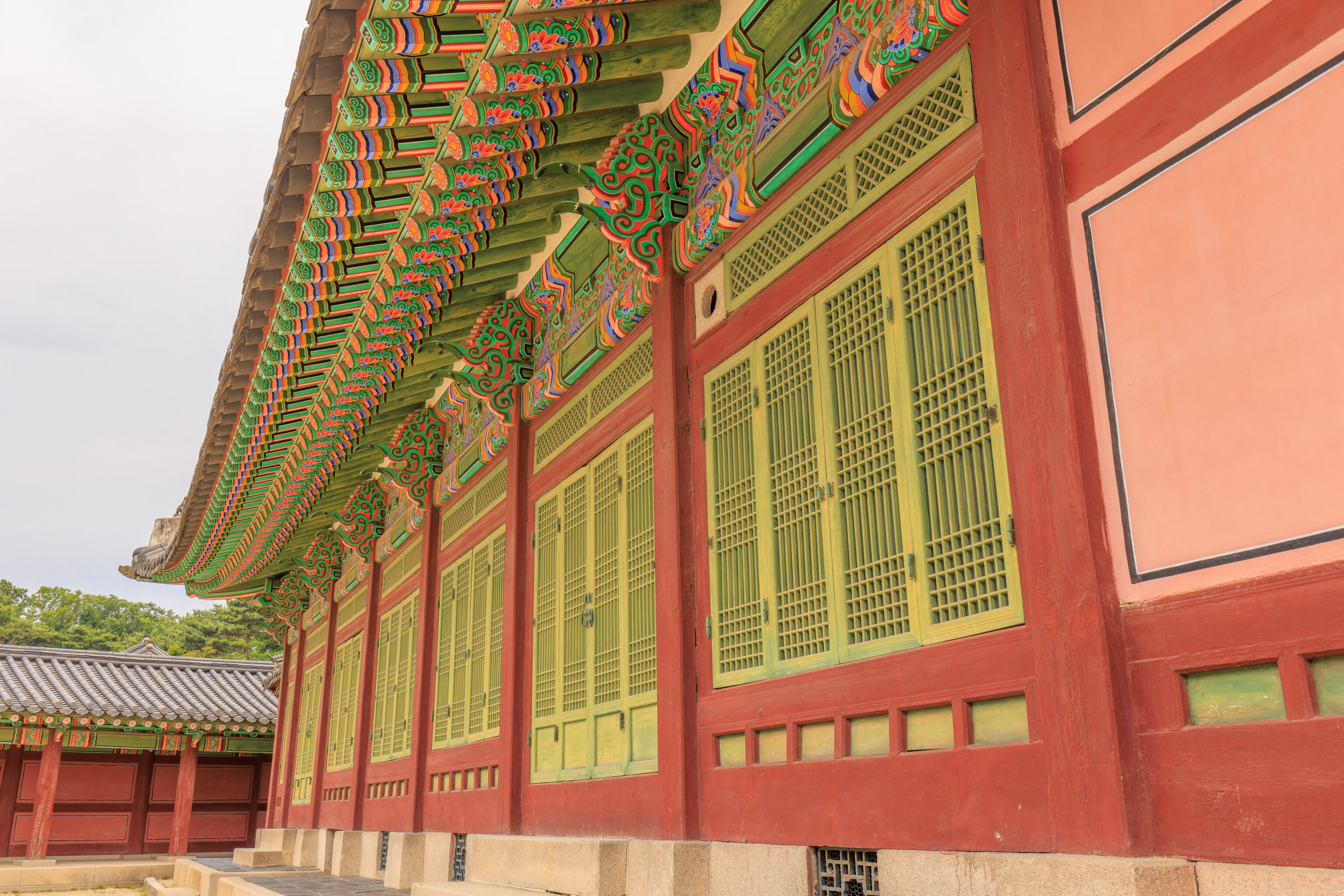
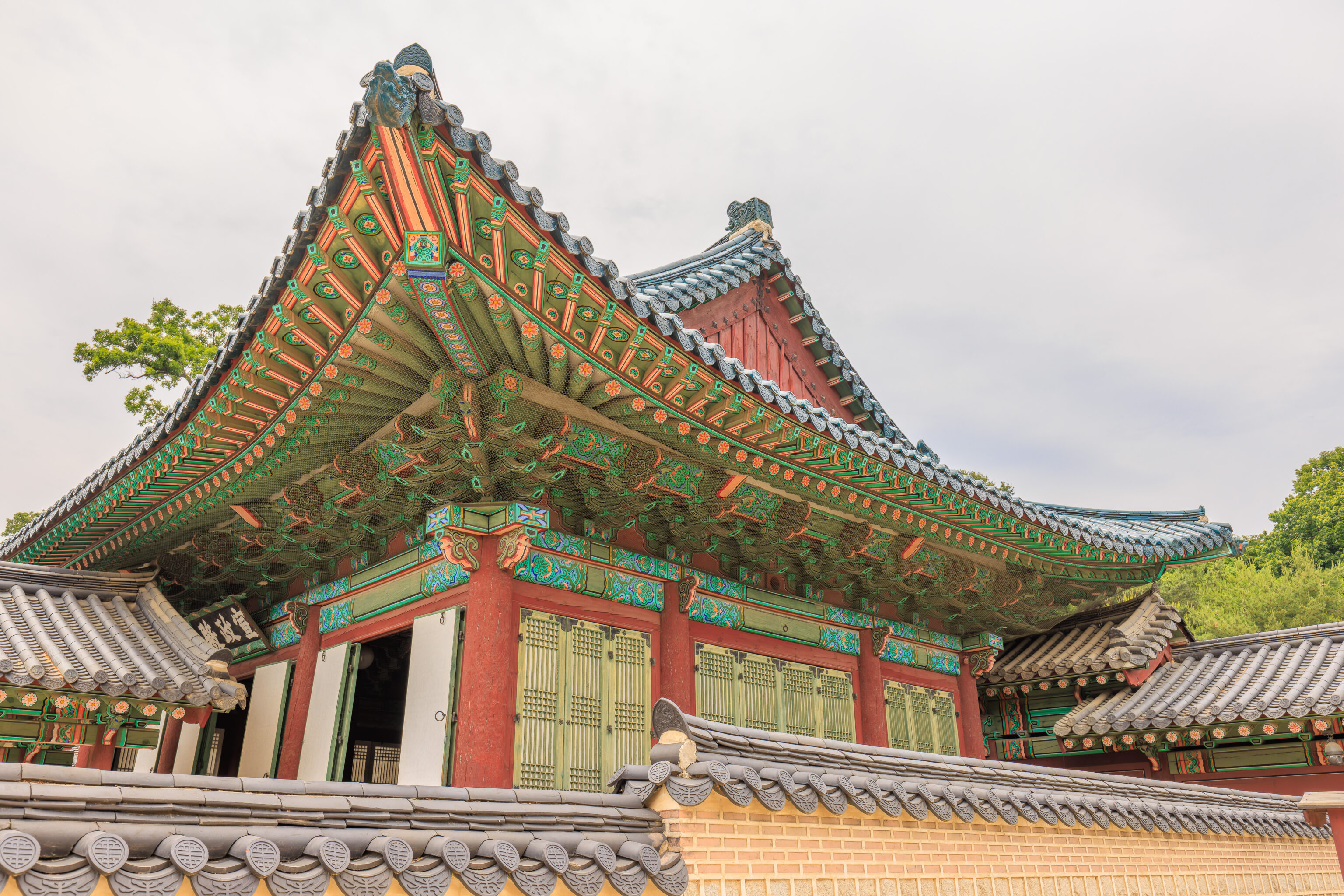
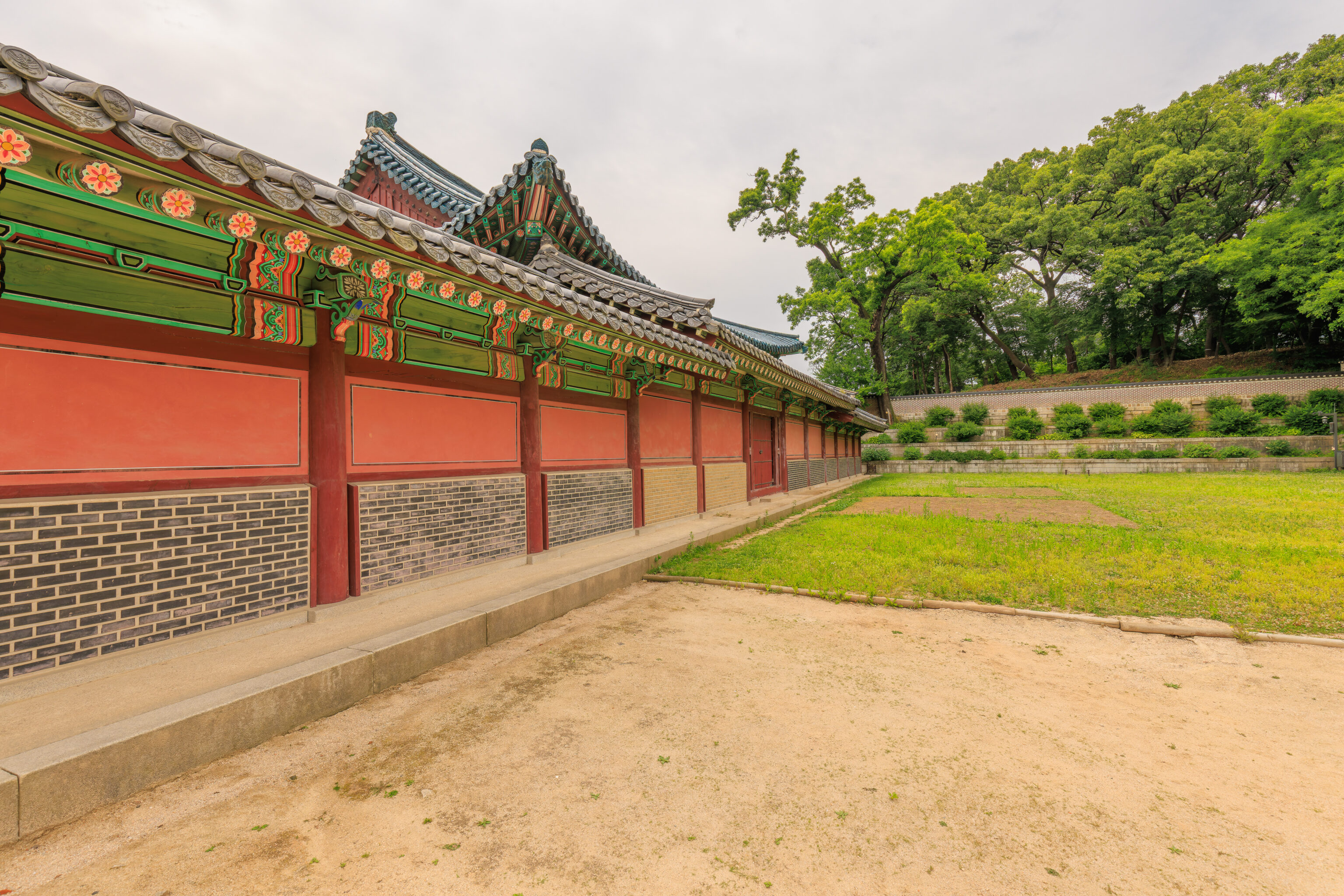
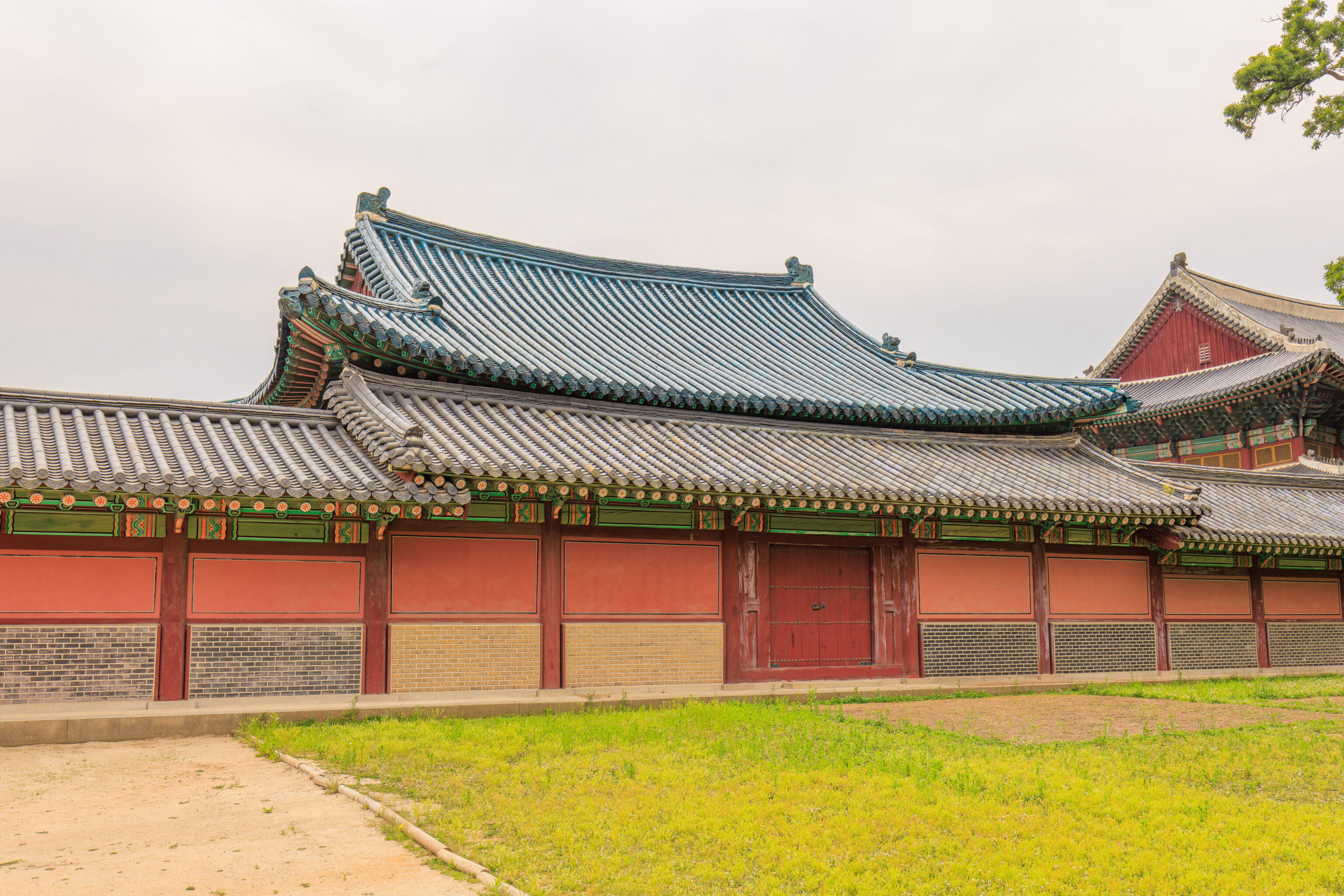
We ended up walking around to east and ended up at the rear of the Seonjeongjeon. The blue roof is a bit more visible from this angle, mostly due to the color difference compared to the other visible roofs.
A sign in this area explained what was previously here:
There used to be three buildings in this site: Bogyeongdang, Taehwadang, and Jaedeokdang. Bogyeongdang Hall would belong to the kings' daily office during the early Joseon Dynasty. After the 17th century, it is assumed that these buildings served as the residence for concubines. This site was where King Yeongjo, the 21st king, was born and the birth mother of King Sunjo, the 23rd king, passed away in 1822. All buildings were destroyed around 1908.
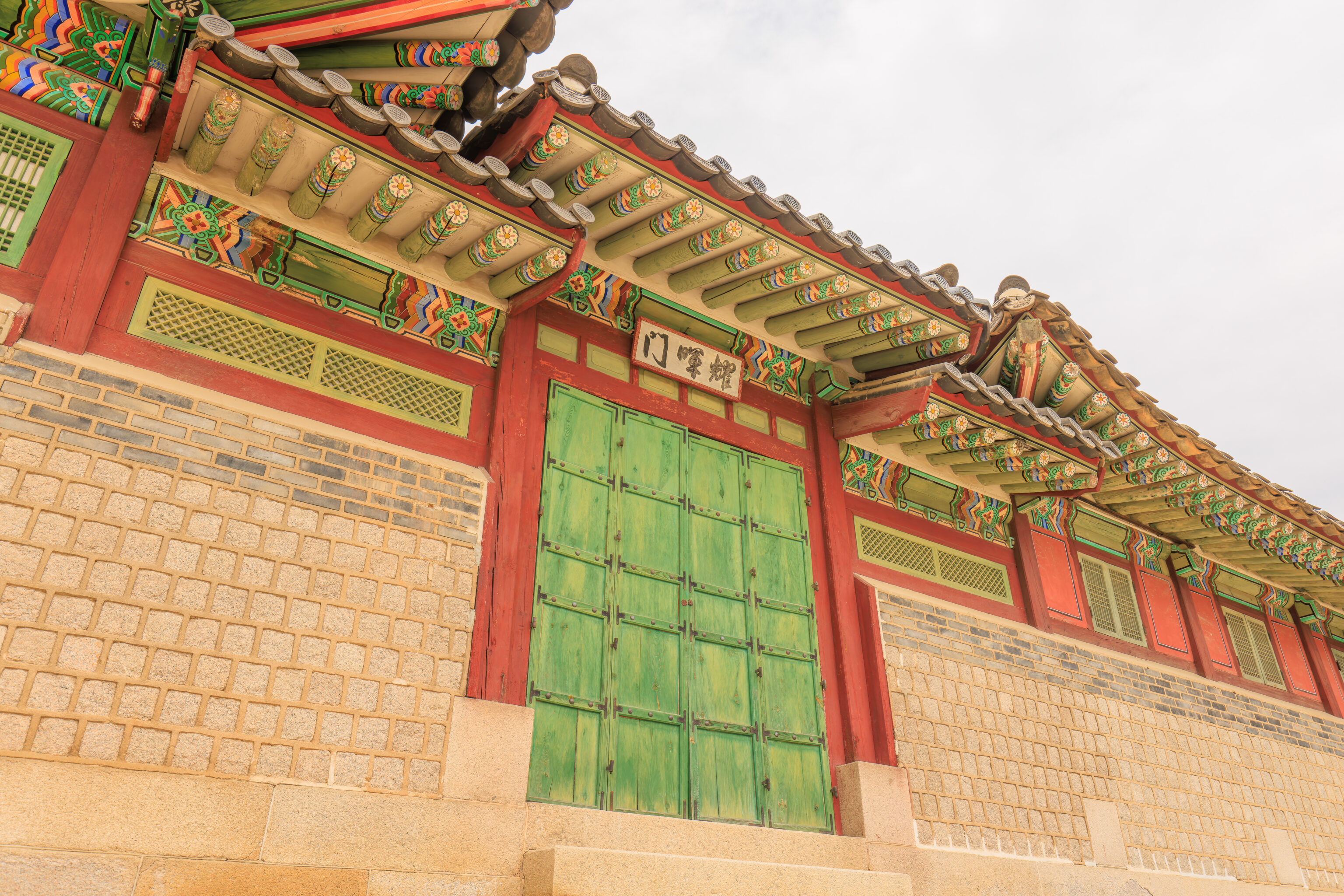
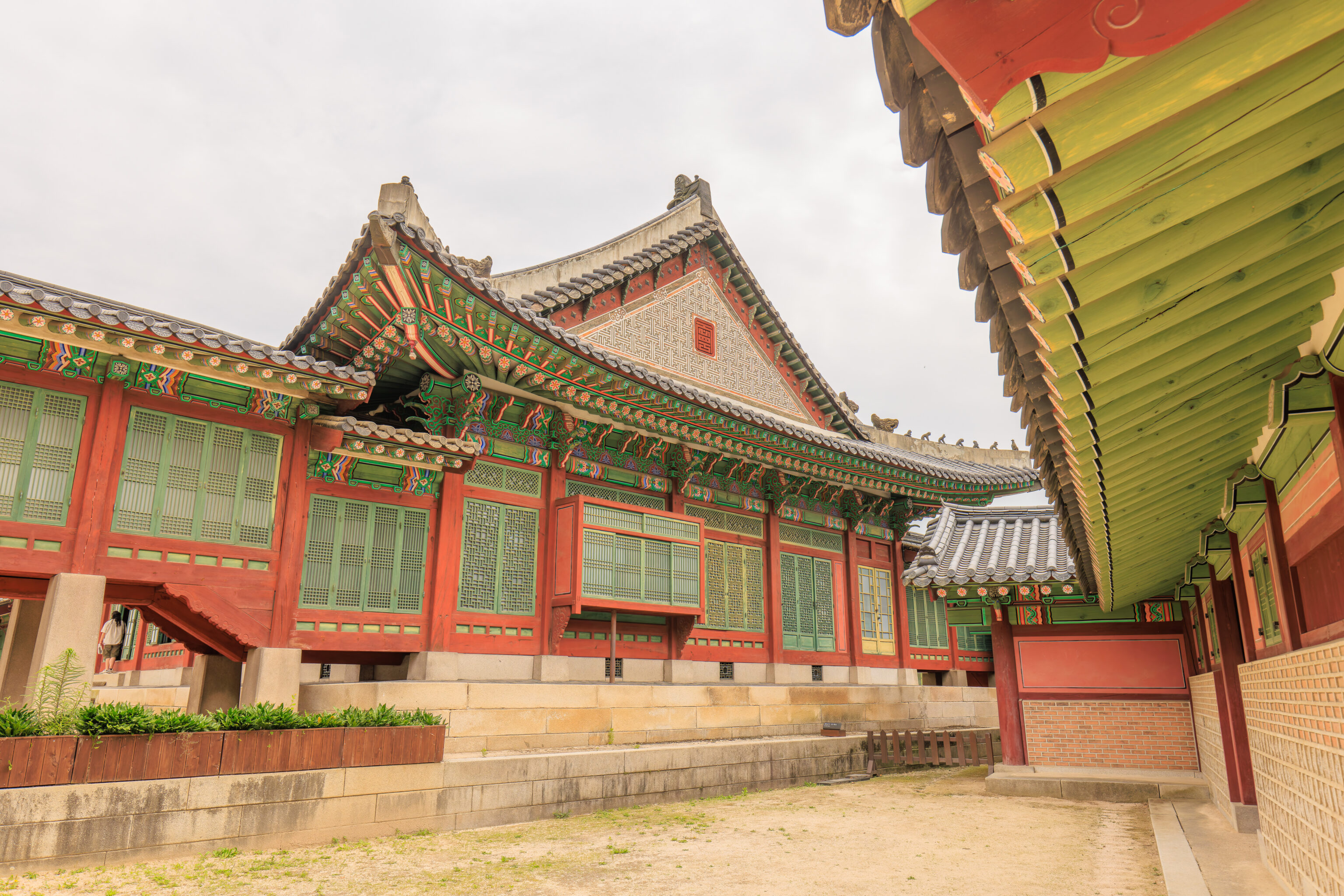
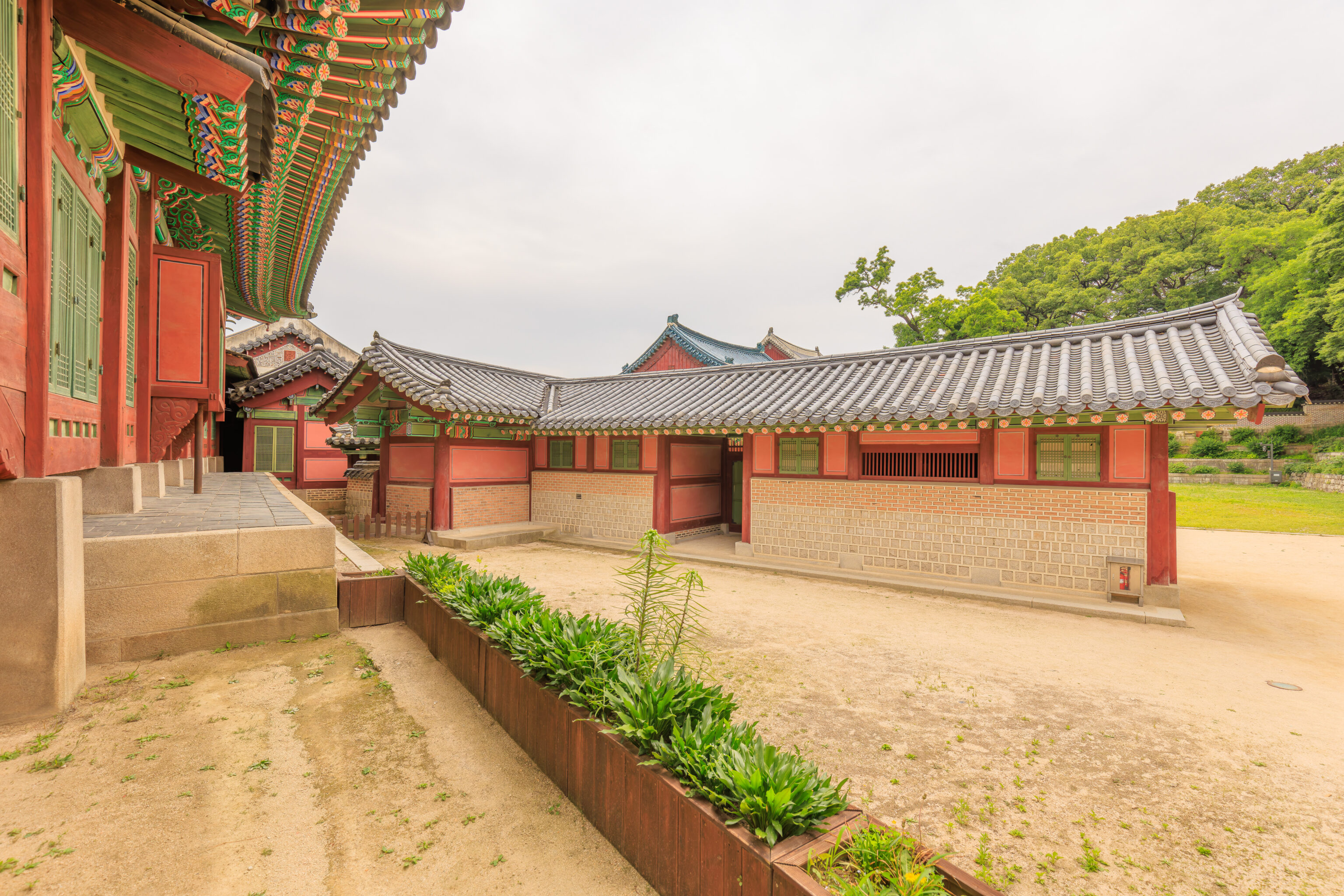
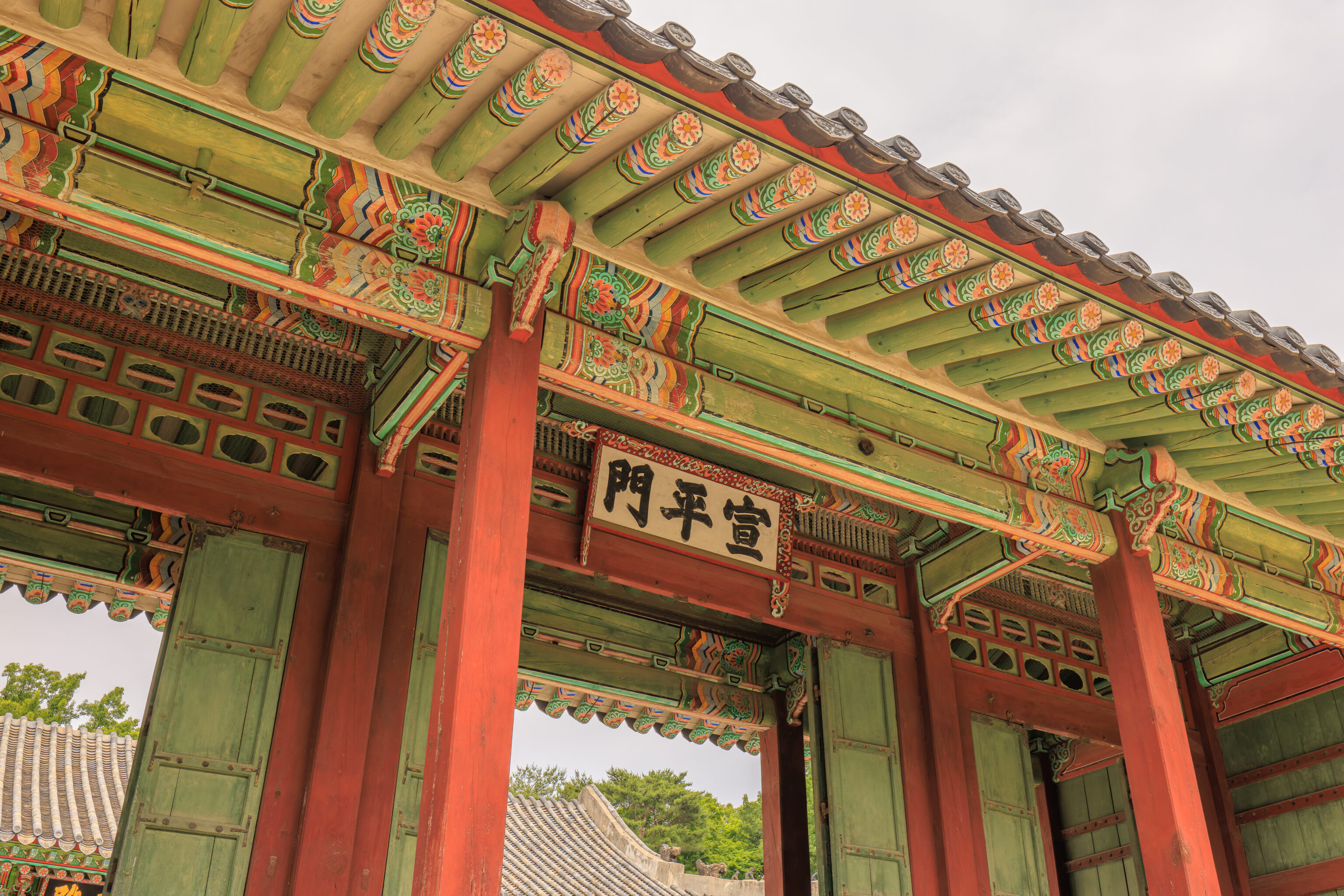
We walked to the east, ending up in front of a gate. A sign describes the area beyond the gate:
This was the official royal residence and banquets were often held here as well. It contained separate living quarters for the king and the queen equipped with ondol floors (the Korean underfloor heating system), and a gathering hall was located in between. The Joseon Dynasty government held its last cabinet meeting here in 1910 to deliberate Japan's annexation of Korea. The original building was destroyed by fire in 1917 and the present building was reconstructed in 1920 using materials removed from the queen's quarters at Gyeongbokgung Palace. The decorations, murals, and the frames of sliding doors all remain in good condition. At the rear of the hall is an elevated floor from which a terraced garden can be viewed.
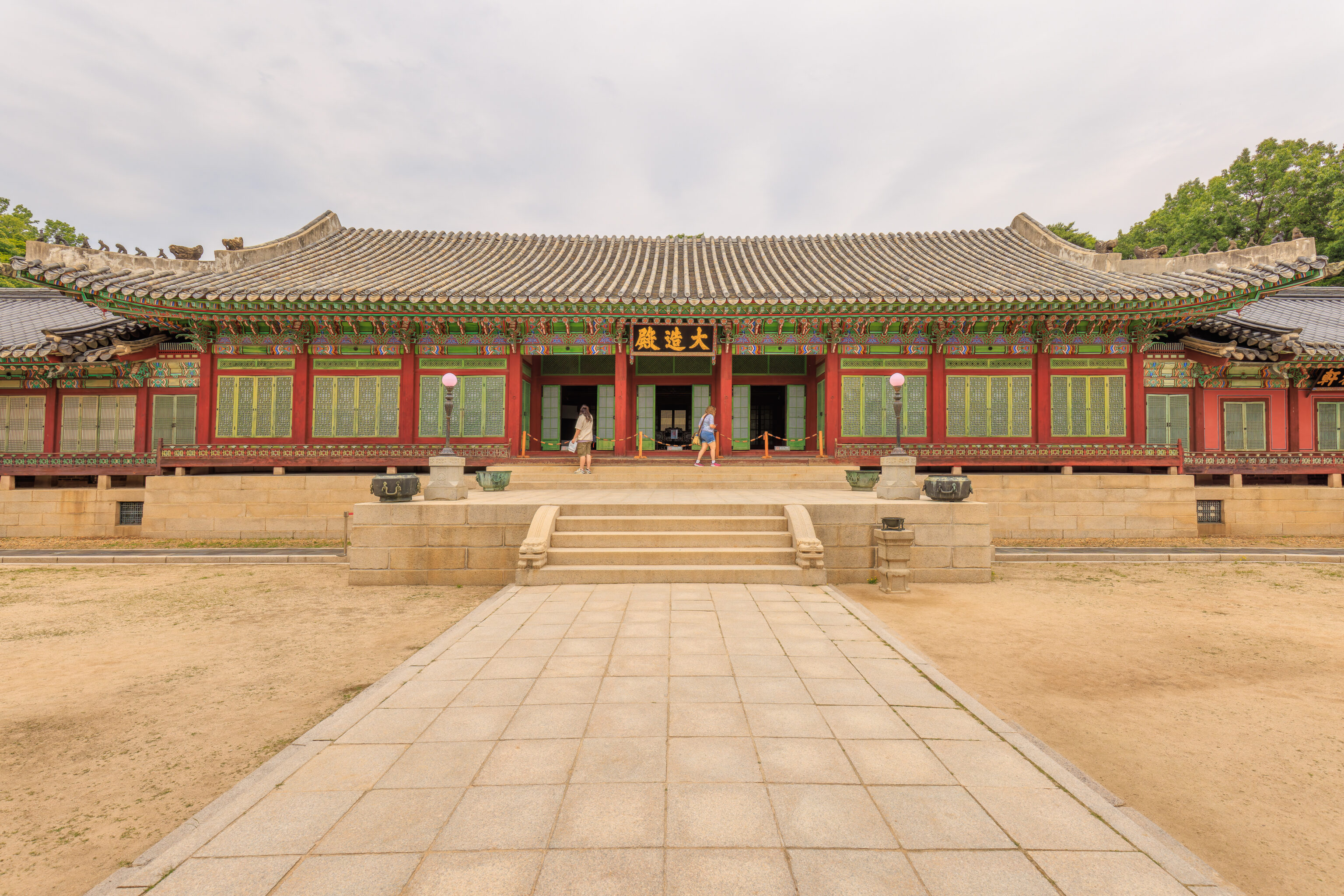
The building the previous sign was referring to is this one, the 대조전 Daejojeon. This building was the Queen’s residence and is described in detail on the linked page.
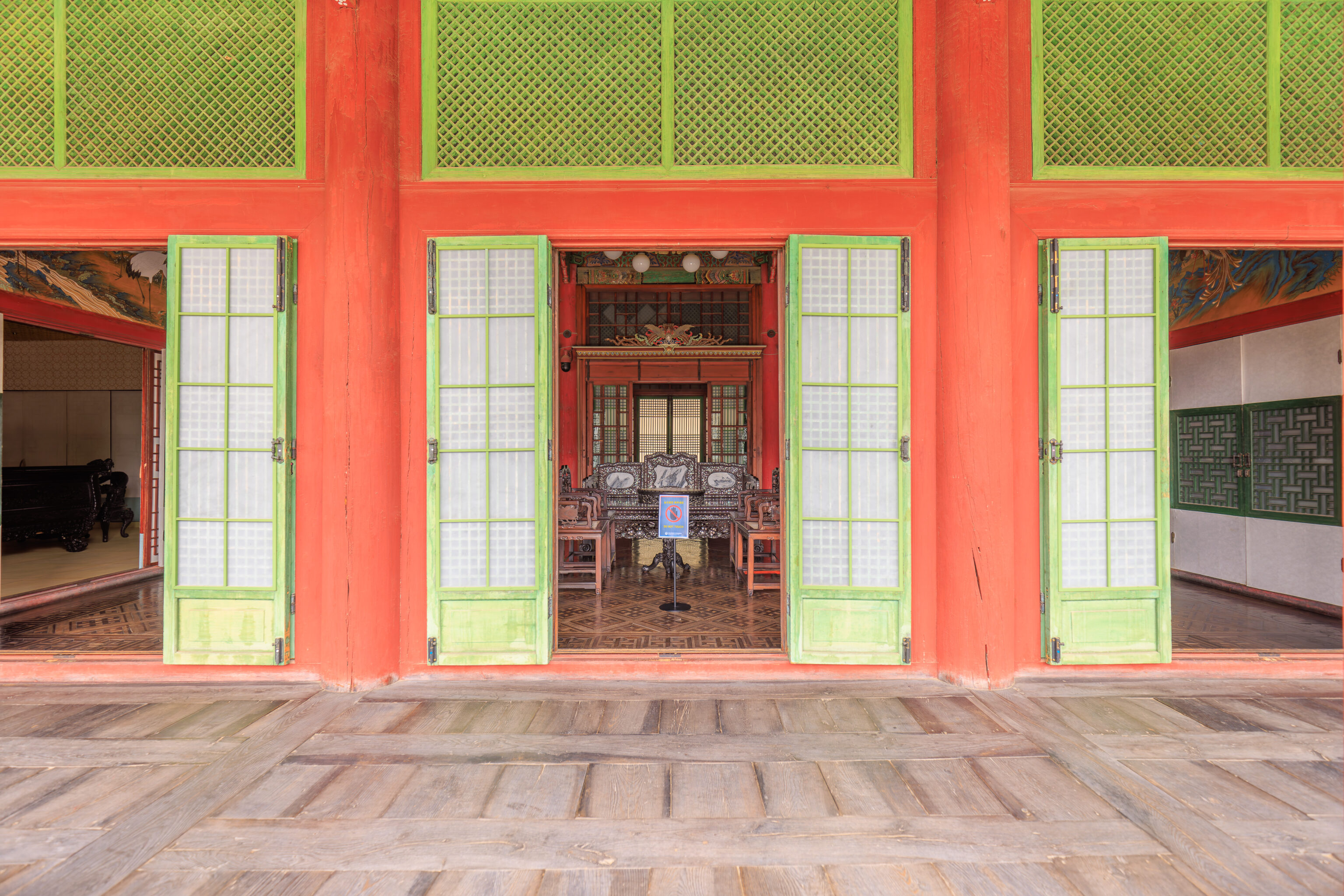
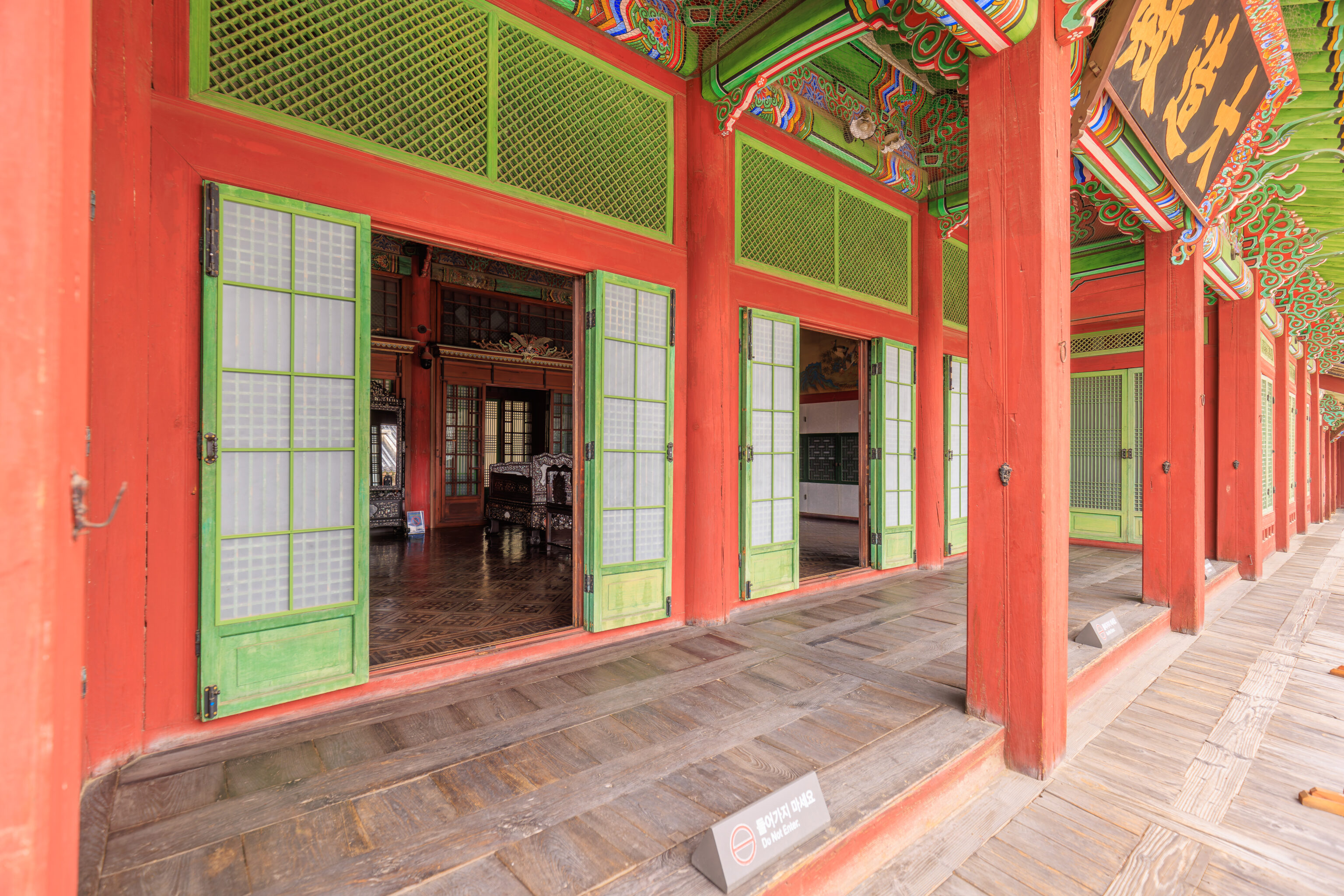
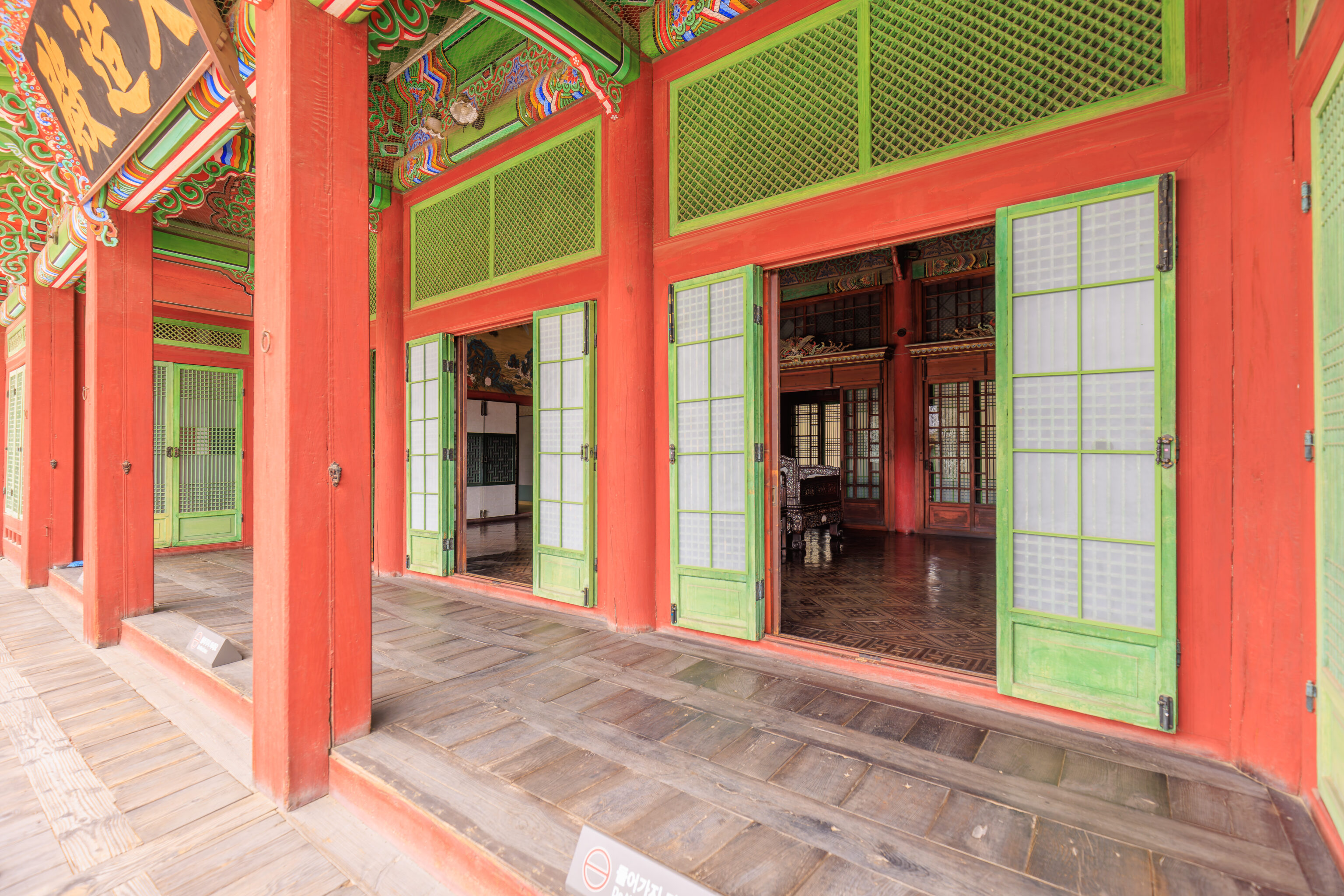
There was some furniture inside of the Daejojeon, though, we couldn’t get close enough to get a good look at what was in there.
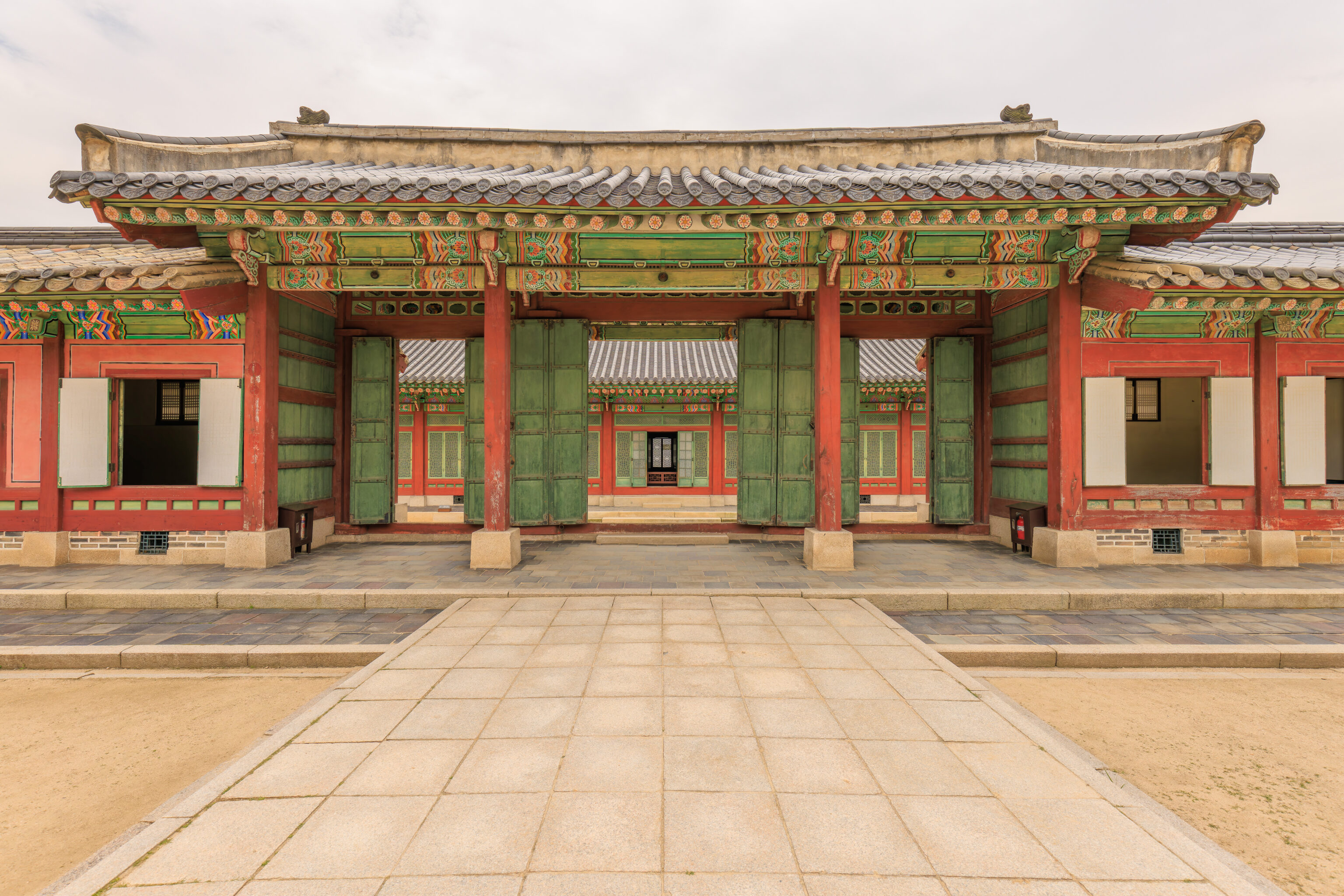
The gate, as it appears from the Daejojeon.
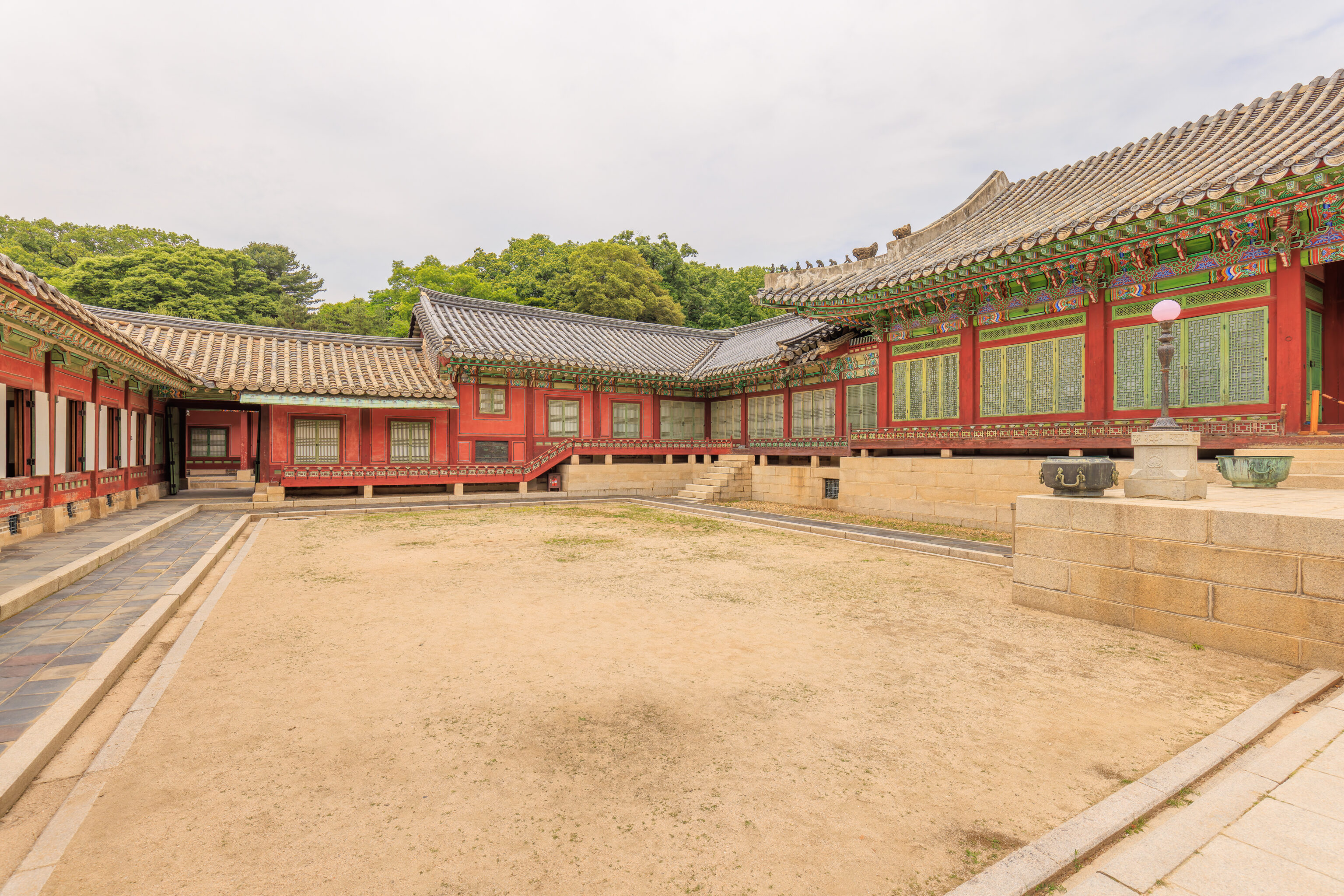
We probably should have went to see if the passageway on the left goes anywhere.
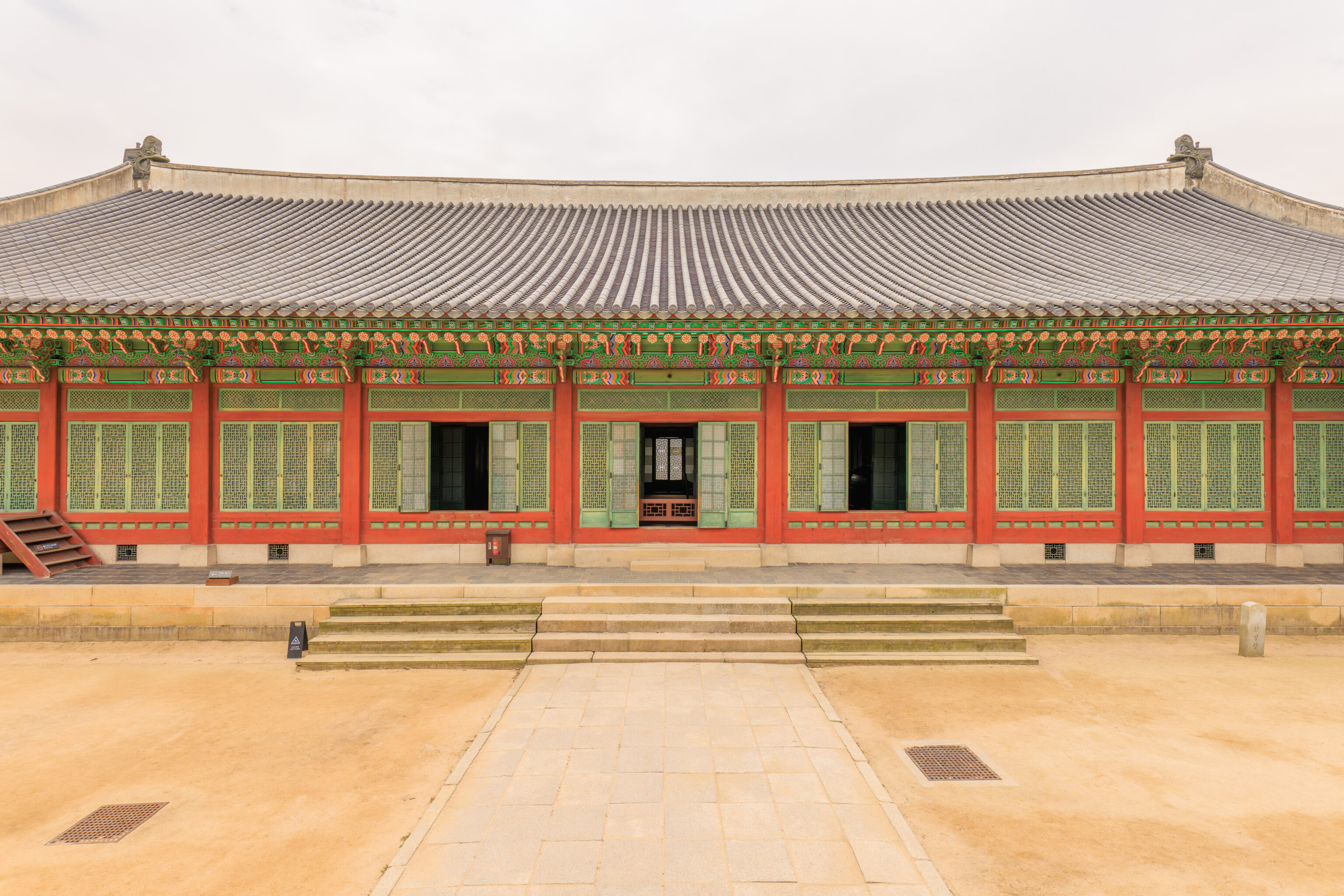
Instead, we turned around to take a look at this building to the south on the other side of the gate where we entered from.
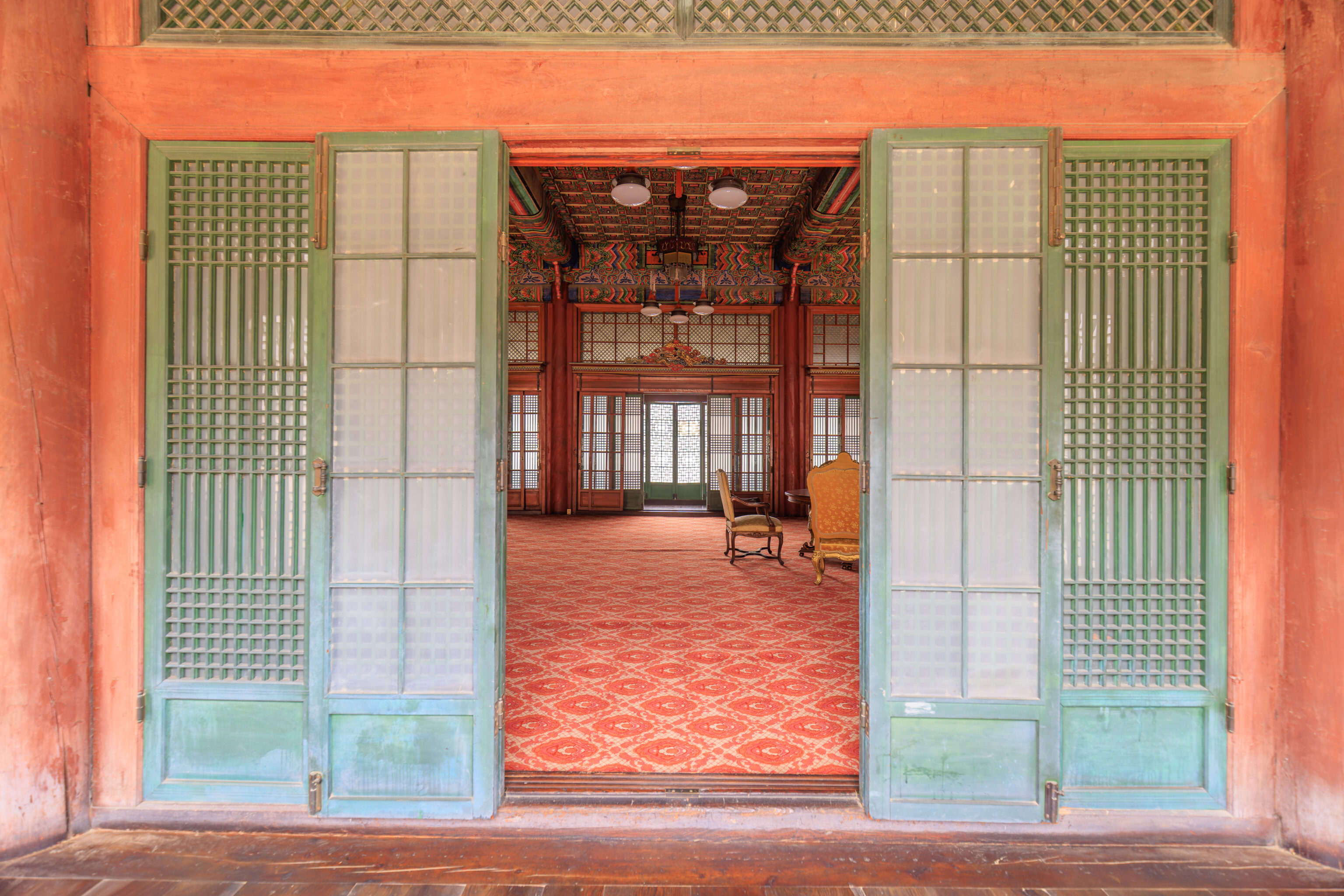
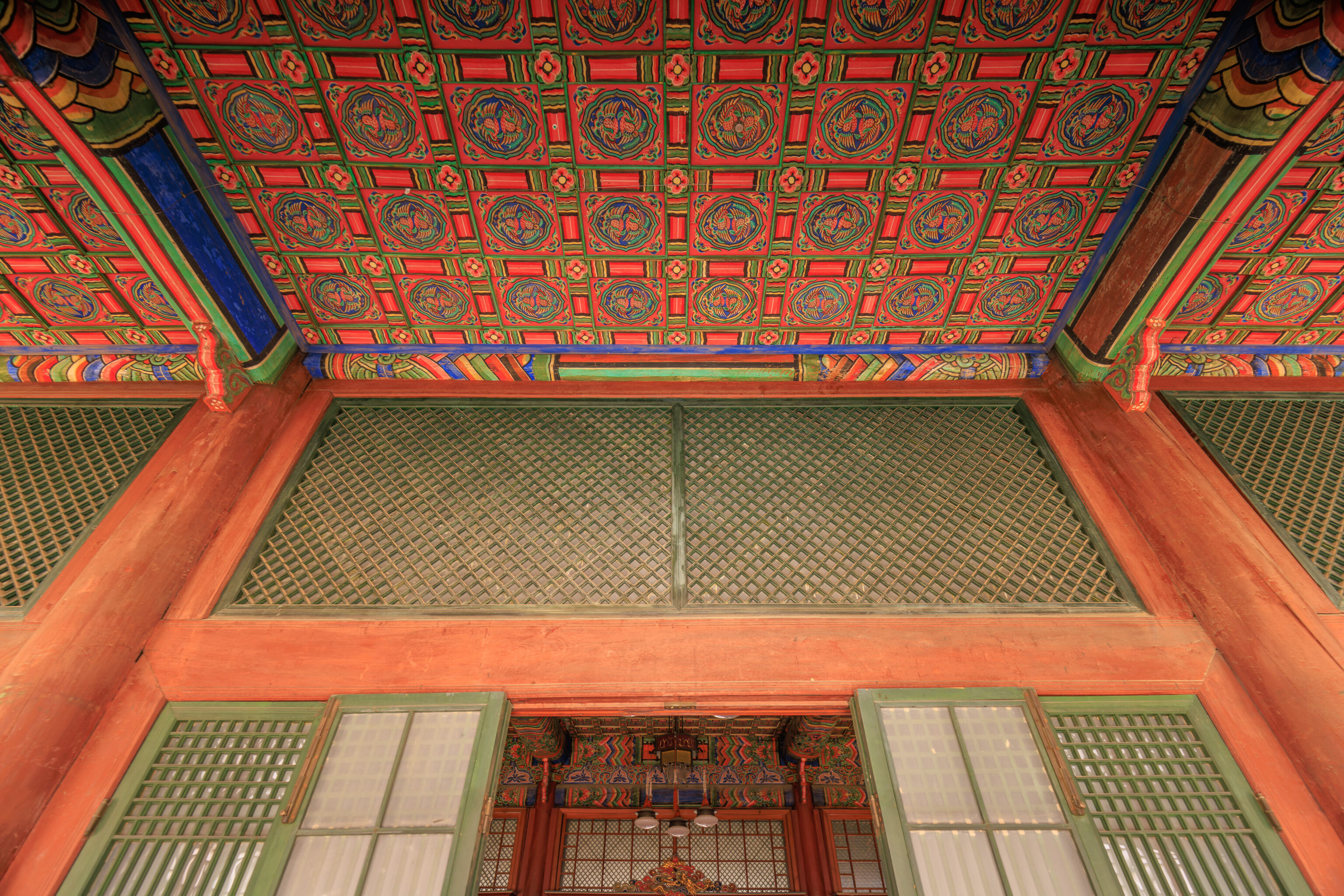
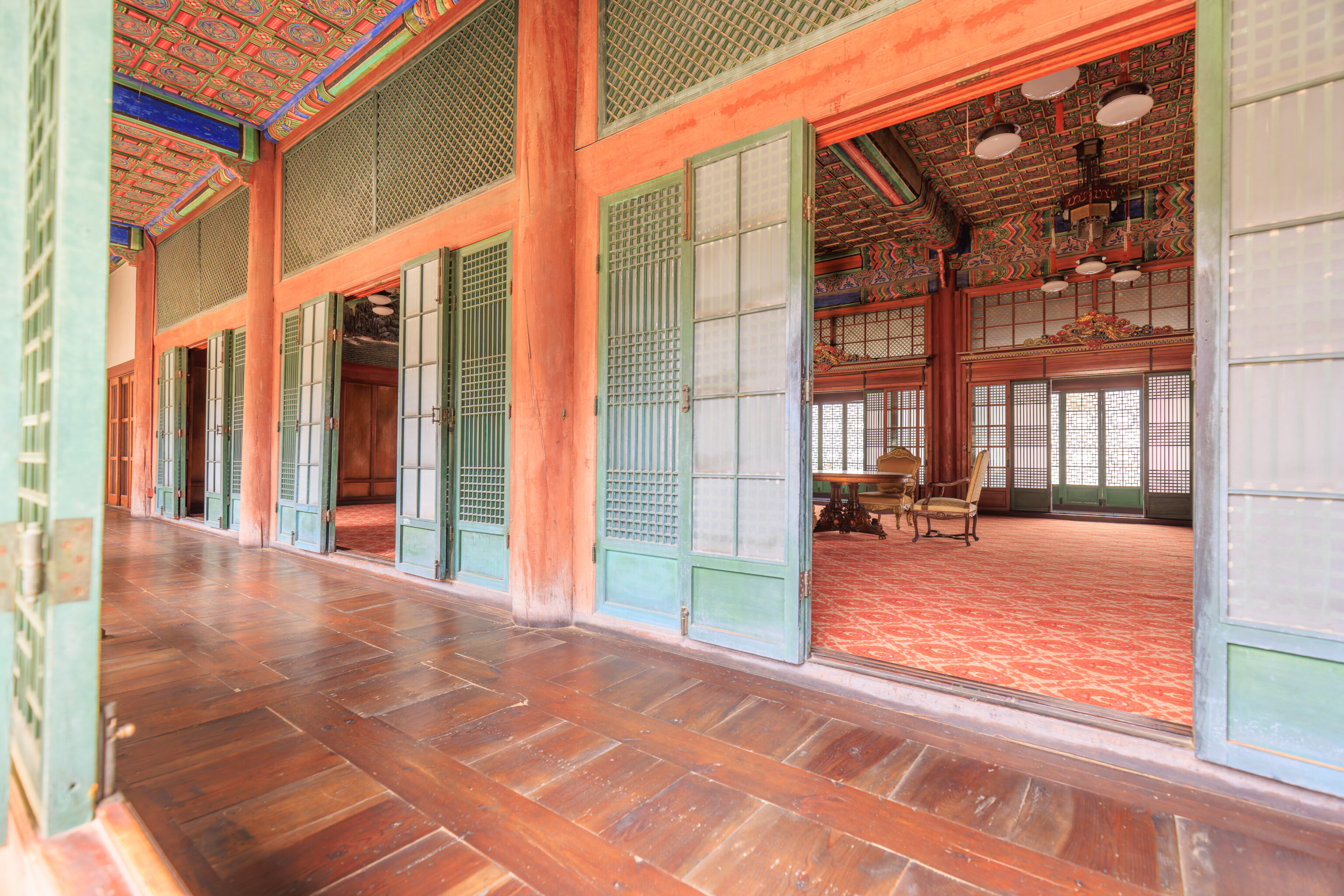
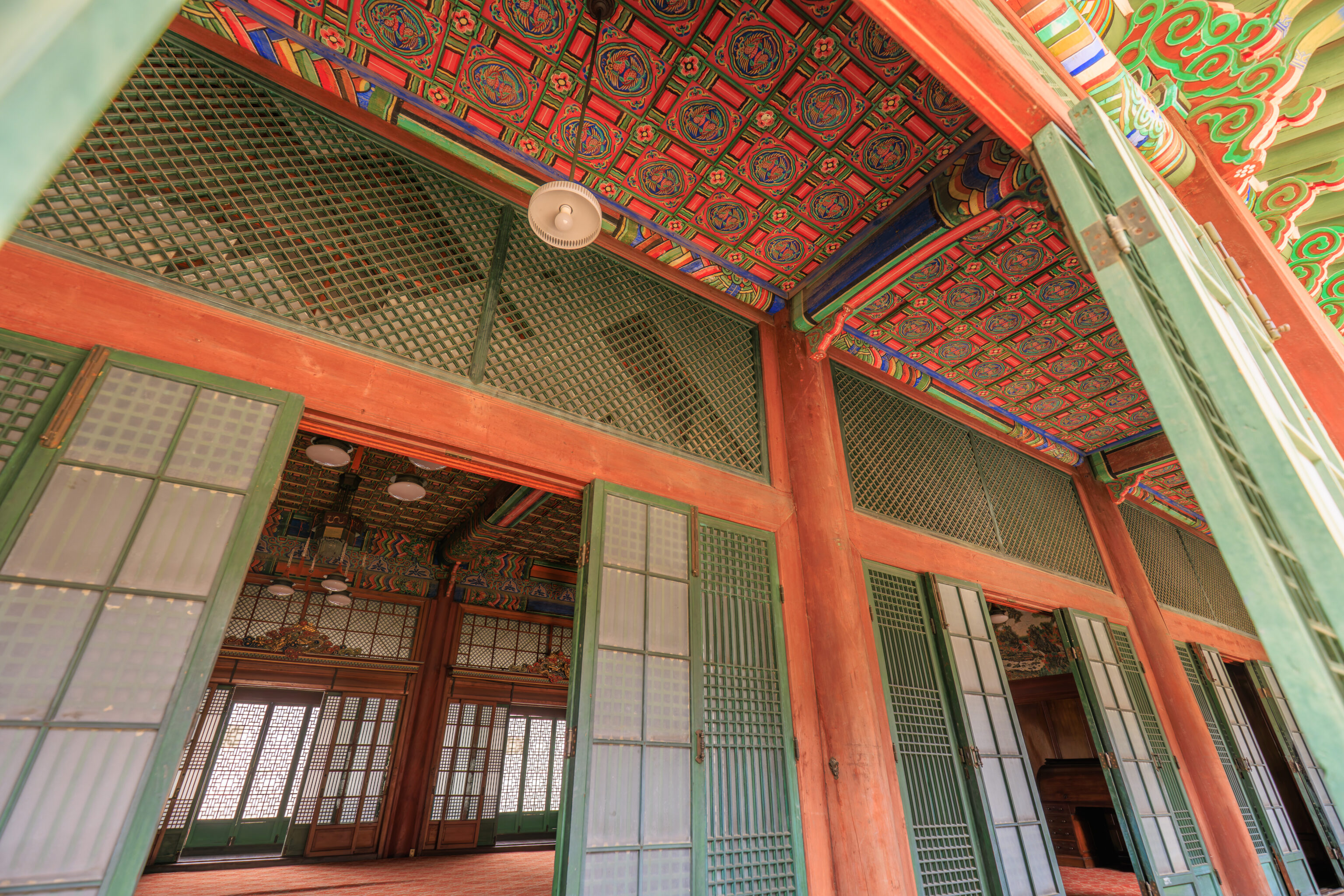
This is actually the rear of the 희정당 Huijeongdang. The interior of the building has carpet and some relatively modern furniture. As described on the linked page, this was formerly the King’s residence but later became an office and reception hall.
We briefly saw the west side and some of the front of this building and its curved driveway when we left the Seonjeongjeon and looped around to the back via the east side. The Huijeongdang is immediately to the east of the Seonjeongjeon.
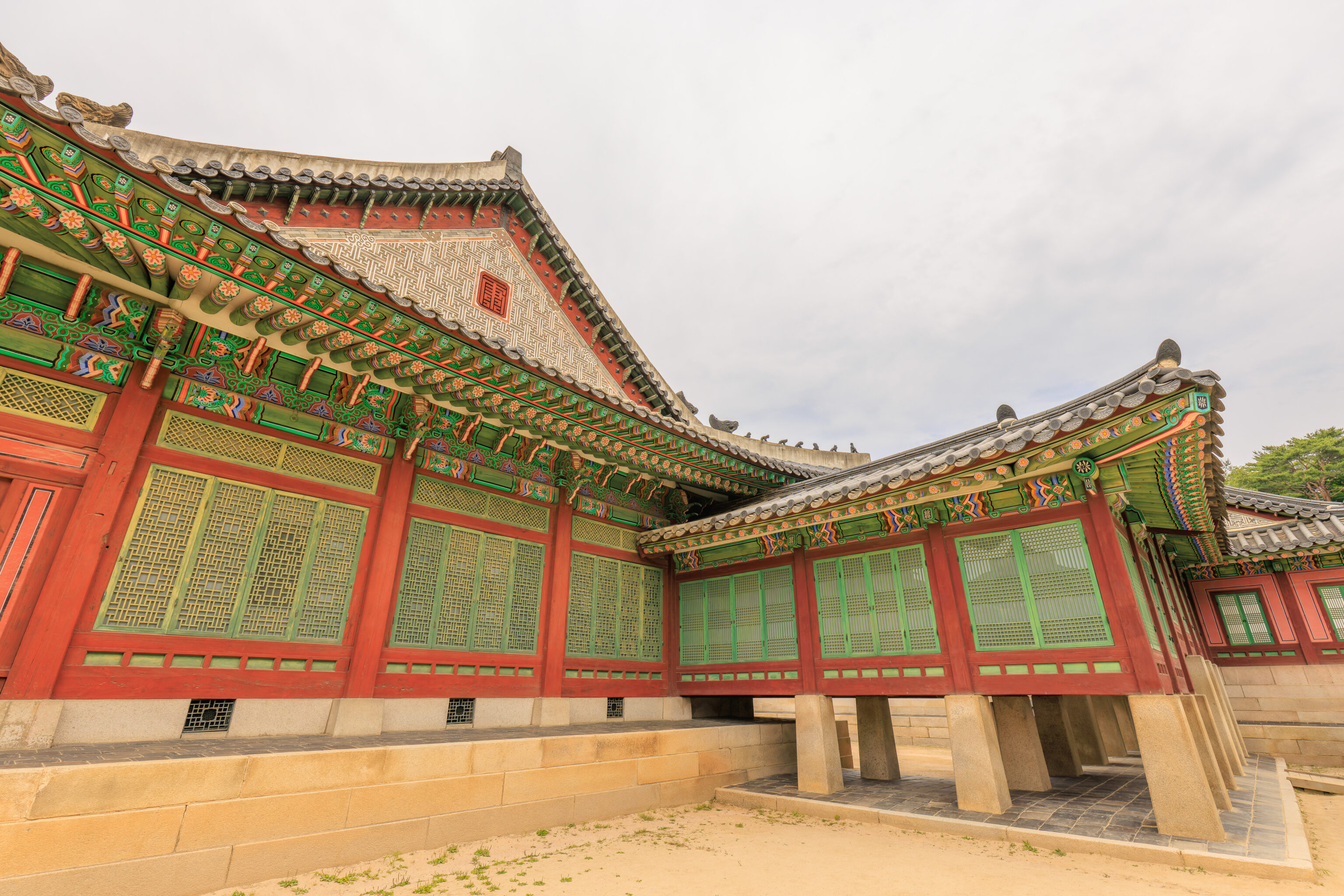
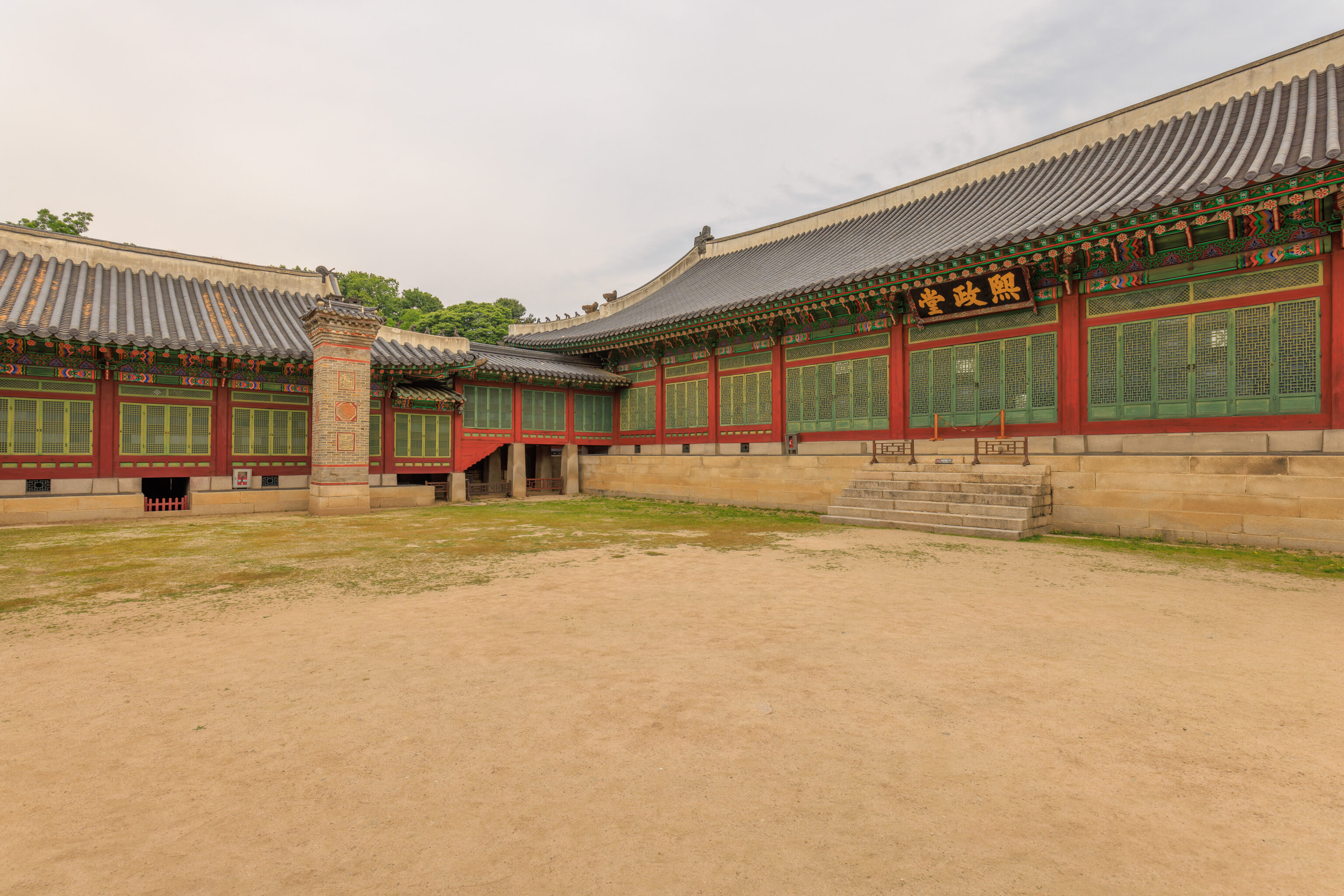
We walked around and into the central courtyard of the Huijeongdang.
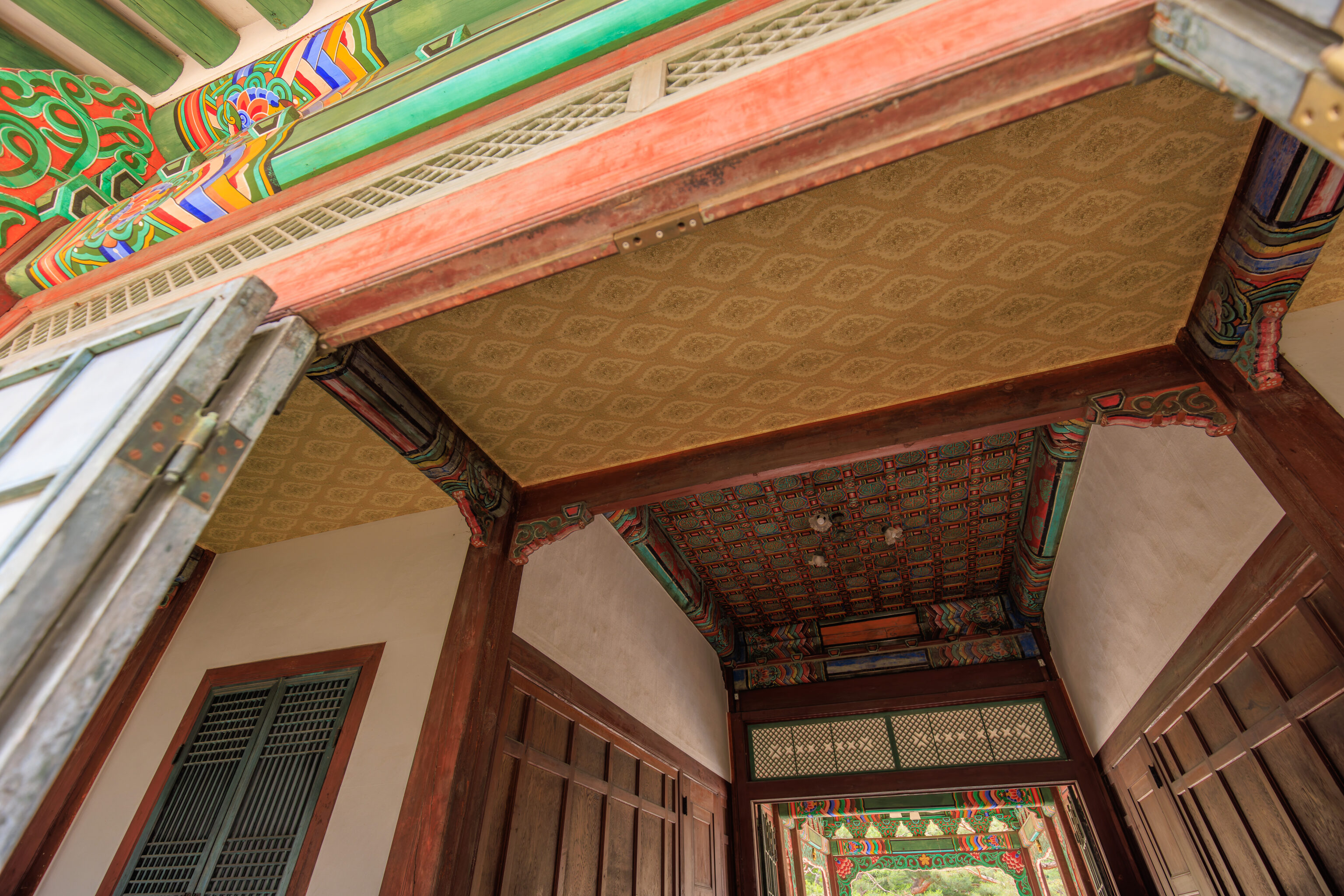
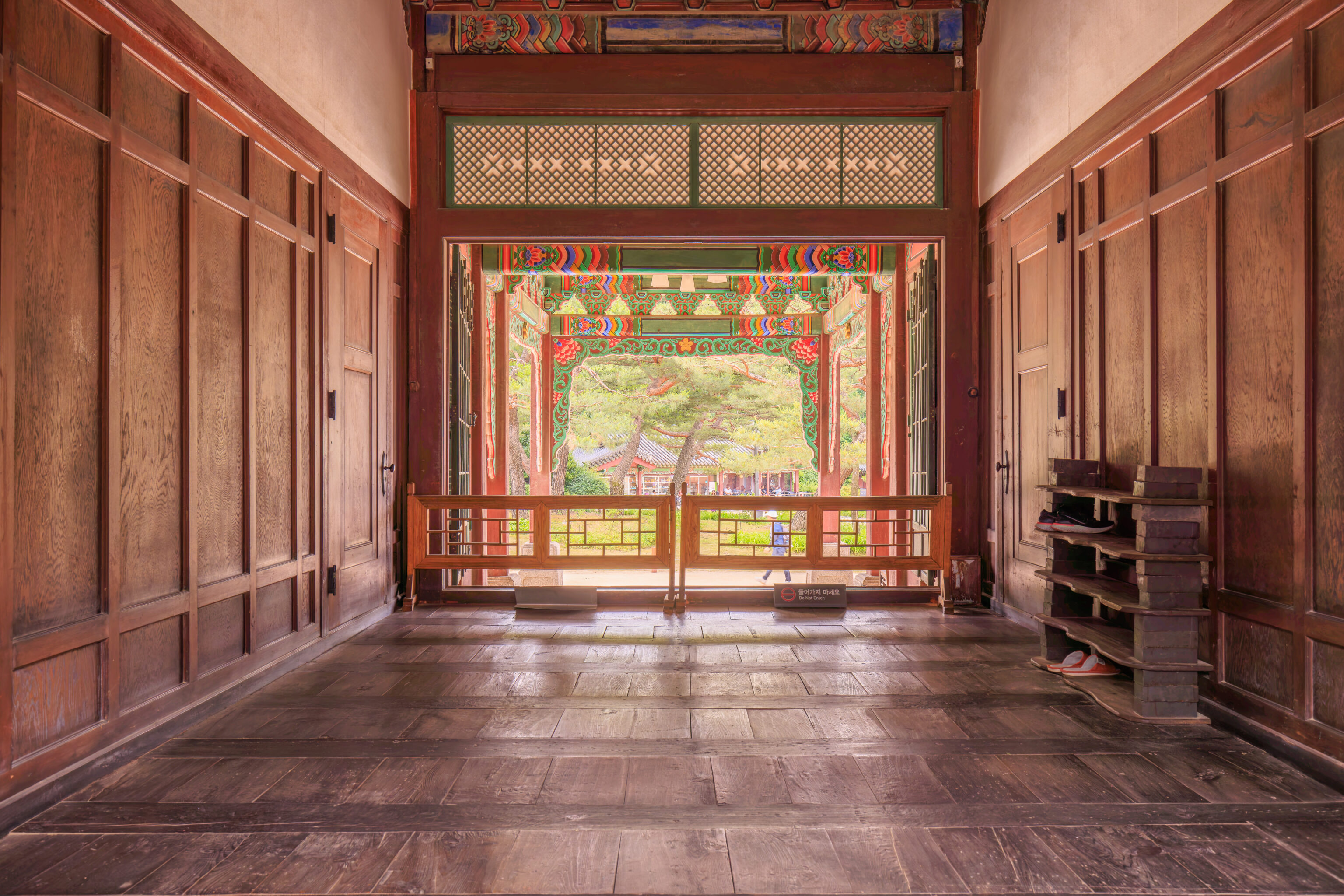
From here, we looked through the southern part of the Huijeongdang. Mostly just an empty corridor.
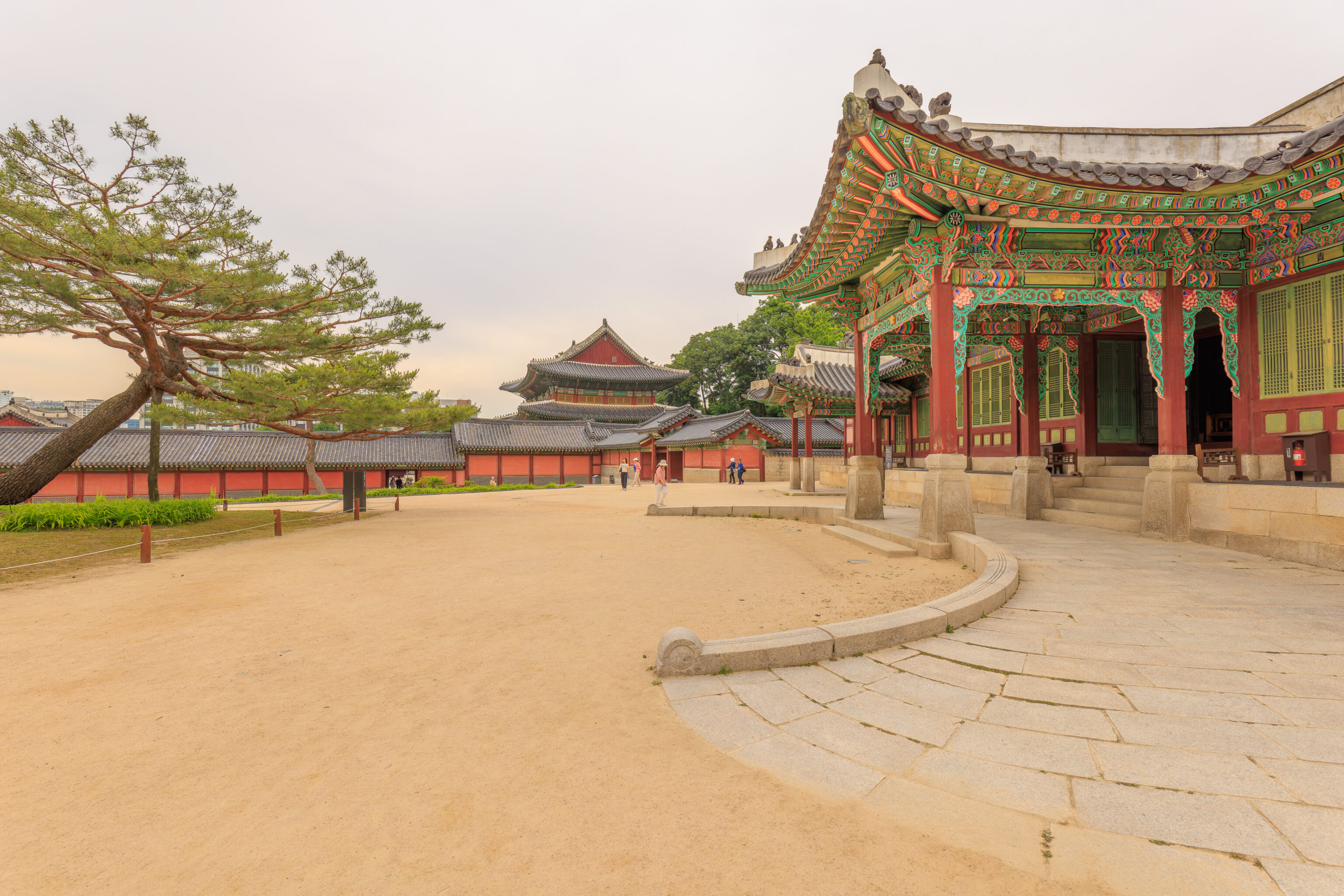
We came out on the east side of the Huijeongdang. The curved driveway is visible here!
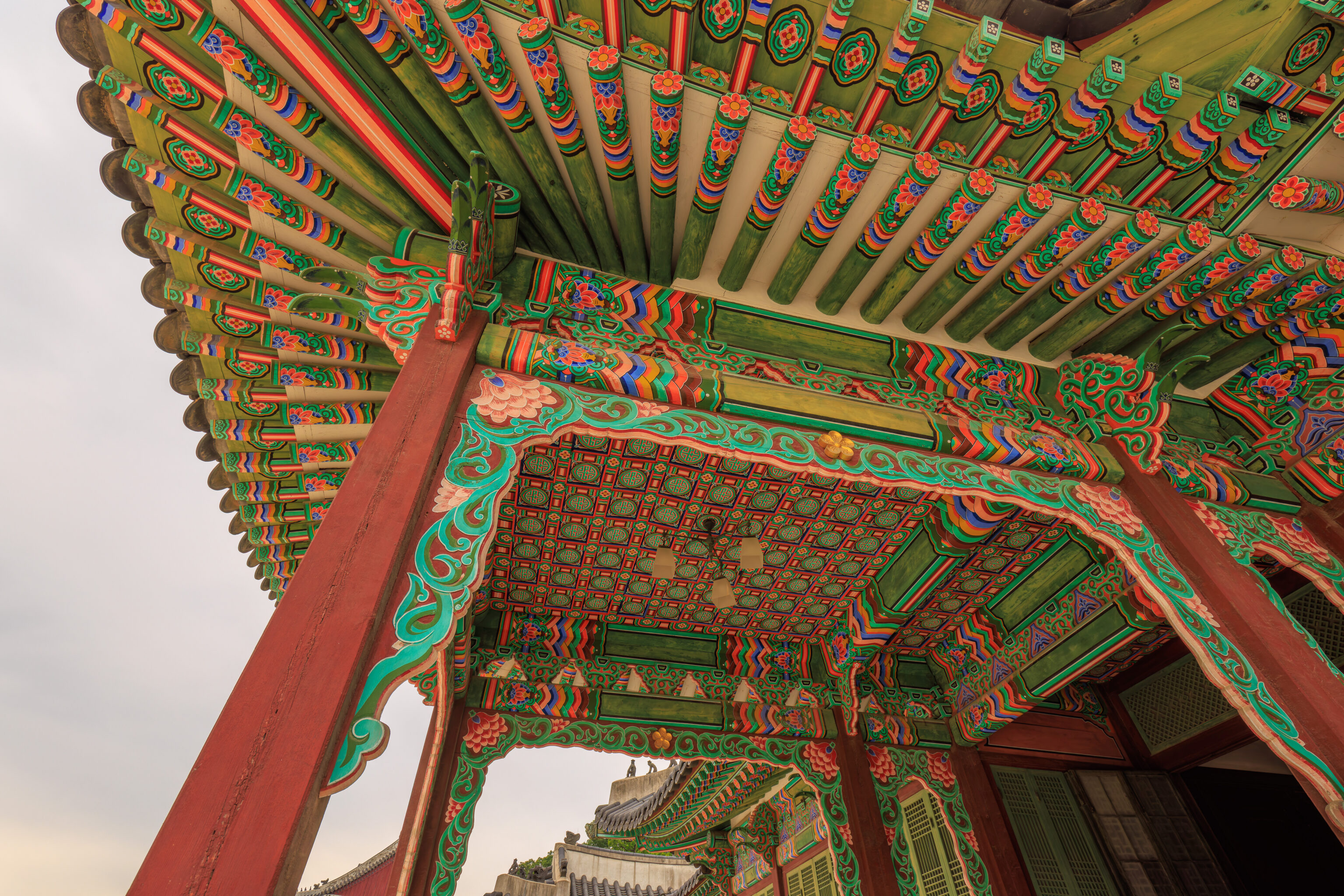
This roof over the entrance looks pretty traditional.
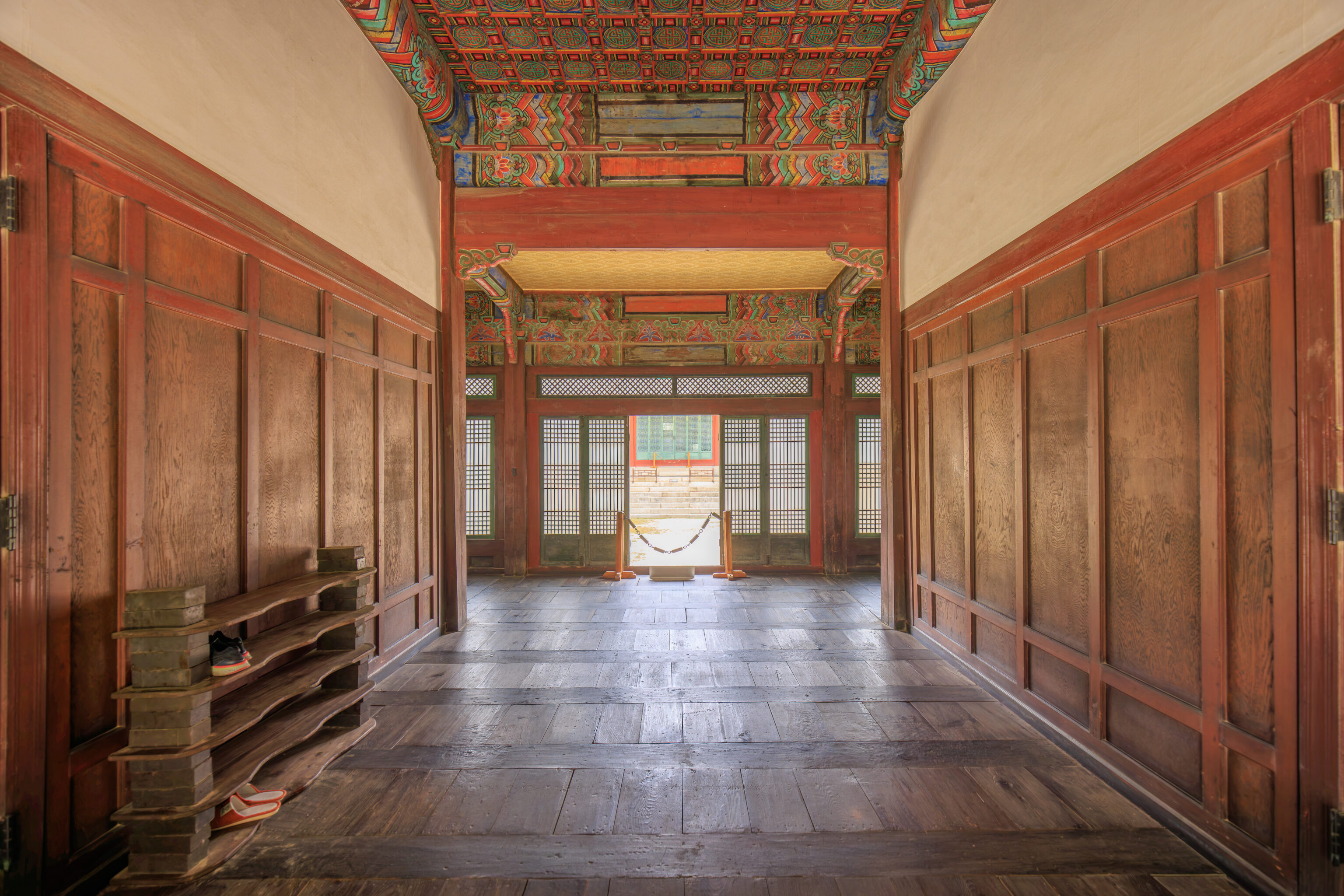
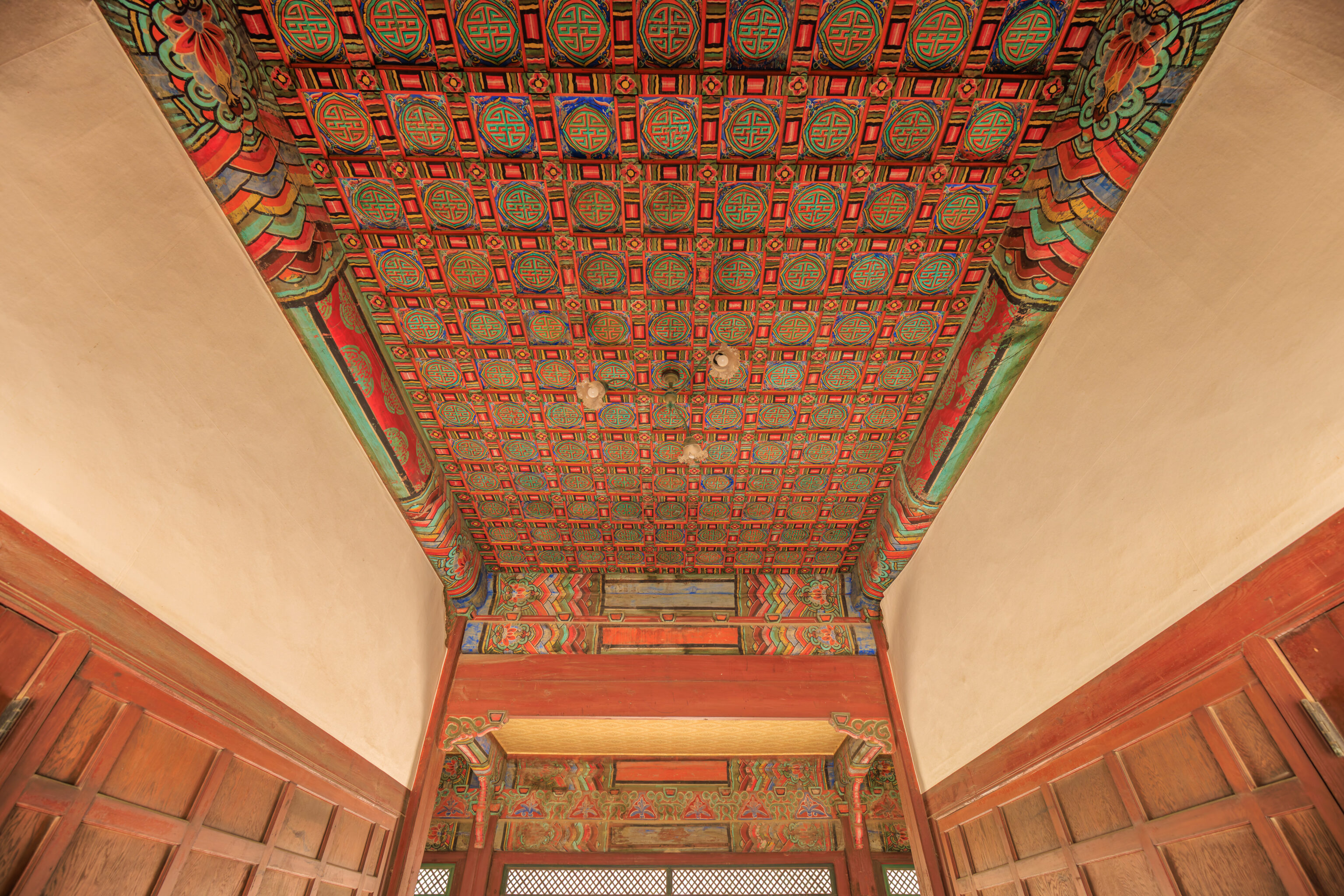
We were just on the other side of this corridor!
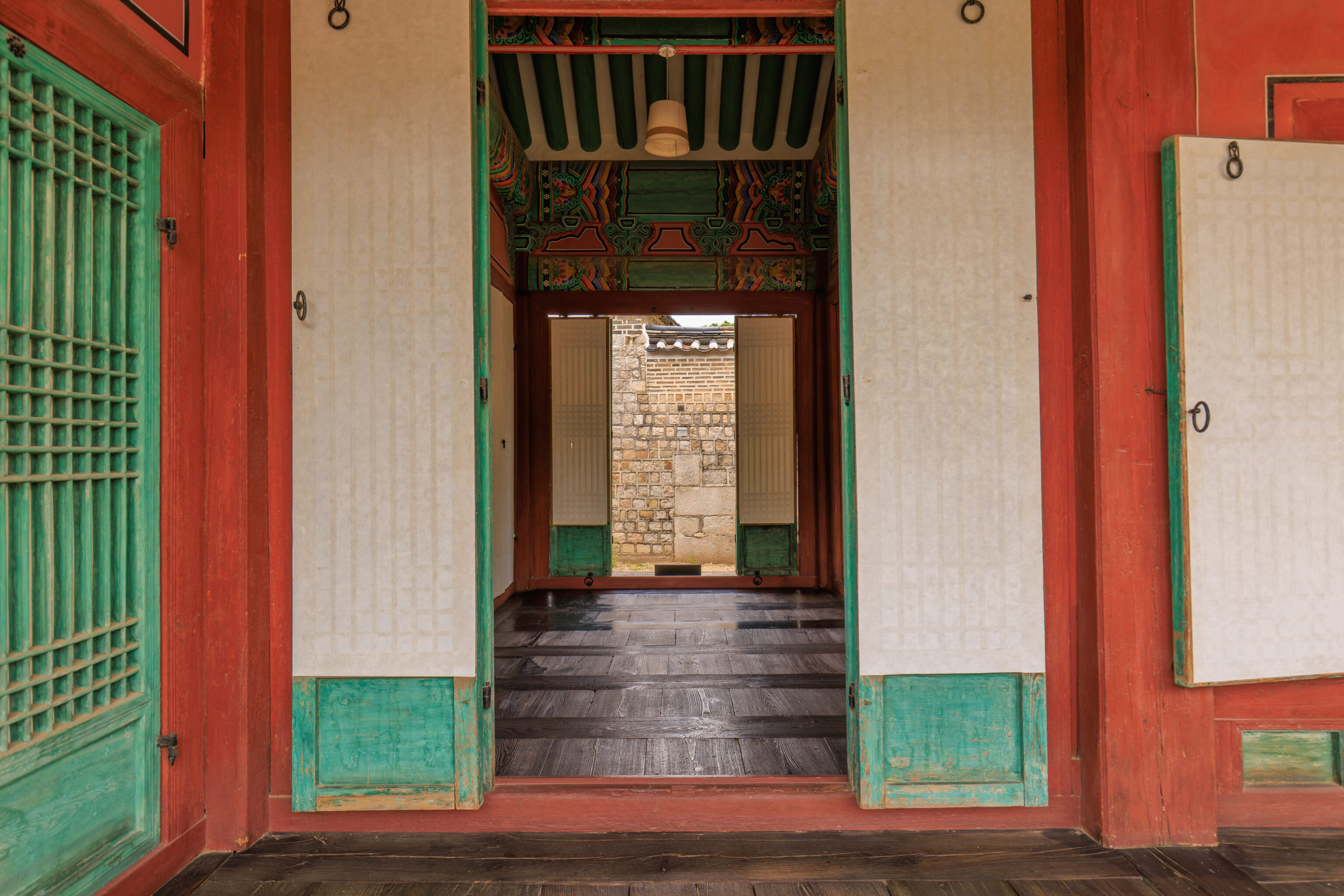
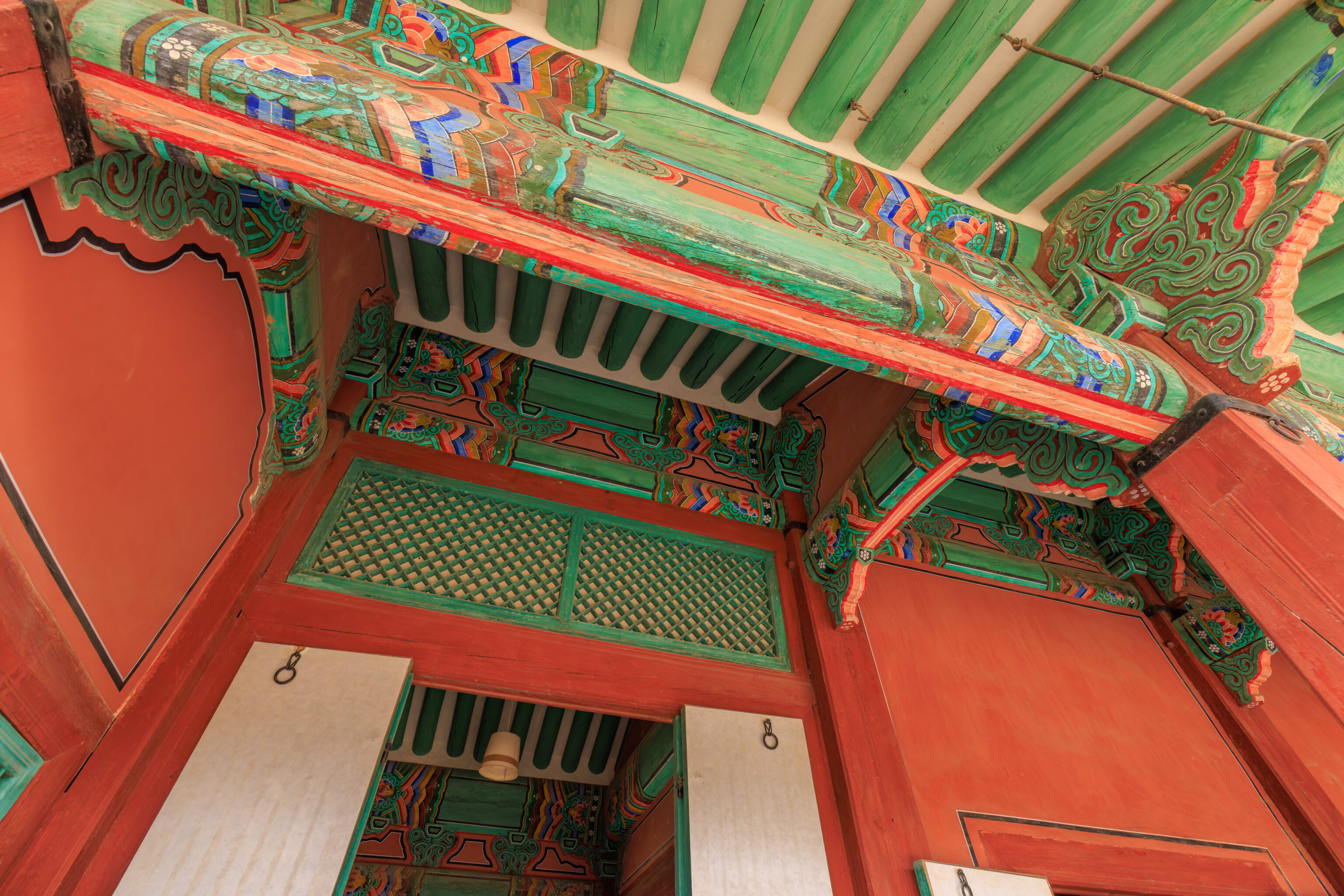
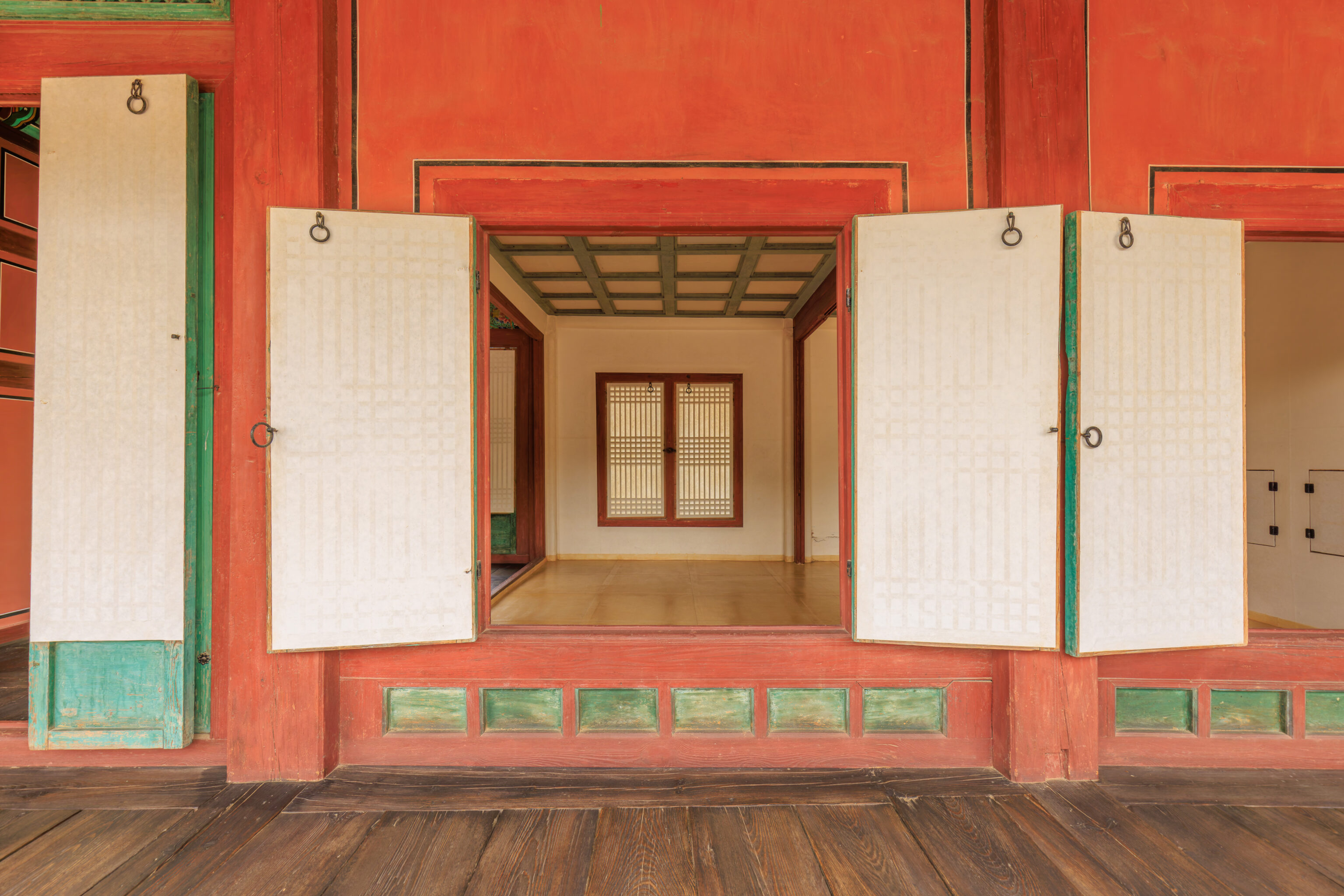
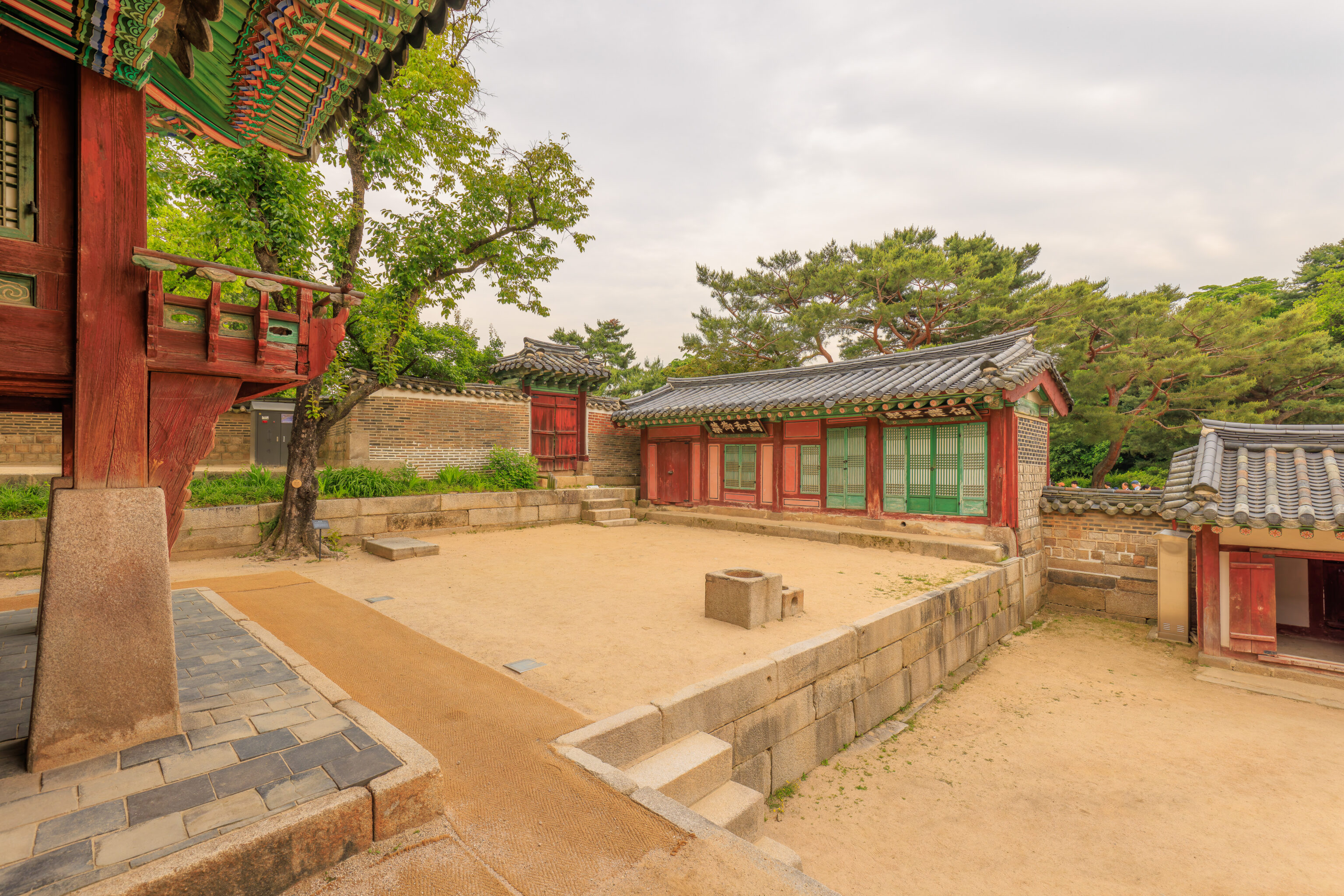
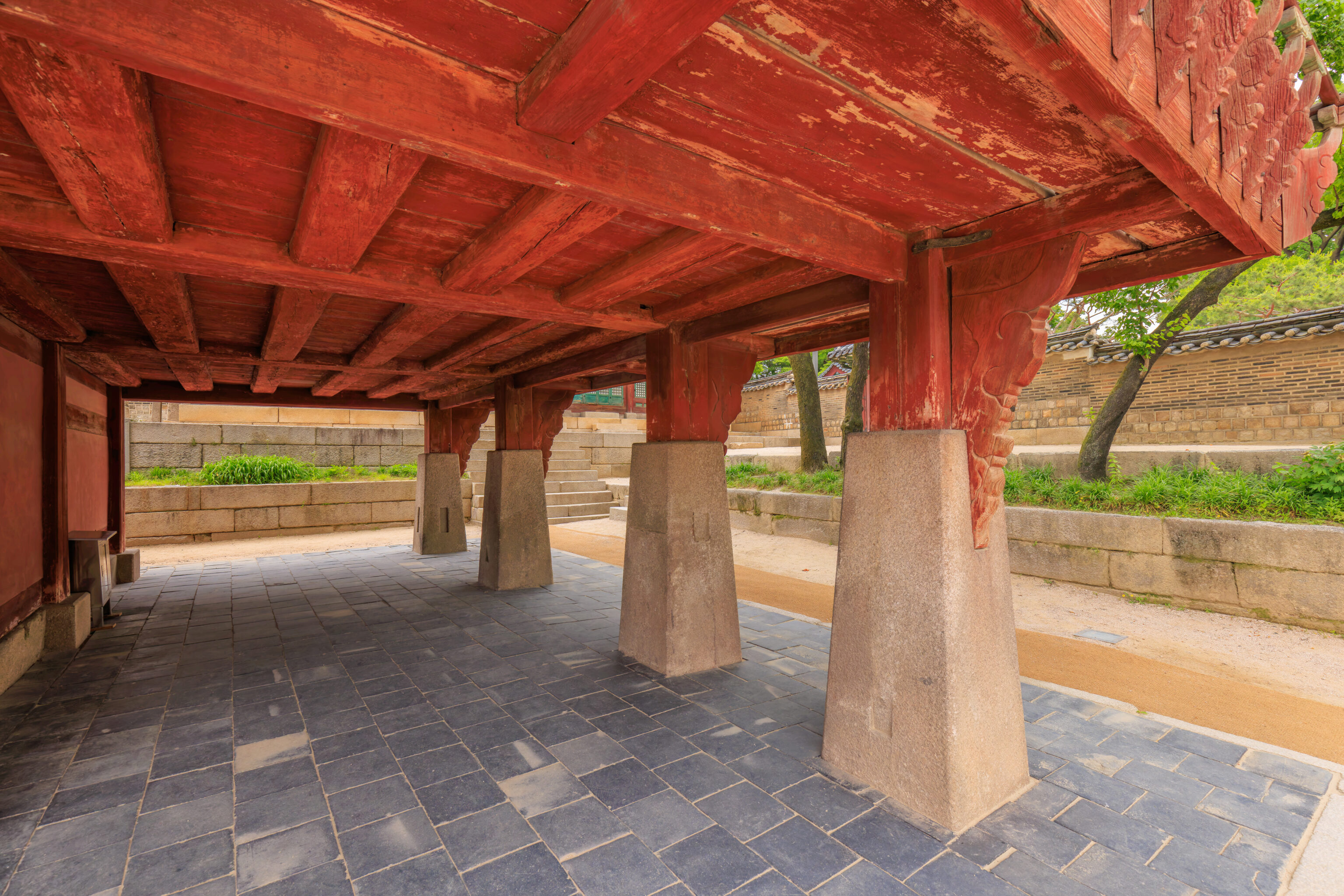
After, we walked to the east, passing by the 성정각 Seongjeonggak.
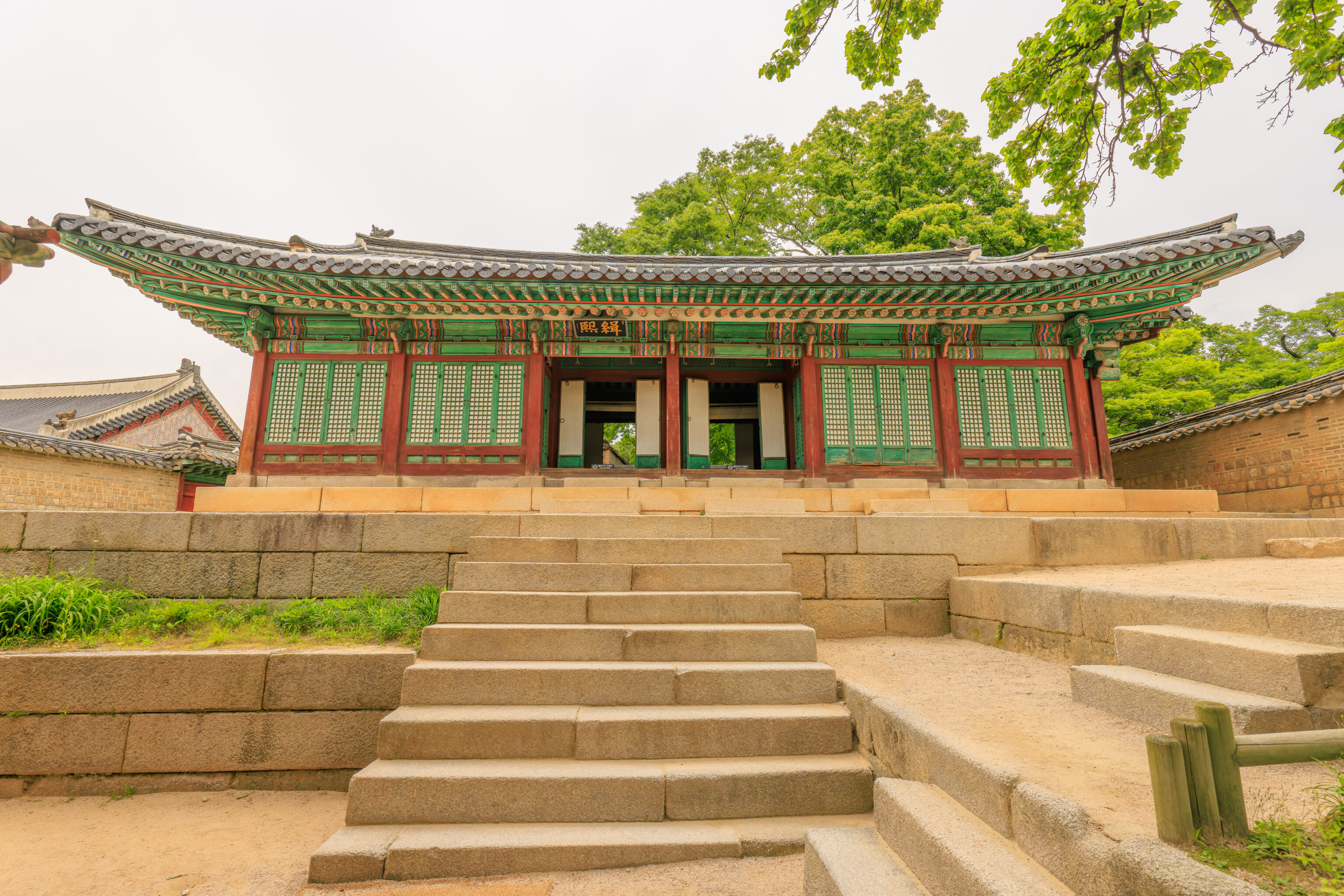
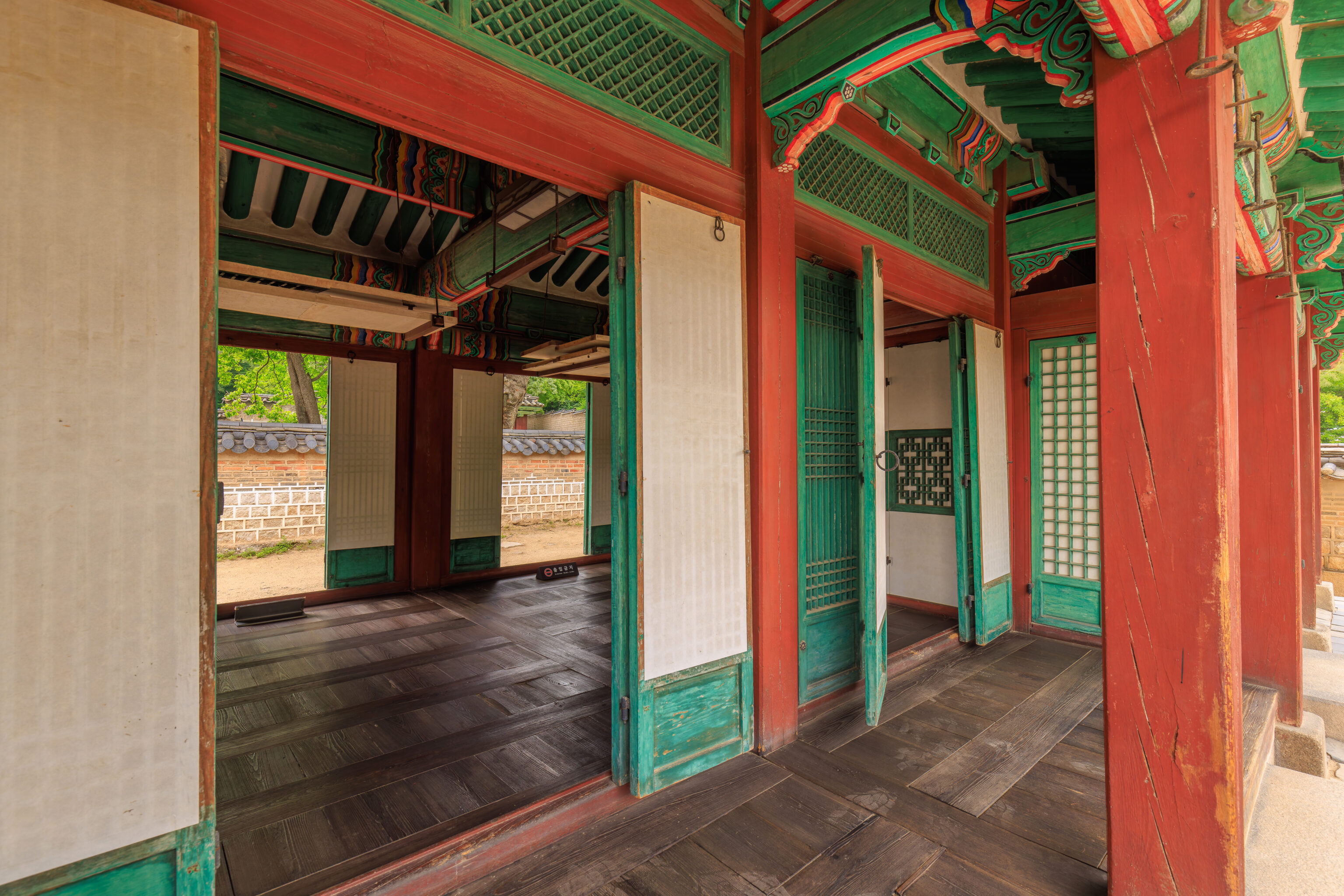
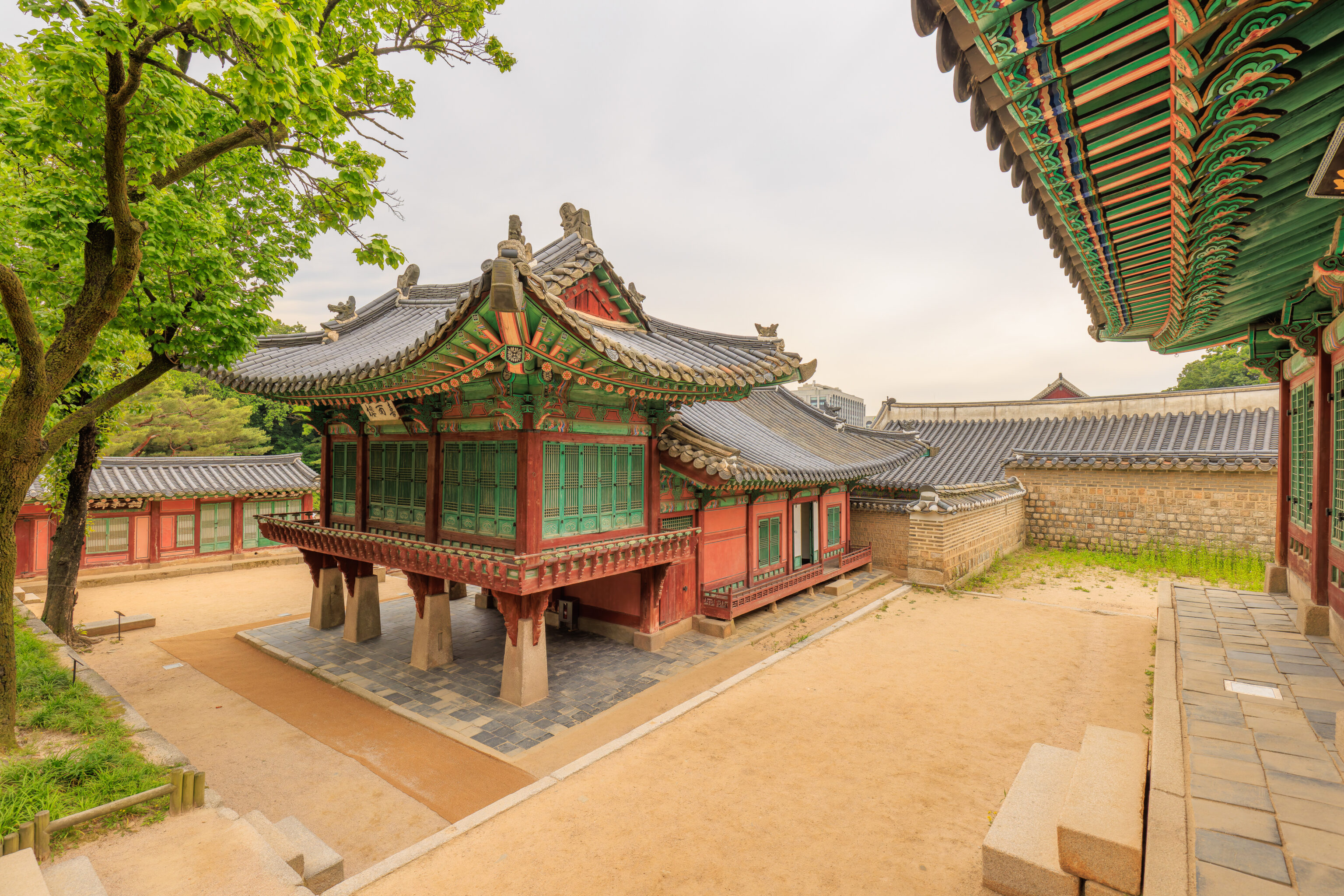
We continued walking to the east, peering into another building, probably the 관물헌 Gwanmulheon. We continued to the east and ended up back at the Secret Garden entrance.
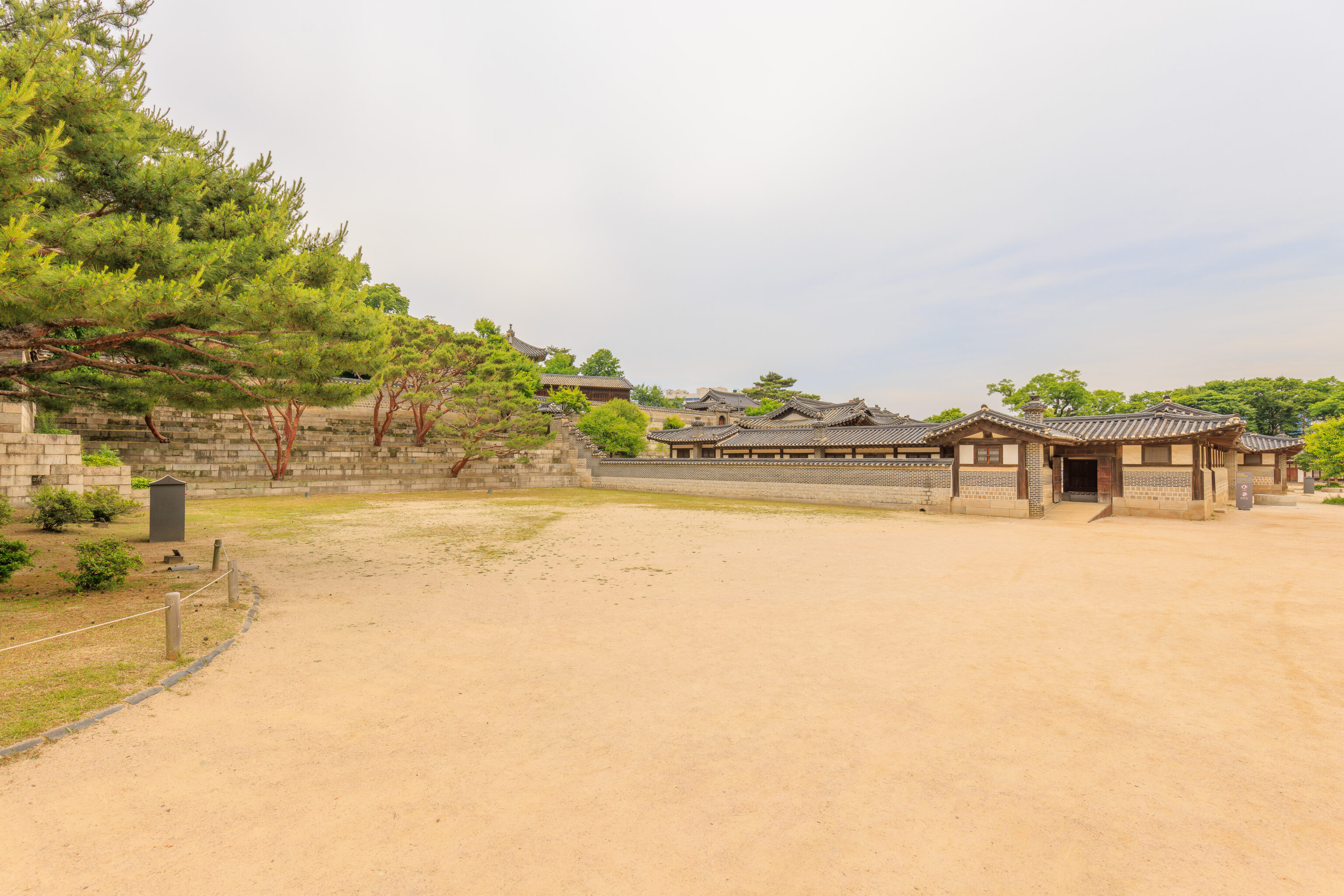
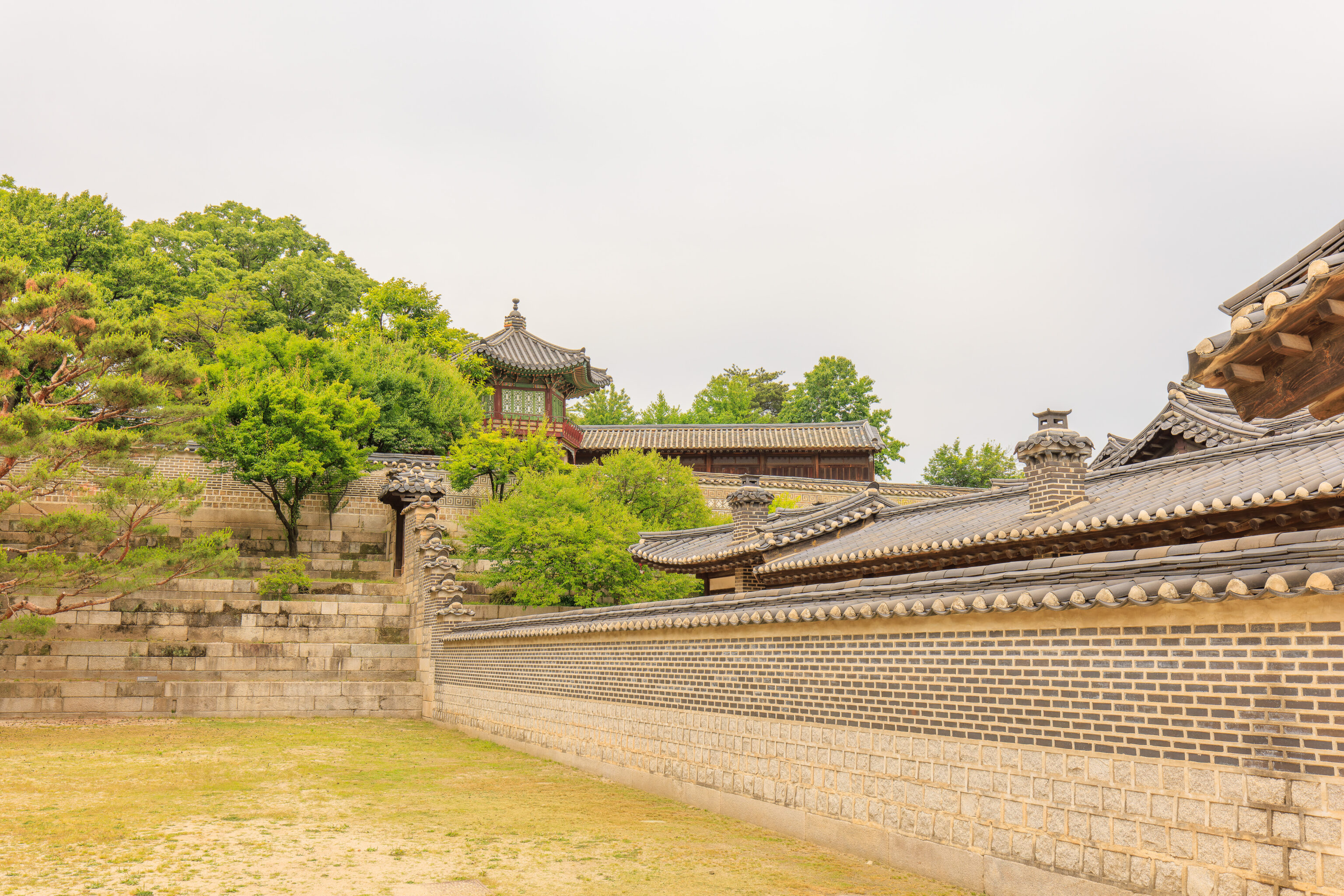
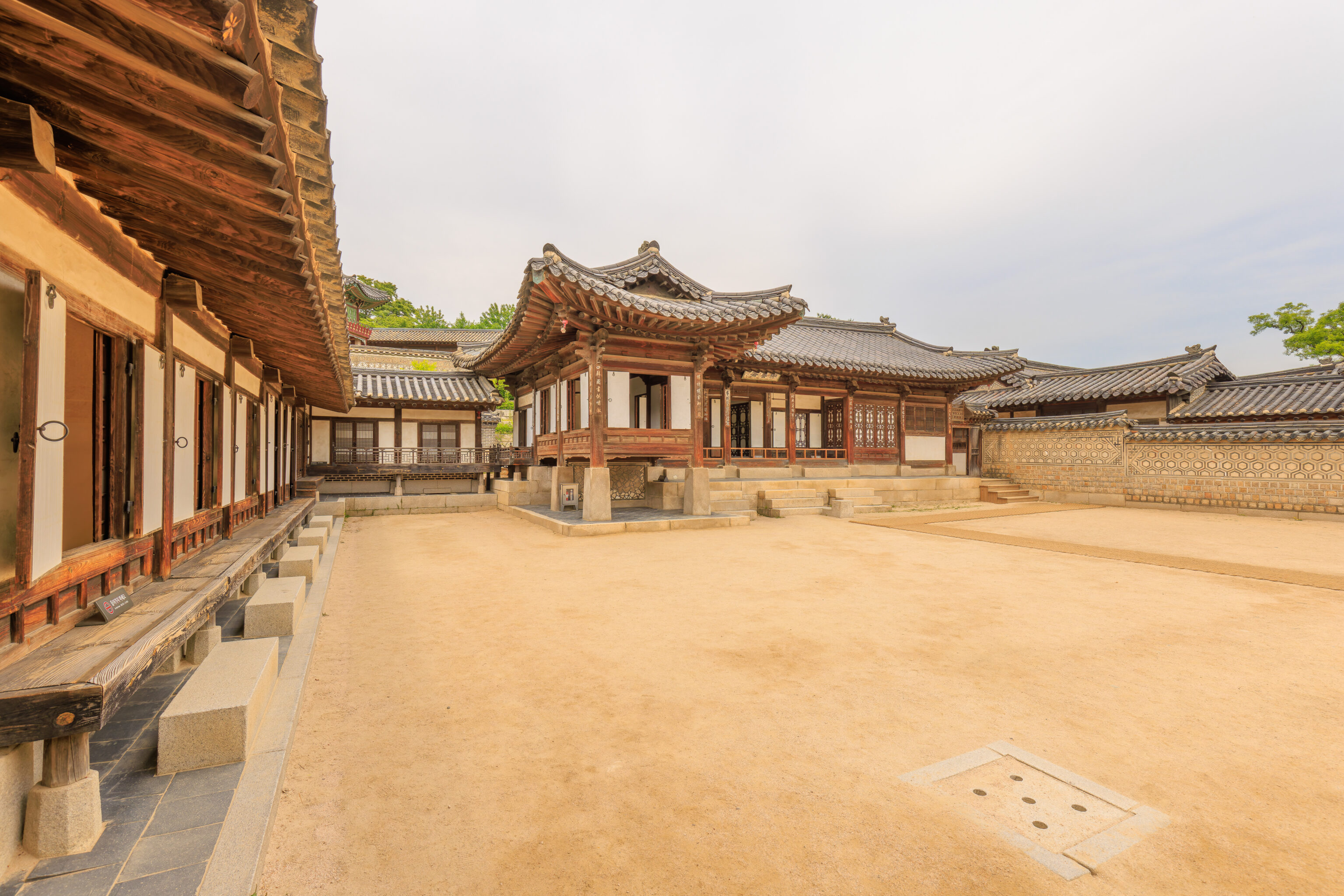
There was one last section of the palace to visit, the 낙선재 Nakseonjae. This section of the place was the residence of Yi Un, the last Crown Prince of the Joseon Dynasty, and his wife, Yi Bangja, who lived here until 1989. It was also the residence of Princess Deokhye, the last princess of the dynasty.
A sign describes this area:
In 1847, King Heonjong constructed Nakseonjae as his personal library and living quarters. The following year, the king constructed two more buildings to the east of Nakseonjae: Seokbokheon, a residence for his concubine Gyeongbin, and Sugangjae, a residence for grand queen dowager Sunwon, who had served as regent until King Heonjong assumed direct rule in 1840. The king ordered these residences to be built in a modest style without the vibrant traditional paintwork (called dancheong*) conventionally applied to royal buildings. The Nakseonjae Complex served as the last royal residence. The final Empress of Korea, Sunjeonghyo, resided here until 1966. Yi Bangja, the wife of the last crown prince, lived here with the last princess of the Korean royal family, Princess Deokhye, until they both passed away in 1989.
* Dancheong: ornamental paintwork applied to walls, pillars, and ceilings of designated types of buildings.
Other than providing a historical overview, this sign also helpfully introduces the term dancheong, the colorful painting style of the Korean royal buildings.
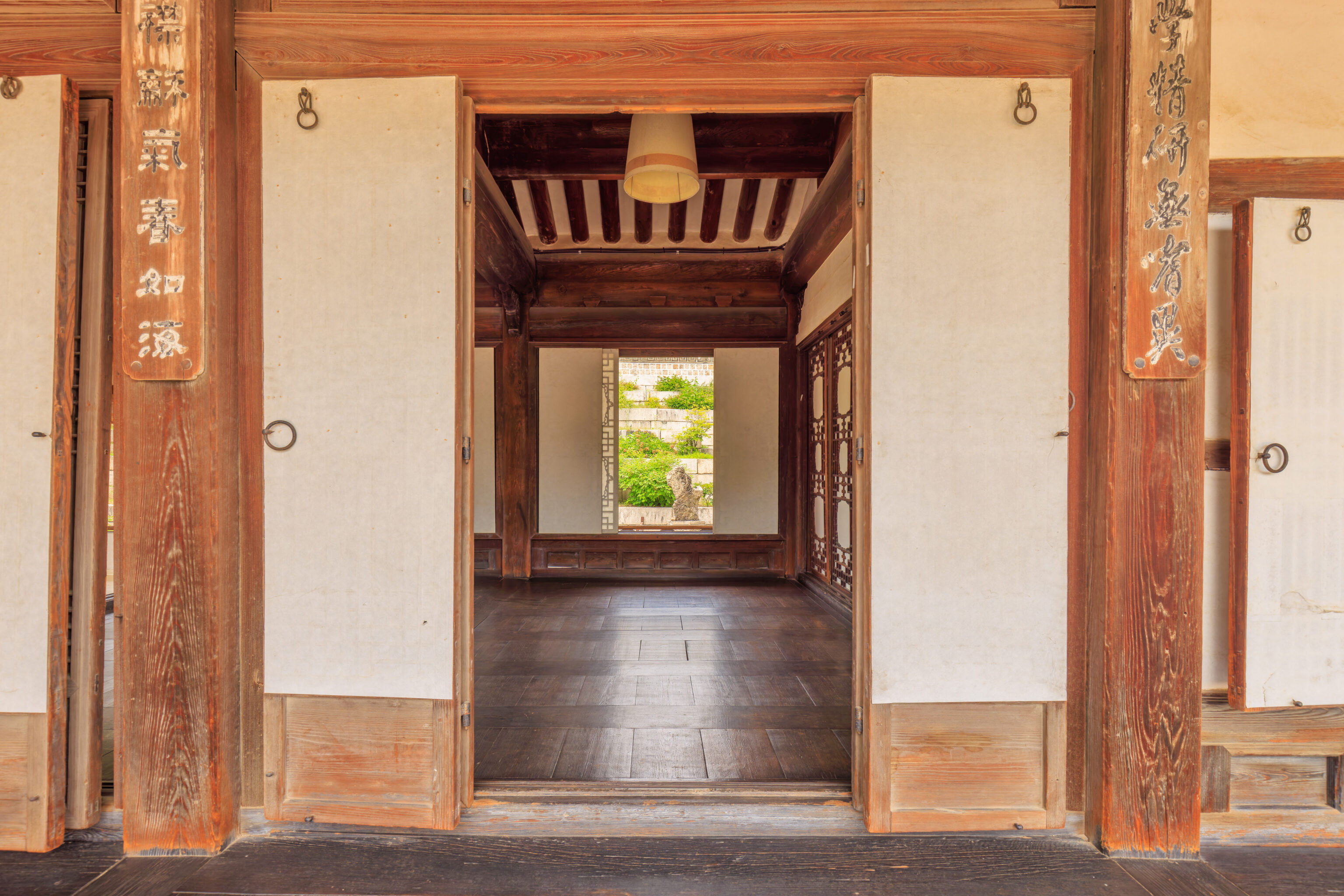
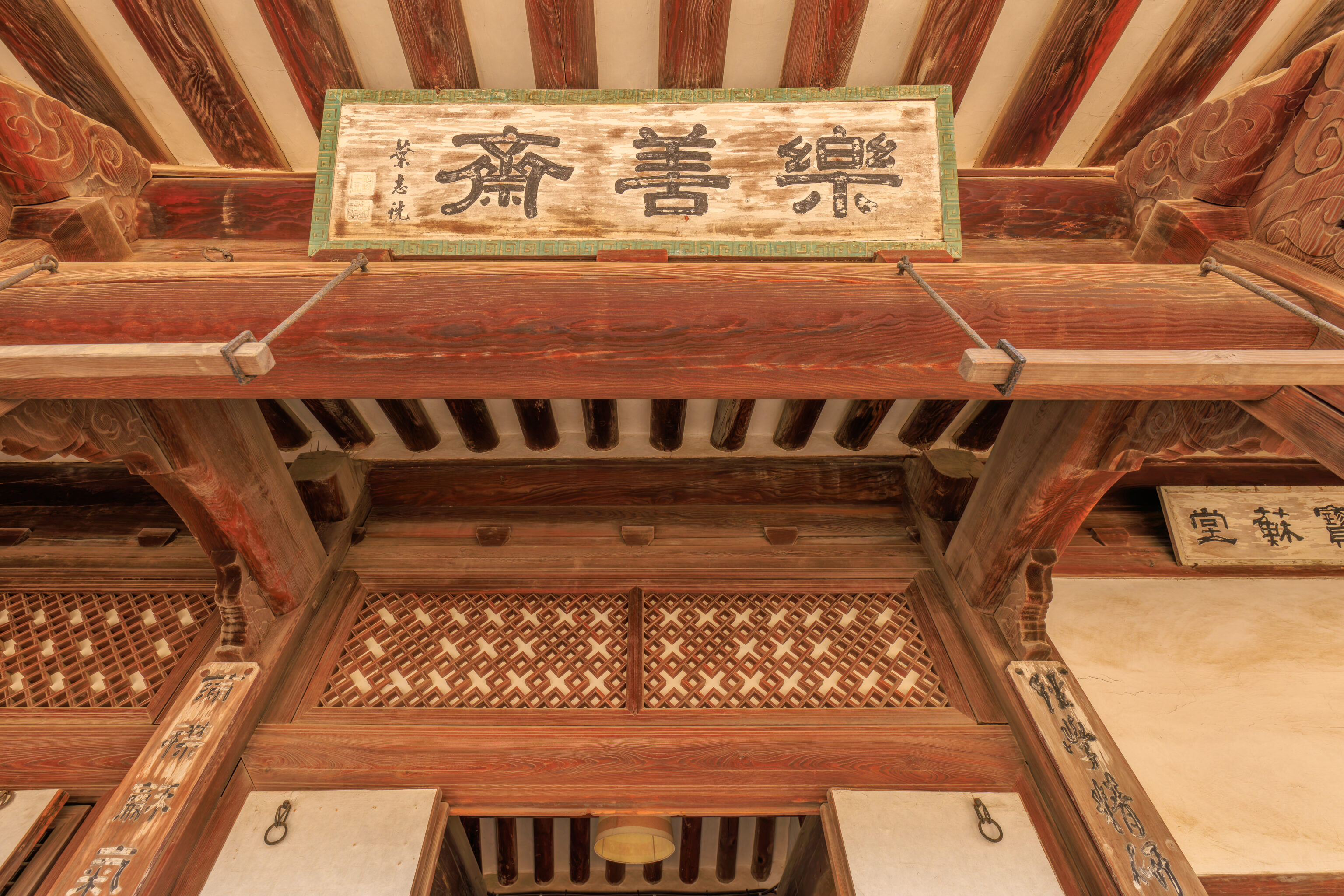
We couldn’t see much of the interior from the front of the Nakseonjae.
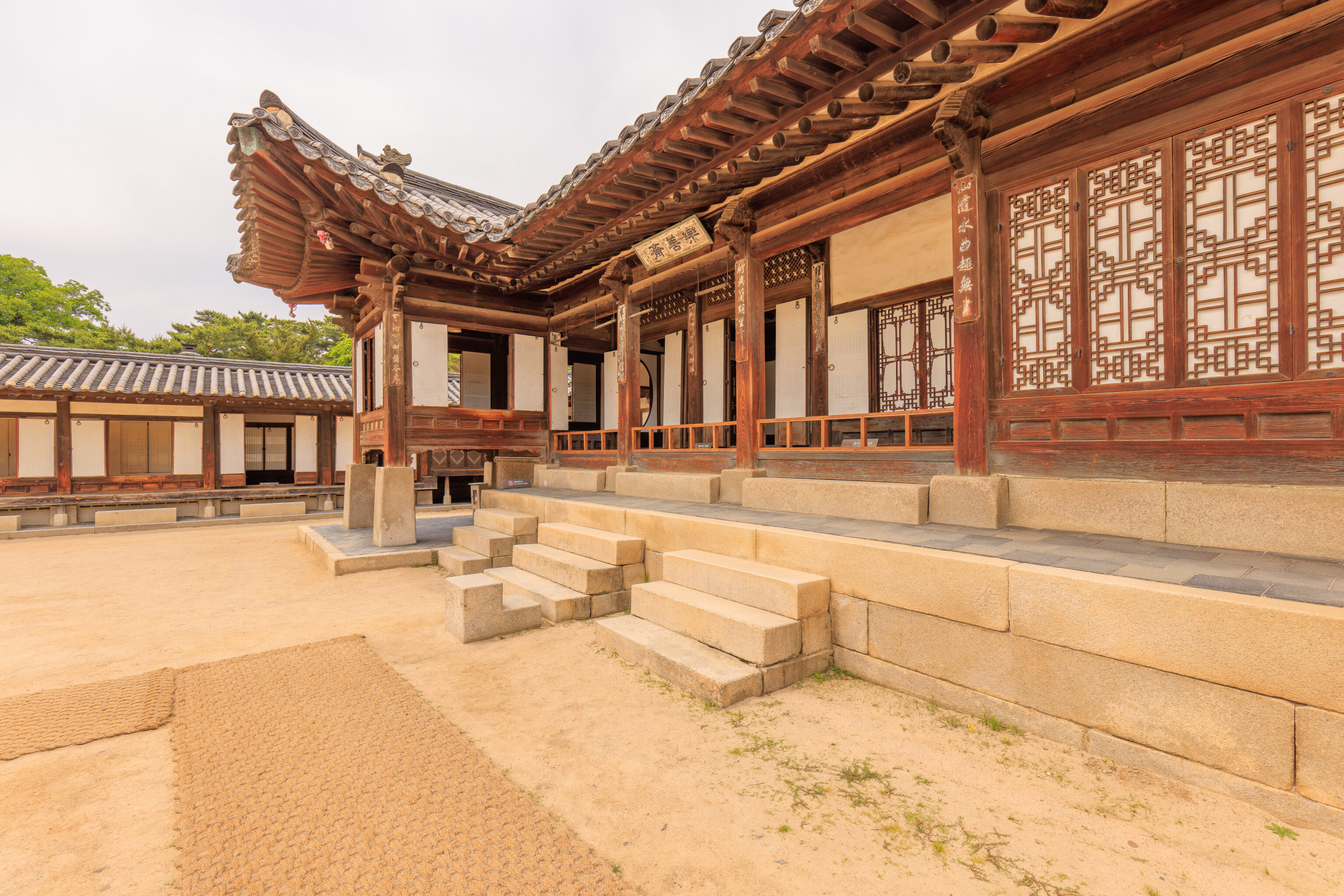
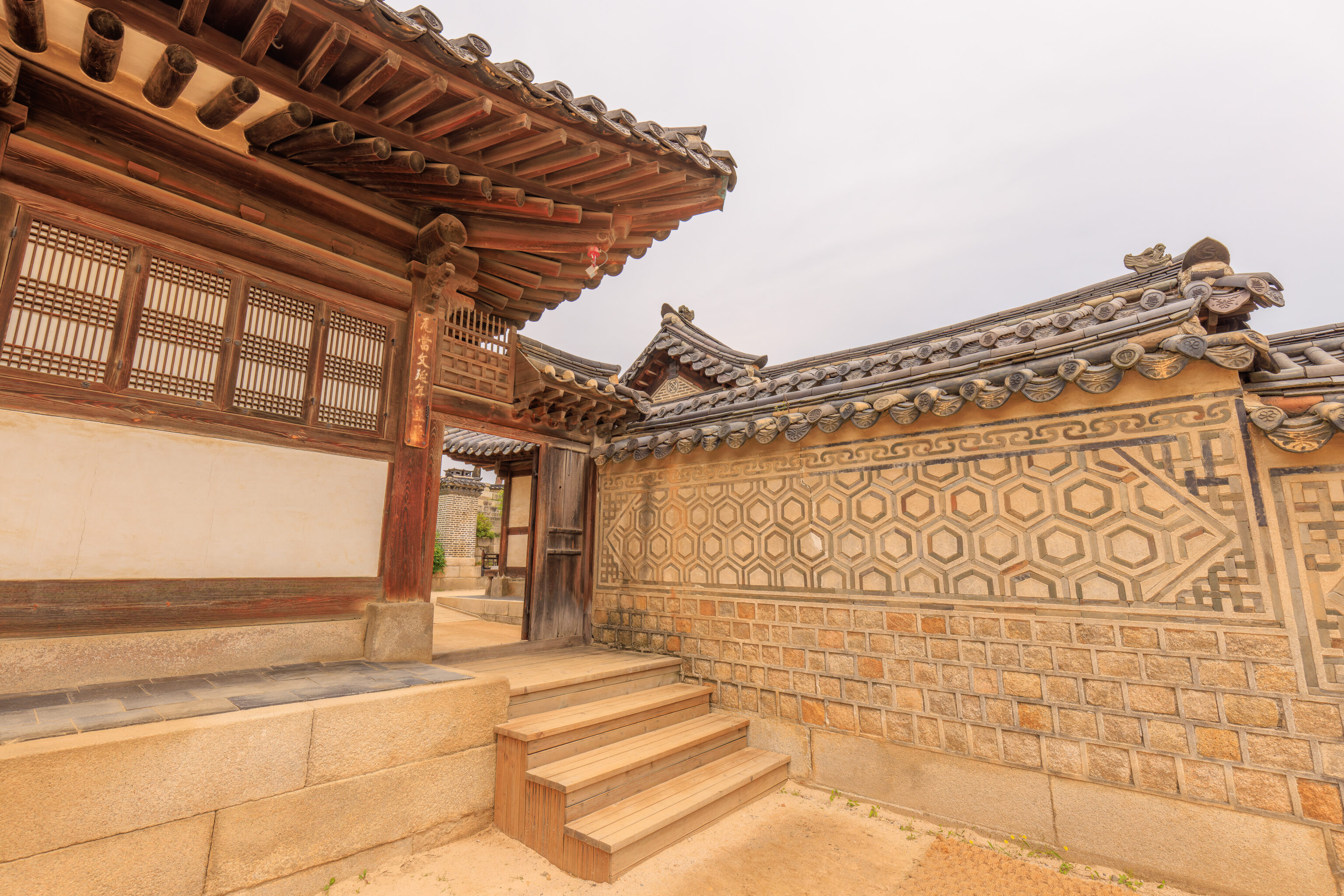
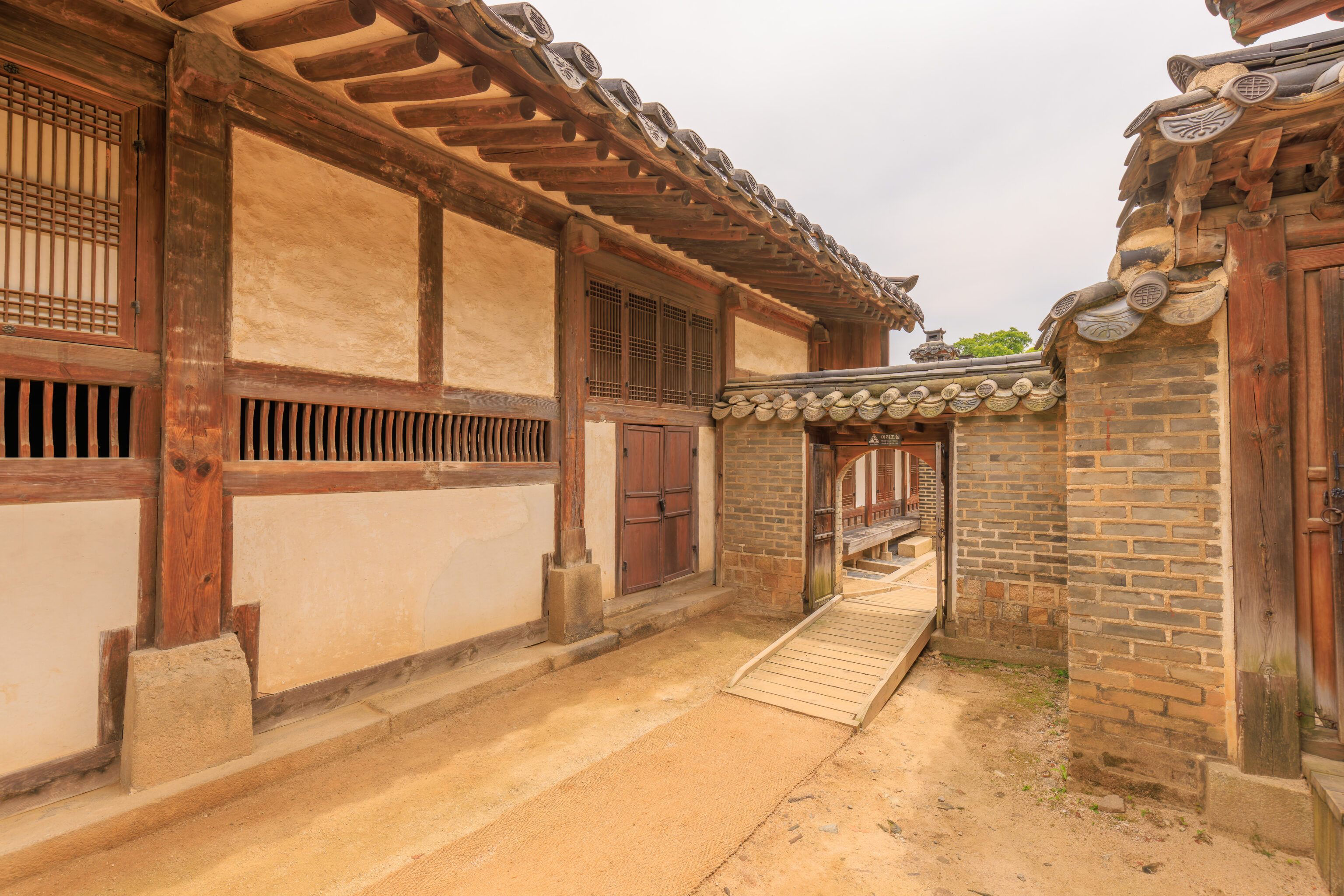
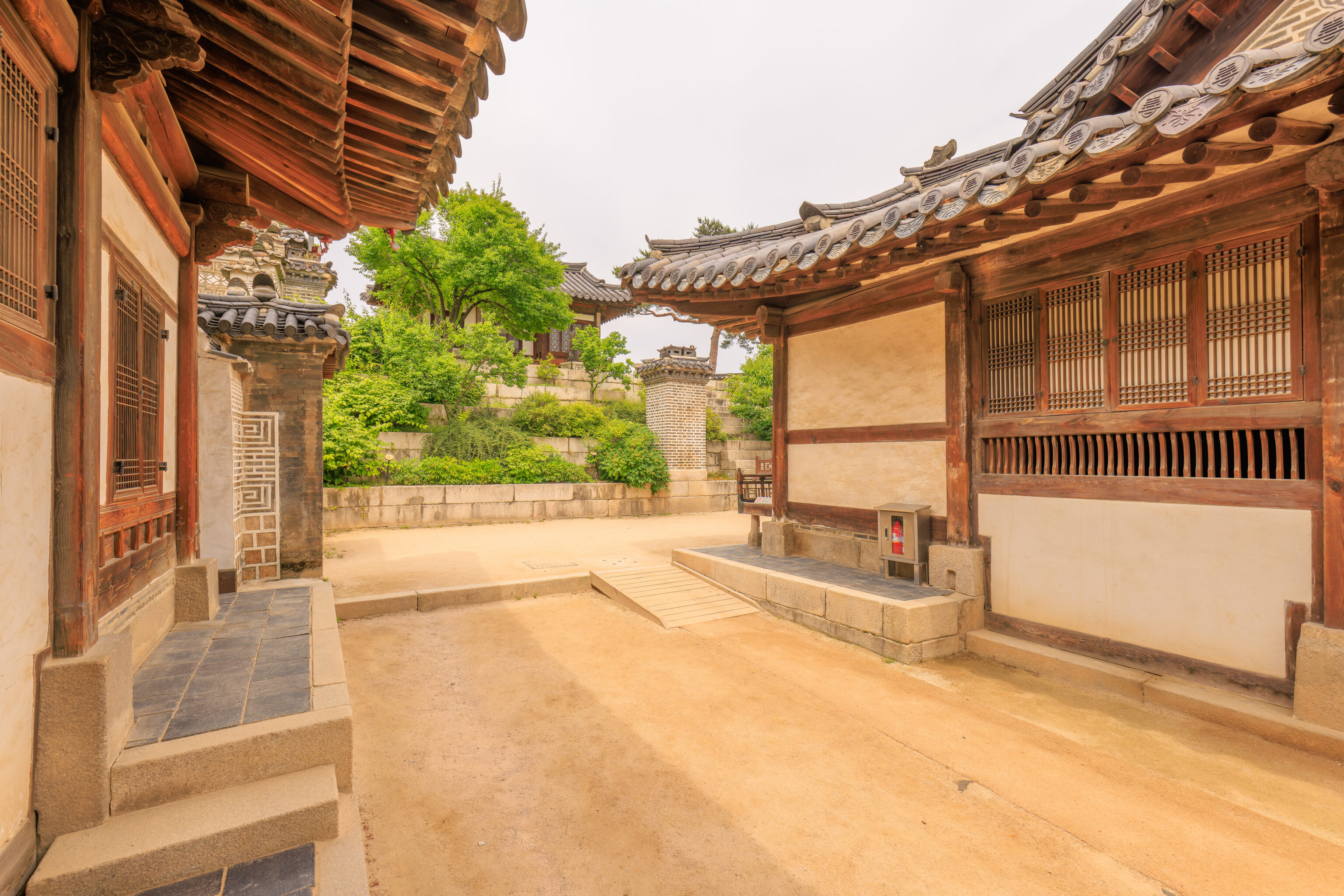
We walked around the building, finding our way towards the slope behind it.
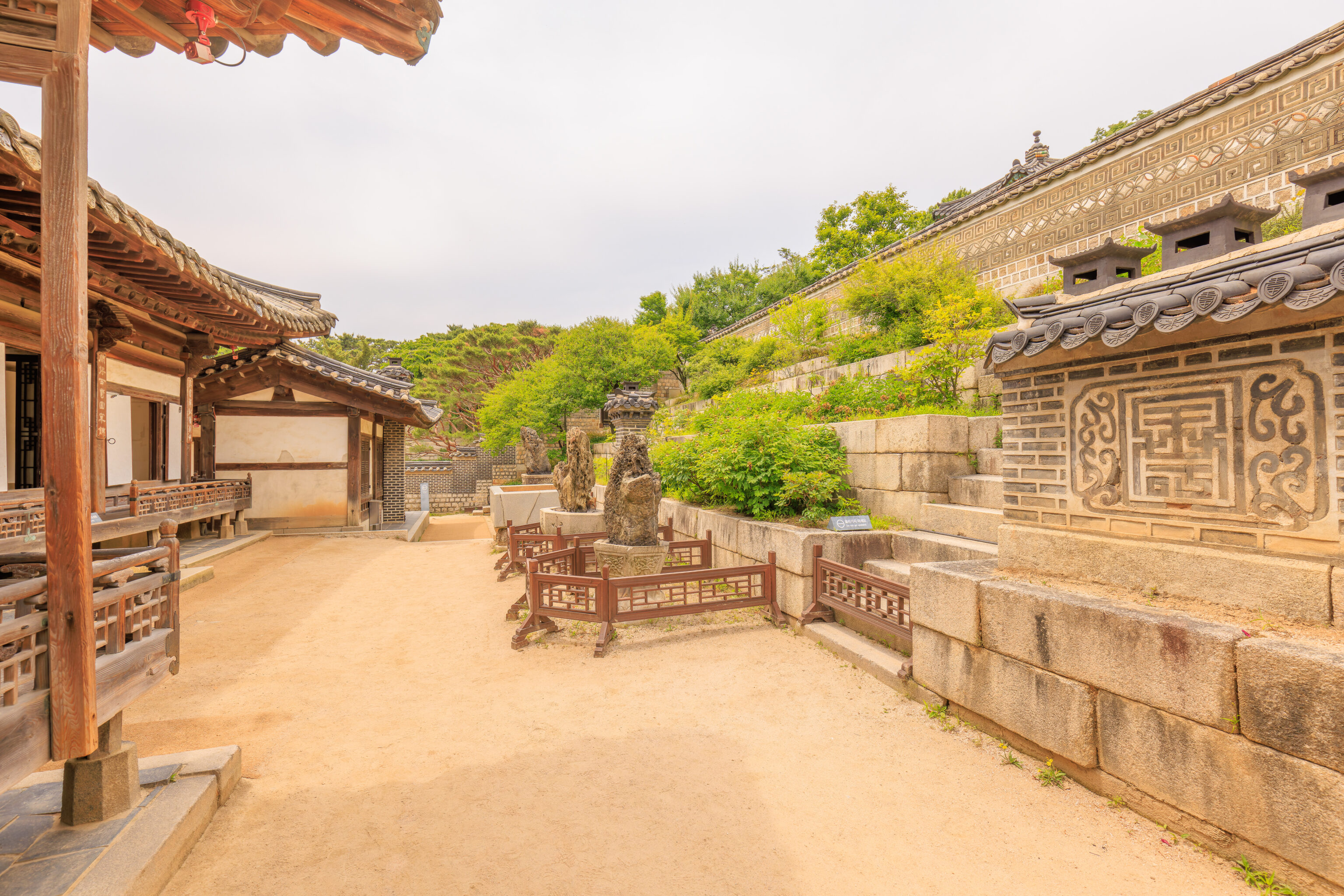
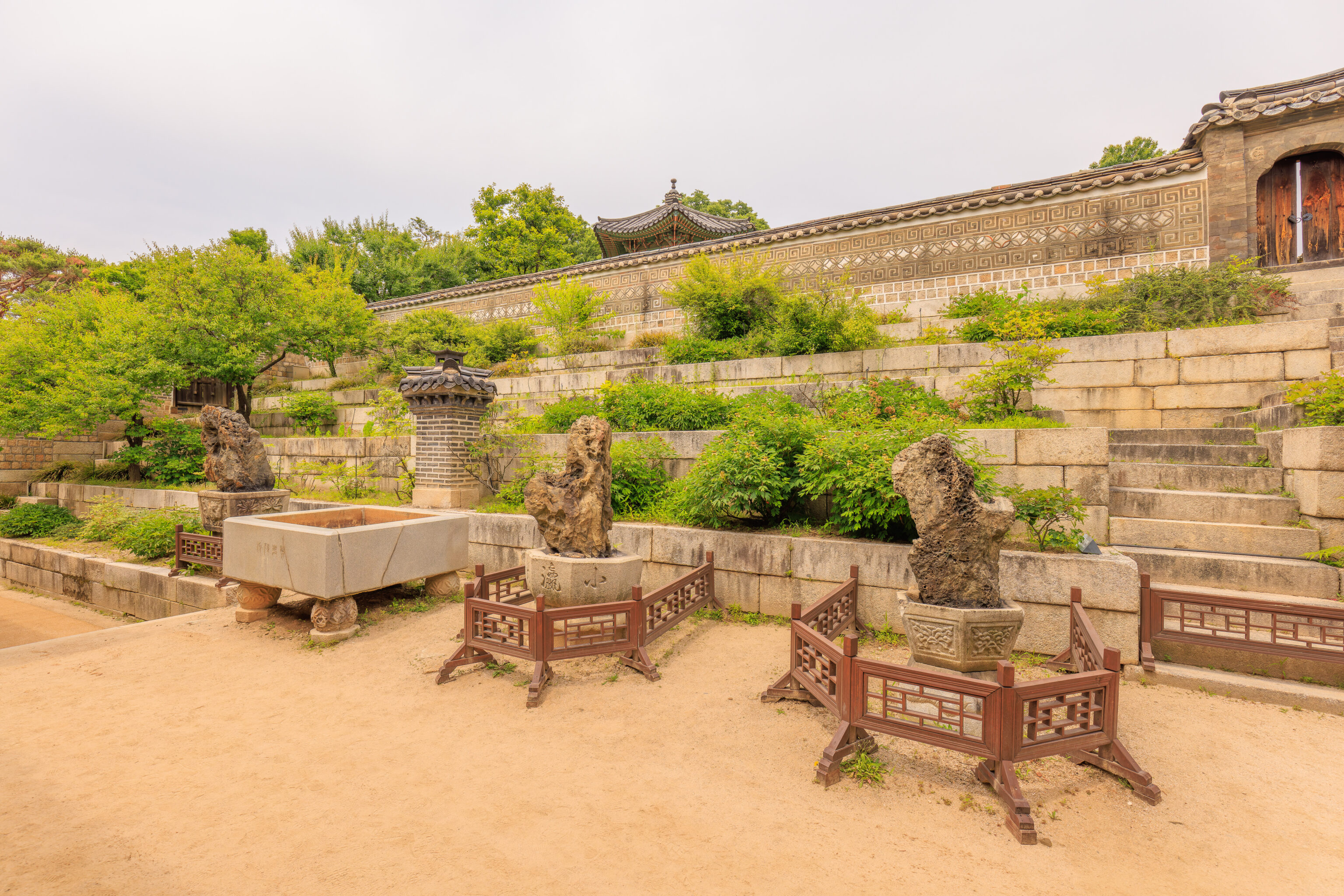
There was a bit of greenery on the stone terraced slope. There were also stairs but they were blocked off.
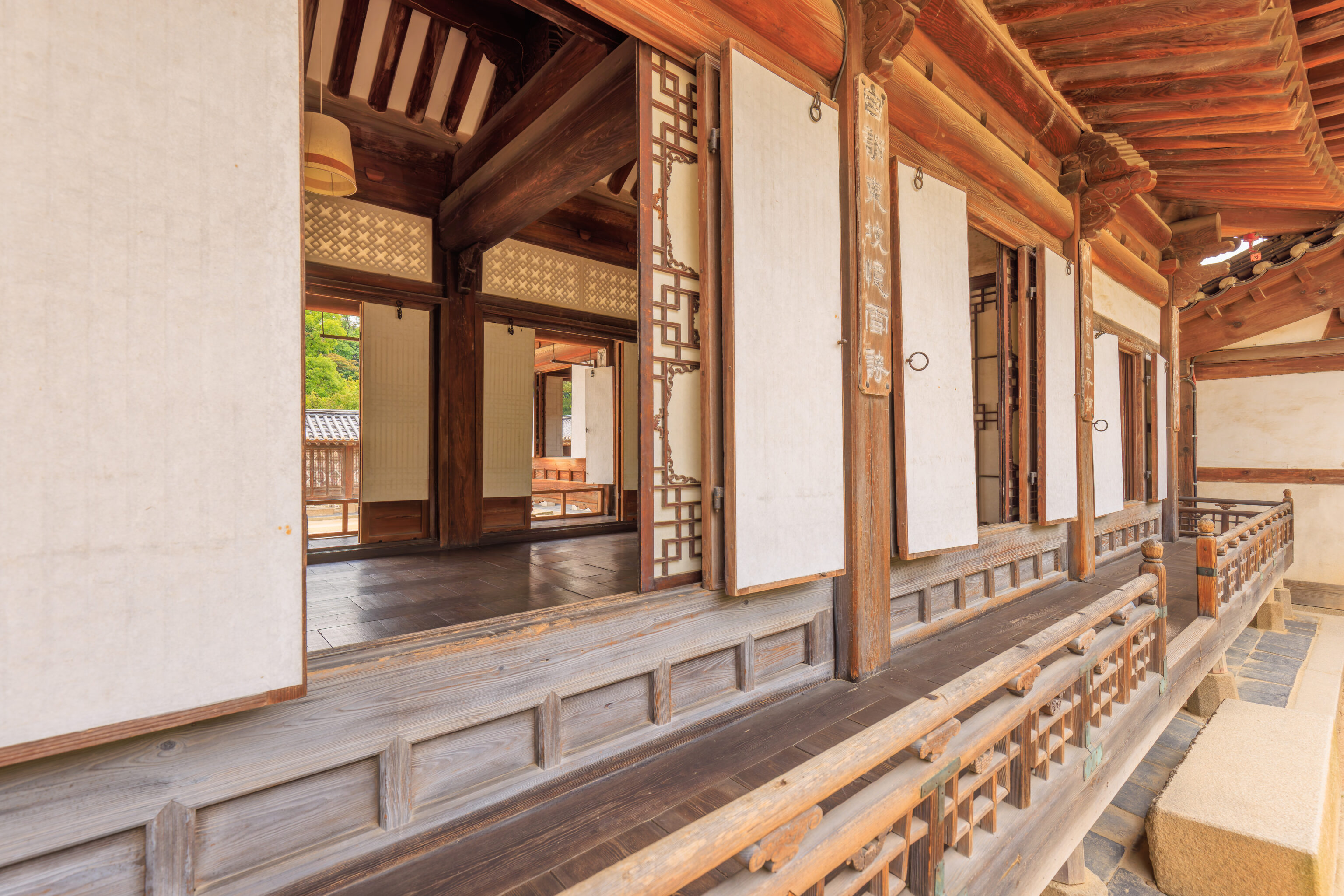
This is the opposite view from when we were on the other side of the Nakseonjae.
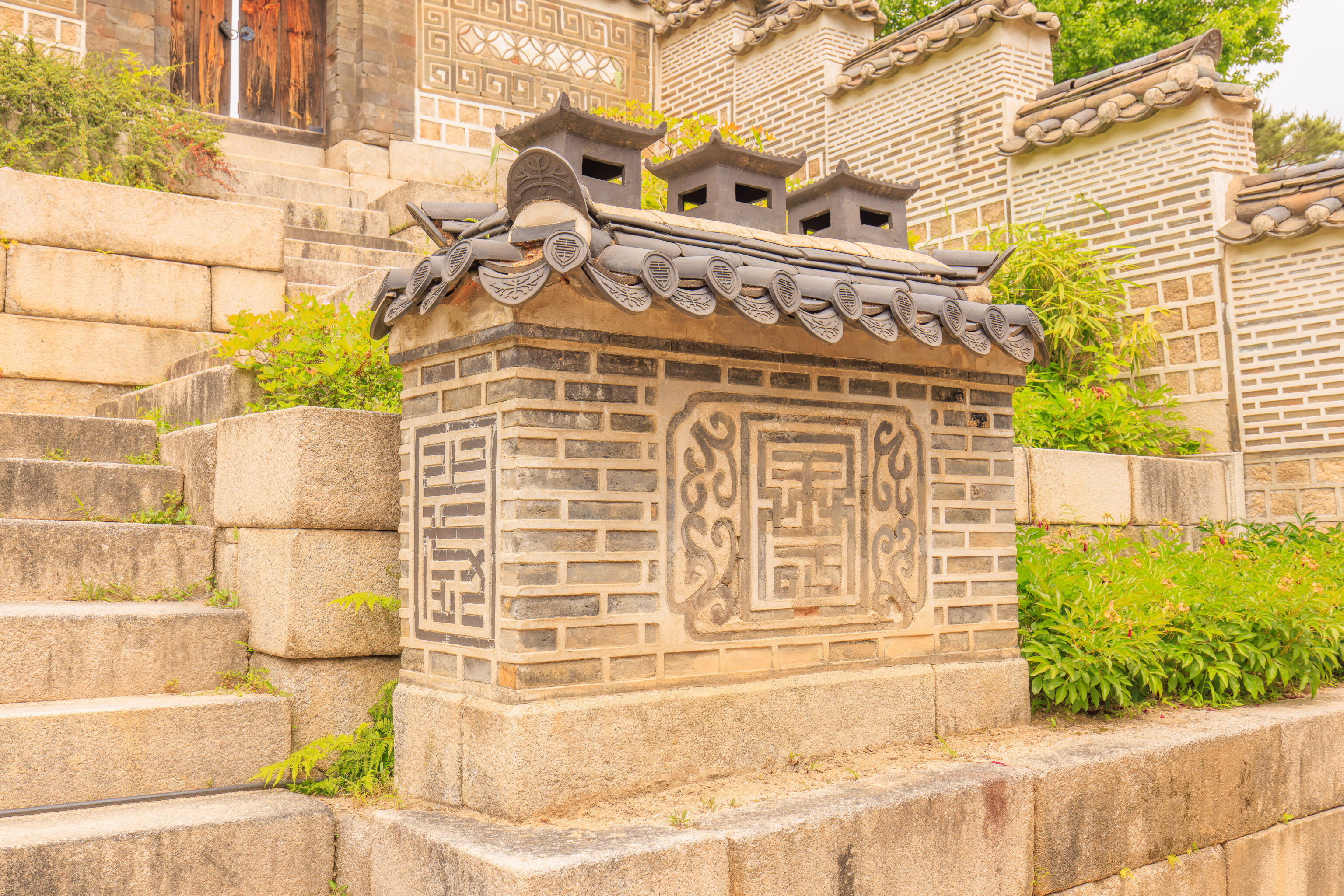
We noticed this decorated block of chimneys.
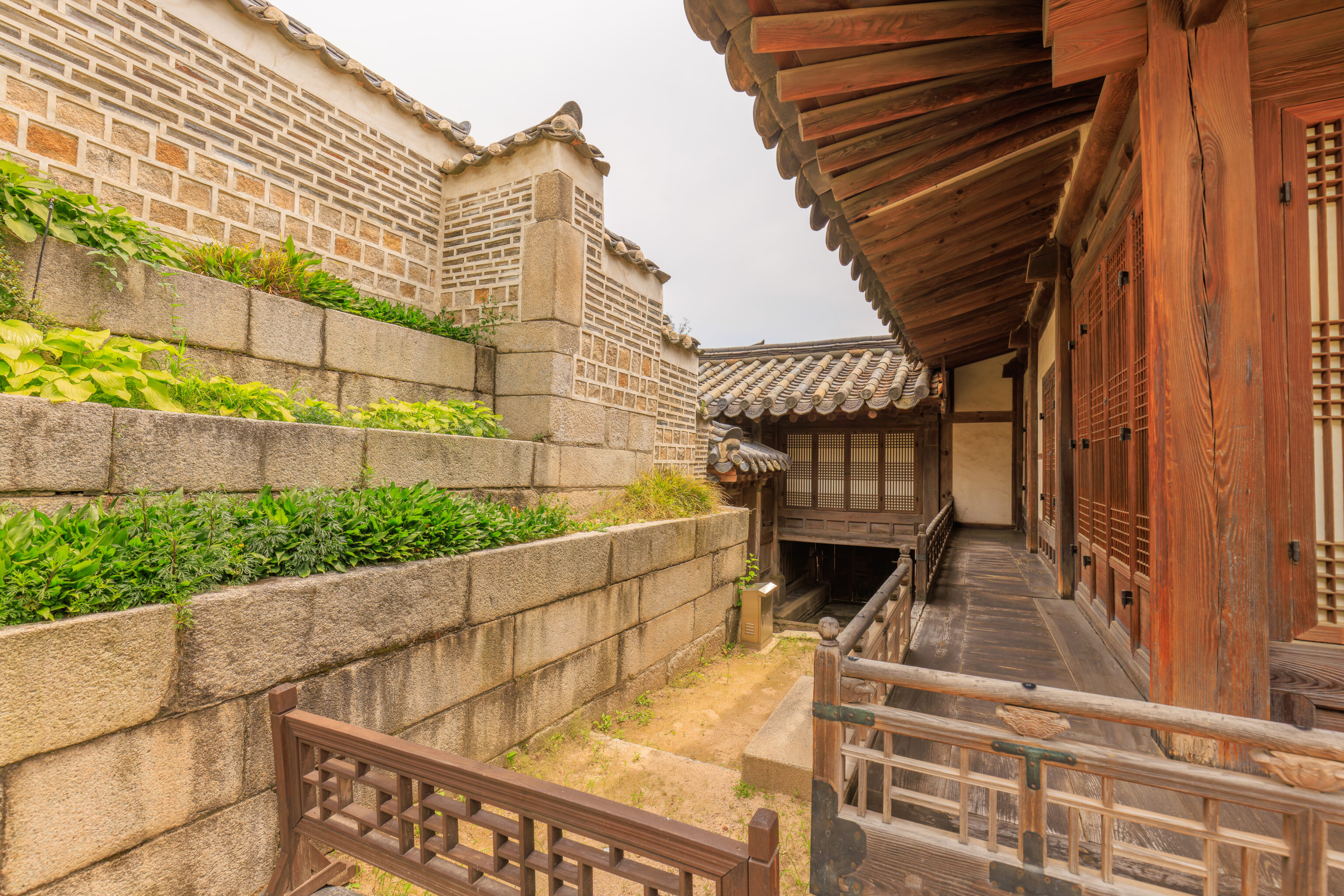
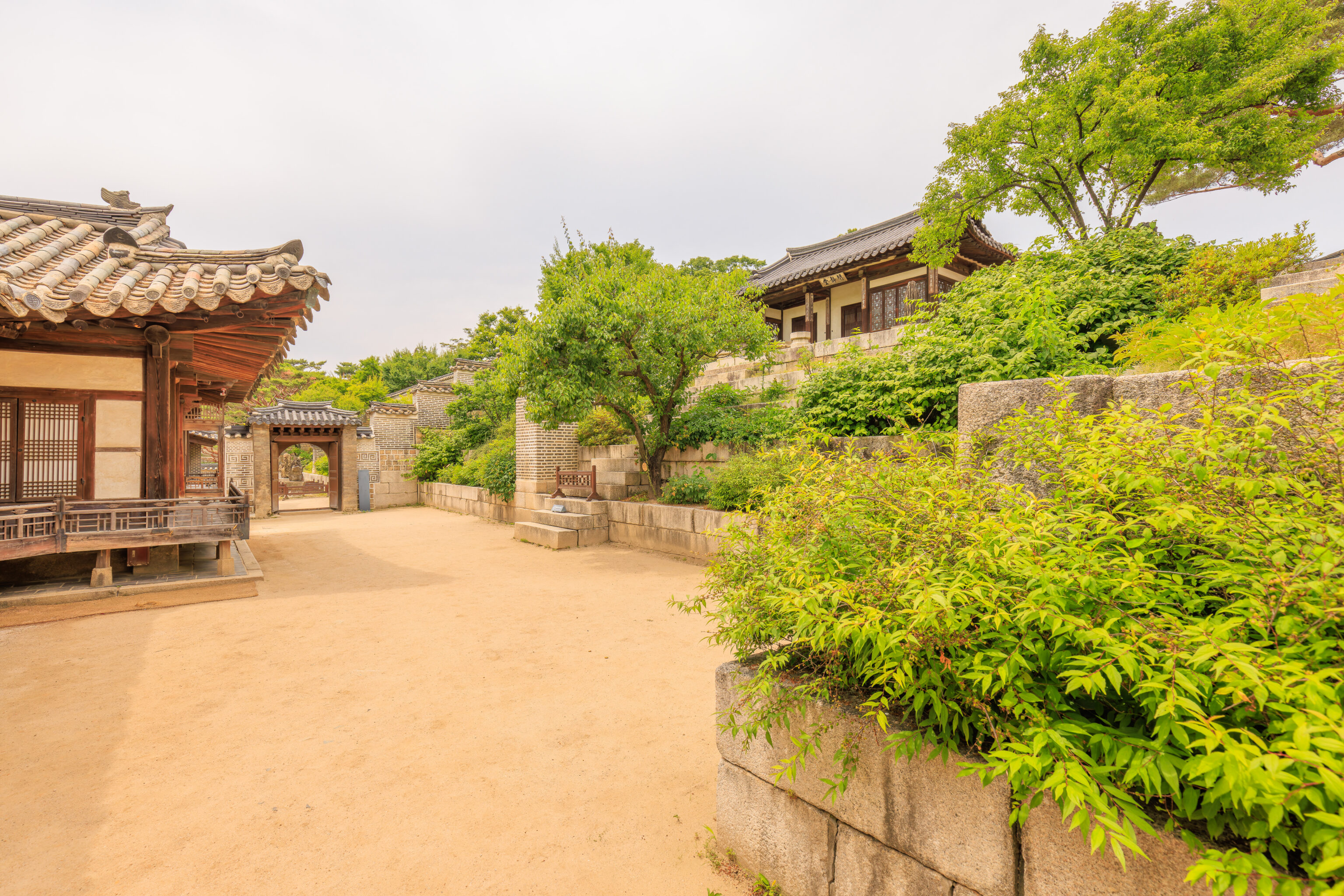
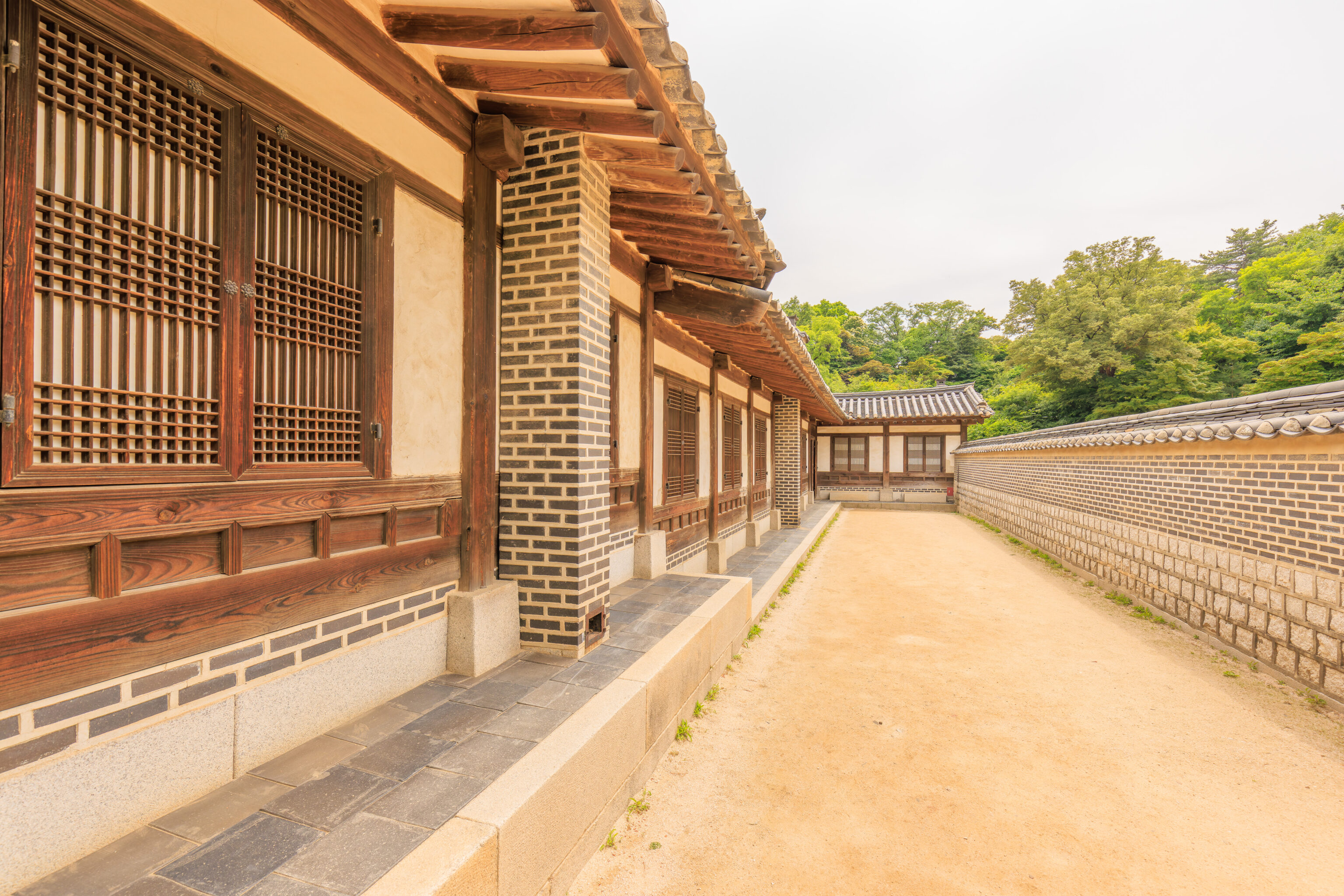
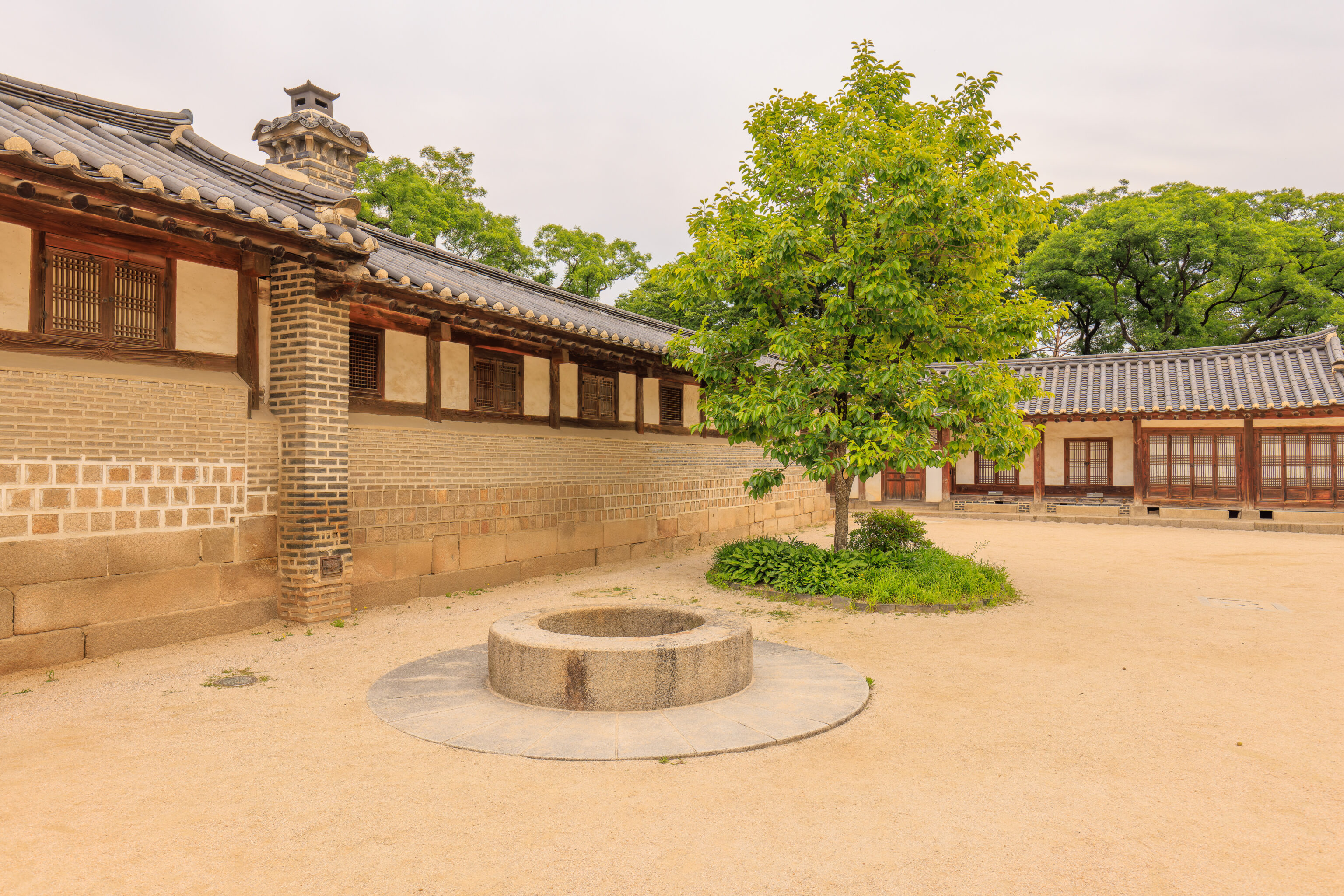
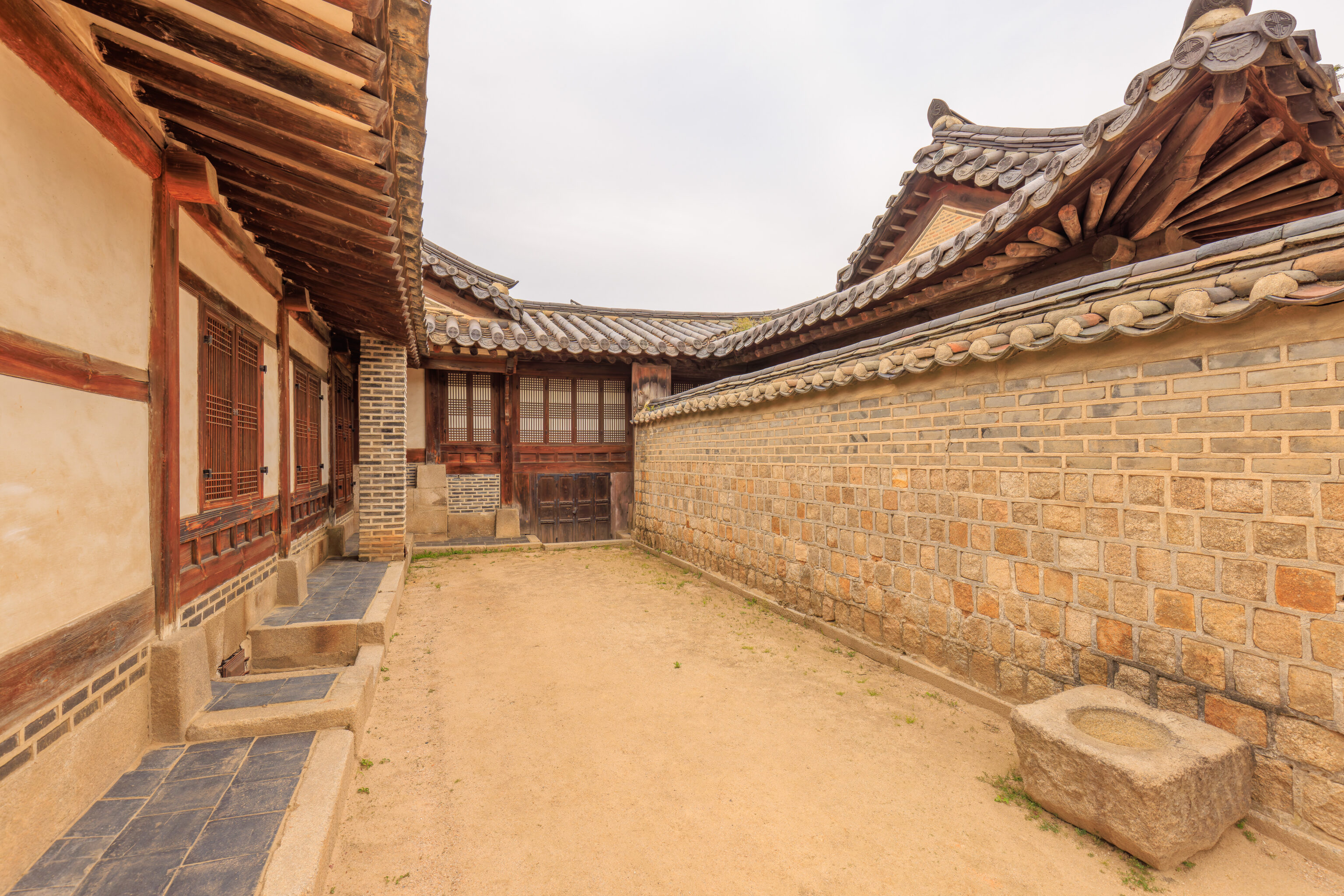
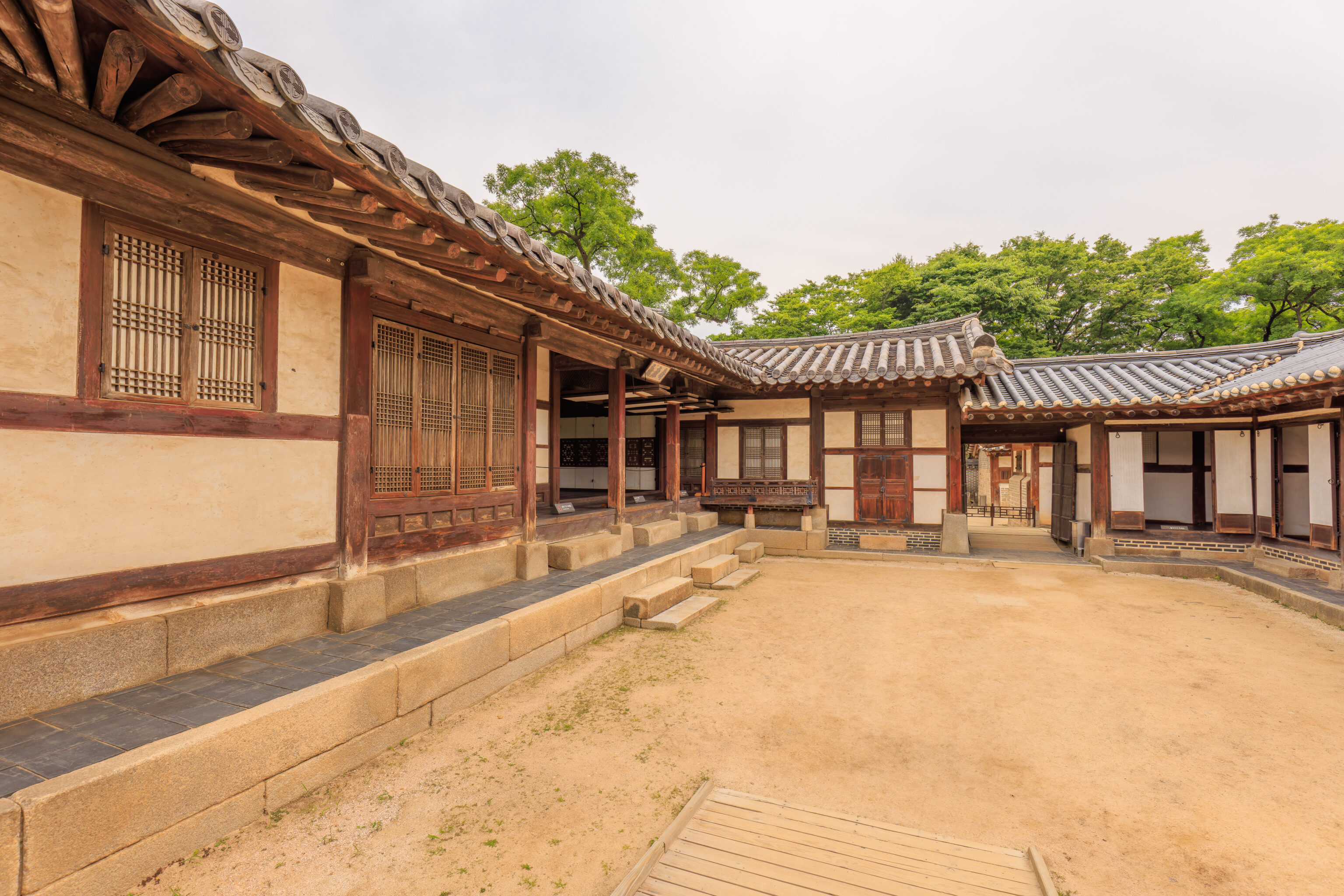
We continued walking through the Nakseonjae area.
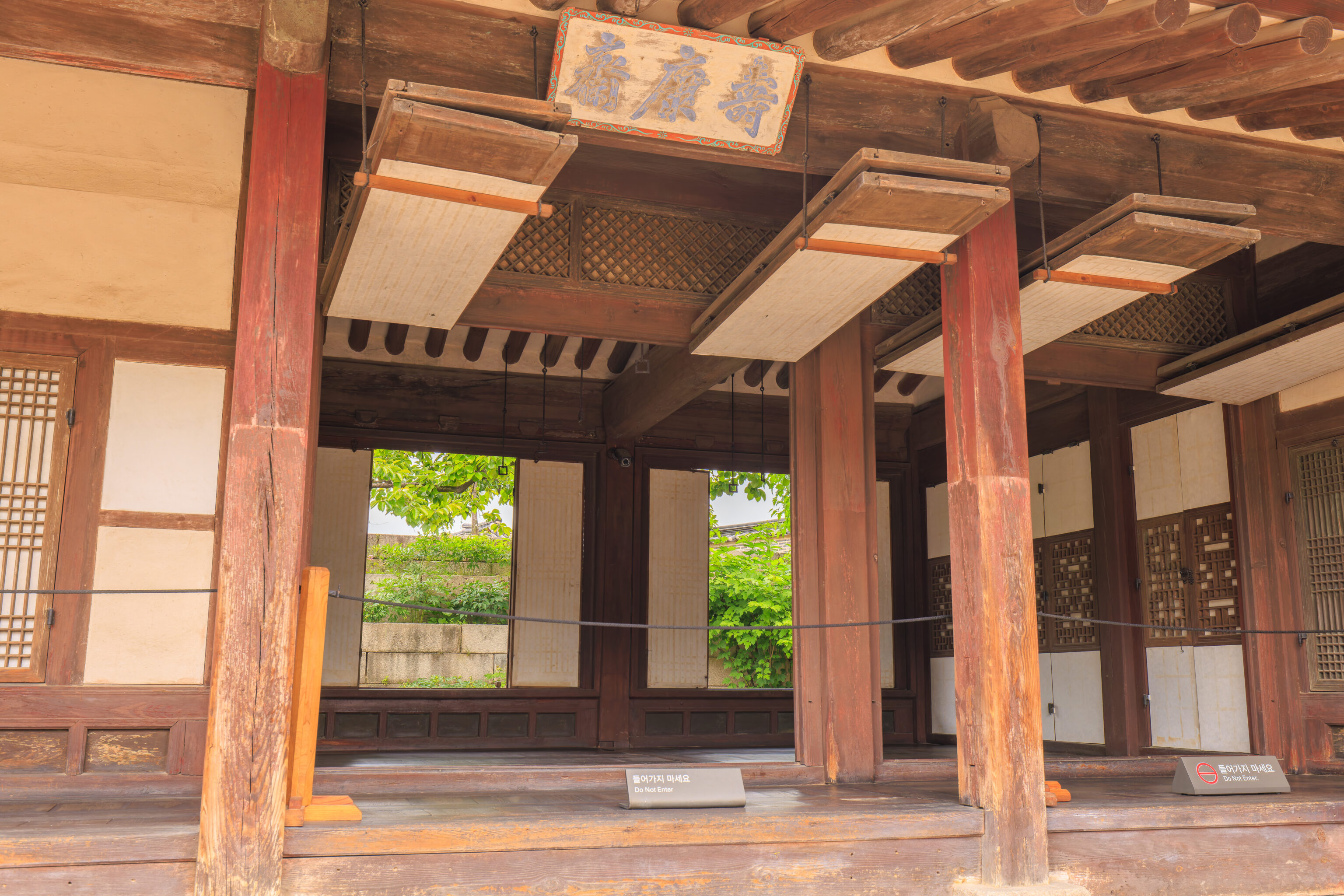
We were also able to look into this other building to the east. It might be the 수강재 Sugangjae.
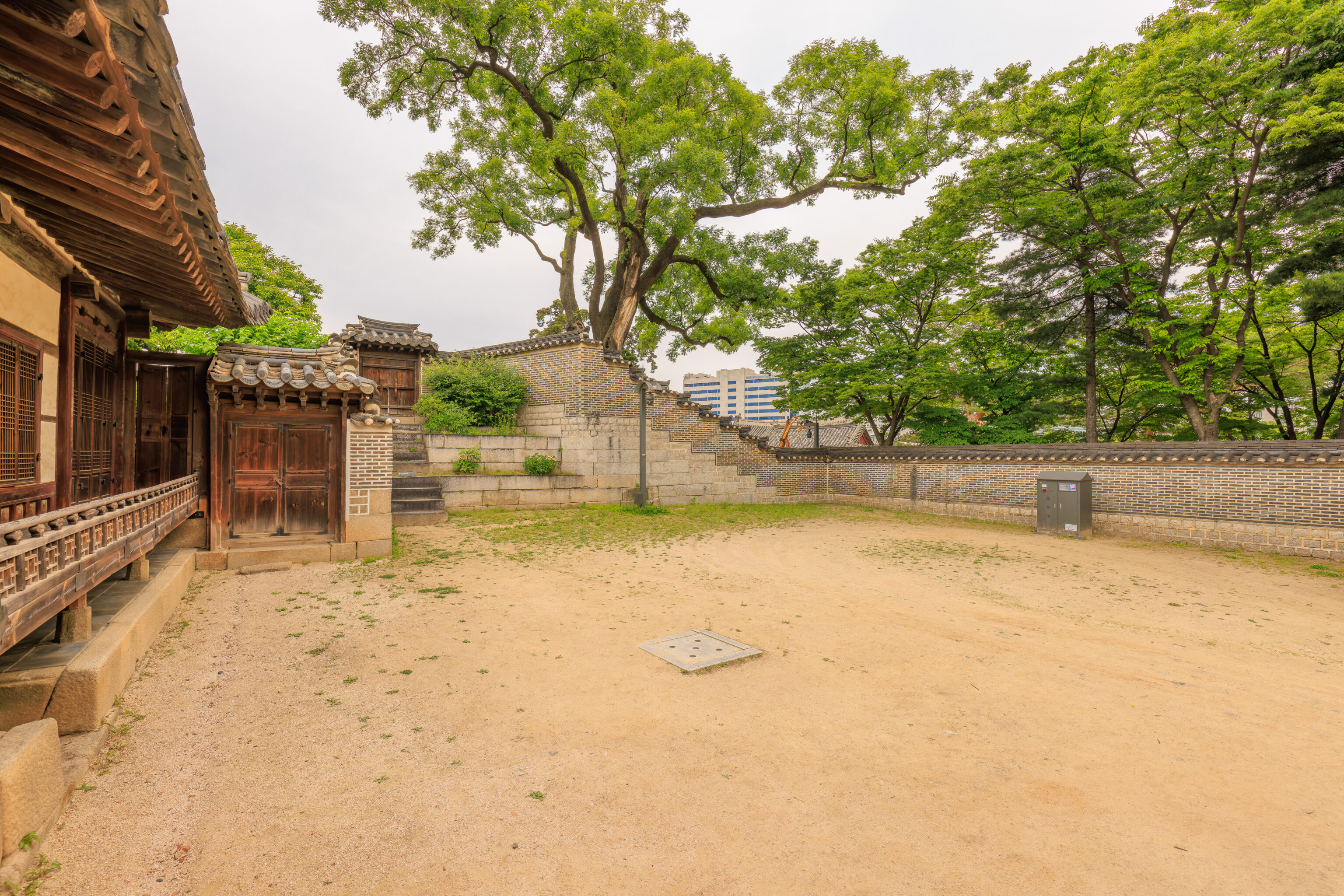
This was as far east as we could go. Changgyeonggung is on the other side of the wall.
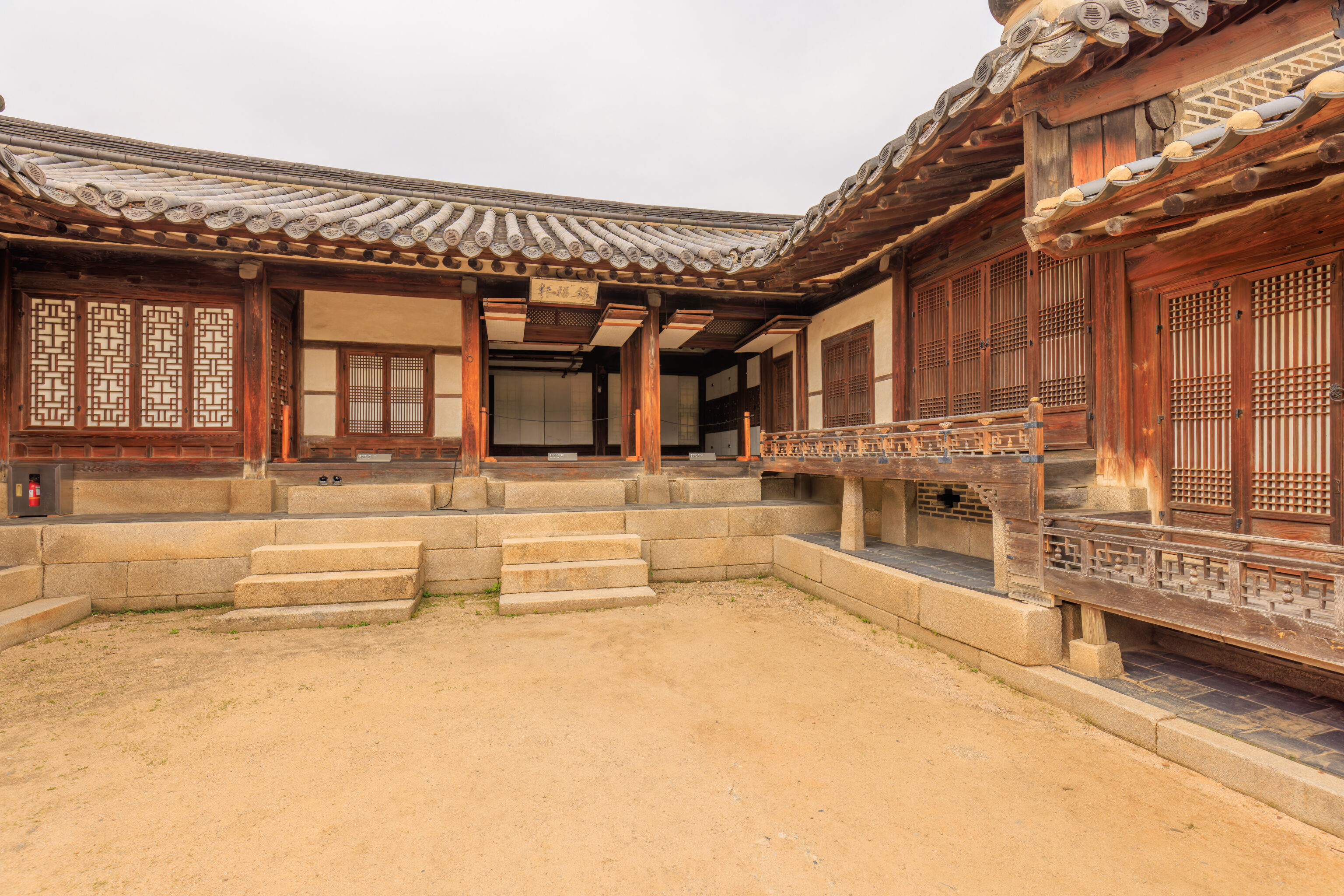
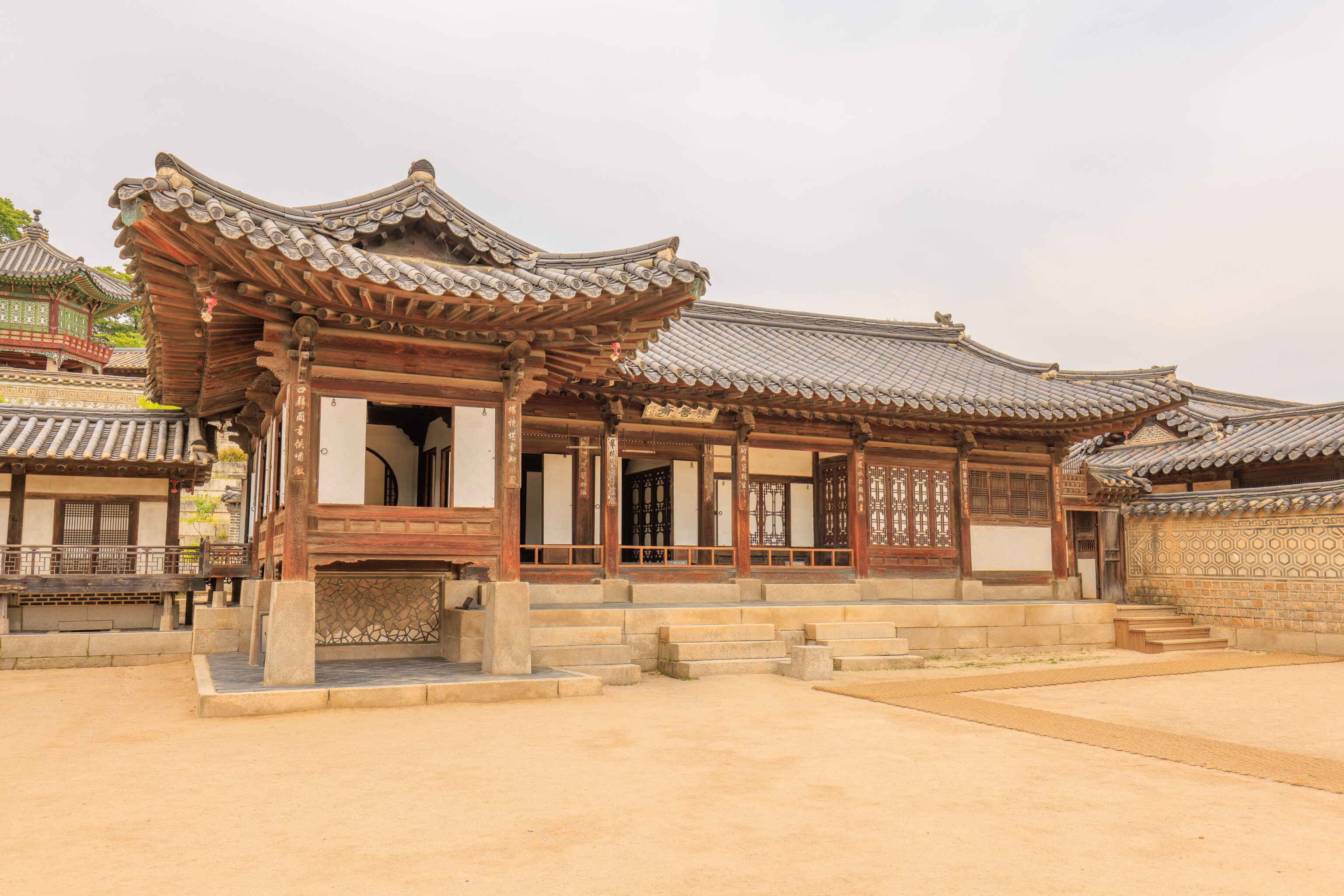
Unfortunately, we weren’t able to access any of the buildings on the slope.
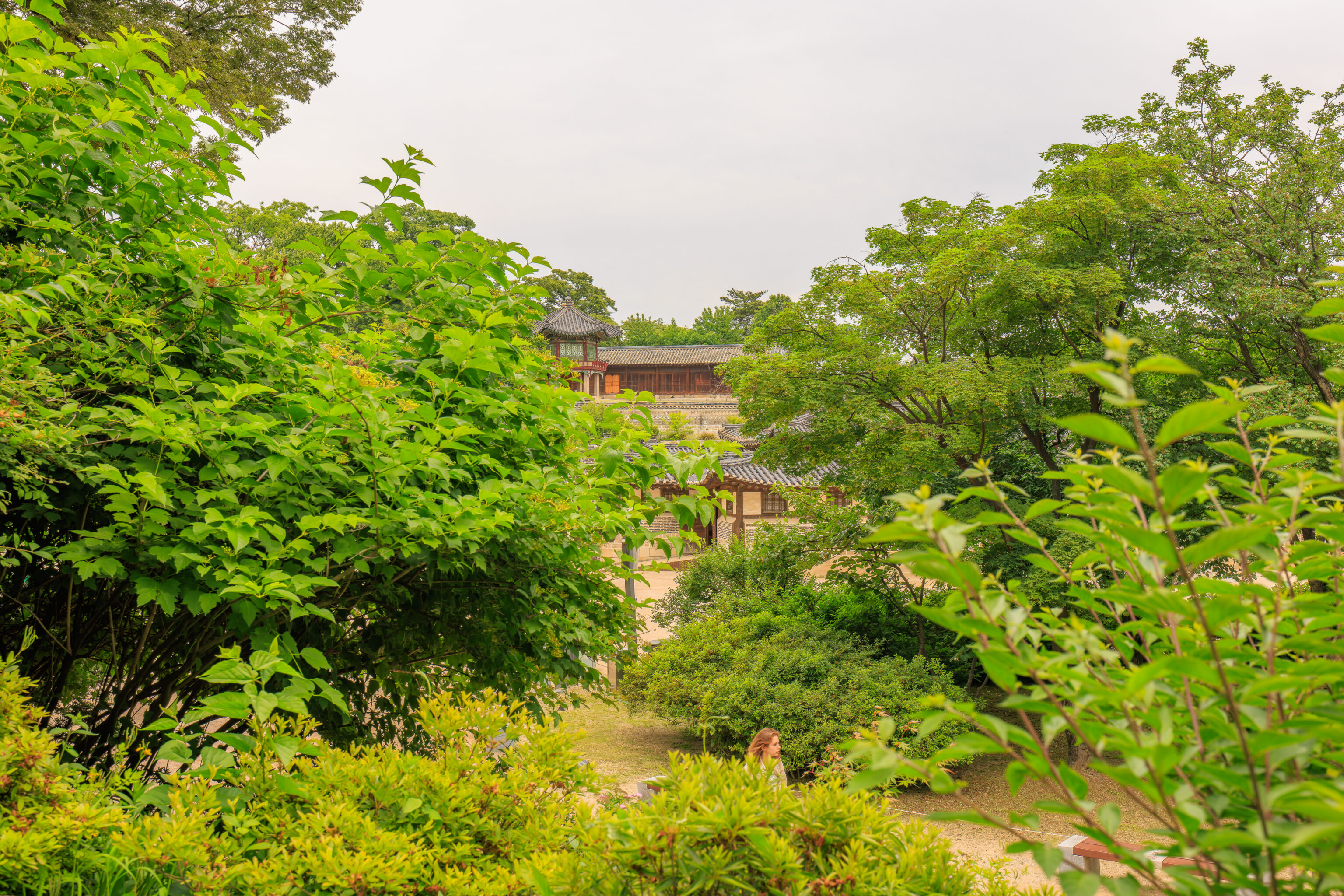
We visited the bathrooms to the south of the Nakseonjae. They are in a nice green area!
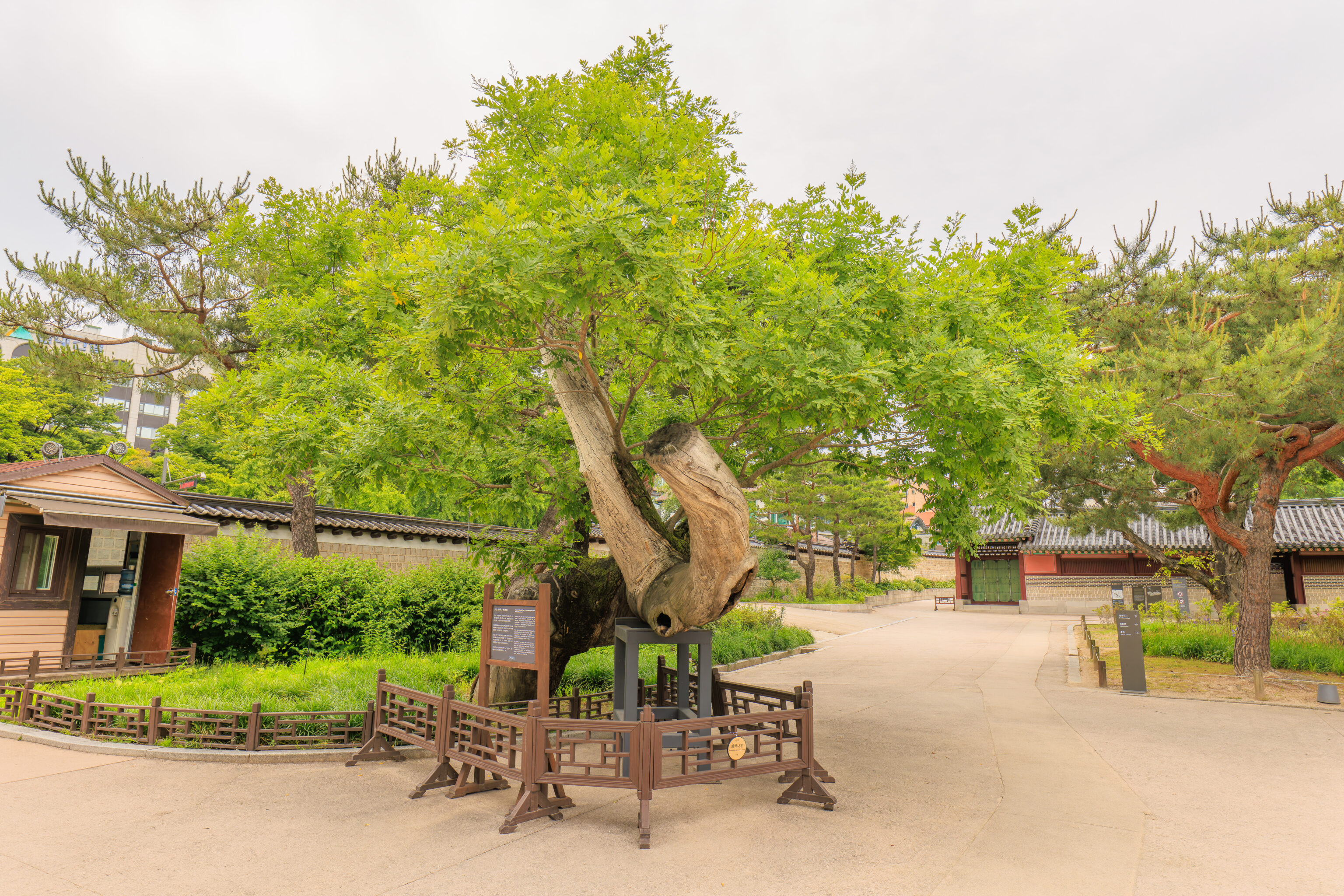
We headed back to the west to exit the palace. We noticed this tree and sign near the Donhwamun. This is one of a eight pagoda trees near the gate, as described by the sign in front of this tree:
Cluster of Pagoda Trees in Changdeokgung Palace (Natural Monument)
Inside the main gate, there are eight pagoda trees (also known as scholar trees) along either side. They are collectively designated as a Natural Monument. They range from 15 to 16m in height and 0.9-1.8m in circumference at breast height (1.2m above the ground), and are 300 to 400 years in age.
These trees can be seen in Donggwoldo (Painting of the Eastern Palaces), which dates to around the 1830s. It is believed that they were likely planted when 되는 Changdeokgung was reconstructed after being burned down during the Japanese Invasion of 1592.
The planting of these pagoda trees recalls a scene from a Confucian text that stated, 'Inside the main gate of the palace were planted pagoda trees, under which three ministers discussed state affairs.' In addition to at palaces, such trees were commonly planted in Korean villages where respected scholars resided, hence the name 'scholar tree.'
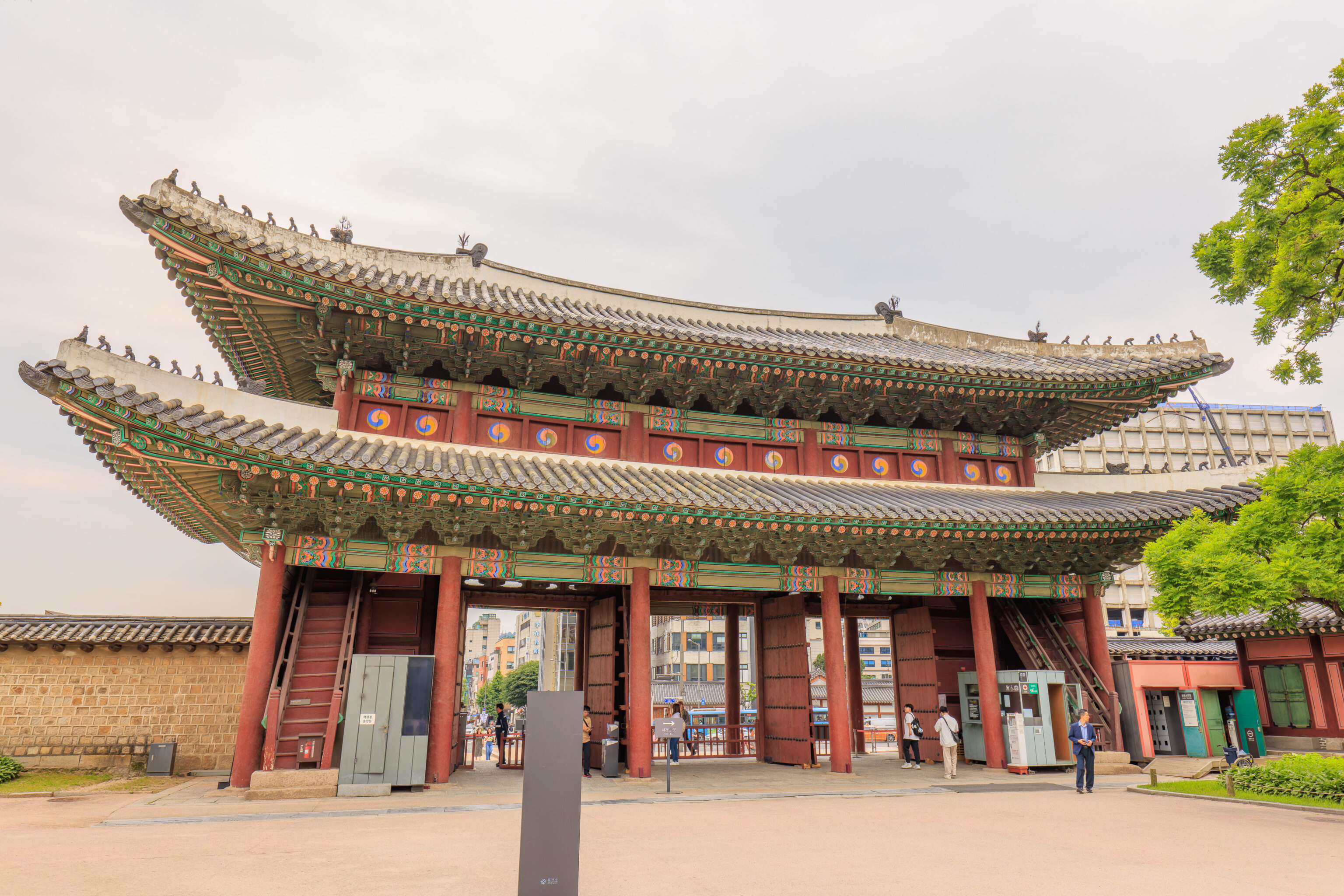
We exited through the Donhwamun to end our visit.
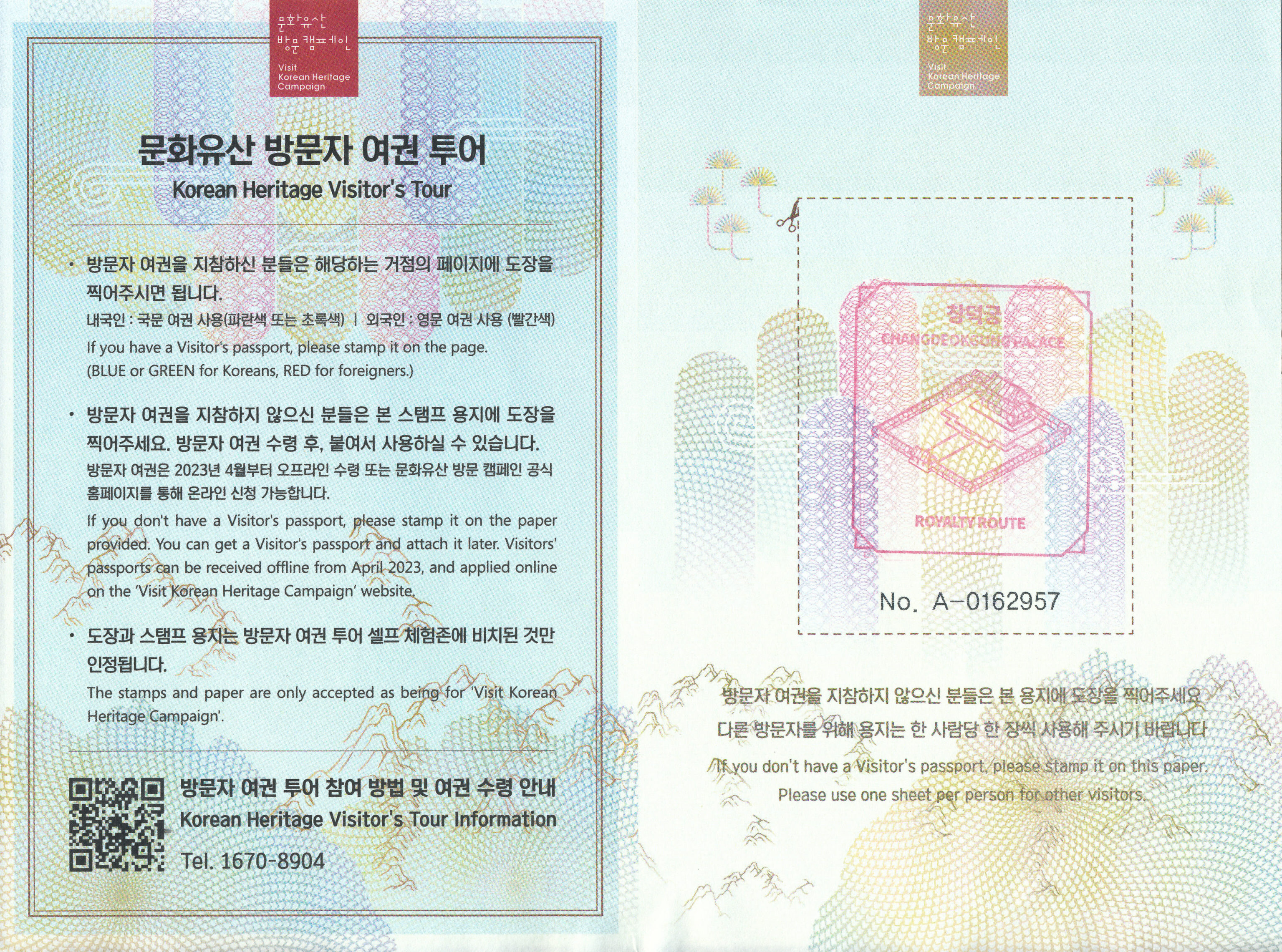
During our visit, we got a sheet and stamp from a self-serve stamping station. It is quite nice!
Bukchon Hanok Village
We decide to briefly visit the 북촌한옥마을 Bukchon Hanok Village which wasn’t too far away. The village is a neighborhood of traditional Korean houses, or hanok, from the Joseon Dynasty and is to the northwest of the Donhwamun.
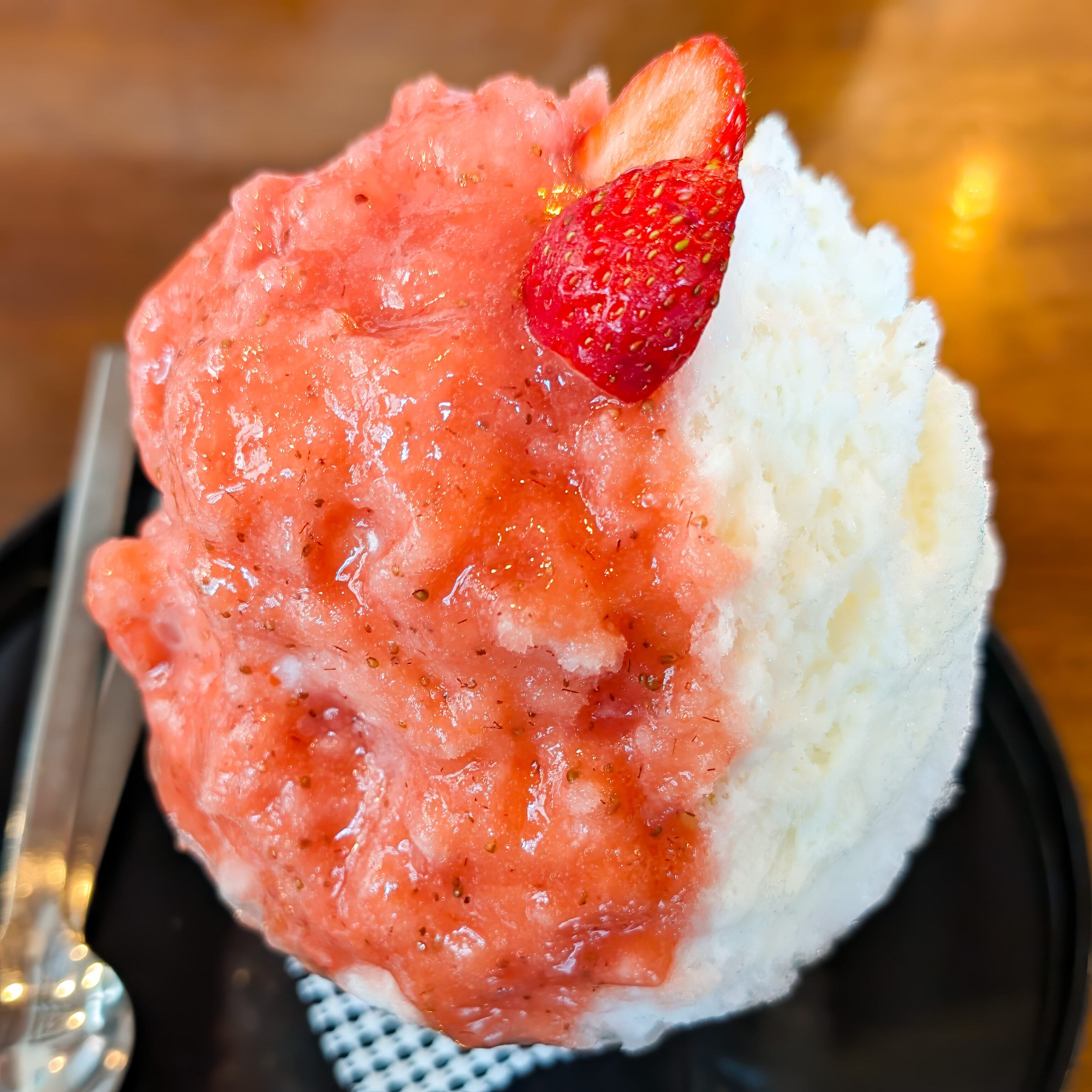
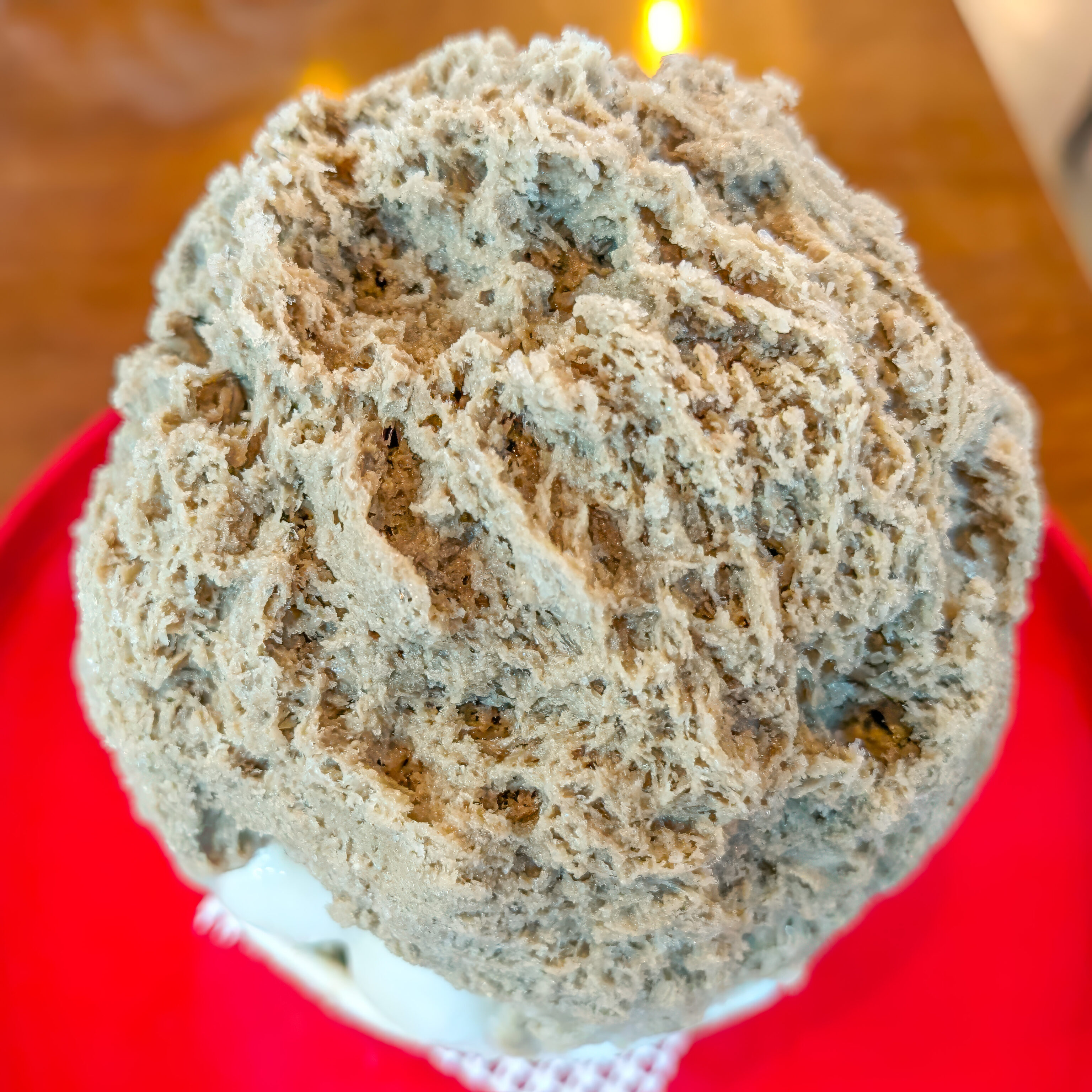
It wasn’t clear to us where the main part of the historical area of interest to tourists was. We decided to stop at a bingsoo cafe, 부빙 Boobing, at what seemed to be the southern edge of the village.
The bingsoo here were somewhat like Hawaiian shave ice. The strawberry one had excellent flavor which was well integrated into the ice. The hojicha seemed to be hojicha ice and was thus very consistent all around.
After having the bingsoo, we walked to the west, thinking it might lead us to the hanok. While there seemed to be some smaller buildings, it didn’t seem like we were going the right way so we returned to the nearest main street and continued walking to the north.
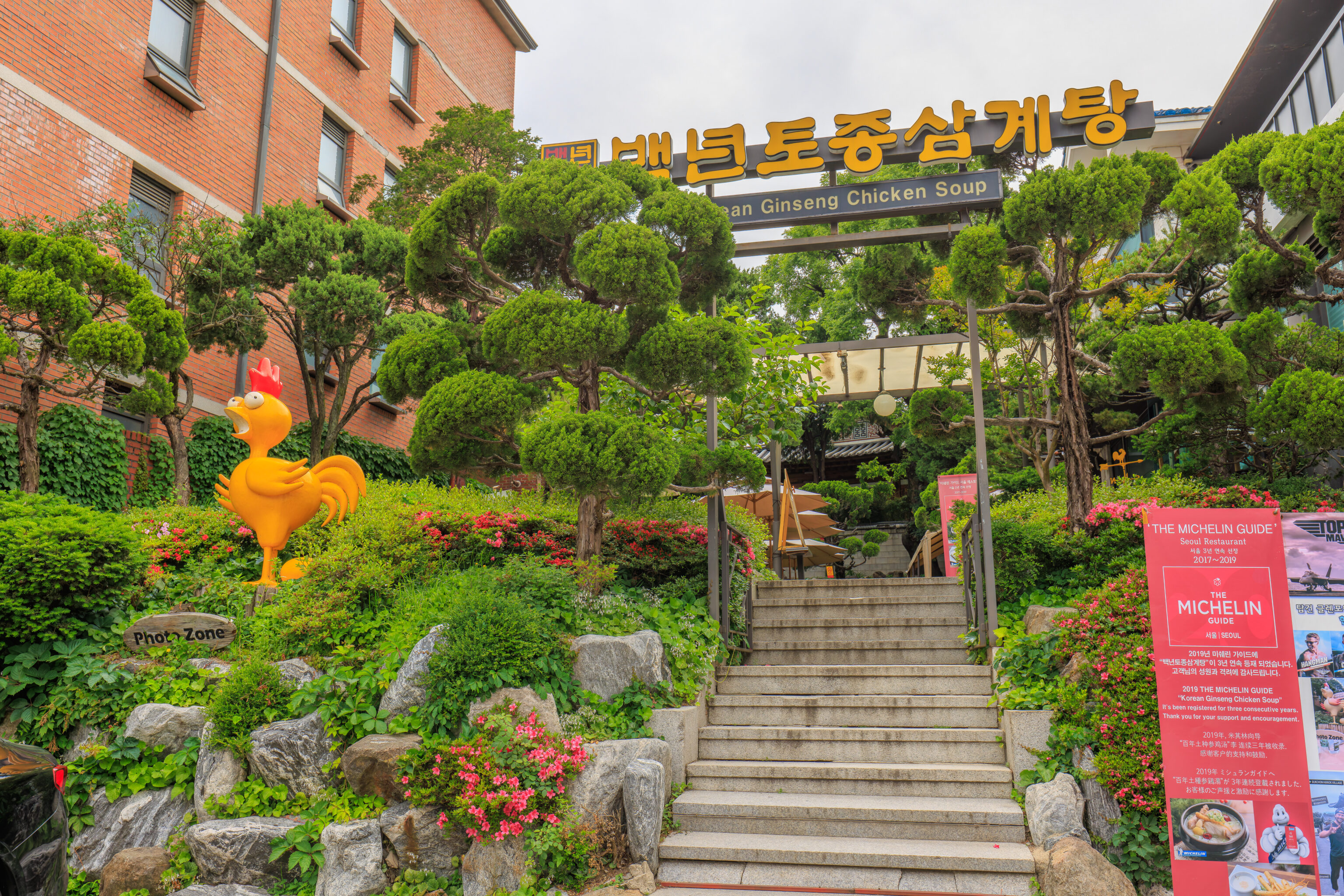
We passed by this ginseng chicken soup restaurant. It got our attention due to all the landscaping as well as the big yellow chicken “Photo Zone” out front!
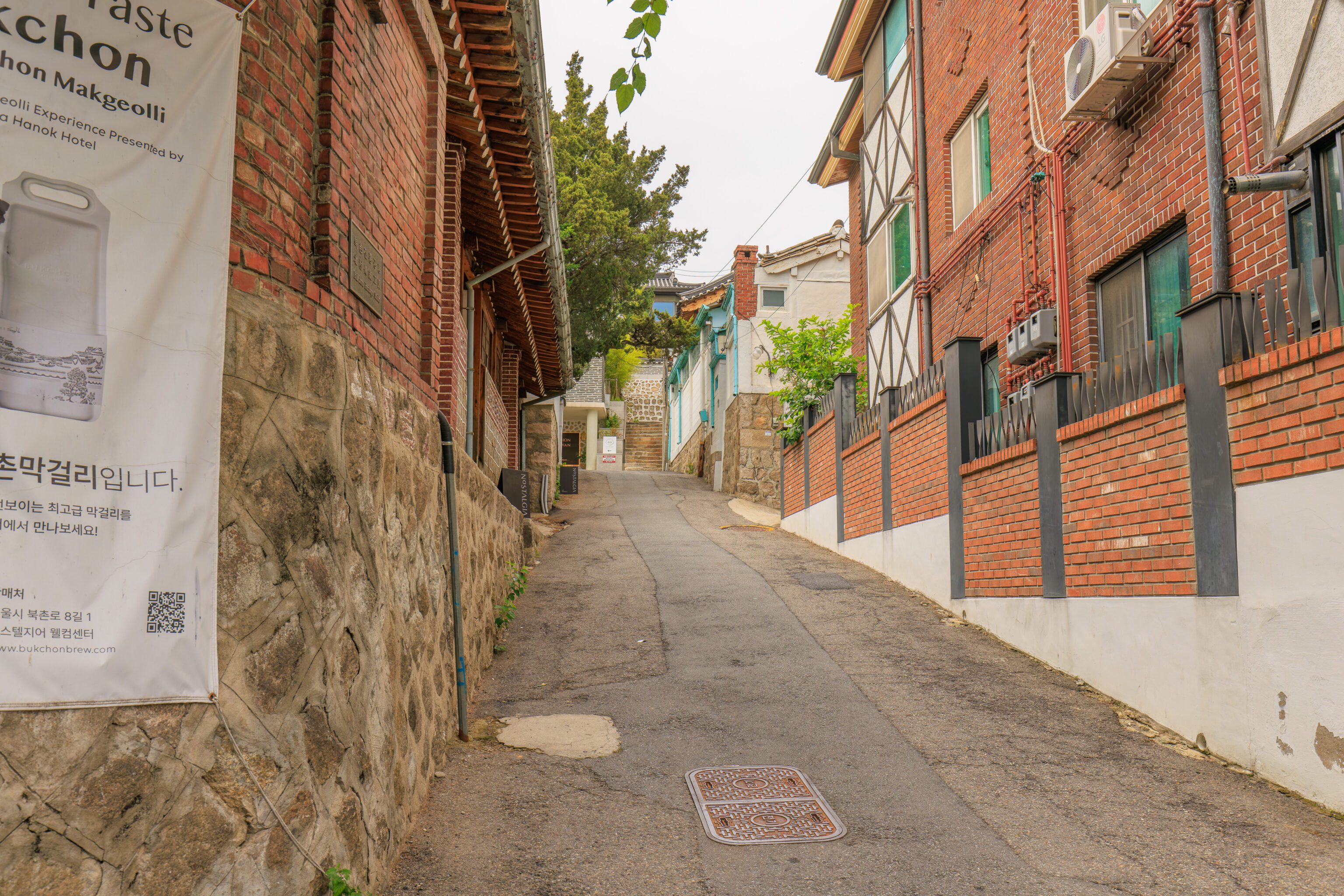
We ended up walking down a side street not too far north from the chicken restaurant.
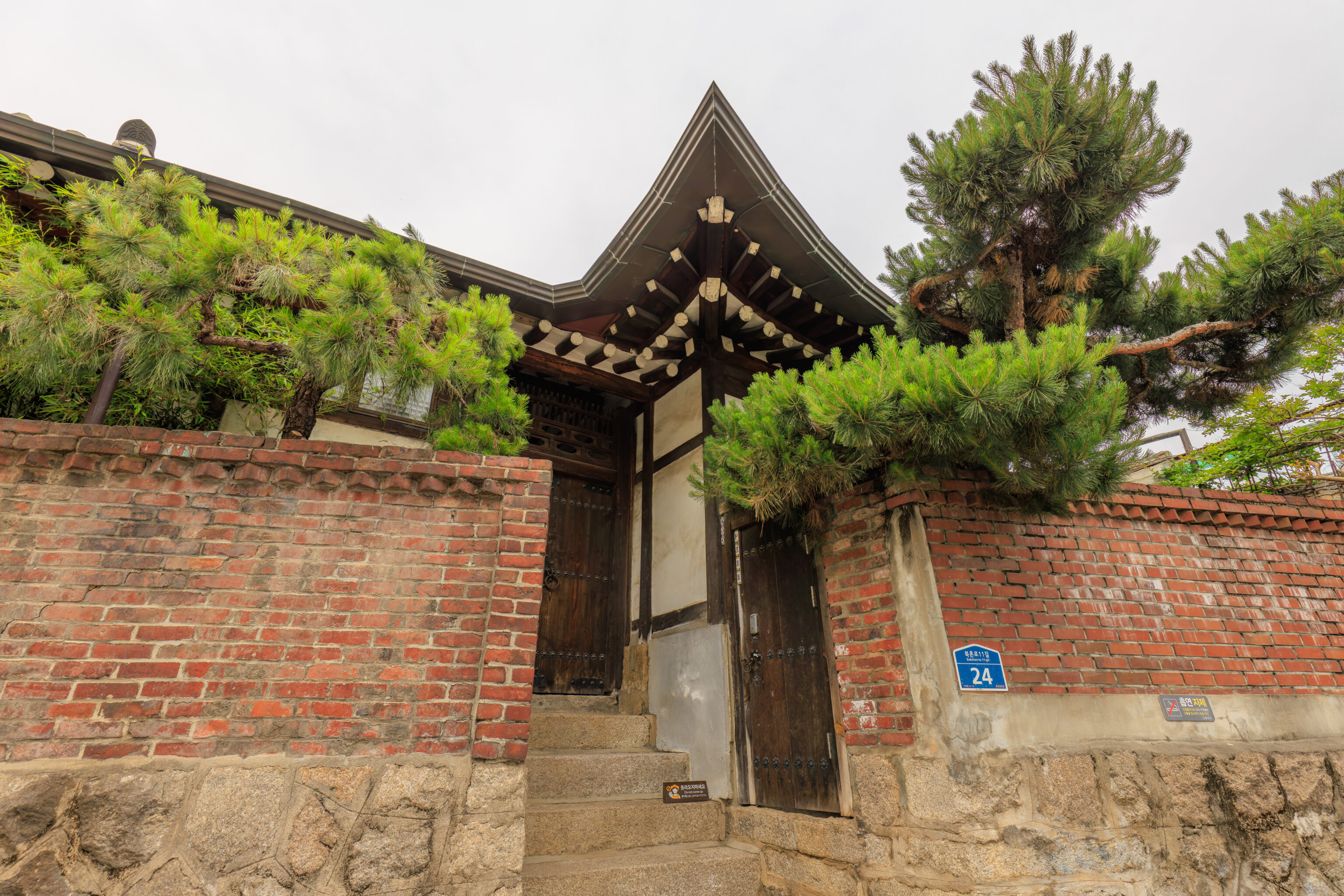
There were buildings that maybe seemed a bit historical in appearance?
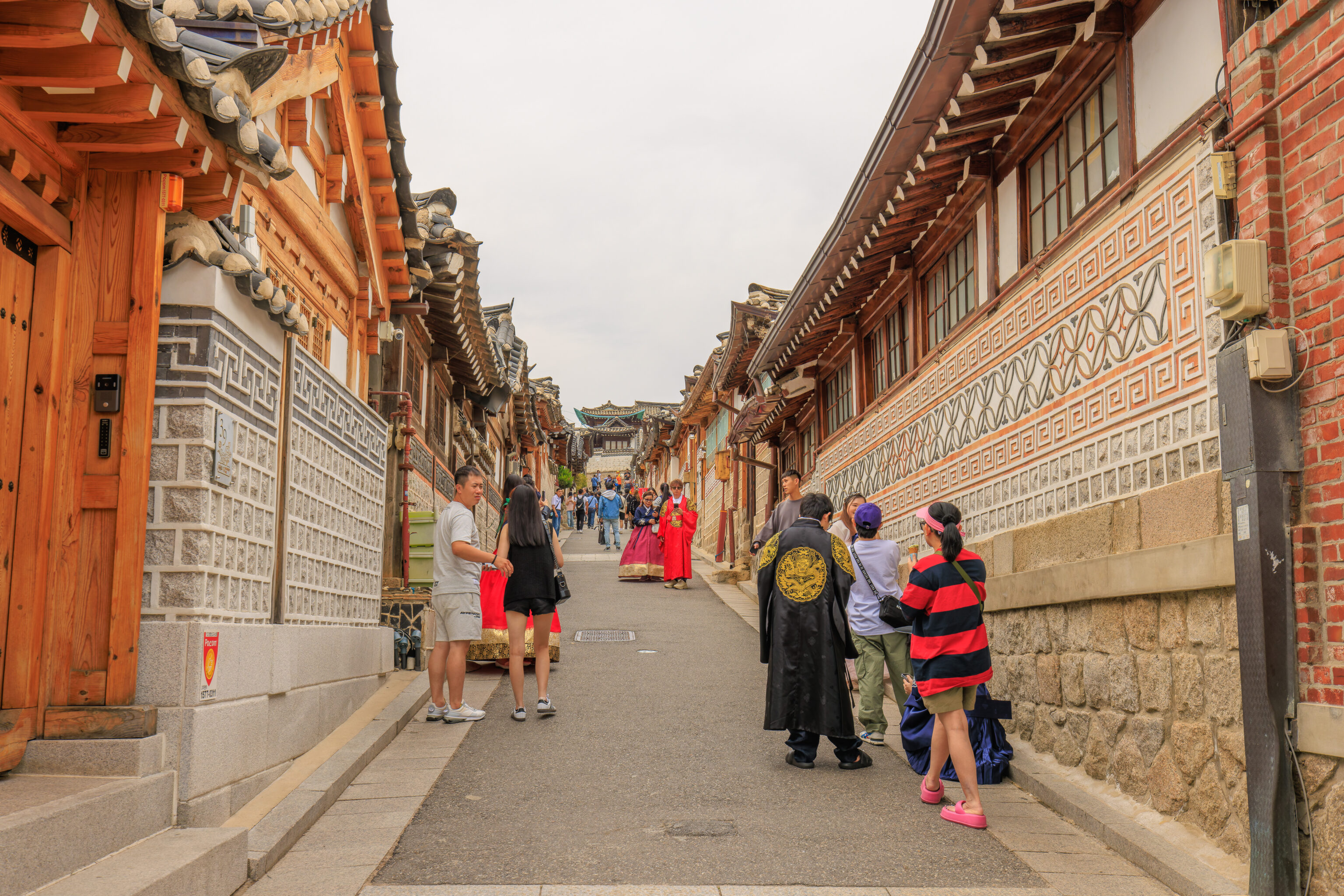
Soon, we found what we were looking for! This steep road had many tourists. We decided to walk up the hill.
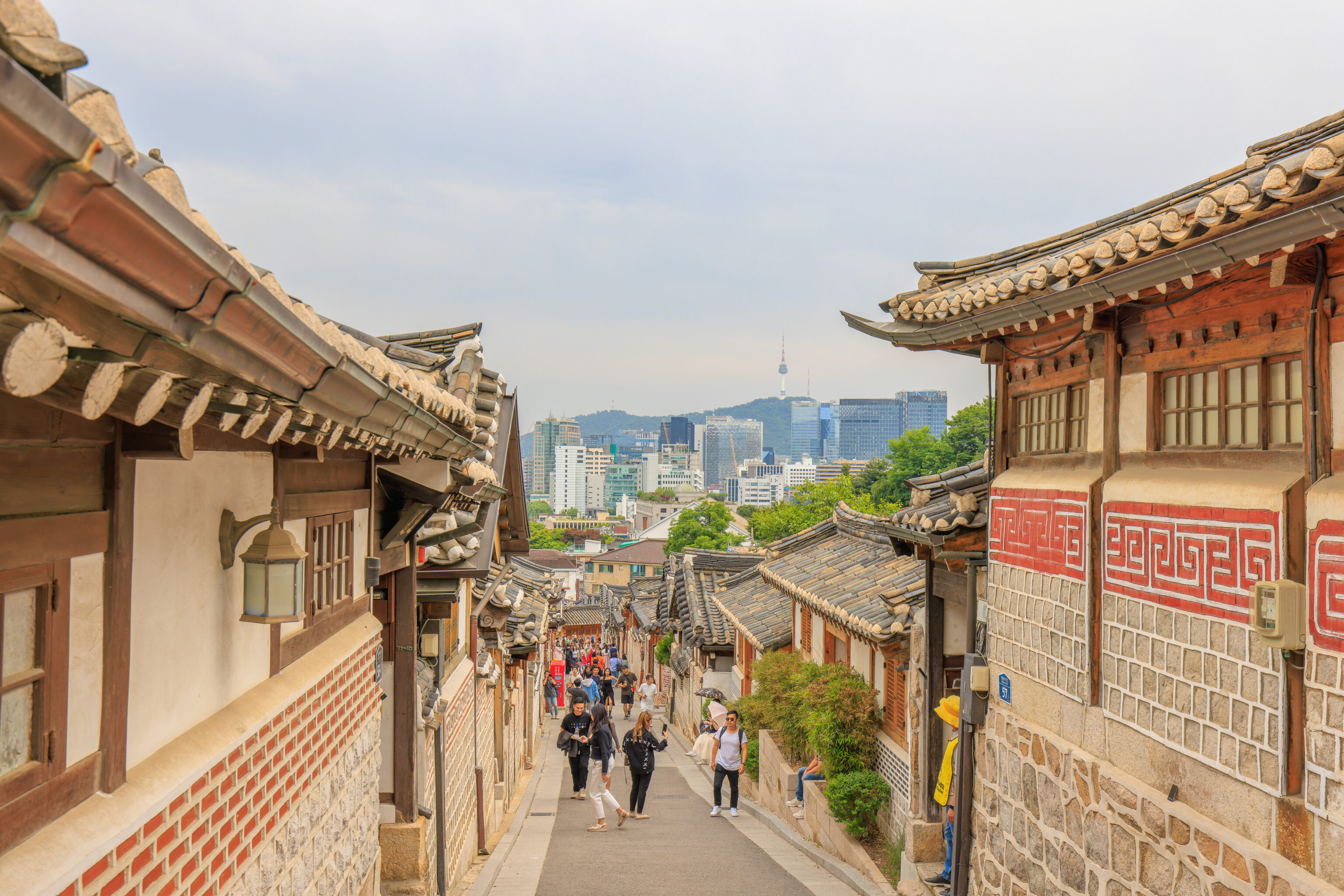
There was a fantastic view of Seoul in the background and the hanok in the foreground from the end of the road.
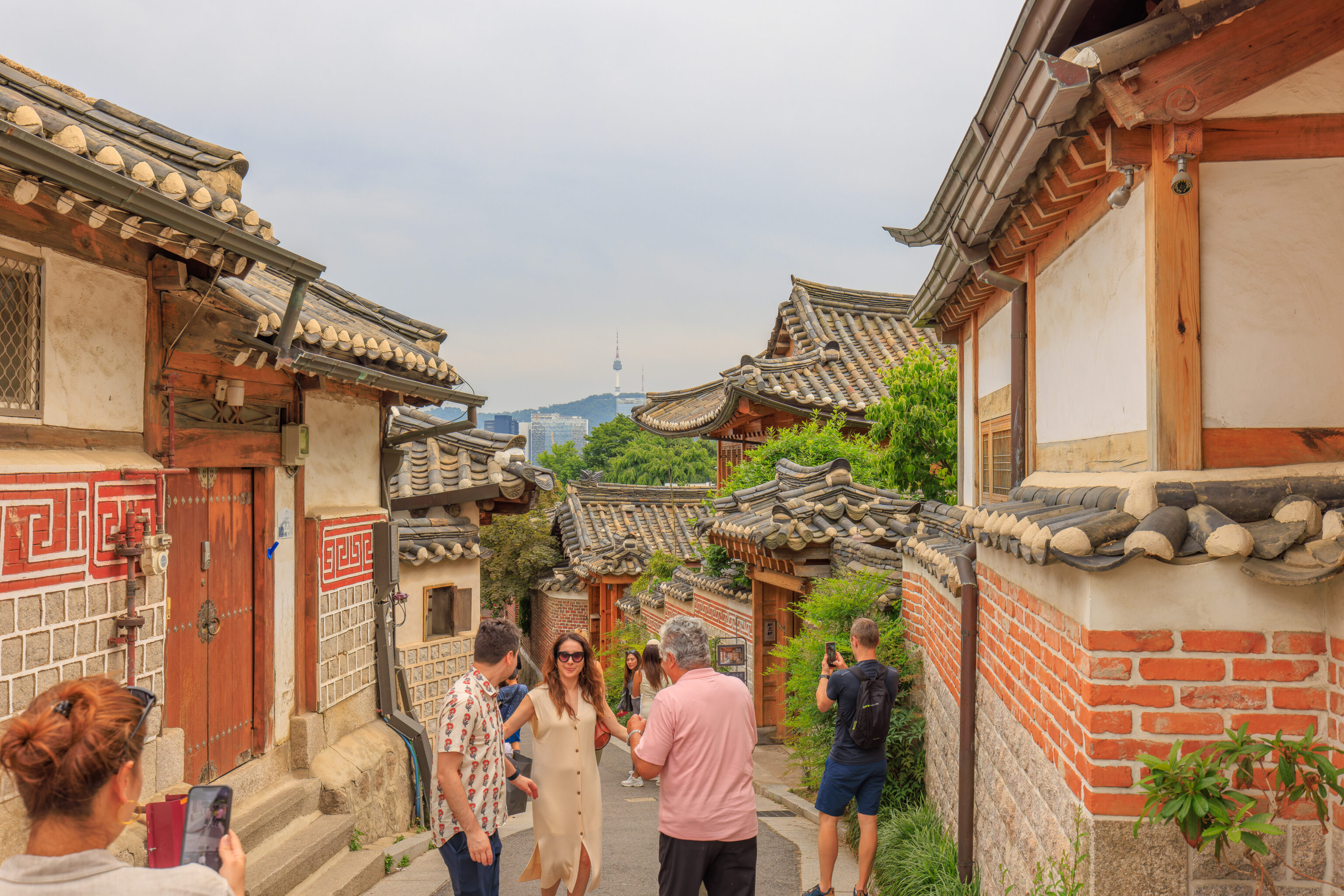
The next road to the west had less people but still had a nice view. From here, we decided to walk back to Anguk Station to return to Hongdae. We wanted to beat the rush our crowds as it was now 3:30pm. It ended up being a bit further than anticipated.
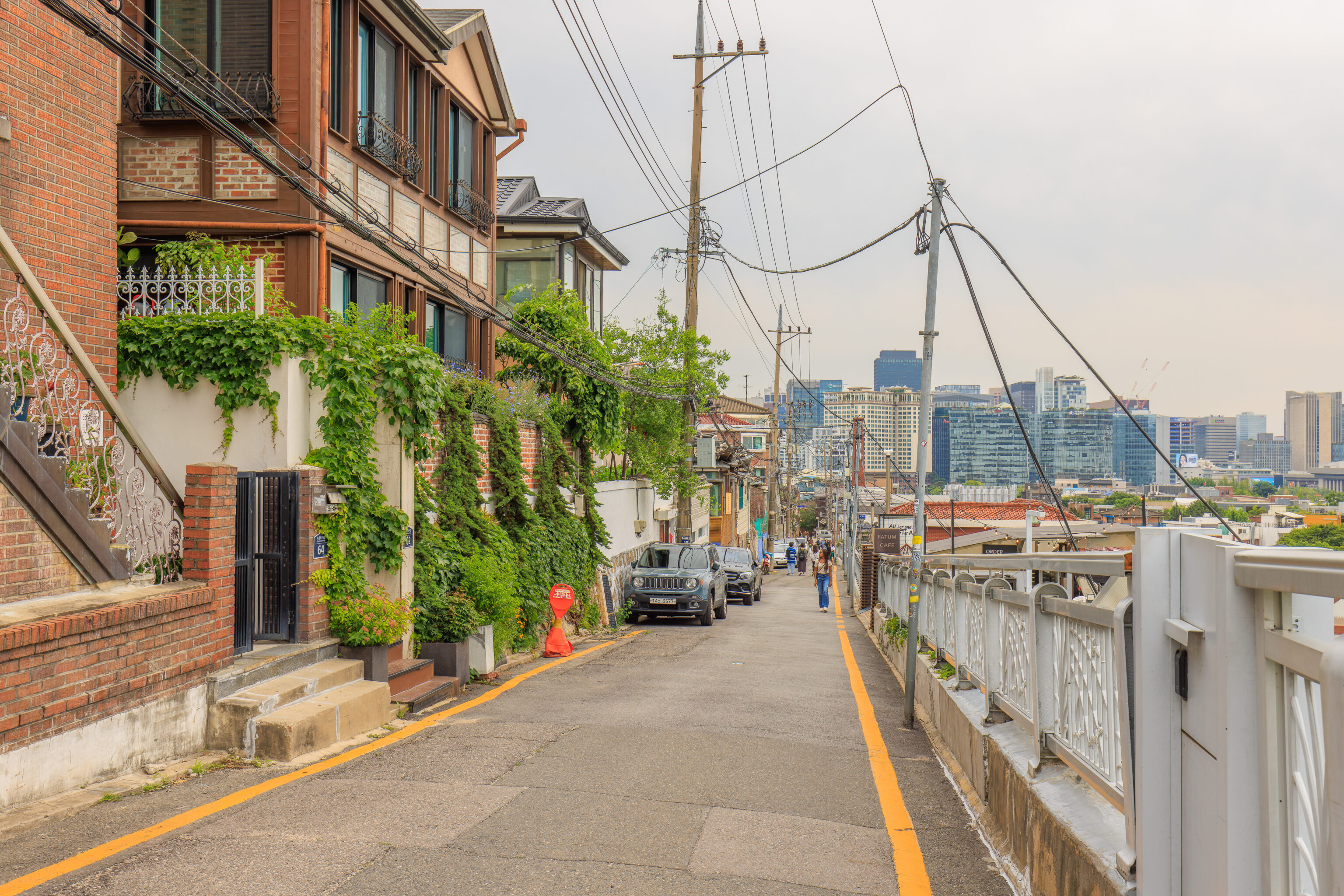
We first walked to the west until we encountered the end of the road. From here, we started walking to the south.
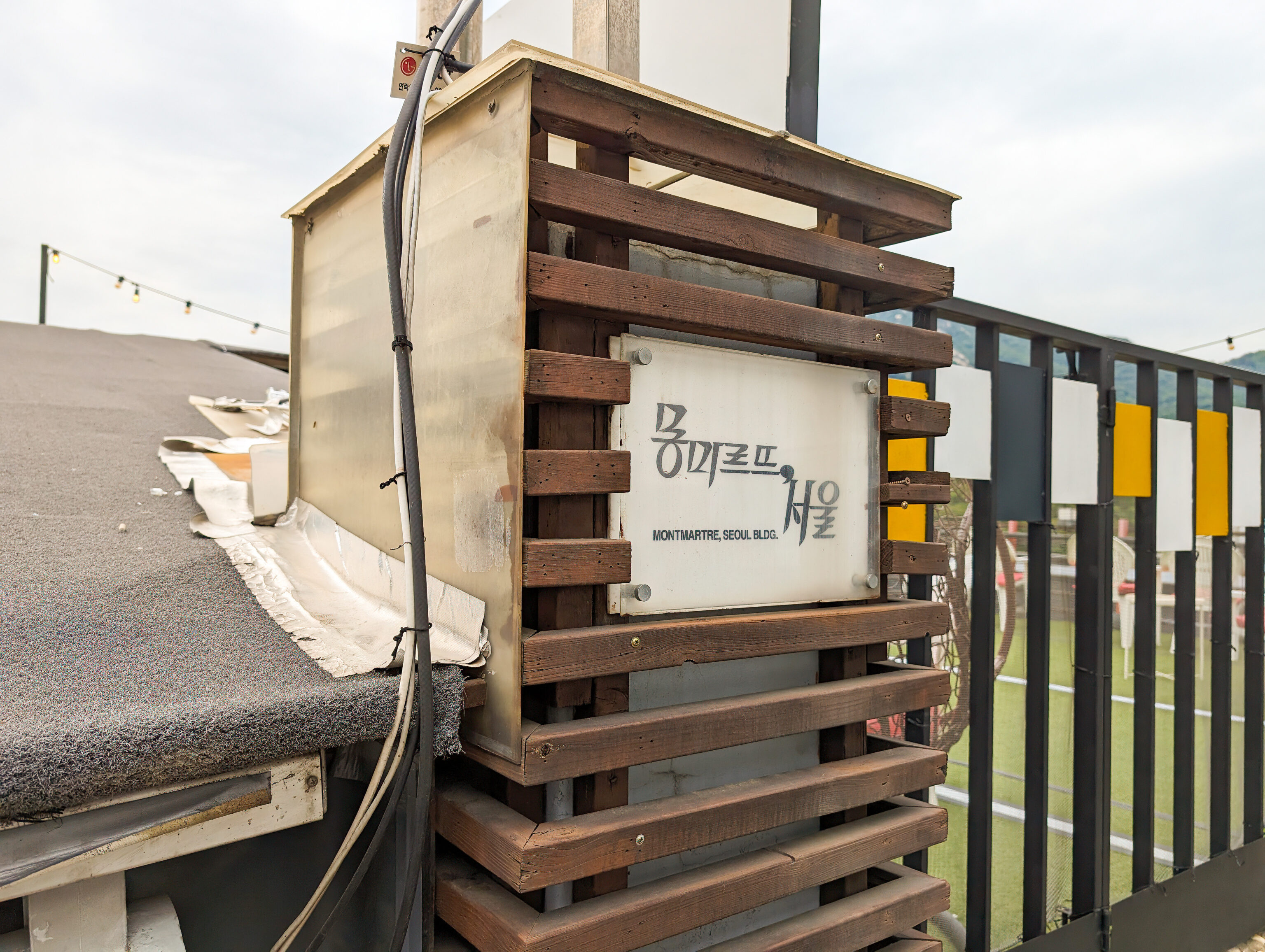
This sign got our attention as we were in Montmartre, Paris, last year.
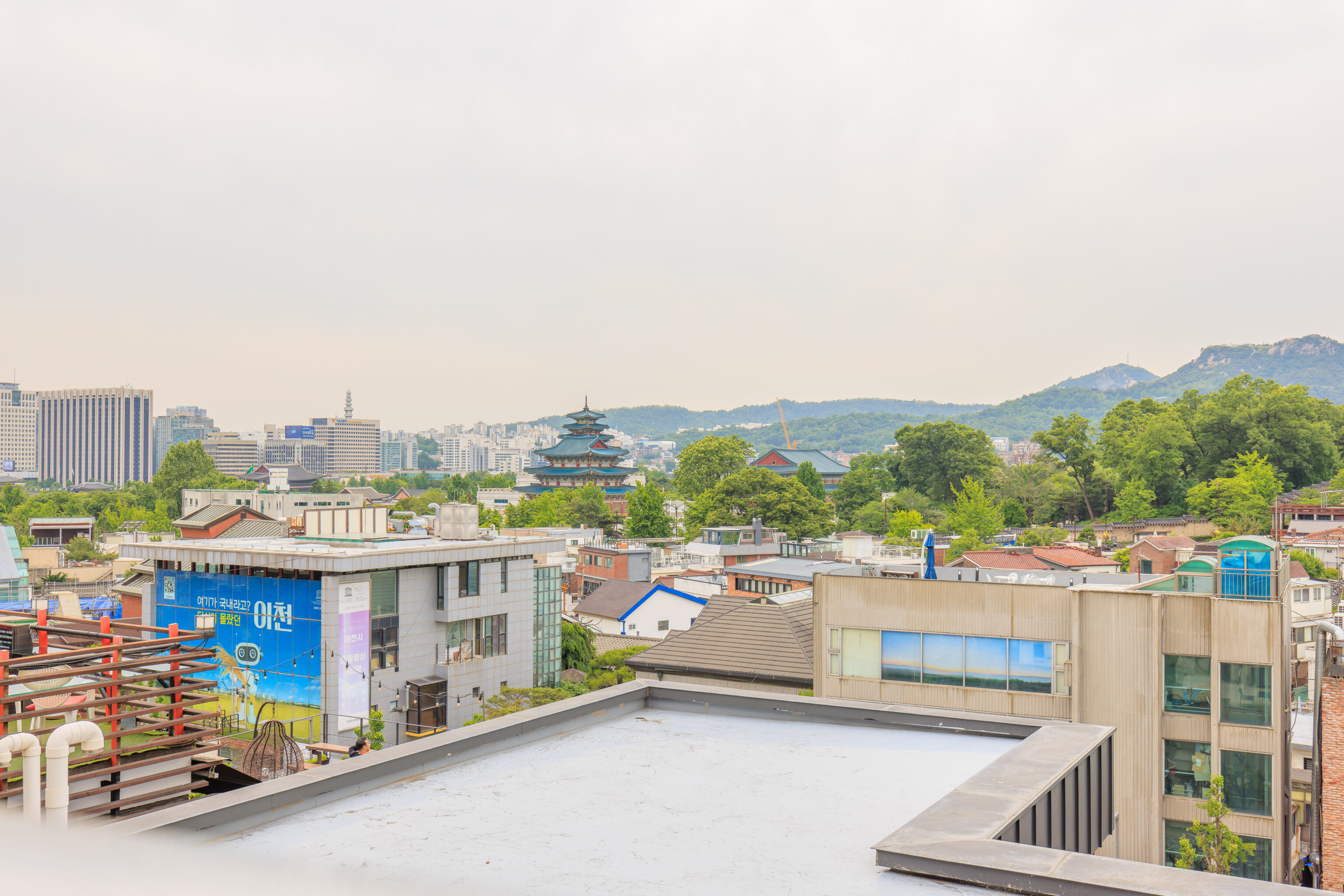
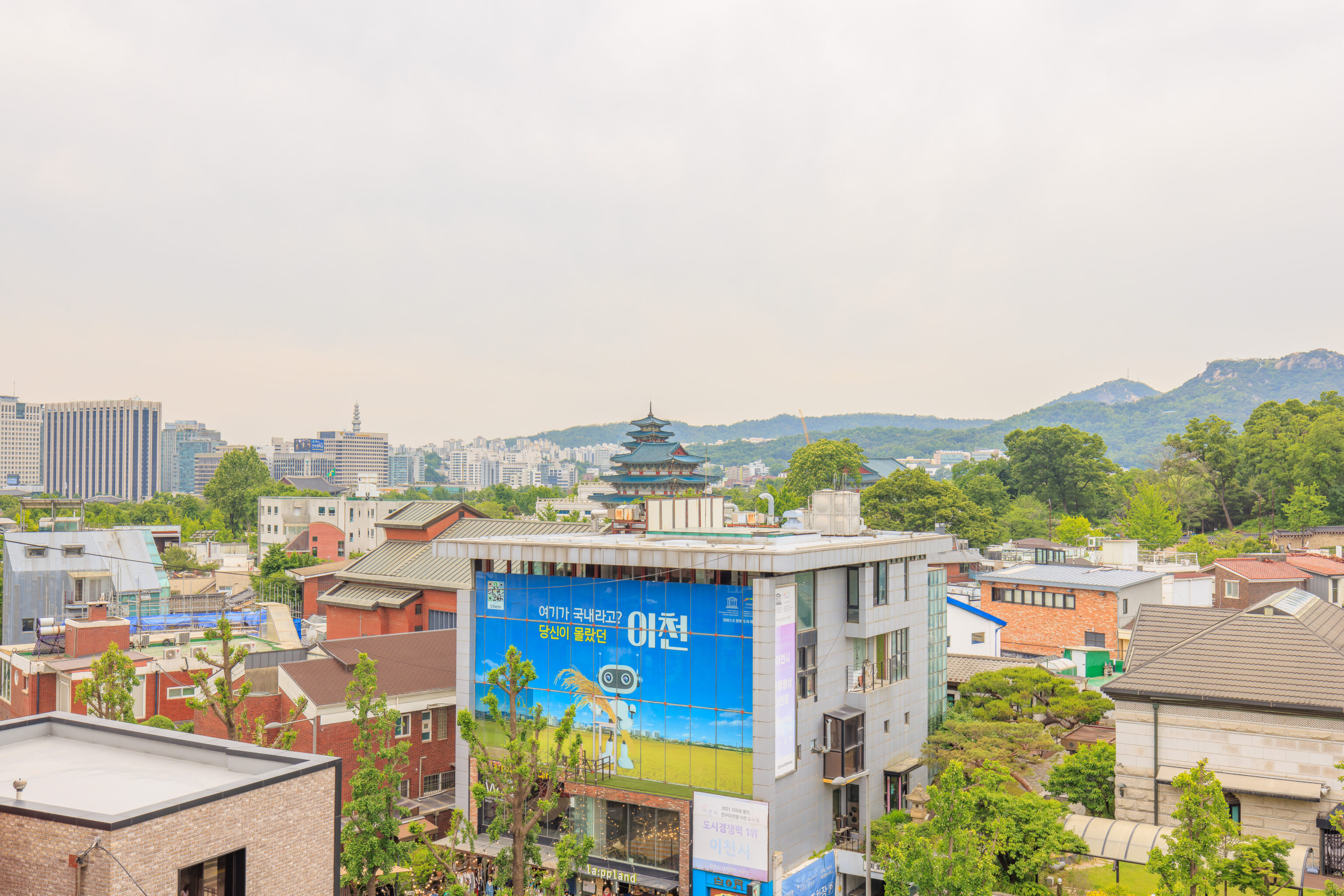
The road we were walking on was at the edge of a hill, giving us great views to the west. We noticed a pair of blue roofed buildings. They appear to be the 국립민속박물관 The National Folk Museum of Korea. We walked by these buildings on our first full day here in Seoul while visiting Gyeongbokgung and the Cheong Wa Dae, though we didn’t notice the blue roofs.
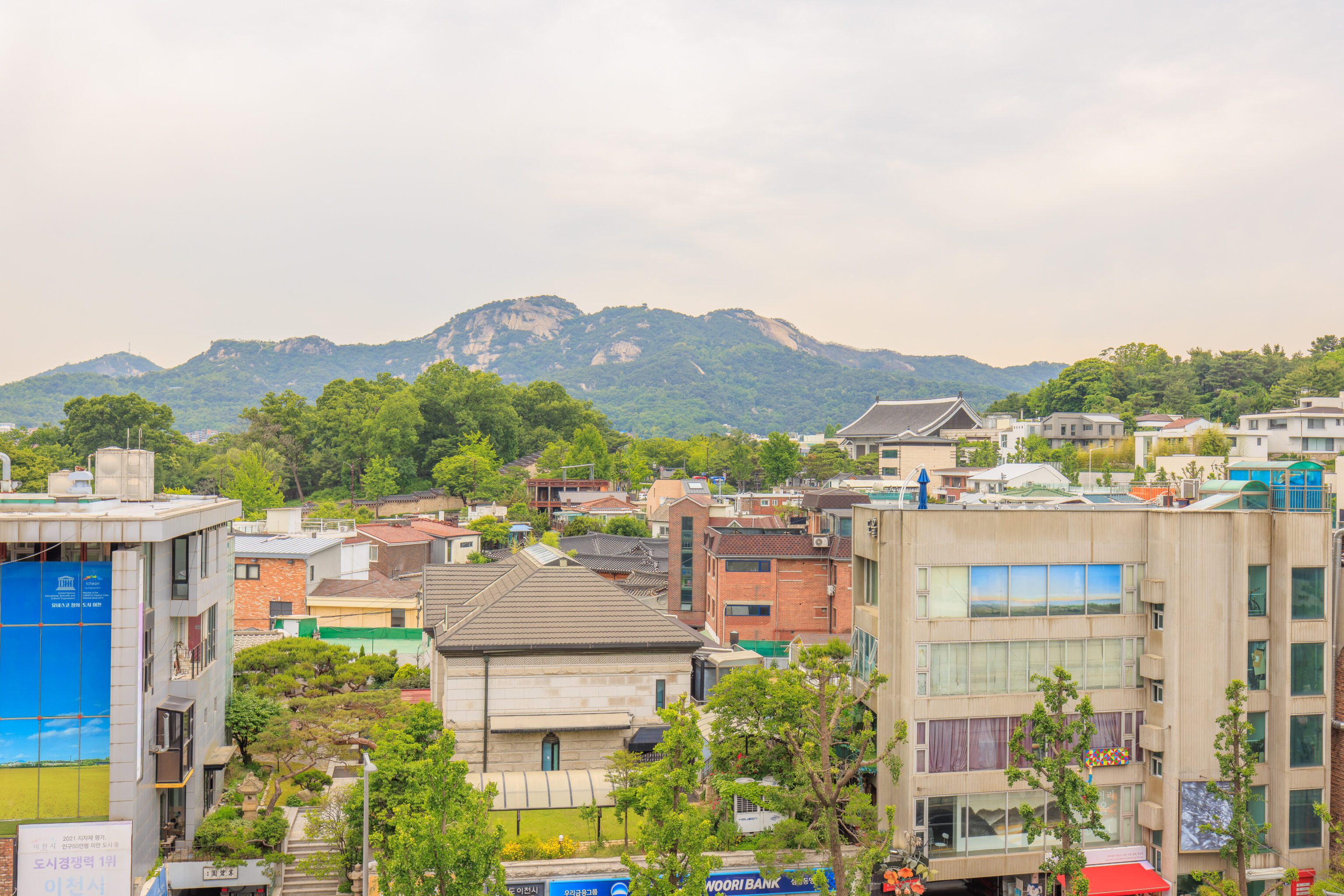
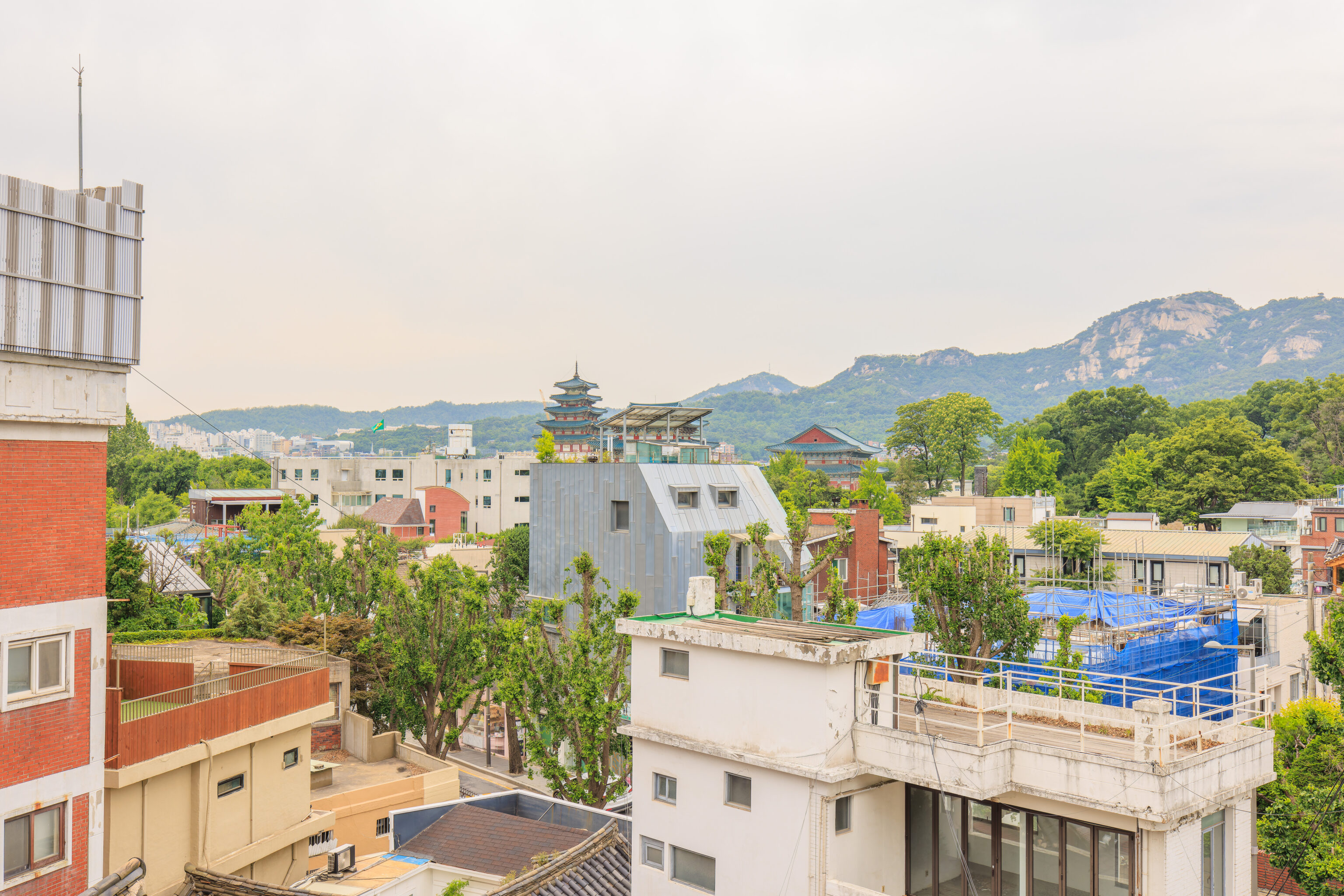
The road gradually descended as we walked to the south.
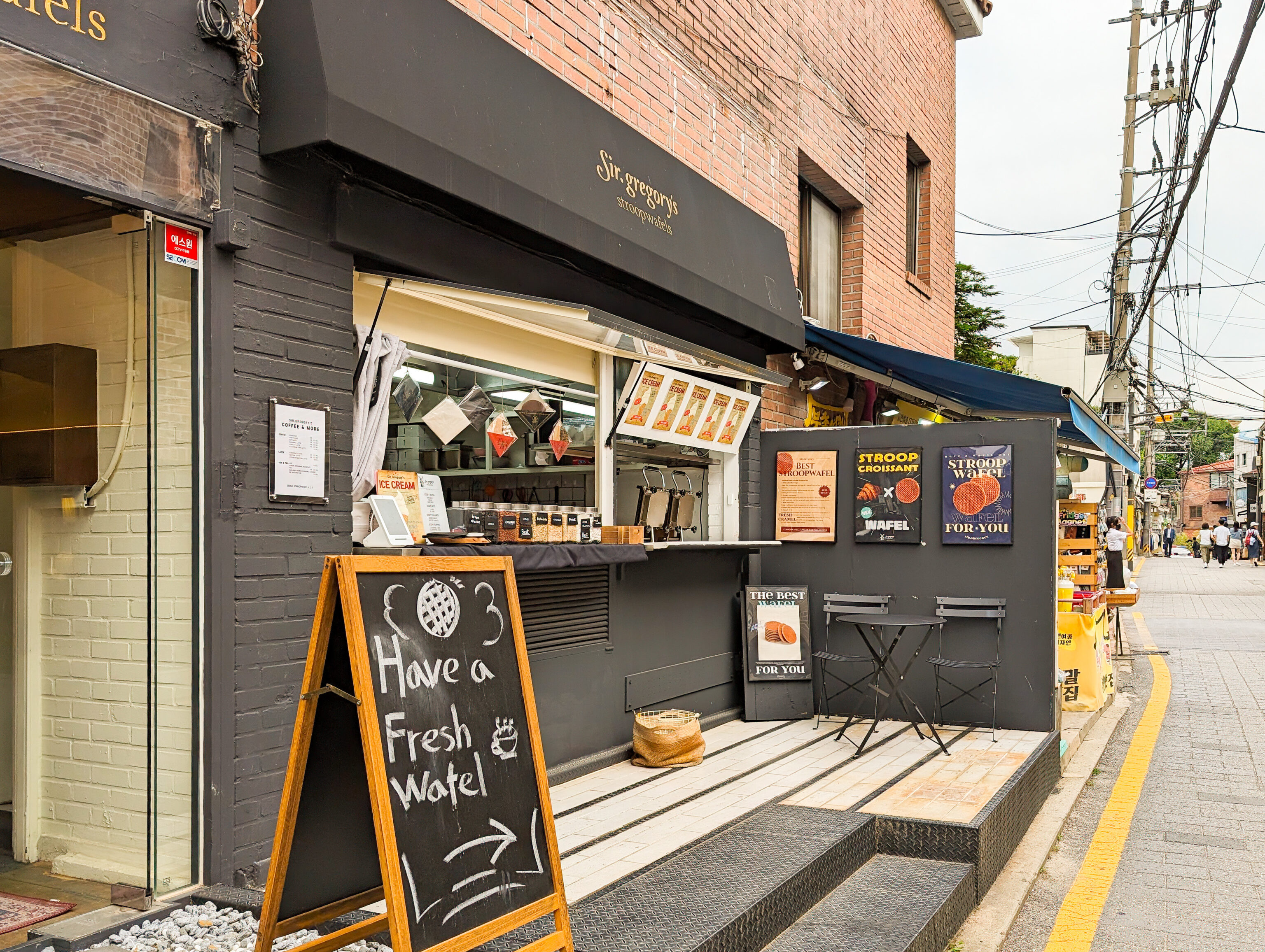
We passed by a stroopwafel shop! Maybe we should have tried it? We’re only familiar with the Daelmans brand stroopwafels as United Airlines has served them onboard. This is even mentioned on the Airplane Snacks page of Daelmans’ website!
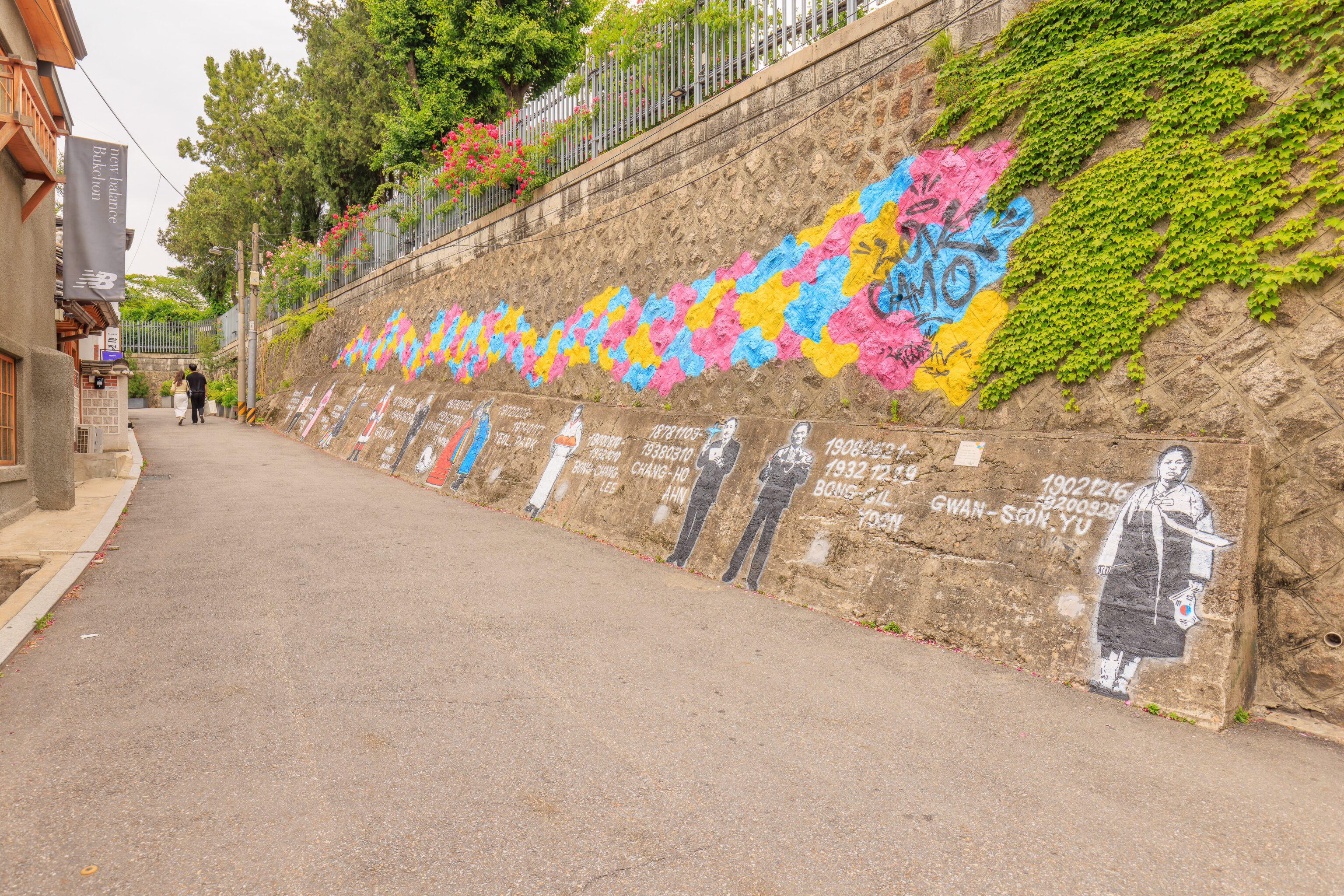
We noticed this mural on the side of a retaining wall as we continued walking to the south. Looking up some of the names of the people that are depicted, they seem to be independence activists. Based on the listed dates, most did not survive to see an independent Korea.
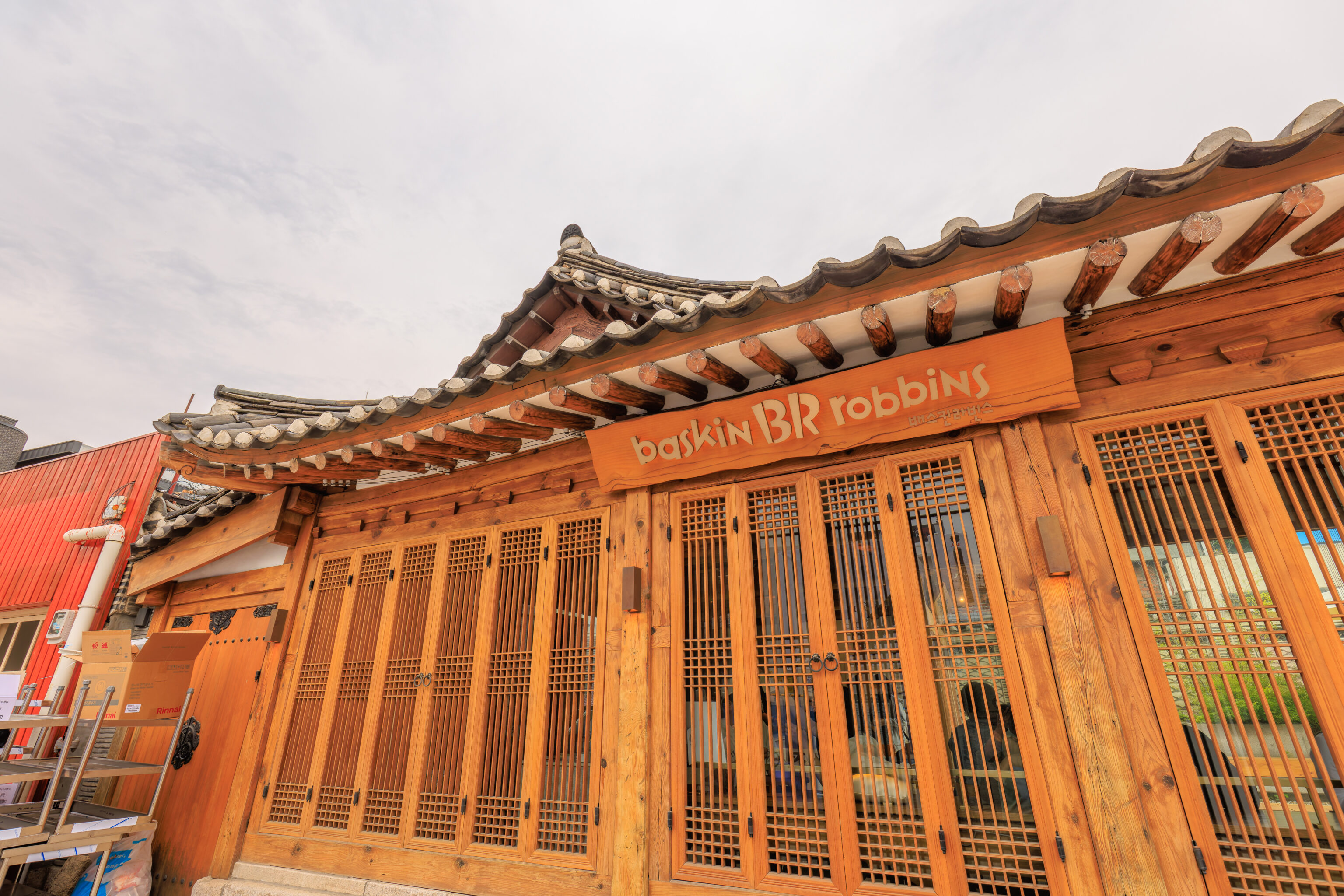
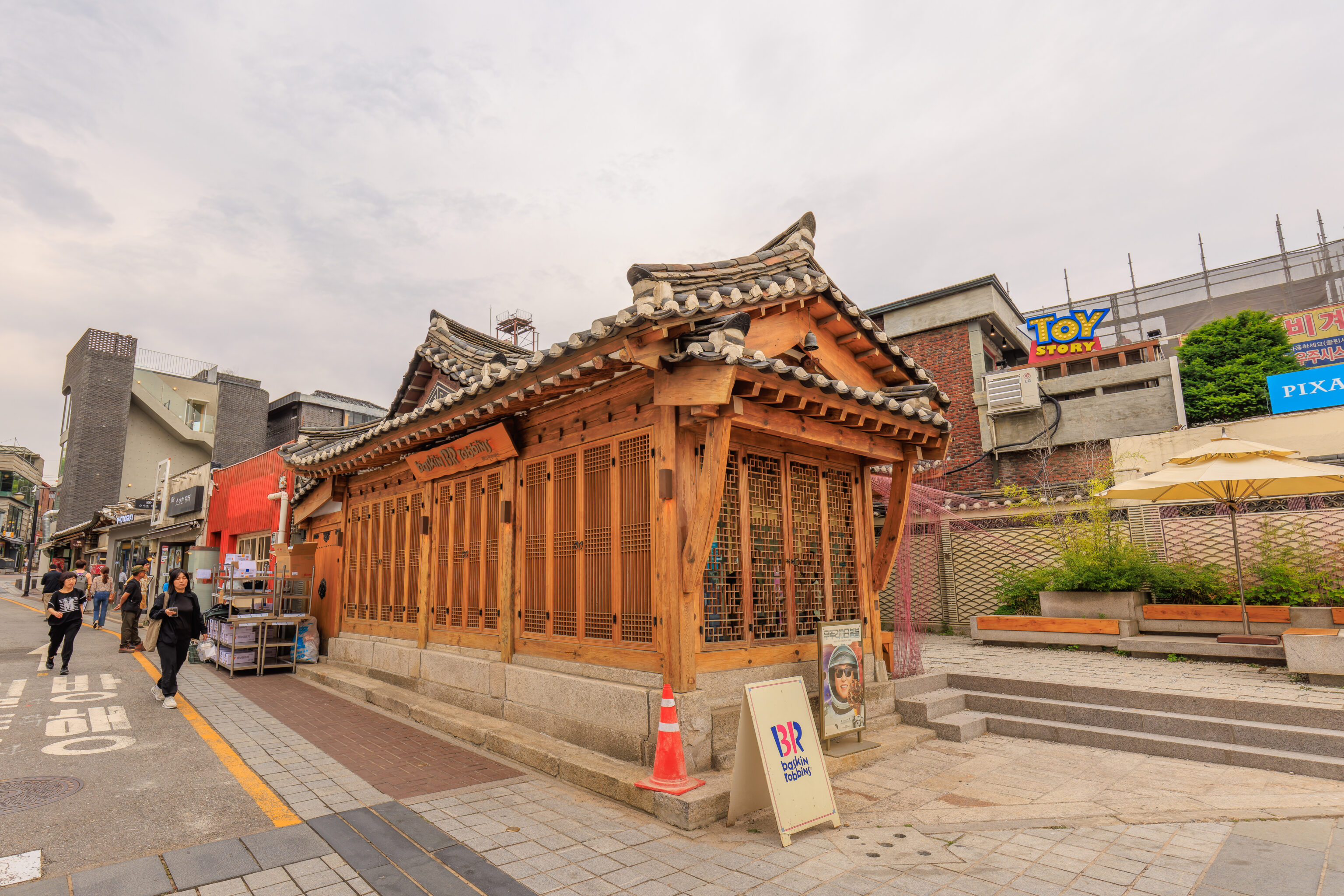
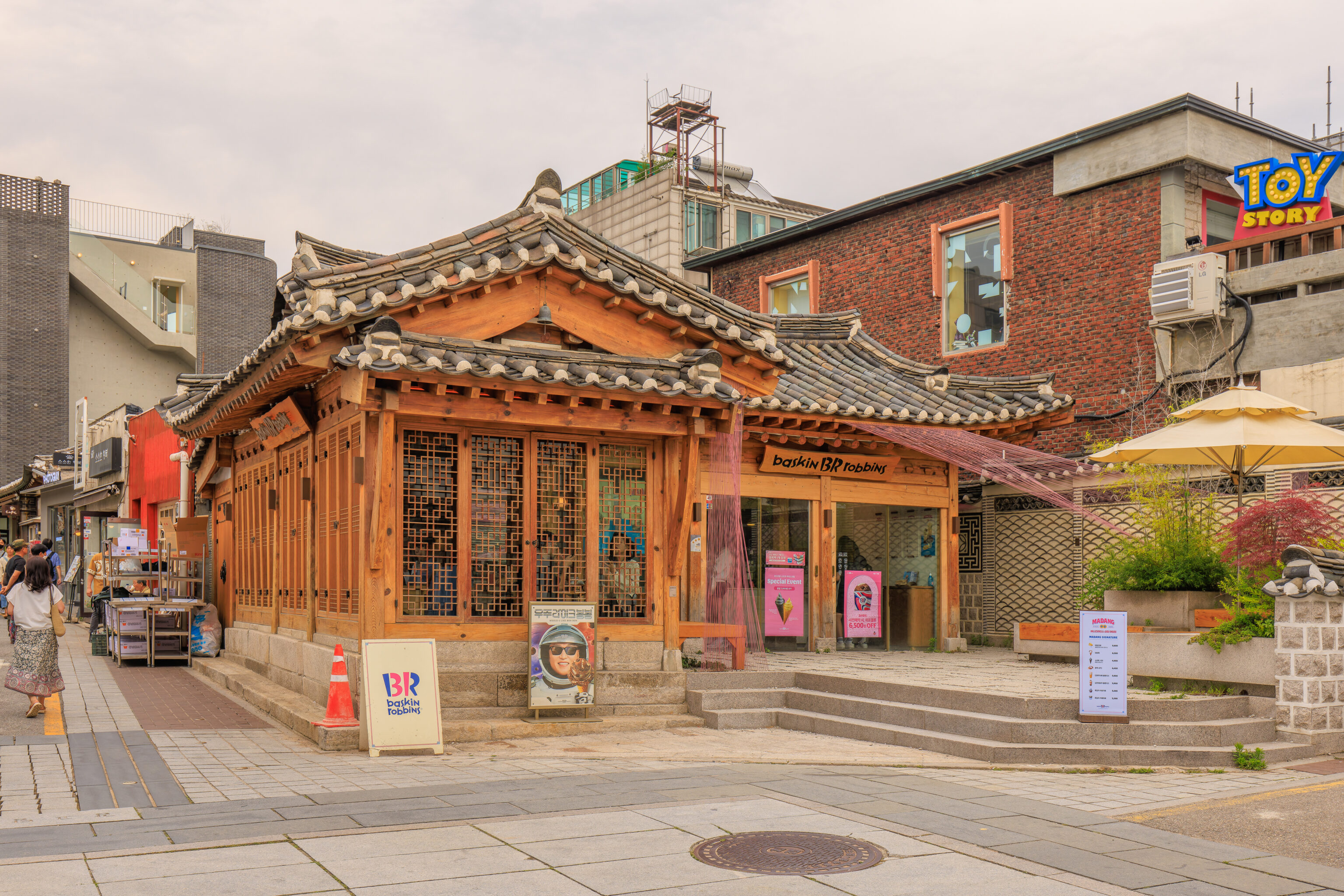
As we continued walking to the south, we noticed this 배스킨라빈스 Baskin Robins. Starbucks is well known for having locations in historic areas, particularly the location at Ninenzaka, Kyoto. But they’re apparently not the only American chain with stores that try to blend in!
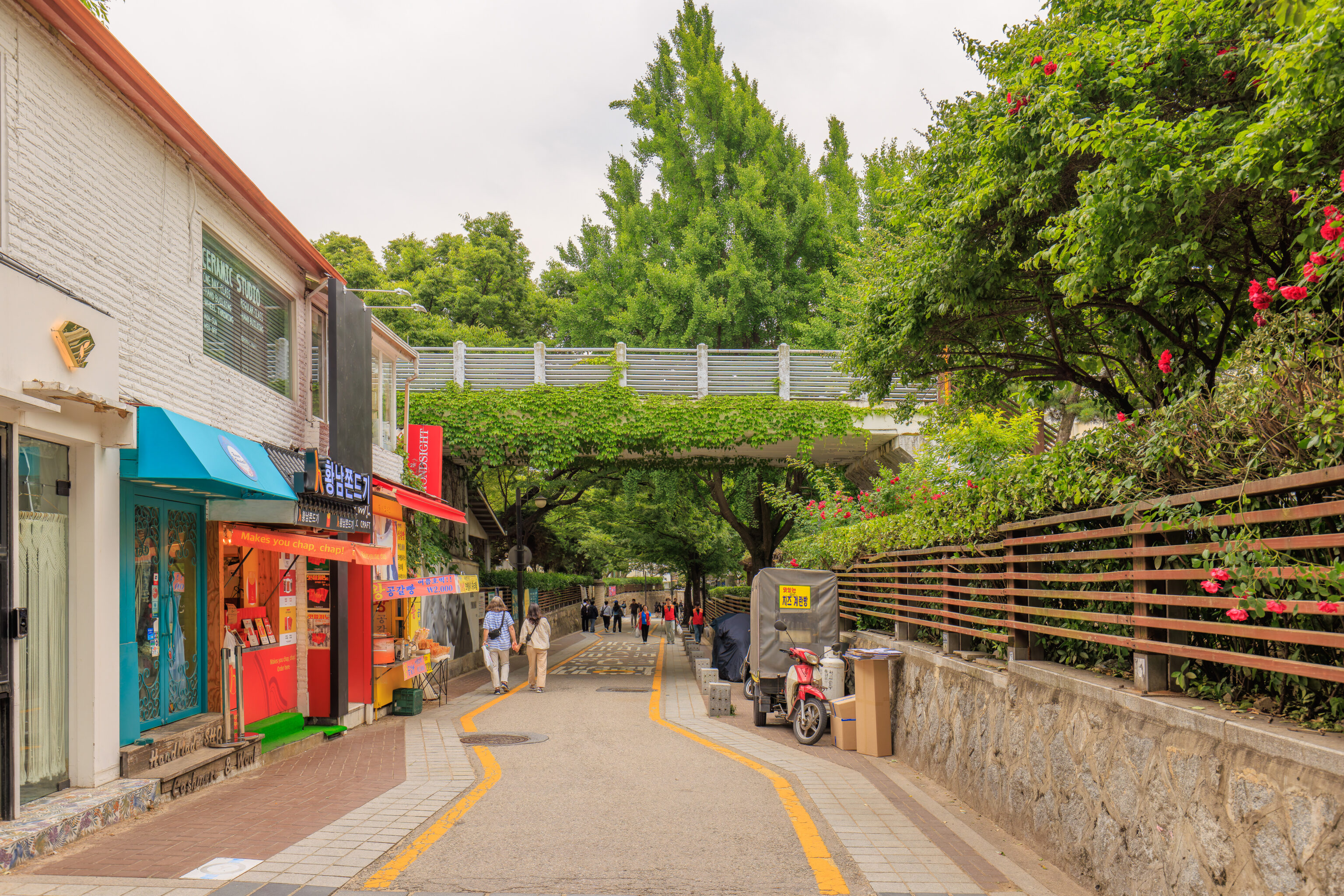
We noticed a bit of greenery as we continued walking to the south.
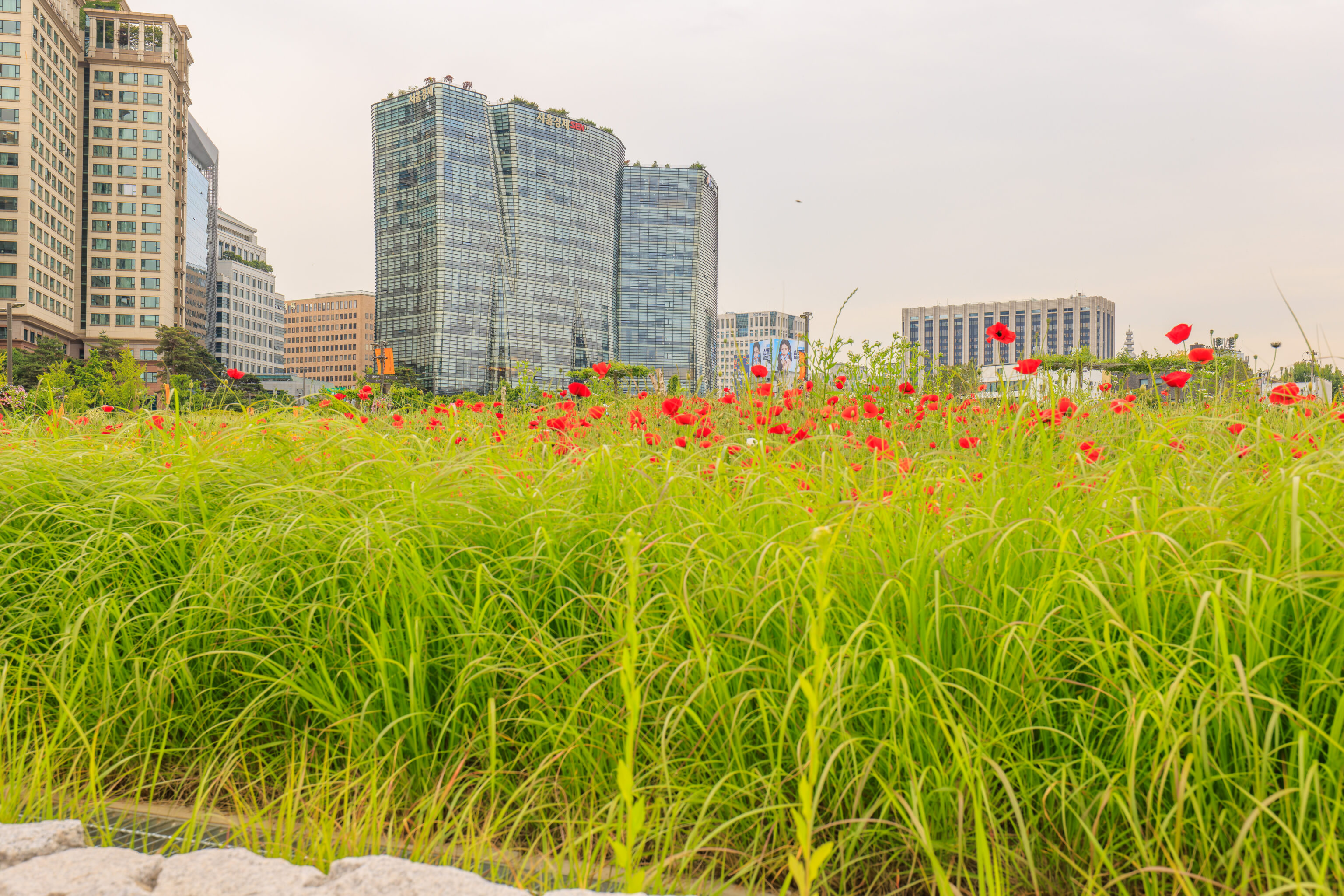
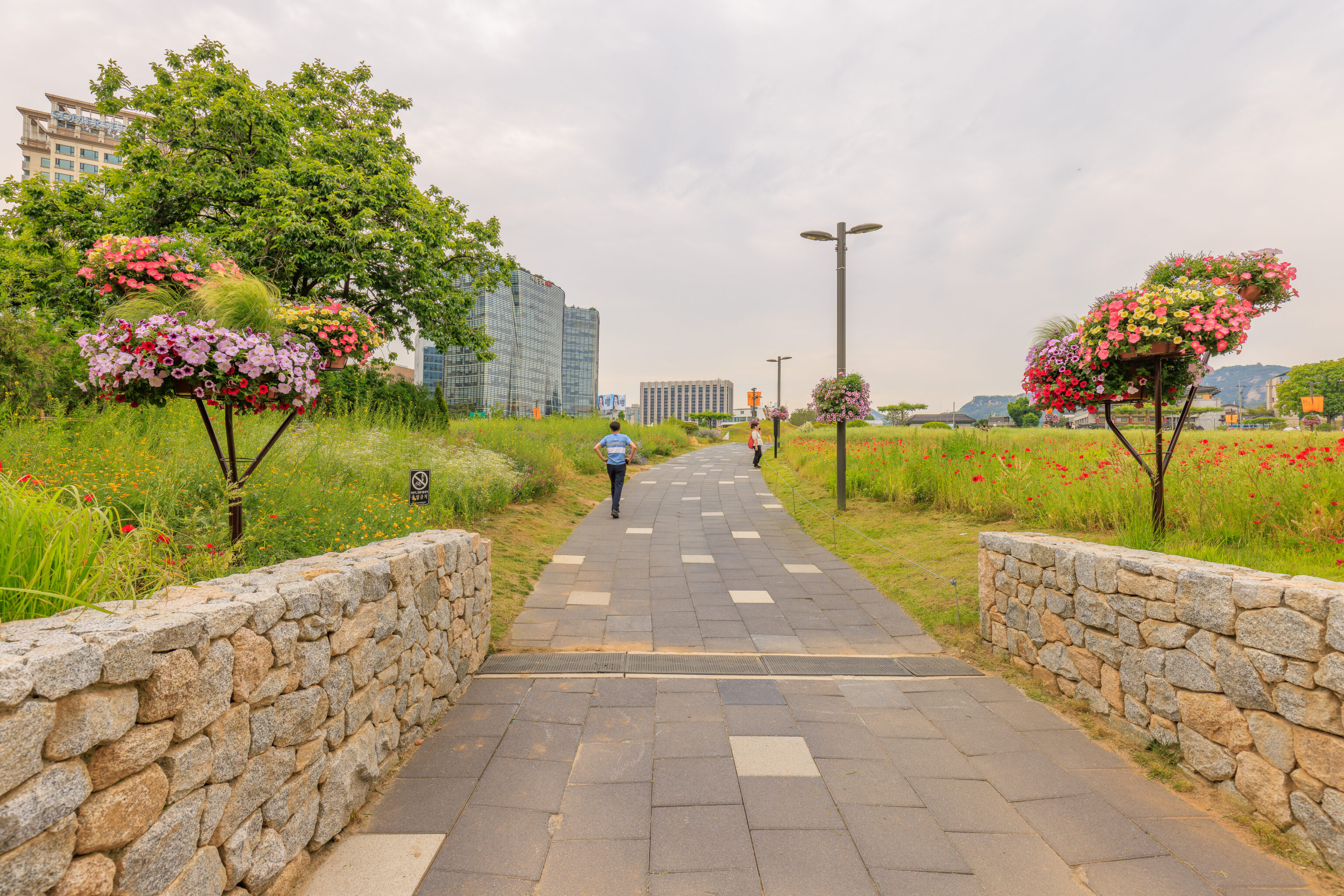
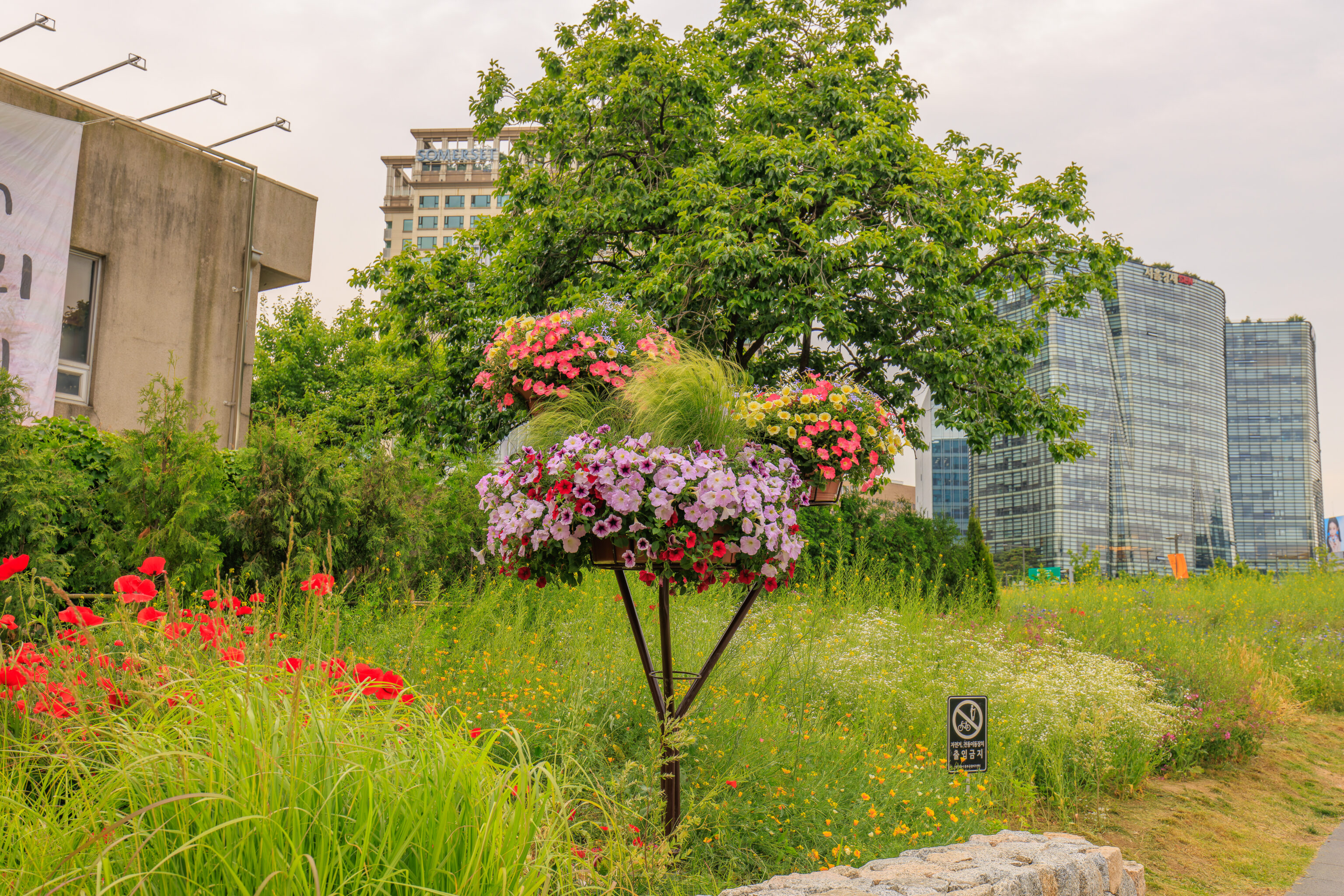
We passed by the eastern edge of the 열린송현 녹지광장 Open Songhyeon Green Plaza. This park just opened at the end of 2022 after being redeveloped. There seems to be some doubt as to if this area will remain a park or will be again redeveloped for some other purpose.
Hongdae
After reaching the southeast corner of the park, we turned and walked to the east to reach Anguk Station. We then took the metro back to 홍대 Hongdae.
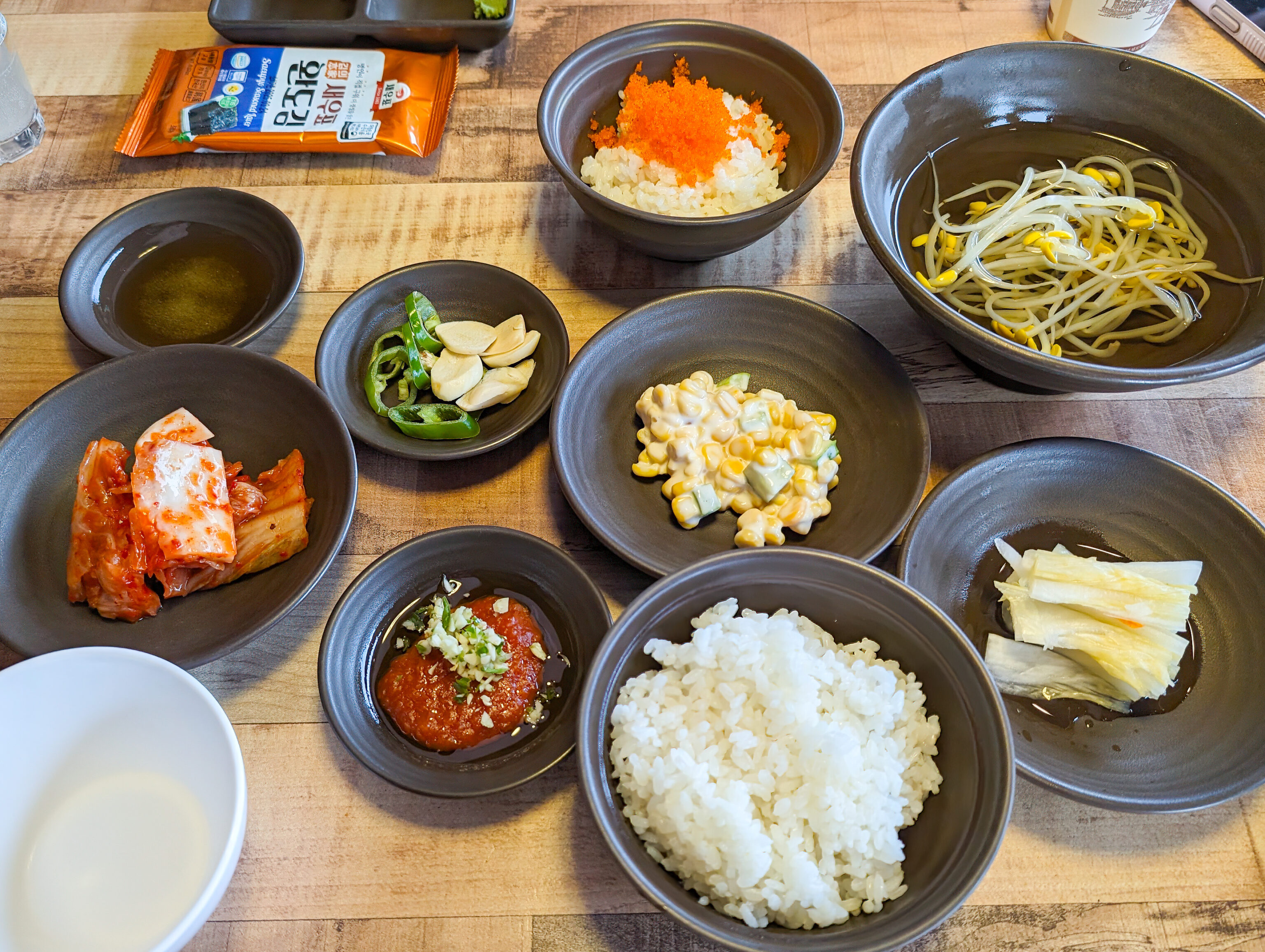
We decided to try our first Korean seafood restaurant, 바다나라1박2일포차 Sea Country 1 Night 2 Days Pocha. The meal started out with a variety of banchan.
The fresh octopus arms were still wiggling as it was served, with the suction cups strongly attaching themselves to any surface that they contact! Definitely an interesting experience as we’ve never had octopus so fresh before.
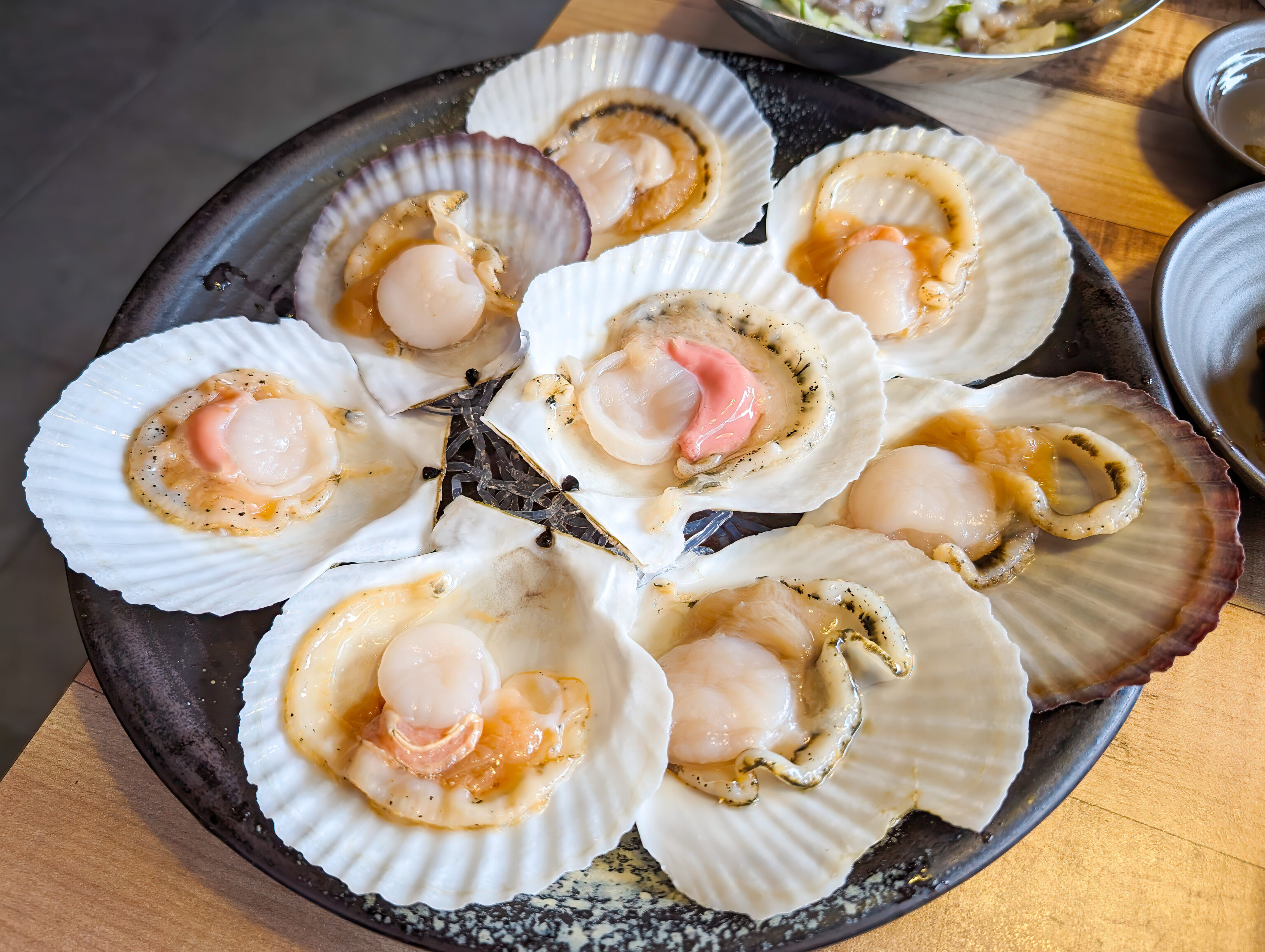
We also had scallops, which were very good with excellent flavor.
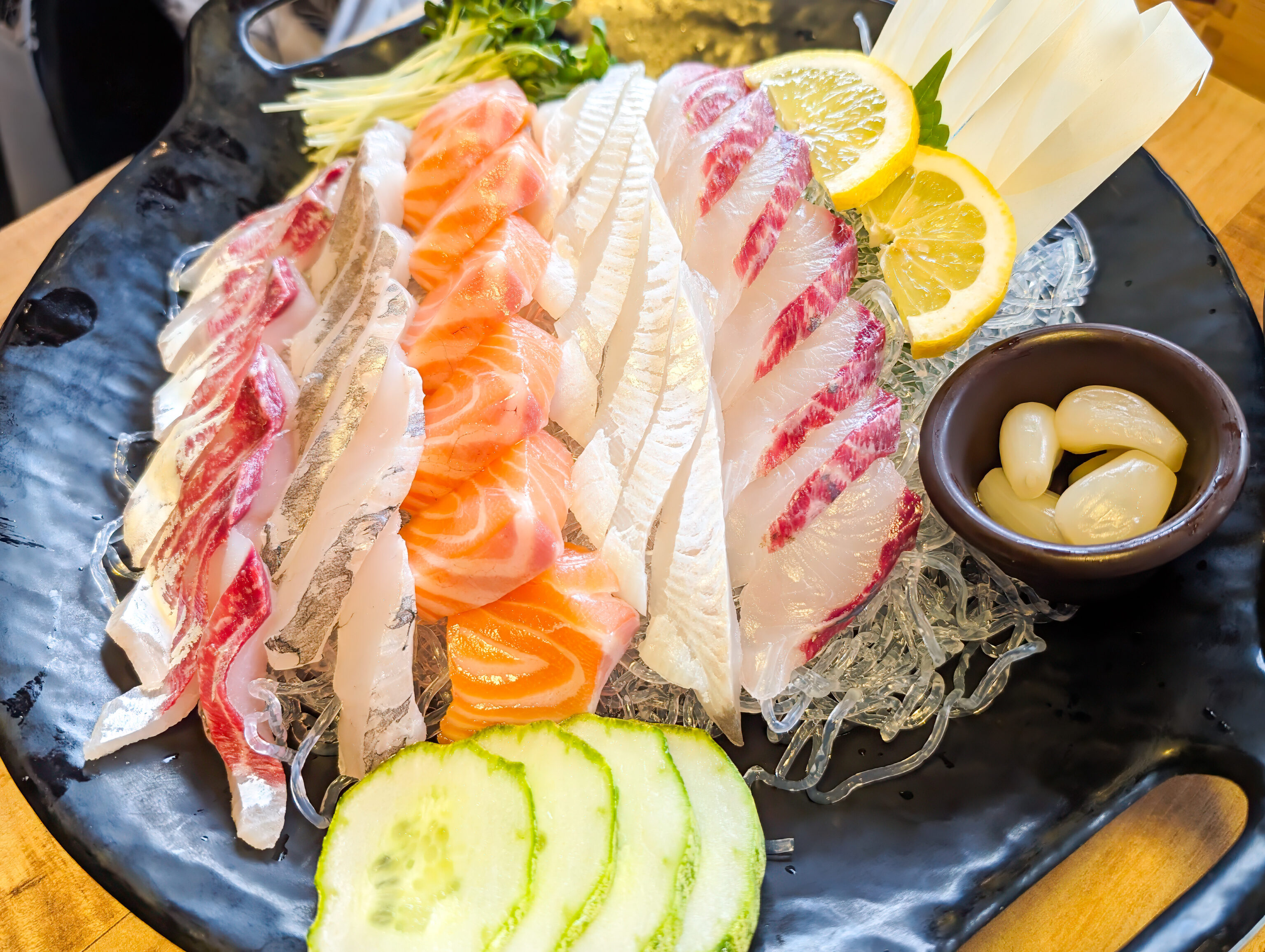
We also ordered a plate of assorted fish, which would be called sashimi in a Japanese restaurant. The salmon sashimi in particular was excellent. The other fishes were of a chewy texture and light on flavor.
After our seafood dinner, we went back out and walked around. We decided to have second dinner at 목로관 Mokroqwan, a Korean BBQ restaurant!
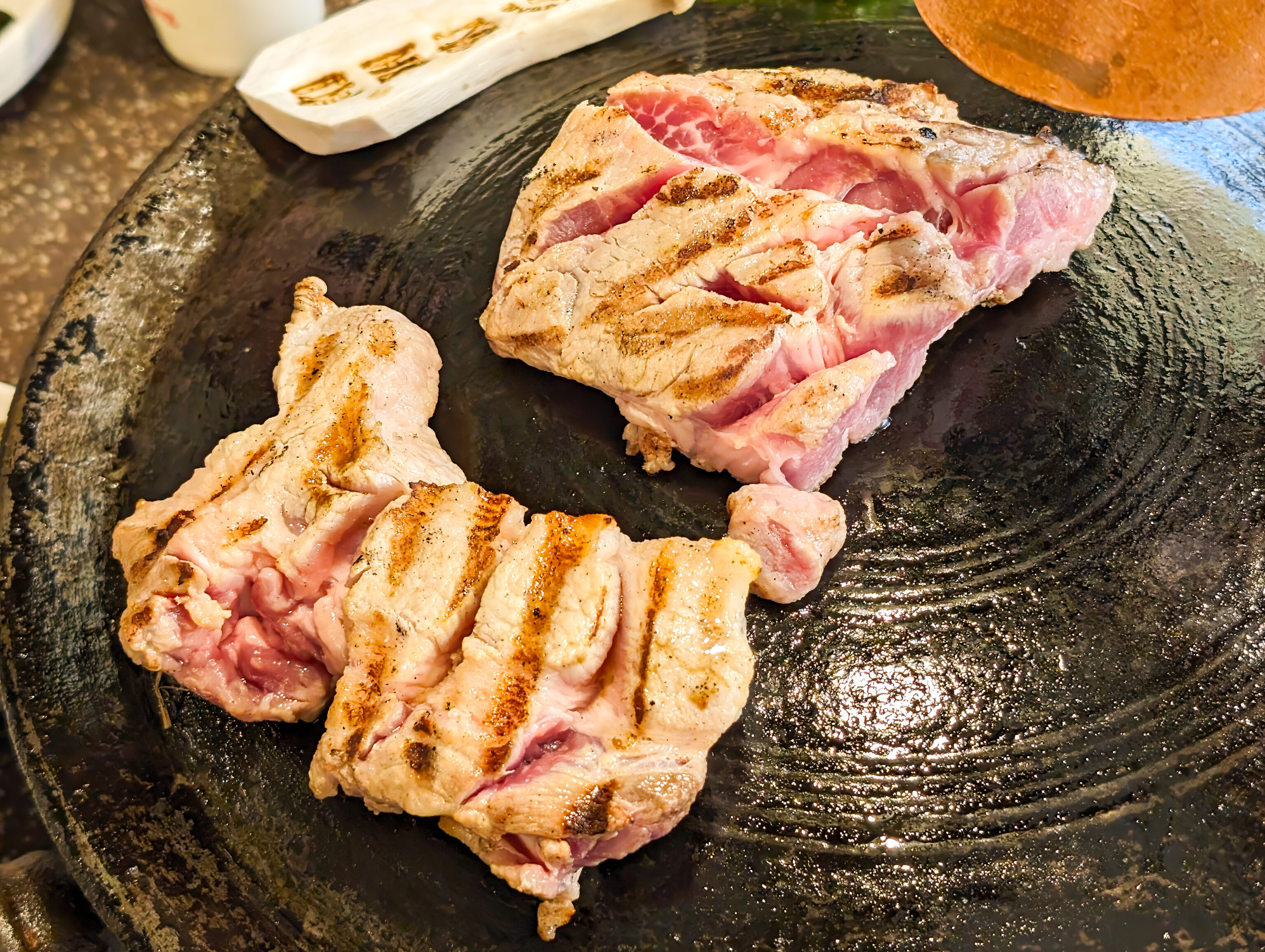
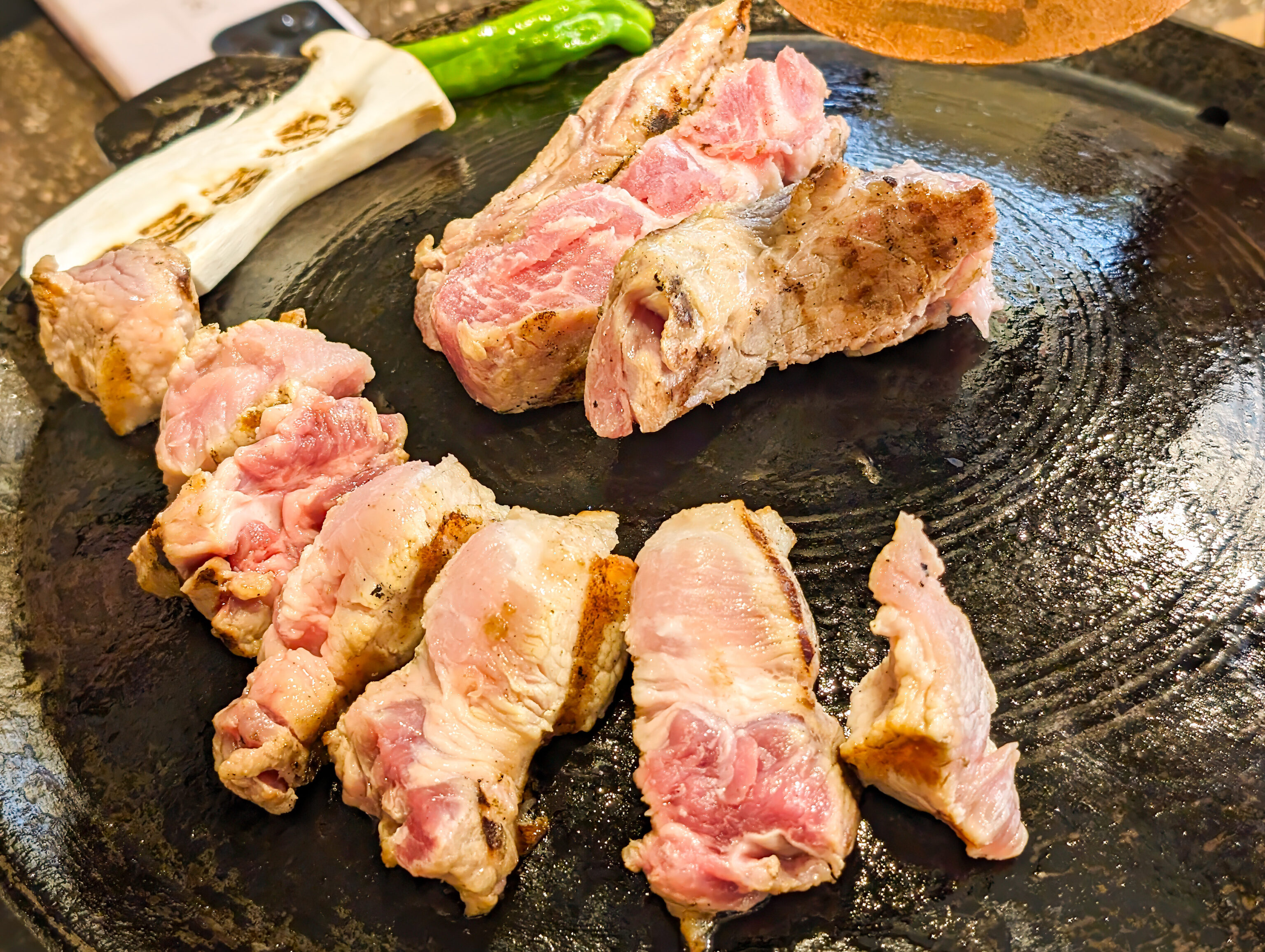
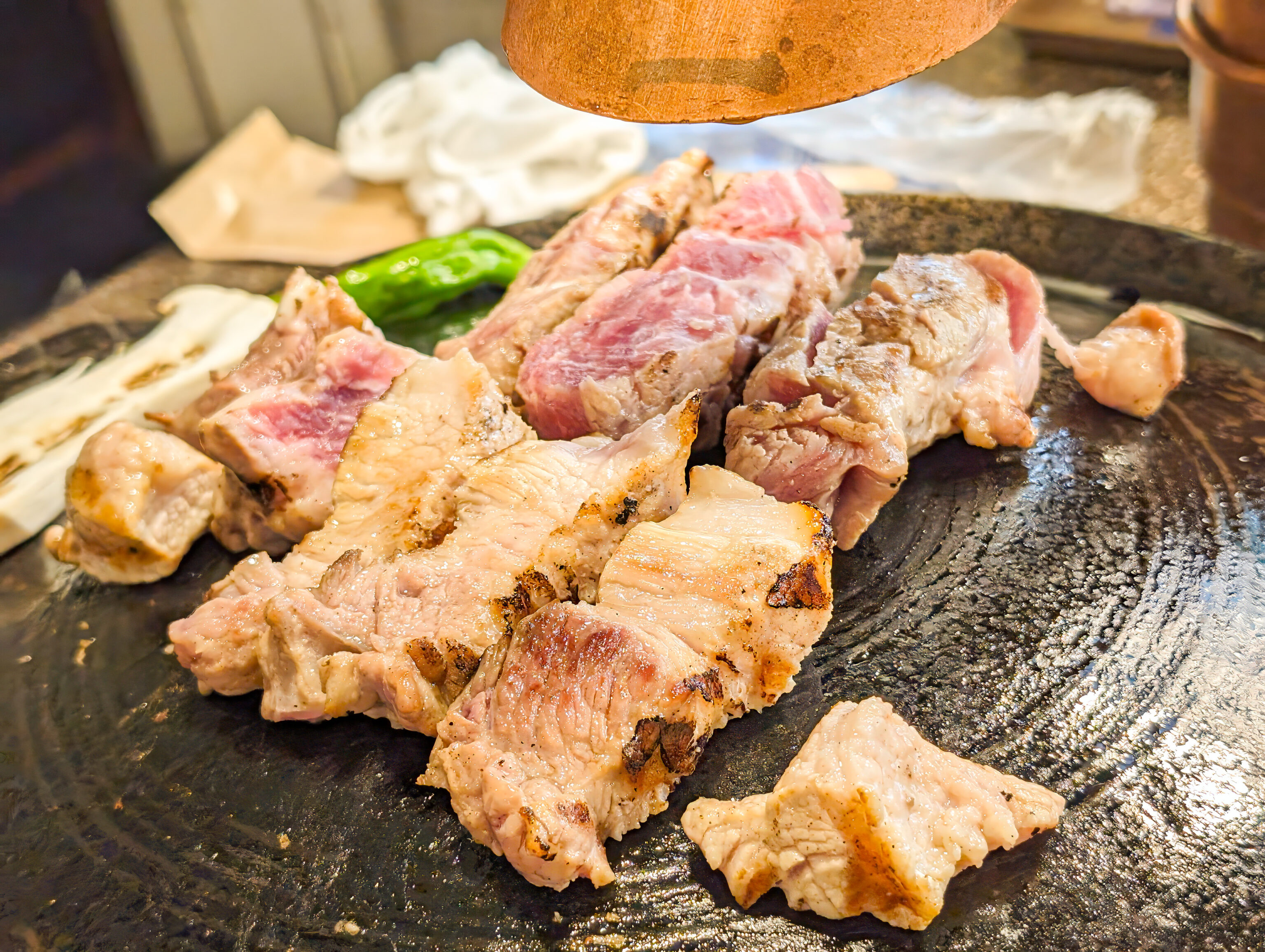
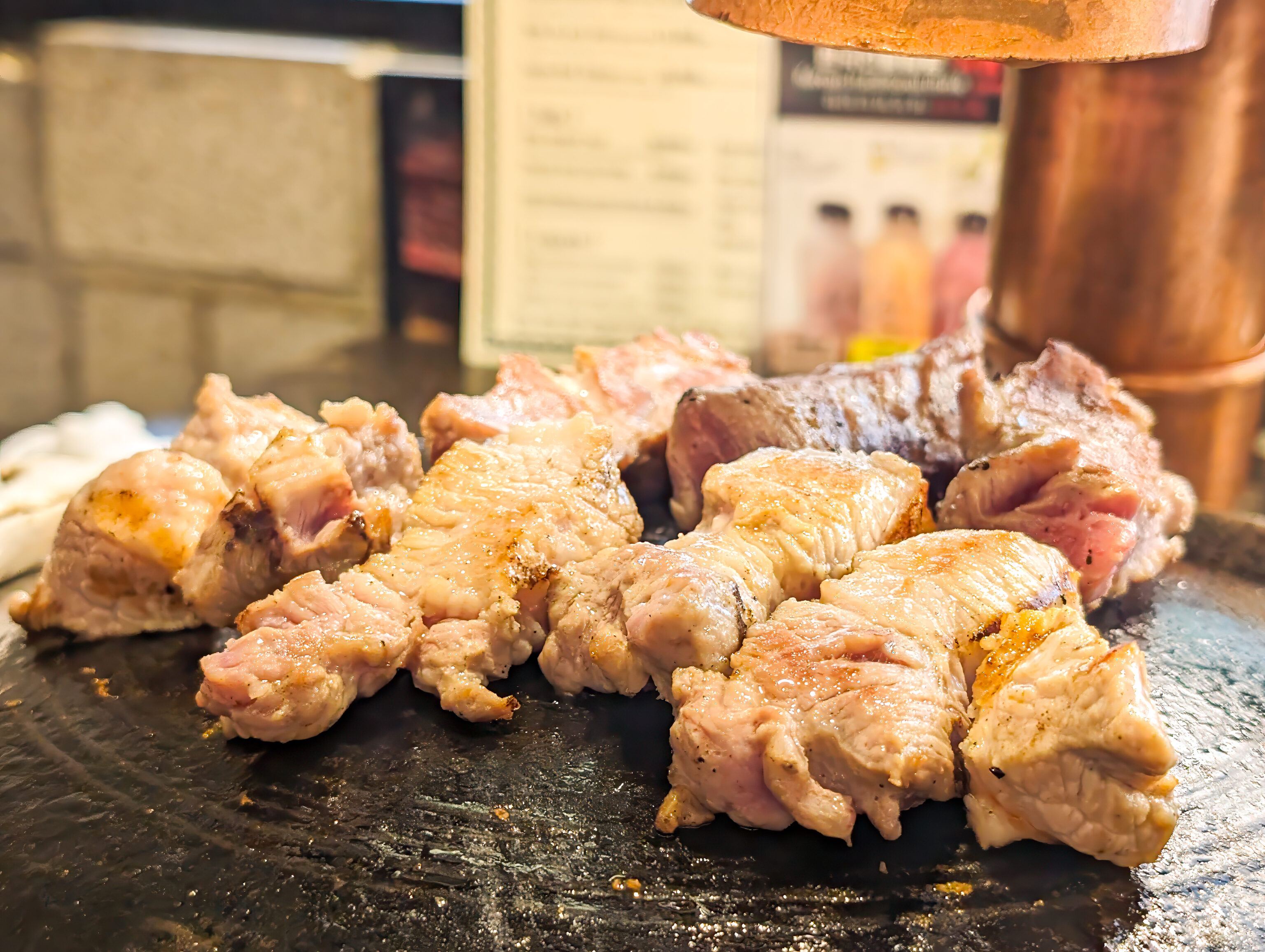
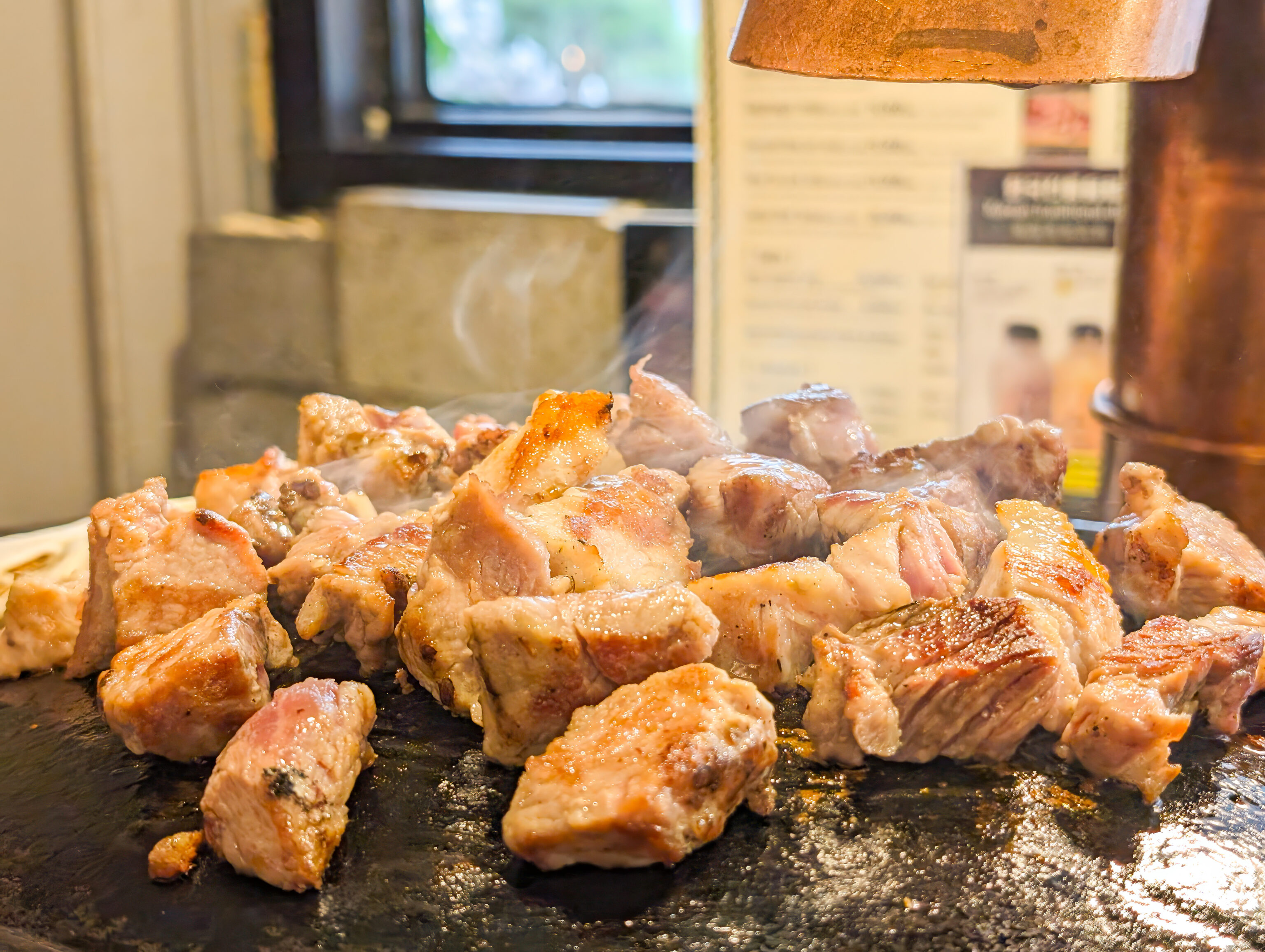
This restaurant pre-sears the meat over a fire with straw, which is supposed to give flavor to the meat. We got pork belly and pork neck, though we seem to have ended up with two orders of pork neck instead. It was good, though we aren’t entirely sure how much of a difference cooking with straw really makes. It would have been nice to get the pork belly that we had ordered but we didn’t realize the error until it was too late.
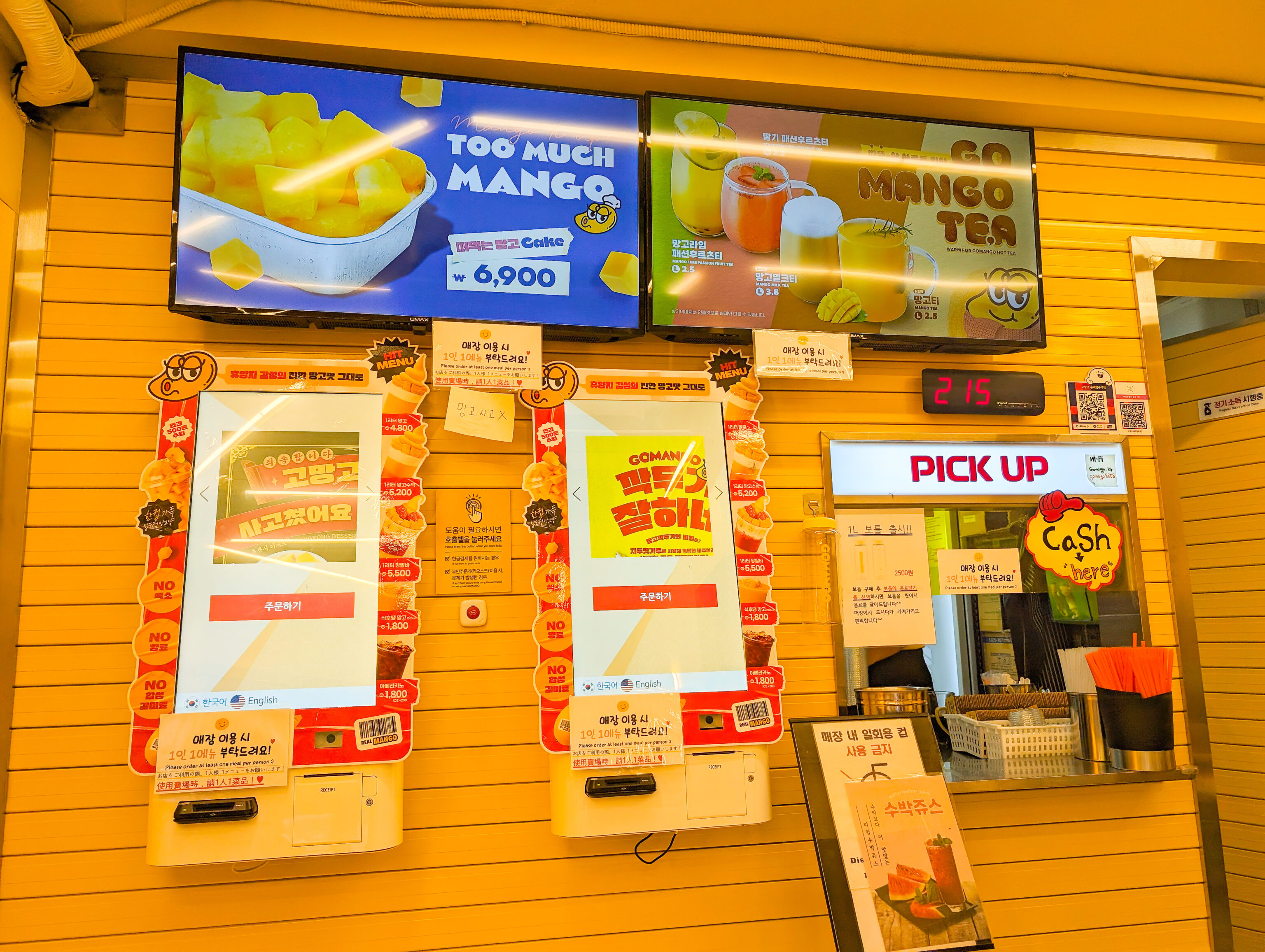
While walking to the northeast on the main shopping street, Eoulmadang-ro, known as the Red Road, we spotted 고망고 GOMANGO, a small Mango dessert shop. We decided to give it a try.
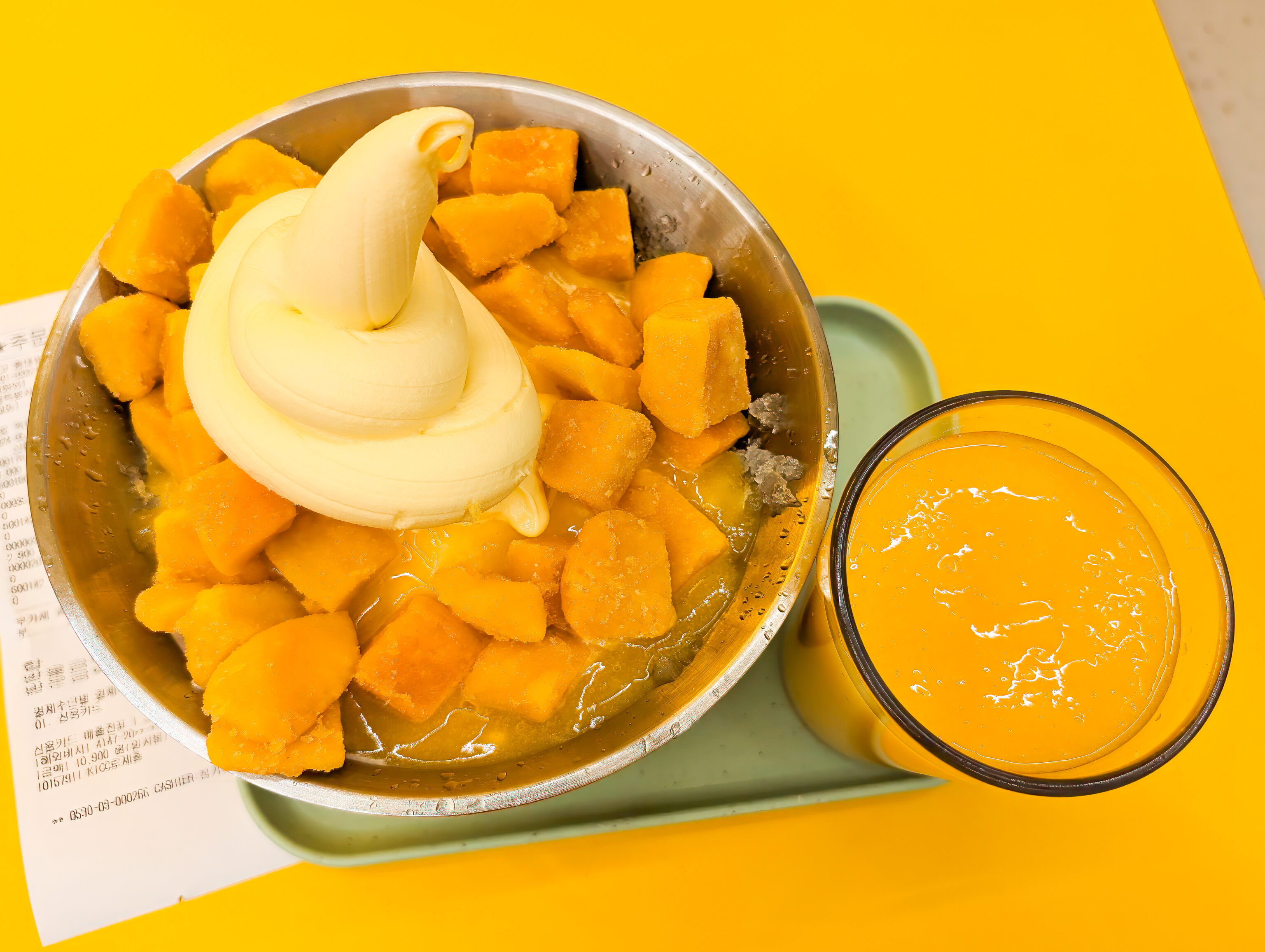
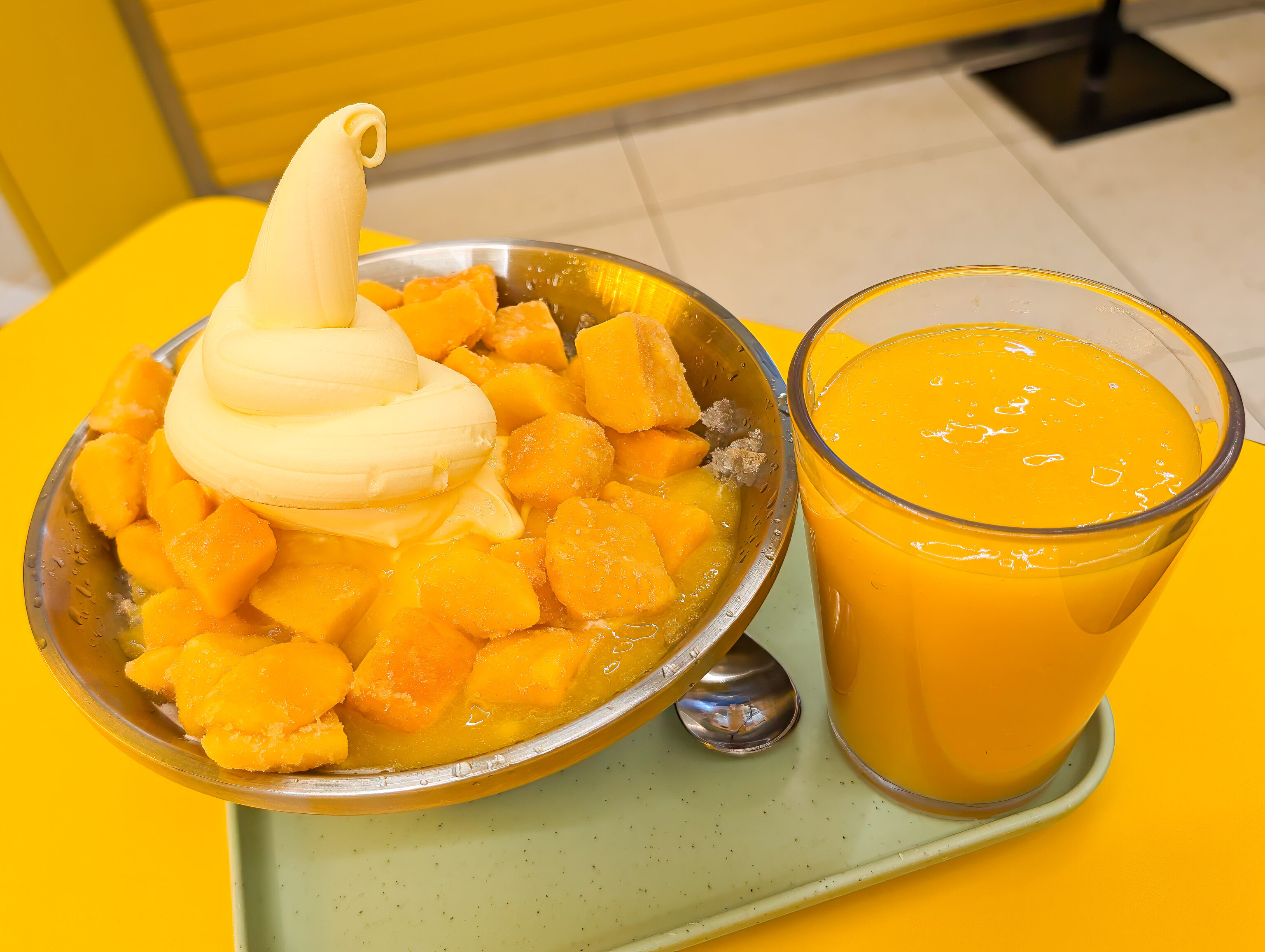
We got what is basically a mango bingsoo and a mango juice. Unfortunately, the bingsoo wasn’t nearly as good as Sulbing, though it was about half the price. The mango juice was decent though.
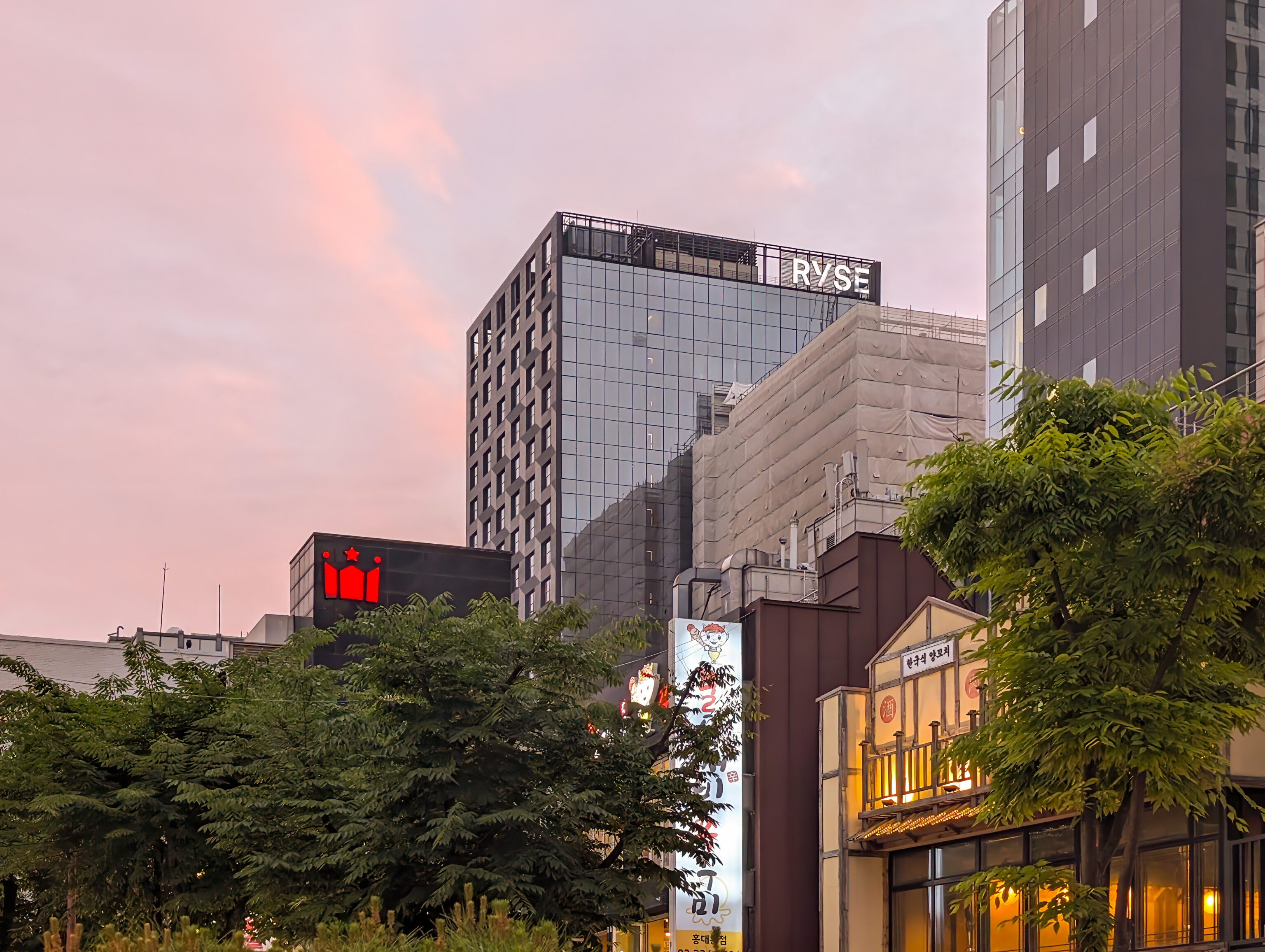
After walking around for a bit, we returned to the RYSE around sunset to end the day.


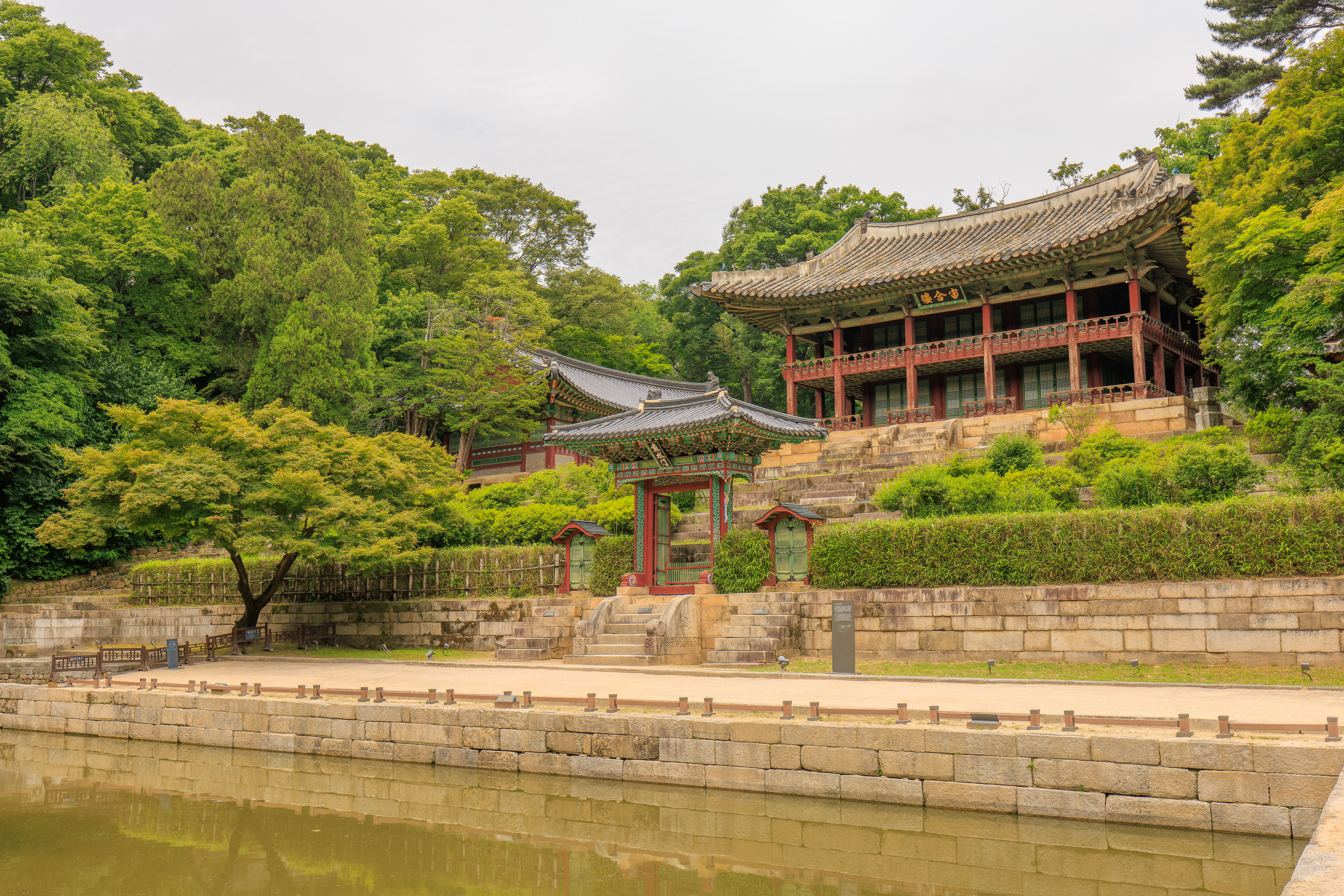
One Reply to “Changdeokgung and Its Secret Garden”